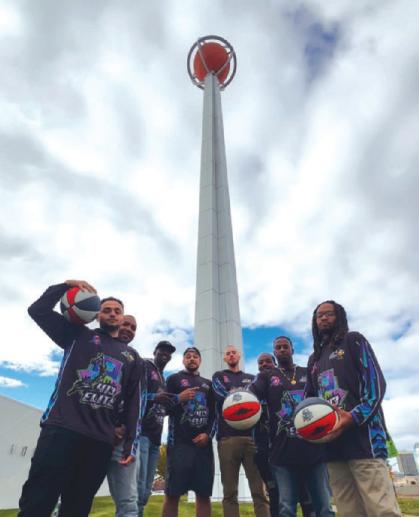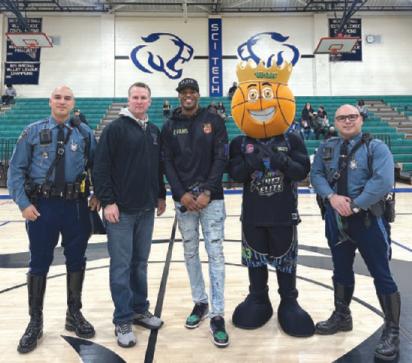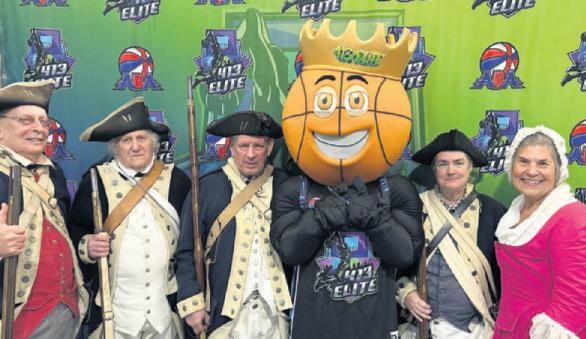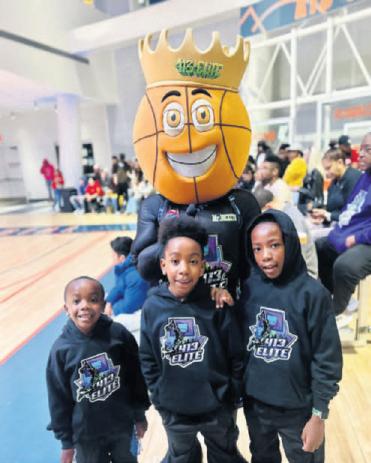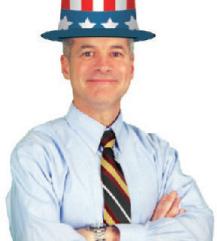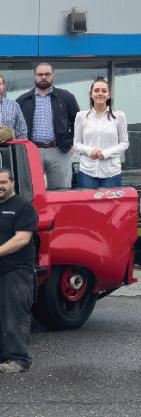






Little binds us more to others than the act of clocking in to work in pursuit of common goals.

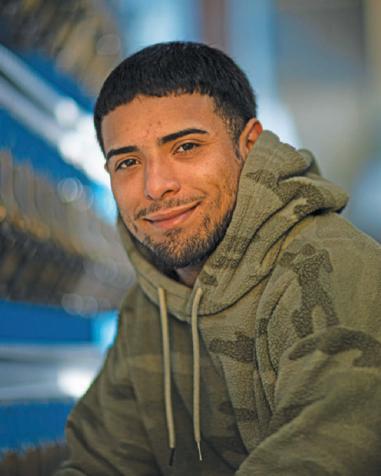

For that reason, this year’s Outlook takes a close look at work life in the Pioneer Valley.
Ancient Greek thinkers knew how central labor is to being human. “Without labor, nothing prospers,” the playwright Sophocles observed. The quality and meaning of that work depends on the right and often elusive fit. “Pleasure in the job puts perfection in the work,” the philosopher Aristotle is believed to have said.




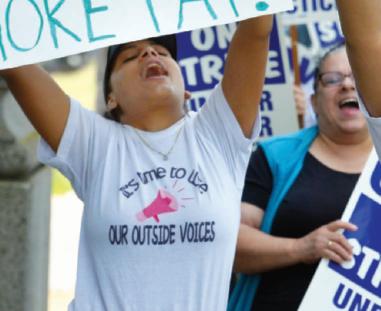

There is a lot to report: The rise of artificial intelligence. Challenges to diversity, equity and inclusion programs. A call for workers to return to offices. Teachers combating burnout, while employers struggle to fill jobs. Risks that workers face simply by showing up.
On the lighter side, we take readers into pet-friendly workplaces and introduce them to people with unusual jobs, from drag performance to oldschool auto repair.
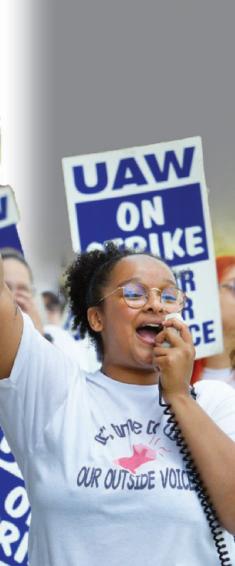
The stories in today’s four Outlook
sections dive into the complexities of today’s work world. We examine a kaleidoscope of workforce trends, culture, politics and history.
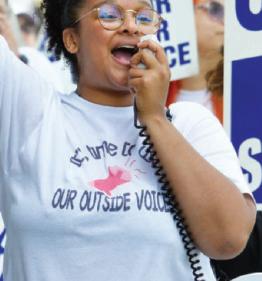


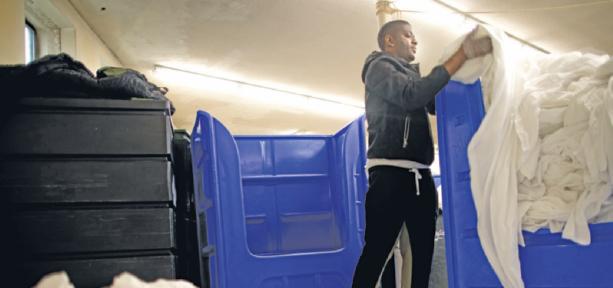
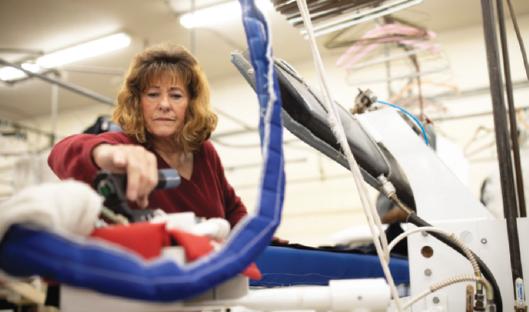


In columns, we hear from leaders and doers who push to keep their enterprises and communities at the forefront of innovation and resilience — against considerable headwinds.



We hope you find Outlook 2025 relentlessly interesting and thoroughly original.



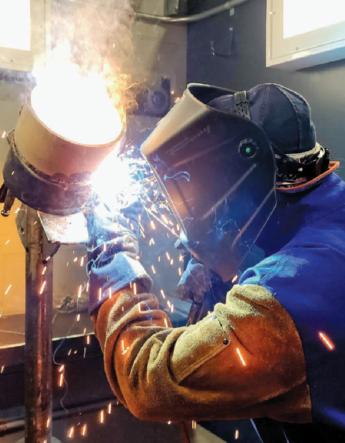



– Larry Parnass executive editor





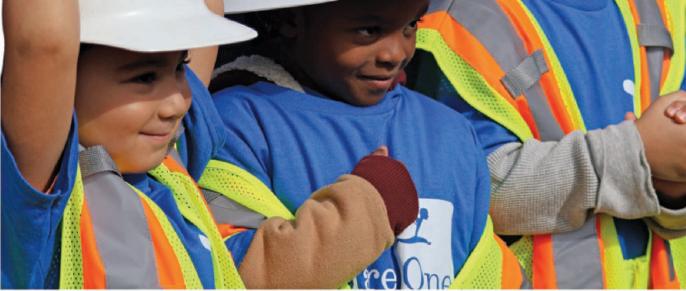

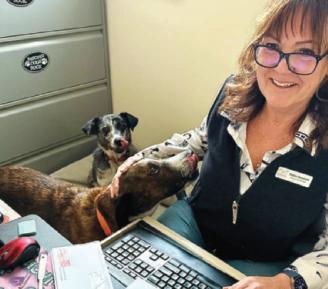

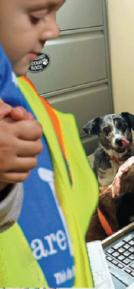
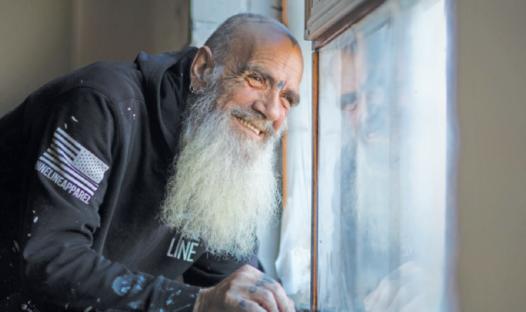

Here is a guide to some of the stories you will find inside Outlook 2025.
• THE IN-PERSON PULL: How are area companies managing the “return to office” trend? Also, Springfield Mayor Domenic J. Sarno makes his case for people to return to their traditional workplaces. J2
• A NEW TAKE ON DRUG TESTS: A lot of companies have stopped the once-ubiquitous process of requiring drug testing as a condition of employment. Instead, there is a shift to focusing on wellness, education and mental health care. J4
• DEI IN RETREAT: One big local employer, the University of Massachusetts Amherst, has already taken steps in response to Presi dent Trump’s assault on diversity, equity and inclusion programs. And the Rev. Willie Naylor of Springfield considers how a pullback on DEI will affect equality in his city. J6


who performs at the Marigold Theater in Easthampton. K2.
• WOOING THE DIFFERENCE-MAKERS: We survey some of the steps people in the Valley are taking to land major economic players and job creators. K2

• CARING FOR THE CAREGIVERS: The Legislature has been working to make child care and early childhood education jobs better paid and more attractive for workers. Lawmakers also want to improve access to this important part of work life. We provide a status report. J8
• COUNTERING TEACHER FLIGHT: Many schools are struggling to retain their teachers. We look at efforts in the region’s major cities to address burnout and turnover. J8
• FAIR PLAY WITH PAY: The state Attorney General’s Office runs a Fair Labor Hotline. The phones have been ringing, prompting investigations that in many cases return unpaid wages to workers. J9
• MISSING PEOPLE POWER: U.S. Chamber of Commerce data shows that there were 42 available workers for every 100 jobs in Massachusetts as of December. A look at the occupations most in need of workers in the region. J10
For a special feature in Outlook 2025, we asked photographer Michael J. Fiedler to visit companies in the area and capture scenes of people at work. His images take readers inside and up close, with short commentaries by the people he shows doing their jobs — at a funeral home, inside MGM Springfield’s production kitchen, at a metal fabrication shop, inside a dry cleaner’s operation and other places. The portraits Fiedler created appear on Pages A1, J8, K1, L1, L8, L12, L13, M1, M7 and M11. For information on Fiedler’s ongoing project to document work life, visit working-journal.com.
• THEY’VE BEEN WORKING ON THE RAILROAD: Amid talk of restoring west-east passenger rail service in Massachusetts, jobs in this field aren’t just theoretical. Hundreds are already working on the railroad. J14
ITS MOMENT: The area’s manufacturing sector seeks to broaden its appeal to young workers in the face of a labor shortage. Employers want this fact known, too: Pay for experienced hands can climb to $34 to $60 an hour. K1
• MANUFACTURING SEARCHES FOR
It’s time to get back to the office, Springfield
COVID-19 CHANGED the nature of work for many office workers in Massachusetts. The immediate and profound repositioning to remote work, due to public safety concerns for employees, their families and the broader community because of the spread of the infection was certainly the right decision, at the time. However, for the city, fully remote work was never an option. So many of our employees are frontline workers. Daily trash needs to be picked up, public safety needs to be maintained, building inspections need to be completed and fires need to be put out. Throughout the pandemic, my cabinet heads, department heads and direct staff were working full-time in office, addressing the needs of the city.
I reopened the doors of City Hall to the public as soon as possible, consistent with the
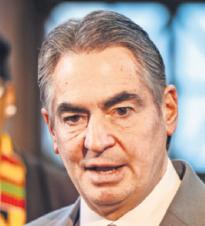

the city’s other employers both public and private, to bring their workers back to the office full-time.
The public safety impacts that precipitated the need for remote work had long passed.
The continuation of remote-work has inflicted even more economic pain on cities and states that were already dealing with the losses associated with the actual pandemic.
In Massachusetts, remote
As mayor of Springfield, I continue to encourage more in-office work, because of the negative economic impacts remote work has on Springfield and Massachusetts from a business, labor and economic perspective.
public health guidance coming from then-Gov. Charlie Baker and in consultation with Public Health Commissioner Helen Caulton-Harris.
I did so, because I believe that the city must be forward-facing in its service to its residents. Similarly, good customer service is a basic business principle. It is true that many of the transactions that once required a visit to City Hall can now be done online. But when a member of the public has a question, problem or emergency, they deserve to engage with a real person, not a chatbot or phone messaging system.
In June 2021, I ordered all city remote-working employees back to working five days a week in the office. My intention was to restore all city public services lost to the pandemic as soon as possible, increase the engagement and activity of our employees with the many small businesses located near municipal buildings across the city who had economically suffered due to remote work and to encourage
work is in part responsible for 91,000 residents leaving the state. Even in a capital city like Boston, full recovery remains a long way away, largely due to telecommuting.
Remote work negatively impacts local commercial tax valuations and increases the commercial office vacancy rate.
According to the Pew Research Center, roughly 22 million workers who used to live in cities across America are no longer there — at all. The absence of these workers brought seismic implications for the impacted cities and states monetarily, developmentally and socially.
Locally, my economic development staff members review reports and trending information indicating that the city’s Class A office buildings have steadily increased employee presence. Although flexibility in where people work is still evident, it is gradually moderating.
As employers tighten their in-office requirements, many of the fully remote options that
SHAKING UP ONE HOUSING OPTION:
A new state law allows “accessory dwelling units” to be constructed by right, rather than need special local permissions. Will that help with the housing crunch? K4
THIEVES IN THE SUPERMARKET: Learn how one major grocery chain confronts the challenge of theft. K6
CANNABIS GROWING PAINS: As the cannabis industry tightens up in Massachusetts, what are the prospects for workers in both manufacturing and retail? K8
TEACHERS ON THE MARCH: For 18 days in 1980, most Springfield teachers stayed away from their classrooms and mounted a fierce labor protest. We dug through our photo archives and clips to provide a twopage look back at the historic strike. K10-11
EVERYDAY RISKS ON THE JOB: Worker advocates bemoan the seeming acceptance of workplace injuries. L1
• FIDO PUNCHES IN: What are the pros and cons of allowing employees to bring a pet to work? L1
• SHARING THE MANTLE: What's it like to co-lead an organization? Two people doing that now share their tips. L2
• JUST BE A ‘MENSCH’: Meet Northampton native Todd Zive, author of “The Mensch Method.” The book offers thoughts on achieving success through character in life and business. L3
• ONE MAN’S SIDE HUSTLE: How Scott Greene of Reminder Publishing found his side hustle with sports trading card swap meets. L4
• FEELING A TATTOO SLOWDOWN: After a pandemic boom in customer interest, tattoo artists have found that people don’t have as much discretionary income these days for body art. K1
• THIS JOB IS A PASSION PROJECT: Meet Magnolia Masquerade, the drag queen

‘I don’t want to be here’
Workers love remote life, but employers insist on return to office
By Jim K inney jkinney@repub.com
Adam Deshefy says his dog is the best co-worker he’s ever had.
The observation gets laughs around a lunch table in the Tower Square food court from Deshefy’s human co-workers on a cybersecurity team at Farm Credit Financial Partners Inc.
Far from being insulted, they commiserate.
Asked by their bosses to return to the office downtown in Springfield’s Tower Square at least three days — Tuesday, Wednesday and Thursday — each week, they kvetch about the inconvenience and expense of returning after getting a pandemic-era taste of telecommuting.
Enough workers have returned to Tower Square that new restaurants are opening in the food court. Jen’s Organics opened late in December and a pizzeria — for the first time since the pandemic — opened in January.
“Downtown Springfield has been picking up a lot,” said Michael Baez, who opened Tower Pizza in the food court recently.
He’d said he’s seen foot traffic pick up, and he’s built relationships with tenants not only there but also in Monarch Place, the TD Bank Building.
“I’m hoping people want to get out a little bit more,” he said.
But maybe not.
“I don’t want to be here,” Deshefy’s co-worker Meagan Hayes said. “I feel like I could be just as productive. We could just have one big quarterly meeting.”
Between getting ready and the commute to and from Brimfield, she said
• WHERE TIPS BECOME NEWS: Larry Parnass, the executive editor of The Republican, reflects on the kind of workplace he knows best: the newsroom. L12
SECTION M: Emerging technologies and workplace topics
• AI IN THE WORKFLOW: A look at how Pioneer Valley companies are moving to integrate artificial intelligence and automation into their everyday business. M1
• THE UBER LIFE DISSECTED: Up close and personal with an Uber “diamond driver.” He discusses his life as an app worker who has more than 23,490 rides logged. M1
• GRASPING JOBS OF THE FUTURE, NOW: There is lots of talk among lawmakers and economic development experts about food science, quantum computing and cybersecurity. What’s actually happening? M2
• UNIFORMS ONE DAY, CIVVIES THE NEXT: The unique role played by those who work both as civilians and as military members at Barnes Air National Guard Base in Westfield. M3
• TALK OF THE TRADES: Local construction unions are gearing up for an array of big jobs in the region. M4
• UNCERTAIN SPIGOT ON FOREIGN WORKERS: The Big E doesn’t fire up fully without the help of about 300 carnival workers – imported each year from South Africa through a visa program. Now, this industry’s ability to bring in more help is tangled up in the country’s fractious politics on immigration. M5
• OLD SCHOOL AUTO EXPERT: Meet JE Robison, the autistic mechanic of Springfield. M6
• THE SKINNY ON MANAGEMENT TRAINING: Daniel Jackson, The Republican’s news editor, spills the beans on his weeks in a management training program. M7
• CHILL INC.: When it comes to finding a work-life balance, these ventures step up to the plate with ways to relax. L6
• CREATIVE ZONE IN NORTHAMPTON: Inside Sphere in Northampton, a makerspace that bills itself as more than a creative hub. It aspires to support women and nonbinary entrepreneurs. L7
• COOL ON CRYPTO: For the most part, Pioneer Valley higher education institutions are taking a pass on schooling students in the field of cryptocurrency. M10
• A LEG UP AT TECH FOUNDRY: How Tech Foundry in Springfield helps people, including the unemployed, rise to new challenges in the IT field. M12
Deshefy talks about returning to the office to work while having lunch with co-workers at Tower Square in downtown Springfield on Nov. 17. (DON
/ THE REPUBLICAN)
returning to the office takes up about four hours a day.
Everyone around the table nods and talks about the annoyance of office interruptions. The small talk. Lunch ends, and they return to their office.
Later, a few managers — who did not want to give their names or workplace — settled in. They look forward to the end of remote work, saying they need to communicate and share ideas. And it needs to be face to face.
Many workplaces mandated return to in-person work in 2024, and the trend is expected to continue in 2025, much to the relief of landlords and businesses — like those food-


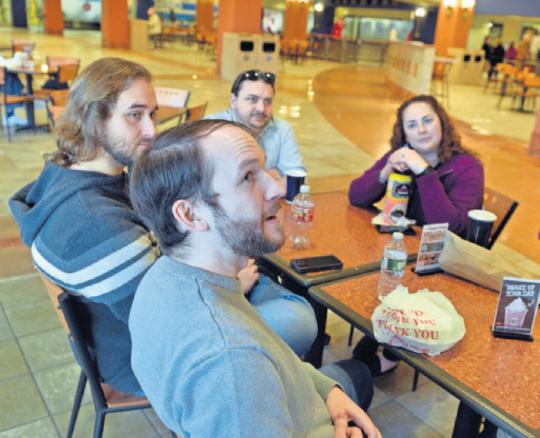
court operations — that depend on the lunchtime foot traffic of downtown office workers.
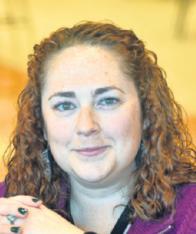

Employees at Amazon, AT&T and other corporations were all called back to the office. President Donald Trump says he’ll fire federal workers who don’t return to the office full time.
“I feel like I could be just as productive. We could just have one big quarterly meeting.”
MEAGAN HAYES
Nationally, nearly half of U.S. companies now operate under a hybrid model, requiring in-person attendance at least a few days a week, according to the Flex index, an online study of office policies. About a 32% of employers require full-time office work for their corporate employees and 25% offer full flexibility. Researchers at the University of Pittsburgh studied the return-to-office policies of 500 companies from the Standard and Poor’s stock index. What they found, according to the study updated in December, were significant declines in employees’ job satisfaction but no significant changes in financial

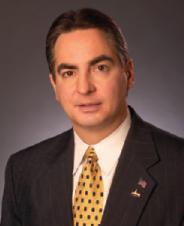

On May 15, 1851, MassMutual started here in Springfield with a single room and a single purpose – to help people secure their future and protect the ones they love. And for more than 170 years, MassMutual has put our customers at the heart of what we do by providing holistic financial solutions, guidance, and education on their terms. Our long-term strategy as a mutual company helps ensure that our policyowners and their loved ones can rely on us to be there when they need us most.
Over the years, we’ve helped millions of people work toward financial security and well-being. We’ve paid dividends to our participating policyowners consistently since the 1860s and have attained financial strength ratings among the highest in the industry.
Our financial professionals are spread throughout the United States, providing guidance and solutions to the financial goals of our customers at every stage of their lives. MassMutual and its affiliated companies offer a broad array of insurance and investment products for individuals, families, and businesses across the United States.
Our company has grown significantly since our humble beginnings, yet to this day and for years to come, we remain a company defined by our embrace of mutuality. By living mutual, we work to create a world where we rely on each other to build a stronger future together... for our customers, our associates, and our communities.
Dividends are determined annually, subject to change and not guaranteed. Ratings apply to Massachusetts Mutual Life Insurance Company and its subsidiaries, C.M. Life Insurance Company and MML Bay State Life Insurance Company. Ratings are subject to change. Insurance products issued by Massachusetts Mutual Life Insurance Company (MassMutual), Springfield, MA 01111, and its affiliated US insurance companies. Securities products and services offered through registered representatives of MML Investors Services, LLC, Member SIPC, Springfield, MA 01111-0001 or of a broker-dealer with a selling agreement with MML Distributors, LLC Member SIPC, Springfield, MA 01111-0001. Both MML Investors Services, LLC and MML Distributors, LLC are subsidiaries of MassMutual. MM202702-30822
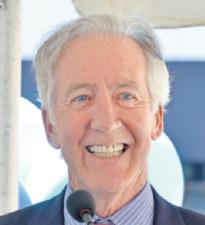

U.S. Rep.
Richard E. Neal
IN A SOCIETY where social media clicks seem to command the political landscape and conflict dominates the news cycle, I have long held the belief that legislation is what truly changes lives. As we enter the new year, we prepare to commemorate the 90th anniversary of one of our nation’s greatest legislative achievements — the Social Security Act.
In 1935, surrounded by members of Congress and his secretary of labor, Frances Perkins, the first woman to hold a Cabinet-level position, President Roosevelt signed the Social Security Act into law. As he did so, Mr. Roosevelt remarked, “If the Senate and the House of Representatives in this long and arduous session had done nothing more than pass this bill, the session would be regarded as historic for all time.”
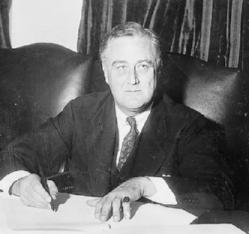
President Franklin Roosevelt. In 1935, surrounded by members of Congress and his secretary of labor, Frances Perkins, the first woman to hold a Cabinet-level position, President Roosevelt signed the Social Security Act into law. (COURTESY OF THE LIBRARY OF CONGRESS)
He was right. As someone who fully understands the significance of Social Security in all its manifestations, including survivor benefits, I can attest to the transformative impact of the safety net it provides; it is the foundation of retirement security and, for families like mine growing up, a lifeline for those in need.
That spirit of effecting meaningful change is what guided me and my Democratic colleagues as we ushered in achievement upon achievement in recent years — achievements that rival those of the Great Society. We passed the Bipartisan Infrastructure Law, marking a once-in-a-generation investment in our nation’s infrastructure. With more than $400 billion invested in America’s roads, bridges, airports, rail network, ports and waterways, EV network, clean water and high-speed internet, we are now witnessing the fruits of those investments; anyone who has driven down the Mass Pike and has seen the roadwork can attest to this.
We also passed the Inflation Reduction Act — the largest investment to combat the climate crisis in our nation’s history. Through the use of tax incentives, we are already seeing the development and deployment of clean energy production, energy efficiency, clean fuels, clean vehicles and clean manufacturing, with more than $500 billion in private investments.
Between the BIL and the IRA, the First District has received more than $400 million in federal funding. This does not include nearly $150 million in funding to support improved and
A lot of companies have stopped the once-ubiquitous process of requiring drug testing as a condition of employment, and many limit the use of testing even when they suspect an employee is drinking or using drugs. (CANVA IMAGE)


By Jeanette D eForge jdeforge@repub.com
Legalized cannabis, a kinder attitude toward substance abuse and a shortage of workers has all added up to change the demand for drug testing over the past few years.
A lot of companies have stopped the once-ubiquitous process of requiring drug testing as a condition of employment, and many limit the use of testing even when they suspect an employee is drinking or using drugs.
“There is a lot more focus on wellness, education and mental illness,” said Mark Adams, director of compliance for Employers Association of the NorthEast. “Companies are more focused on helping employees on their issues rather than enforcement.”
The Agawam-based company, which has about 1,000 members mainly in Massachusetts and Connecticut, provides businesses with a variety of management services, including human resources assistance, training services and consulting. Over the past few years, it has seen a shift in the way business leaders want to handle problems with substance abuse.
There are still plenty of businesses that require random drug testing because of state or federal law. Most are those under government contract, or are in the construction or transportation industry, he said.
A year ago, the head of Springfield’s Department of Public Works joined with a number of private construction companies and a towing business to say the regulations are making it difficult to recruit employees with commercial drivers’ licenses, which are needed for operating plows, as well as other heavy equipment, because drivers cannot pass a pre-employment or regular random test if they haven’t given up cannabis.
Since those are federal regulations and cannabis use remains illegal federally, these employees also must be tested for the presence of marijuana along with other drugs, such as opiates or cocaine.
Companies that continue to do drug testing but do not have to abide by federal regulations also have changed their standards because of legalization of cannabis in the state, Adams said.
“A lot of companies who do drug testing have removed marijuana from their drug panels,” he said.
One of the main reasons is the current testing technology for the presence of cannabis has little value. Because the drug remains in someone’s system for a month or longer, a test does not give an indication if the employee is under the influence, he said.
CONTINUES FROM PAGE J2
SEE NEAL, PAGE J13 cropped up early in the pandemic are dissipating. Employers are now determining what work models are best aligned with their business goals and objectives. As mayor of Springfield, I continue to encourage more in-office work, because of the negative economic impacts remote work has on Springfield and Massachusetts
DURING A RECENT cabinet meeting, I posed a question to my leadership team: “If we were launching a community college today, what would it look like?” This simple question has become our north star as we navigate profound changes in the nature of work and higher education.
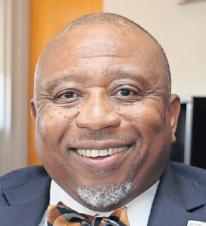
George Timmons
“Drug testing for marijuana doesn’t make sense, because you don’t know when they put it in their system,” he said.
Most companies that continue to do pre-employment and regular tests for drugs and alcohol are those such as manufacturers or construction companies where employees face hazards on the job. Testing is now uncommon for employees who work in an office setting or the service sector, he said.
But he said pre-employment testing often fails to catch problems, because that is the time when people are trying to make the best impression. It is far more practical for situations when people are suspected of being intoxicated on the job.
While employers are more focused on getting help for workers who might have an addiction problem, they still have to make sure they do not jeopardize their own safety or that of their co-workers, he said.
“It does not excuse people from working when they are high,” he said.
In general, Employers Association of the NorthEast recommends their businesses have policies and train managers well in the proper procedures on how to identify and communicate with employees that they suspect are impaired on the job, he said.
Some do drug test employees they suspect are intoxicated, but they also need to teach managers how to identify the signs of people who are impaired, especially from cannabis, because there is no reliable test, he said.
“If you don’t train people, the risk is you might be inconsistent in detecting impairment,” he said. “You can eliminate the potential of unconscious biases.”
In the case where an employee is caught drinking or using drugs on the job, many employers are far more willing to put the worker on leave while they go into a rehab or otherwise find the help they need. They also will use employee assistance programs to help them.
In some cases, substance abuse also is considered a disability under the Americans with Disabilities Act, so employees are also protected from discrimination, he said.
Beyond legal protections, employers also often do not want to lose a trained worker for multiple reasons, including a tight job market, as it means it might take months to replace them and train their successor. The other is employers simply have a personal connection to their workers and are sympathetic.
“When you think about the pressures that grow and the pace of change people face, the work-life balance is very important,” Adams said.
from a business, labor and economic perspective.
So many small companies depend on worker foot traffic to stay in business. Those owners and their employees, city employees and all frontline workers, do not have the luxury of working from home in their pajamas. It is time to bring most employees back to the office full-time.
Mayor Domenic J. Sarno is a native son of the city of Springfield and the longest-serving mayor in the city’s history.
The answer, we’ve discovered, lies in “peopling” — a term our new vice president for people, culture and equity frequently uses. It’s more than just a catchphrase; it’s our commitment to creating an exceptional workplace where employees feel supported, challenged, and empowered to grow. It’s an idea that aligns perfectly with our institutional values of kindness, inclusion, trust, innovation and collaboration.

With free community college now a reality, we saw a 13% increase in student enrollment from fall 2023 to fall 2024, and we expect this growth to continue as more people choose this moment to begin or resume their educational journeys.
This enrollment surge affects every aspect of our daily operations — from classroom
With free community college now a reality, we saw a 13% increase in student enrollment from fall 2023 to fall 2024, and we expect this growth to continue as more people choose this moment to begin or resume their educational journeys.
When we live these values, employees thrive, and our students succeed.
This commitment recently led us to launch a division of People, Culture, and Equity, a bold step that acknowledges the changing face of both our workforce and our student body. Today, 70% of our students study part time while juggling work and family commitments. More than one-third identify as Hispanic/Latinx, and 40% are 25 or older. These demographics reflect our vibrant Western Massachusetts community and demand that we evolve as an institution.
The timing of this evolution couldn’t be more critical.
instruction to student services. How we serve, support, and “show up” for our increasingly diverse student population requires not only an institutional commitment to our people but also strategic investments in the resources that will enable their success, such as our free child watch program, and, new last fall, our Marieb Adult Learning Success Center and Parent Learning Center.
Our transformation begins with reimagining traditional structures. We have revamped our human resources department into the Office of People and Talent, streamlining administrative processes with an enhanced focus
on strategic priorities like recruitment, retention, and professional development. We want to make it difficult for employees to leave — not in a bad way, but because they can’t imagine finding a better workplace culture somewhere else. Sometimes the most impactful changes are beautifully simple. Our monthly “Cheers for Peers” program creates opportunities for employees to celebrate each other’s achievements, fostering a culture of recognition and appreciation. We’ve implemented restorative practices that create intentional spaces for dialogue and conflict resolution, acknowledging that healthy workplaces require open communication and mutual understanding. Perhaps our most revolutionary change involves our approach to campus safety. By moving our police department under the division of People, Culture, and Equity, we are reimagining campus security through a lens of community engagement, awareness and education. After all, shouldn’t every aspect of our institution ultimately serve our educational mission?
These changes reflect our understanding that diversity in leadership matters. Our students must see themselves represented in decision-making positions across the college. Every department must feel equipped to support students along their educational journey, whether they are recent high school graduates or working parents returning to school.
With 750 employees residing throughout Western Massachusetts and beyond, we recognize that our impact extends far beyond our campus.
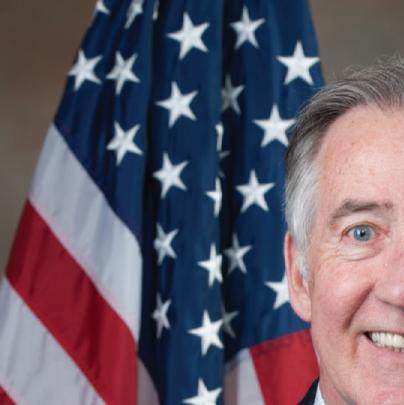




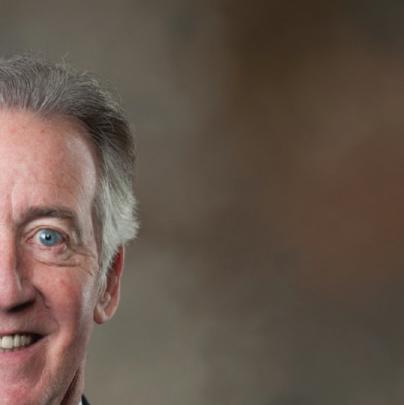

As I reflect on our recent accomplishments –from continued investments in our region’s infrastructure, enhancing retirement savings, and delivering for our nation’s veterans –I remain committed to fighting to uphold these historic achievements.
Thank you for your continued support. It is an honor to represent the people of Western and Central Massachusetts in the United States Congress





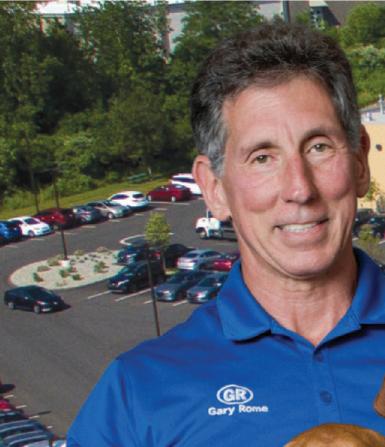






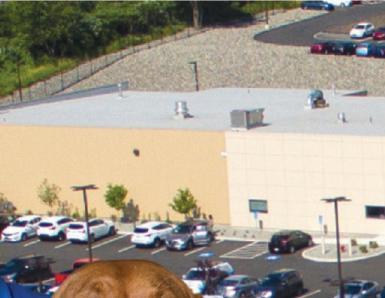
























































































































By Samantha Paul Special t
Republican
o The
Federal funding is a life force for the University of Massachusetts Amherst.
With a new administration in office in Washington, D.C., the university has taken steps to comply with executive orders that target the existence of diversity, equity and inclusion programs.
On his first day back in the White House last month, President Donald Trump signed executive orders upholding his pledges to repeal transgender protections and federal funding for DEI programs, calling them both “illegal and immoral.”
UMass Amherst is the largest employer in Western Mass., with over 8,000 employees; it received more than $322 million last fiscal year in federal funding. Over half of this funding helps maintain the institution’s standing as a university with exceptional research activity, performance and resources. Another $143 million goes towards student aid funding, including federally backed loans, Pell Grants and work-study aid.
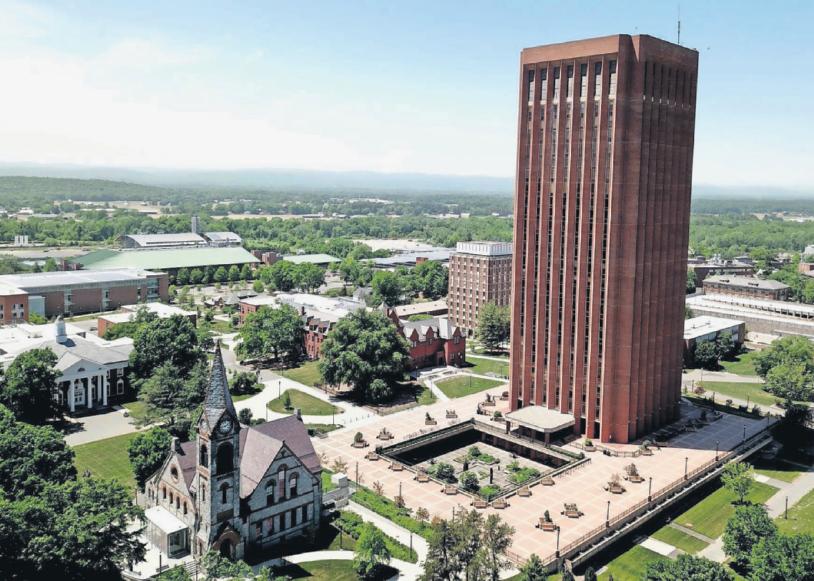
Kerri Thompson Tillett, UMass’ Title IX coordinator and associate vice chancellor for equal opportunity and access, said that as a result of Trump’s order, the university is returning to language in its 2020 Title IX policy. This includes the use of an earlier definition of sex discrimination, which does not include phrases such as gender identity, gender expression or sexual orientation.
Outlook commentary
HE TRUMP ADMIN-
Tistration’s quest to eliminate diversity, equity and inclusion programs nationally will have negative effects on those who are historically impacted by health disparities and economic disadvantage, including here in Springfield and Mason Square.
DEI programs ideally lead with equity and are essential for fostering an environment where all individuals feel valued and respected, regardless of their backgrounds, and create pathways for access to opportunity to enhance the quality of live for our residence.
By removing these initiatives, the community risks perpetuating systemic inequalities and widening the gap between social and ethnic groups.
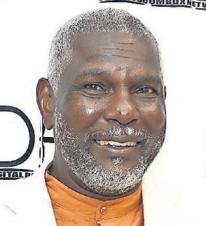

Further, eliminating DEI programs could negatively impact the local economy.
A diverse and inclusive workforce is known to drive innovation and creativity, attracting businesses and fostering economic growth. Springfield and Mason Square could lose their competitive edge, making it less appealing
The removal of DEI programs sends a concerning message about the community’s values and priorities.
DEI programs often provide critical support and resources to historically disadvantaged neighborhoods and marginalized communities, helping to level the playing field in terms of access to education, employment and social services. Without these programs, individuals from underrepresented groups may face increased barriers, leading to decreased opportunities for personal and professional growth affecting the economic development in Greater Springfield.
The absence of DEI initiatives could hinder the progress made towards creating a more inclusive and harmonious community. These programs play a vital role in promoting the cultural optics and enhancing a deeper level of cultural awareness and understanding, which are crucial for reducing prejudice and discrimination. Without them, there is a risk of increased tensions and misunderstandings among community members in the City of Homes.
for potential investors and businesses seeking a vibrant, inclusive environment.
The removal of DEI programs sends a concerning message about the community’s values and priorities. It may suggest a lack of commitment to social justice and equality, potentially deterring individuals and families who value diversity from moving to or remaining in the area, increasing anxiety and despair as a result of the political struggle we face collectively. Eliminating DEI programs in Mason Square and Springfield could have far-reaching negative consequences, affecting social cohesion, economic prosperity and the overall well-being of the community. It is crucial to continue supporting and enhancing these programs to build a more equitable and inclusive future for all residents in our beloved city.
Willie Naylor lives in the Mason Square neighborhood in Springfield.
However, the institution has moved to put concerned students and faculty at ease, saying that sex-based protec-
“The
tions remain in place through the university’s other policies and procedures. “I want to emphasize that
all forms of sex-based discrimination and harassment that had been prohibited by our policies, whether the Title IX Policy or the Policy Against Discrimination, Harassment, and Related Interpersonal Violence, remain prohibited,” Tillet said.
UMass isn’t alone in feeling the repercussions of these orders.
Other Western Massachusetts businesses have been circumspect in how the orders affect them.
Large employers in the area did not respond to The Republican’s request for comment on changing DEI policies.
The large-scale dismantling of federal DEI programs, in line with Trump’s promises to withhold federal funds to agencies that do not comply, has moved many businesses to act.
Some, like UMass Amherst, indicate that they can work with other departments to fashion a viable solution for its employees and community.
Professionals in higher
education are concerned about the coming changes to diversity and equity policies in their schools.
Fadia Nordtveit, an assistant professor of communications at Springfield College, told Western Mass News that threats posed by the new administration’s actions on DEI “will only bring down our country.”
While Trump’s executive order most directly threatens federal agencies or those funding from Washington, the fear of similar orders coming down the line is palpable among many Americans.
Navigating Trump’s termination of DEI programs could increase turnover for companies, while pushing away consumers, as already seen in the boycotting of retail giants like Target.
“The whole idea (of diversity, equity and inclusion) was to have a society full of people who are different, and as they are different, they should not be punished for being different,” Nordtveit said.
whole idea (of diversity, equity and inclusion) was to
have a society full of people who are different, and as they are different, they should not be punished for being different.”
FADIA NORDTVEIT, ASSISTANT PROFESSOR




94 locations throughout Massachusetts and Connecticut:
• 75 supermarkets
• 17 Big Y Express® gas & convenience locations
• Big Y Express® Fresh Market™
• Table & Vine® Fine Wines and Liquors
Scan for a list of our locations:
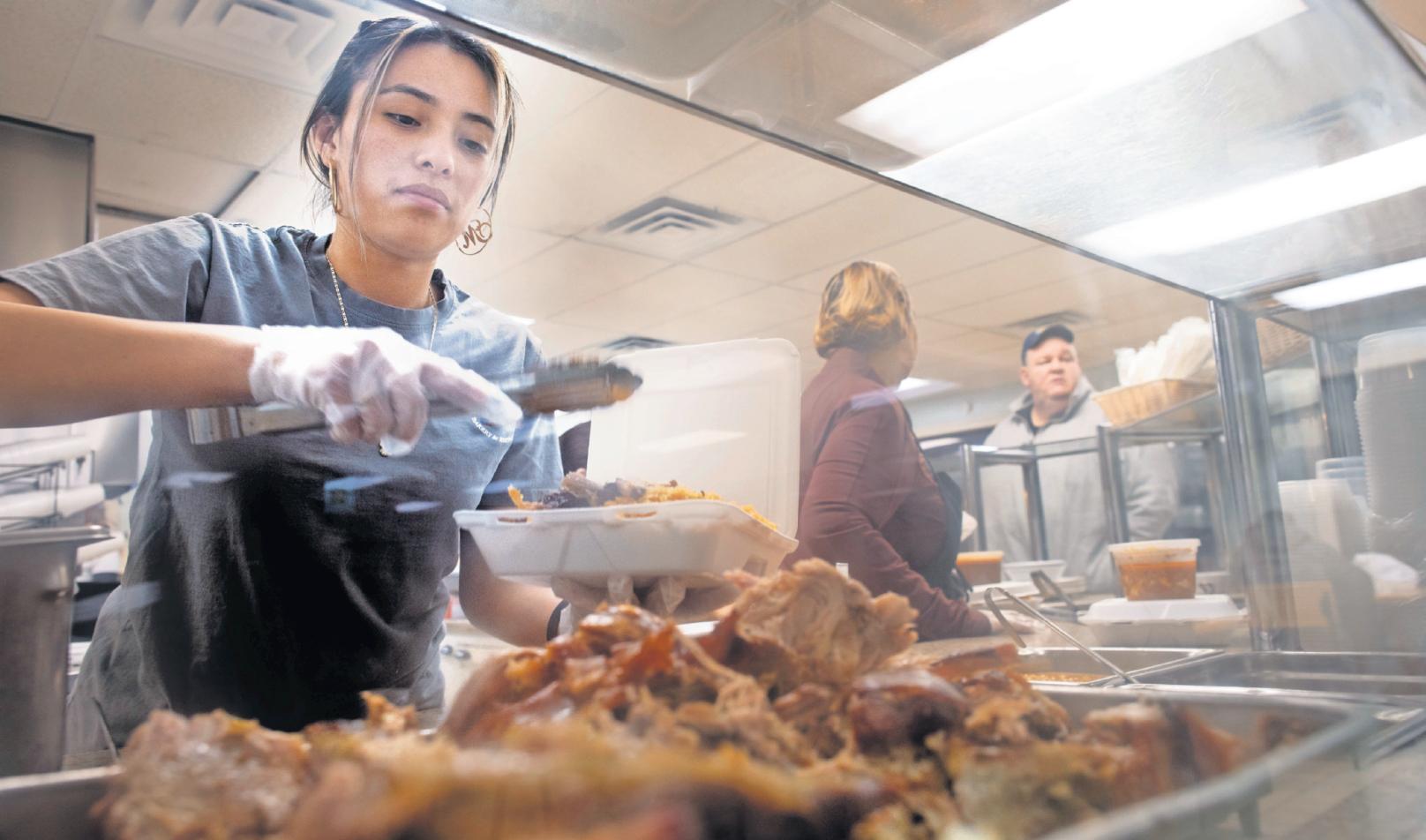

Marleny Leon is a server at the Puerto Rico Bakery in Springfield. “I provide good customer service. I work with my team and my co-workers to make sure the customer feels satisfied when they come to buy. The food here? I like it. I’m from Guatemala, but I like the food from Puerto Rico. Customers feel happy and satisfied after eating it!”
PHOTO)
(MICHAEL J. FIEDLER

Kristine Allard, vice president of development and communication at Square One, spends time in January 2024 with pre-schoolers at the Tommie Johnson Early Childhood Center in Springfield. (DON TREEGER / THE REPUBLICAN)

By Namu Sampath nsampath@repub.com
Children learn key life skills in their first five years. But the educators who impart them are often underpaid, particularly in Western Massachusetts.
That’s according to Clare Higgins, executive director of Community Action Pioneer Valley, an organization that helps low-income residents achieve economic stability and security, and a former mayor of Northampton. Legislation last year set in motion steps to lift pay for educators and improve programs. But experts in the field say more needs to be done to strengthen the child care system.
In fiscal year 2023, early child care educators in Western Massachusetts were paid $66 per day to care for toddlers and $72 per day for infant care — about $30 less than their counterparts in the Metro Boston area. That pay level comes to earnings of $24,000 to $26,000 per year.
“Many of us weren’t able to compete with fast food workers,” said Higgins.
Because of the low wages, there has been a workforce shortage, she said.
More than 46,000 people work in early education and care programs in Massachusetts, with over 4,000 open positions as of August 2024, according to the state’s Depart-
ment of Early Education and Care.
In recent years, though, Massachusetts has been putting energy, and money, towards closing the pay gap for educators, strengthening the workforce and improving child care for families.
The state Senate last March passed the Early Education Act, which laid the groundwork for a new and improved child care system — one that keeps the modern family at the forefront of the conversation. The law made permanent a program, Commonwealth Cares for Children (C3), that provides stabilization grants to child care providers. The measure boosted compensation for educators.
“(C3 has) been very instrumental to being able to rebound from the pandemic,” said Victoria Bergeron, the early education policy researcher at the Massachusetts Taxpayers Foundation, a nonprofit that looks at the state’s long-term fiscal health, tax and economic policies.
Throughout the summer, the Early Education and Child Care Task Force, a board of 13 state officials from across agency lines, held listening sessions across the state, including one in Springfield, to learn how to make child care more affordable, accessible and equitable for families.
The sessions were a focus of Gov. Maura Healey’s “Gateway to Pre-K” agenda, which
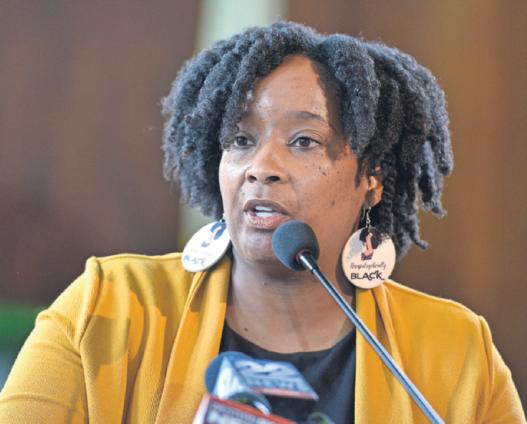
By A prell M ay Munford amunford@repub.com
Post-COVID-19, teacher burnout has surged, leading to departures and deterring new educators. Leaders in Springfield, Holyoke and Amherst call for better pay, support and autonomy to retain and attract talent.
With over 1,000 unfilled positions in education statewide, burnout is a significant challenge, said Max Page, president of the Massachusetts Teachers Association.
Teachers need more support from the district and community, said Springfield School Committee Member LaTonia Monroe-Naylor.
“It is not fair to let the burden of being all things to students fall on teachers,” she said.
Social challenges faced by Holyoke students are complex, adding stress in the classroom, said Joshua A. Garcia, the city’s mayor and School Committee chair.
“If I were president of the United States, I would find a way to make teacher’s salaries six figures,” Garcia said.
Nicolas Cream, president of the Holyoke Teachers Association, said teachers want the district and state to better address safety concerns and listen more closely to their needs.
Claire Coco, communications chair of the Amherst Pelham Education Associa-
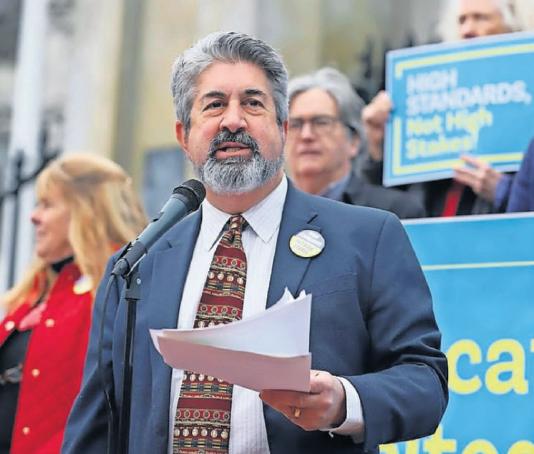
voters’ decision to lift the MCAS graduation requirement will help improve teaching conditions that lead to
burnout. (DON TREEGER / THE REPUBLI-
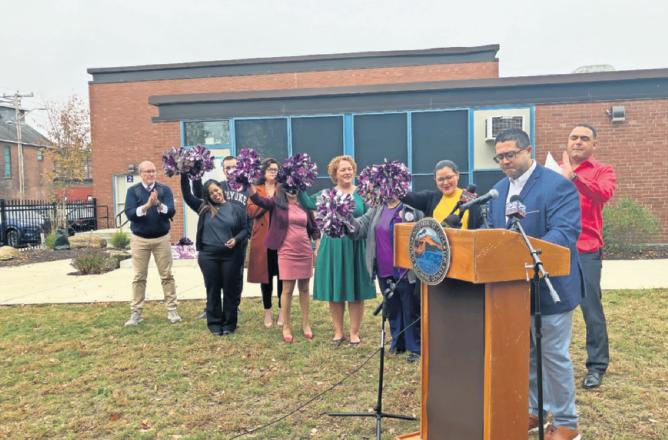
tion, says rural districts need more state funding to handle budget shortfalls.
Taking legislative action
A September Pew Research Center survey found the primary reason teachers considered leaving the profession was dissatisfaction. Approximately 77% reported that teaching was stressful and 68% indicated they found the job overwhelming, the survey revealed.
Schools are struggling to retain teachers due to higher education debt, low wages, high-stakes testing and increased safety and mental health challenges, Page said.
“These conditions make teaching less attractive, leading to fewer young people entering the profession,” Page said.
On top of that, young people considering a career in education are deterred by the

20% pay gap between teaching and similar professions, he said.
“Normally, people follow their parents or family members’ footsteps into education because of how they hear them talk about it. But with the state of education now, they can’t talk about it in good faith, because they feel demoralized. It’s tragic,” he said.
In January, the MTA proposed several bills to address burnout and the workforce gap, including free public higher education, increased school funding and supports, substantial pay raises and enhanced retirement benefits. Page also highlighted the need for policymakers to discuss giving educators more creative freedom in the classroom.
Teachers are the foundation
Superintendent Anthony Soto addressed an audience in October on what’s next for Holyoke Public Schools. Behind him, at far right, is Holyoke's mayor and School Committee chair, Joshua A. Garcia. (APRELL MAY MUNFORD / THE REPUBLICAN)
of public education, says Page, and their ability to be creative helps keep students engaged and passionate about learning, Page said.
“This creativity attracts students to the teaching profession and encourage them to stay,” he said.
Teacher retention
Based on 2024 retention data from the state Department of Elementary and Secondary Education, approximately 90% of teachers statewide retained their positions, a slight improvement from 2023, when the retention rate was around 88%.
School districts in Western Massachusetts kept with the trend, but remain below the state’s average on retaining teachers.
Approximately 81% of teachers in Amherst-Pelham




IHANDED SEAN A PAD and pen and asked him to list his top three priorities for the day. He stared at them like they might bite, then, with barely a glance, shifted his phone into place and started typing. A few seconds later, his list came through as a text. It ended with, “Mop the men’s locker floor,” followed by a vomit emoji.
Welcome to the world of working with Gen Z.
Gen Z, born between 1997 and 2012, is a generation shaped by the digital world. They’re connected, opinionated, and deeply engaged with their personal and professional lives.
If you’re managing a business today, it’s essential to understand one thing: If you want to retain Gen Z employees, you need to meet their expectations. Specifically, they’re less likely to stay in a traditional 9-to-5 job that they find unfulfilling. To

AG’s office fielded thousands of calls to its Fair Labor Division hotline in 2024
Gen Z is highly adept at building online brands, explains Jesse Baker, general manager of Grit 24 Fitness, a 24-hour gym in Ludlow. (FAJRUL ISLAM / GETTY IMAGES, FILE)
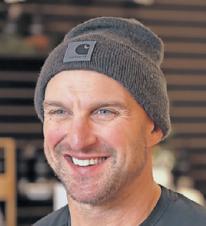
Baker

By Stephanie Barry sbarry@repub.com

S PRINGFIELD — The Massachusetts Attorney General’s Fair Labor Hotline last year was, in a word, hot.
A spokesperson for Attorney General Andrea Joy Campbell said the line fielded 11,000 calls. Of those, 7,000 were wage and hour complaints focused on allegations that hourly employees had not been paid for every hour worked, being denied overtime, not receiving proper breaks and other labor-related infractions.
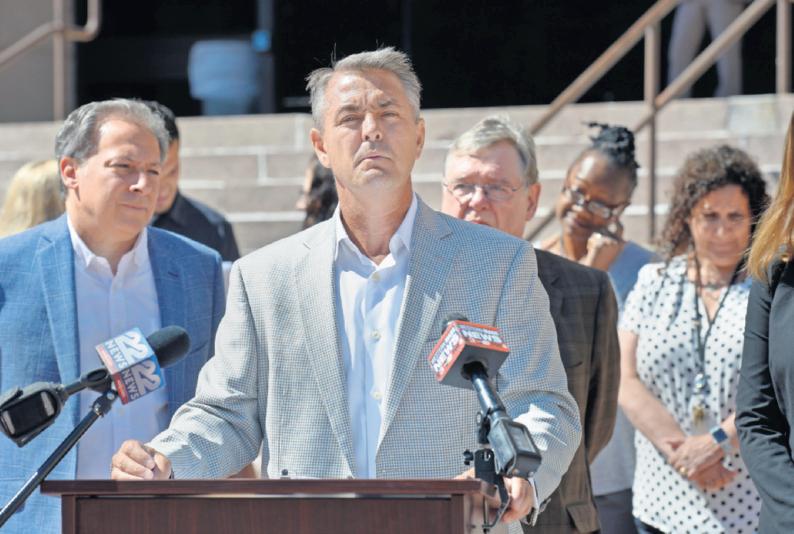
For past generations, motivation often revolved around basic incentives, like a paycheck, benefits and career advancement. For Gen Z, work needs to have purpose.
motivate and keep them, you must adapt your management style.
For past generations, motivation often revolved around basic incentives, like a paycheck, benefits and career advancement. For Gen Z, work needs to have purpose. They want their jobs to align with their values and make a tangible impact. This generation is not just working for a paycheck — they’re looking for meaning and connection.
So, how can you motivate them? Start by helping them understand how their work contributes to a larger goal. Whether in fitness, tech or any other field, explain how their role impacts the bigger picture. For example, in a gym, it’s not just about tasks, like cleaning or greeting clients — it’s about helping people improve their lives. Allow your Gen Z staff to take ownership of projects that resonate with them, such as running a wellness initiative or, in our case, managing social media. Giving them a sense of responsibility and purpose will boost their engagement.
Gen Z is highly adept at
building online brands. They’re not just consumers of social media — they’re creators. If your business isn’t active on platforms like Instagram, TikTok or YouTube, it’s time to reconsider. Encourage Gen Z employees to contribute to your social media presence by creating content, from tutorials to behind-the-scenes looks at your business. They have a natural knack for what resonates with their peers, and involving them in your social media strategy can enhance both team engagement and brand visibility. Flexibility is also crucial for Gen Z. Having grown up witnessing their parents struggle with work stress and its effects on family life, they prioritize a healthy work-life balance. Unlike previous generations, they’re determined to avoid burnout, and seek a lifestyle where both career and personal well-being are valued equally. By the way, Sean forgot to mop the floor, so I texted him to remind him to do so as soon as he walks in tomorrow. Of course, I included a frown emoji.
Jesse Baker is the general manager of Grit 24 Fitness, a 24hour gym in Ludlow. With more than two decades of experience in the fitness industry, Baker focuses on enhancing clients’ quality of life through fitness and helping them achieve positive emotional, mental, relational and spiritual health, and increased physical strength. He holds a Bachelor of Arts from Springfield College, where he played varsity football as a middle linebacker for four years. Visit grit24fitness.com for more information.

While Massachusetts has long had fairly stringent wage and hour laws, the attorney general can investigate claims, negotiate settlements and impose fines on employers who run afoul of fair labor practices.
“My office will continue to hold accountable those who violate our wage and hour laws,” Campbell has said. The hotline can be reached by calling 617-727-3465. It is staffed Monday through Friday from 10 a.m. to 4 p.m.
A spokesperson said the office last year took civil enforcement actions against 638 employers, helping 40,370 workers across Massachusetts and assessing more than $31.5 million in restitution and penalties.
Past settlements
One of the largest settlements Campbell’s office has reached with a Western Massachusetts employer came in 2023 with MGM Springfield to the tune of $6.8 million.
The casino was fined for failure to pay minimum wage to tipped employees, failure to pay overtime wages, unlawful tip retention by management, failure to make timely payments of wages, and failure to provide paid earned sick time.
More than $400,000 was negotiated to be returned to affected workers. Those settlements ranged from $50 to more than $18,000 per employee.
Just weeks after the $1 billion casino opened, the Fair Labor
“My office will continue to hold accountable those who violate our wage and hour laws.”
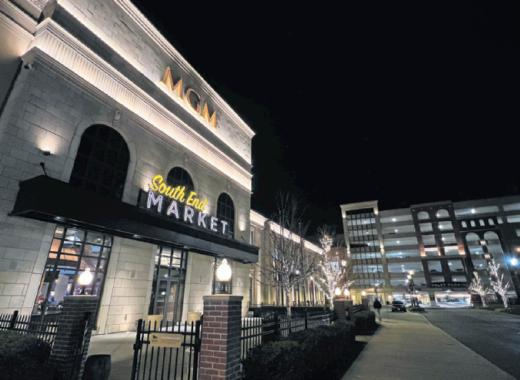
Division began receiving complaints from MGM employees, Campbell’s office said when announcing the settlement.
More than 2,000 affected workers spanned much of the MGM Springfield operation. Most were service employees earning hourly wages. They included table game dealers, banquet servers, bartenders, ushers, kitchen staff, casino floor and hotel staff, warehouse personnel, cleaners, and security guards.
A database published on the state’s website outlines complaints and enforcement taken by the Fair Labor Division.
Western Massachusetts cases from 2024 include:
• The Place 2 Be in Springfield was fined for failing to provide wage records and to
pay employees in a timely way. The business was fined nearly $9,000, according to the database.
• Teamwork Painting Corp. in Springfield was fined nearly $13,000 for failing to pay overtime.
• KwikFix Auto Repair and Mini Mart in Springfield was fined $2,600 for failing to pay an auto mechanic in a timely way.
• Eclectic Attic in Springfield was fined $5,500 for failing to make a timely payment and for retaliation for exercising wage and hour rights.
In addition to making complaints with the attorney general’s office, workers can opt to find a lawyer who will take an employment case on contingency. Springfield
attorney Jeffrey Morneau’s practices focuses heavily on wage and hour and other labor litigation.
In late 2024, Morneau filed a lawsuit on behalf of employees of the Hampden County Sheriff’s Department. A claim filed Nov. 27 in Hampden Superior Court argues the workers were illegally shorted for two hours of wages while attending mandatory fitness evaluations.
“It’s fairly straightforward. People need to be paid for all the time that they work. And this is an example of that,” Morneau said at the time. During a recent interview, he said Massachusetts wage and hour laws loom large and certain infractions can automatically trigger treble damages for violators.
“The wage and hour statute carries a big hammer,” Morneau said. He added that many employers run afoul of the law unintentionally, but are still subject to litigation and penalties. He said restaurant workers — from chains to small and mid-size eateries — sometimes fall out of compliance even though their intentions are good. But workers can fall victim to even the most well-intentioned employers.
“For smaller employers, staying in compliance can be very, very challenging,” Morneau said.







By Stephanie Barry
sbarry@repub.com
SPRINGFIELD
— After more than 20 years as a corrections officer, DiShanda Callands-Rrobinson landed her dream job at 53.
Upon retirement, she earned her commercial driver’s license and now drives buses for Peter Pan Bus Lines, based in Springfield but with a reach to Washington, D.C. Recently, she drove a charter bus for a collegiate pro-life group to the nation’s capital and said she fulfilled a professional dream on behalf of herself and her late father.
Drivers like Callands-Robinson who are attracted to the open road are a premium commodity, he added.
The money isn’t bad either, according to Picknelly, who said drivers’ salaries can hover around six figures annually, depending on how many hours they are willing to drive. Peter Pan offers health care benefits.

“This was one of my bucket list dreams. My father always wanted to be a bus driver,” Callands-Robinson said. “I am now loving every minute with the kids grown.”
Her employer is equally happy to have her aboard. Peter Pan executive Peter B. Picknelly says the company remains in dire need of drivers — particularly in Boston and Providence, Rhode Island, and on Cape Cod.
“We were offering $5,000 to $10,000 sign-on bonuses and it didn’t work,” Picknelly said. “We realized it wasn’t money that would draw people into the industry.”
According to data from the U.S. Chamber of Commerce in late 2024, Massachusetts has 42 available workers for every 100 open jobs. The largest deficits are in transportation, hospitality, health care and restaurants. But the Pioneer Institute says there are shortages in most sectors in the Bay State.
Many factors contribute to the workforce supply crisis. Health care, technology and skilled trades are experiencing an aging workforce and fewer qualified applicants, according to labor watchdogs.
The disparity between the supply of workers and demand adds urgency to the hiring process, leaving businesses with limited options.
Millennials and Gen X workers who expect remote work also add to the conundrum, employers say.
Despite the plethora of job open-
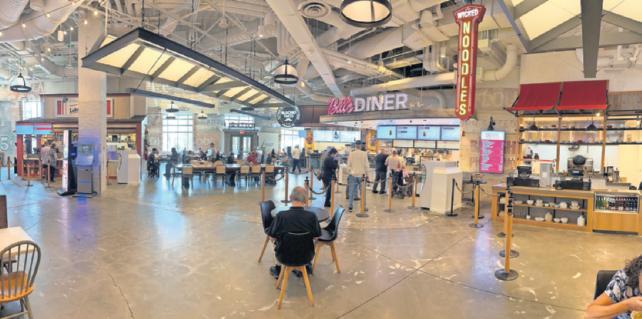
anniversary in the City of Homes in August, Ward said.
Small businesses are also feeling the pinch of the labor shortage.
Georgianna Brunton, owner of the historic Miss Florence Diner in Northampton, bought the place in 2018 and had little more than a year at the helm before the pandemic hit and threatened the restaurant industry.
She echoed the fact that cooks are in high demand. She detects a certain malaise among job-seekers.
“I’d put an opening on Indeed.com and I’d get 50 or 60 responses, but I’d be lucky if 10% of them showed up for an interview,” Brunton said.
ings, Massachusetts was expected to pay out more than $2 billion in unemployment benefits last year.
Other large employers say many of those who apply for jobs don’t show up for scheduled interviews.
“We’ll put eight people into the same time slot because only one will show up,” said Beth Ward, spokesperson for MGM Springfield, one of the region’s largest employers, with 1,500 workers, according to the Massachusetts Gaming Commission.
Ward said the casino is recovering
from a post-pandemic hangover like much of the hospitality industry.
There was a period when MGM was recruiting on a weekly basis. The company maintains partnerships with local colleges and nonprofit organizations to draw prospects.
MGM’s priorities are finding food and beverage workers, with an emphasis on cooks, along with technology and hotel workers, Ward said.
“We’re in a good place, though,” she said.
The casino will mark its seventh
Sometimes, people who applied for jobs didn’t have the required skill set. Brunton said she was forced to get creative — training them from the ground up. She also had to bump up salaries quite a bit, by 40% in some instances. Brunton said she has been working more directly with staff, rolling up her sleeves over a steaming hot grill many mornings to crank out hundreds of orders of eggs.
And yes, about the eggs.
“When I bought the diner, 30 dozen eggs were $13. When I bought eggs last week, it was $87 for 30 dozen,” Brunton said.
LAST YEAR, WESTfield State University celebrated its 185th year in providing the commonwealth of Massachusetts and the region with educational resources that have led to the growth of families, resilient communities, progress in government, groundbreaking businesses and stable economies.
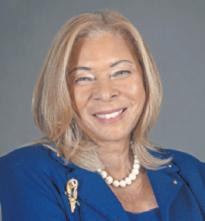

We are proud to continue the mission and vision of our founder, Horace Mann, who believed public education should be available to students of any creed, color, gender or financial standing. Mann believed that everyone should have full access to a quality education. We are proud to keep that tradition alive. Indeed, our entire system of state universities are important assets that ensure all Massachusetts residents have the opportunity to pursue their dreams and live up to their potential. Along with providing a first-class education, our state universities are partners and friends with our neighboring communities and government. We have consistent, effective contact with area business owners, government representatives, community
and nonprofit leaders and alumni. We maintain and nurture these relationships with a focus on how we can develop and tailor our educational offerings to meet the needs of our students and the public. We also collaborate with our community college partners to offer pathways that lead to a four-year degree. With the launch of free community college for all last year, the state universities and community colleges presidents are discussing new and innovative partnerships.
We are committed to working with our community college partners to create a seamless system of public higher education for the students in the commonwealth.
As the debate on the importance of higher education continues, and questions on how return on educational investment impacts our
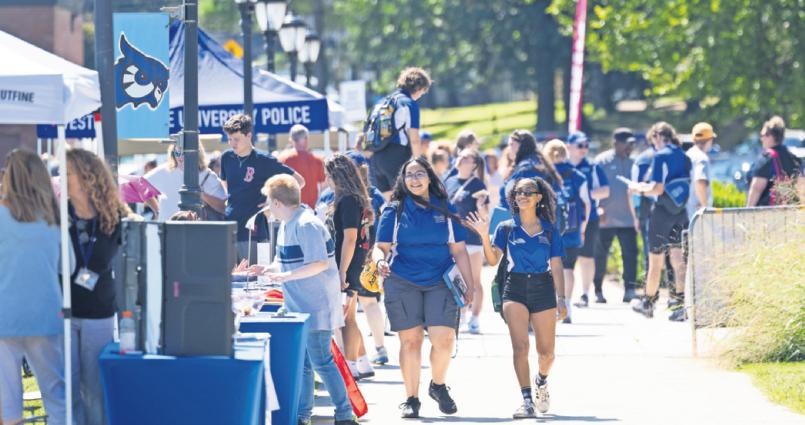
residents, Massachusetts’ 2025 fiscal year state budget included historic investments in the commonwealth’s public higher education system. Through a 2022 approved ballot initiative that created a 4% surtax on annual income over $1 million, the measure directed the Legislature to use newly created tax revenues for education and transportation, which led Massachusetts to offer free community college for all and free four-year college for anyone whose
adjusted family gross income is below $75,000.
The Healey-Driscoll administration’s $14 million expansion of the SUCCESS Program will also allow Massachusetts’ nine state universities to reach and support first-generation and historically underserved students. SUCCESS funds can be used in a wide range of areas, including academic services, financial planning, tutoring, academic skill workshops, assistance with social services, supplemental finan-
cial aid, professional development and reform or expansion of academic program offerings. These essential services will increase retention and bolster graduation rates. In further efforts to support public higher education, the Healey-Driscoll administration, working with members of the Higher Education Capital Working Group, filed a bond bill that would direct $2.5 billion into facilities at state universities, community
HAPPINESS, HANDCRAFTED
Fine Italian Confestions Since 1988
Fresh European style cakes, cookies, pastries and wedding cakes.
Visit our bakery and see why it’s a mainstay in the community.
Order Online


255 Elm Street, W. Springfield 413-781-1139
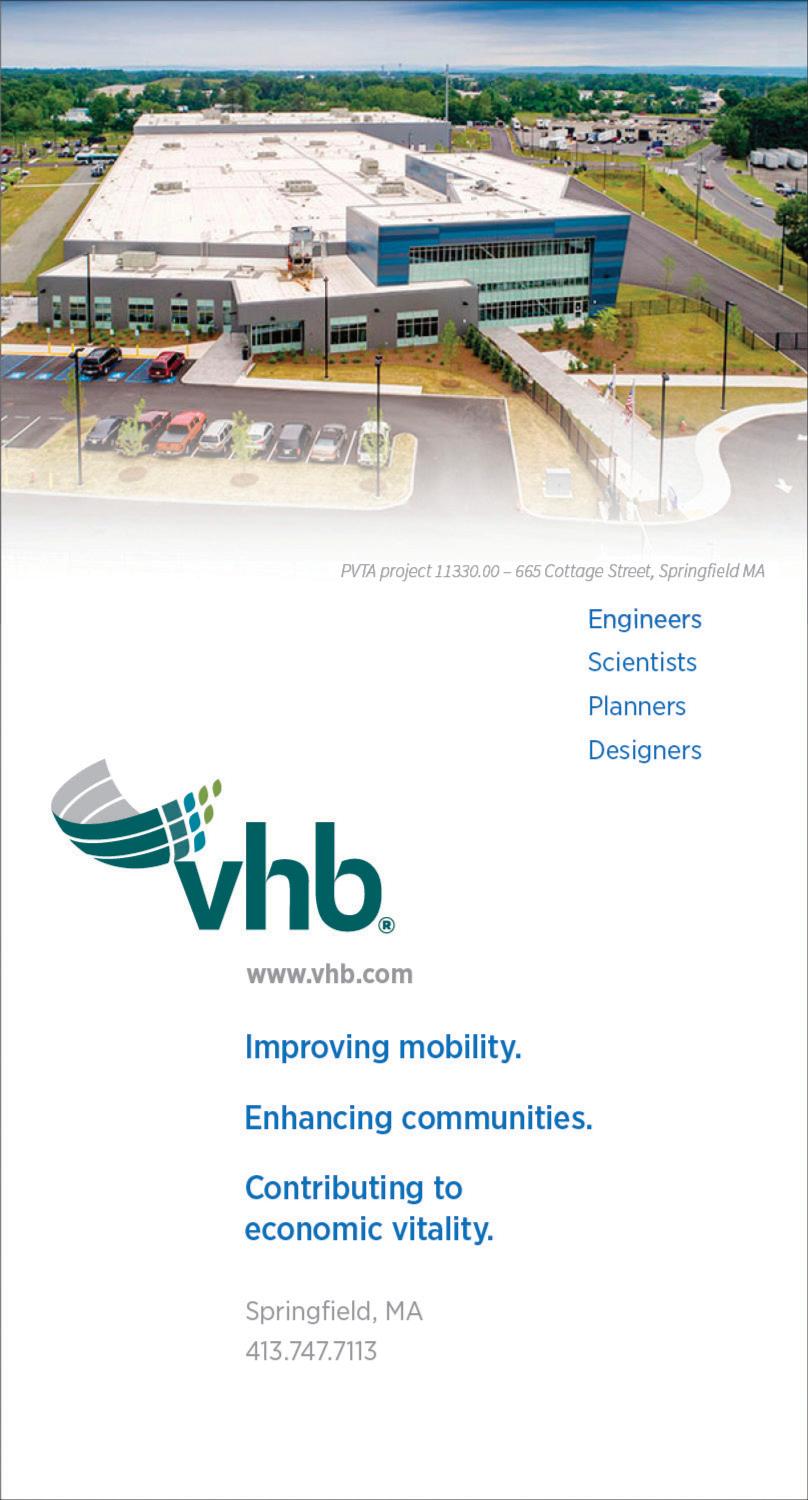


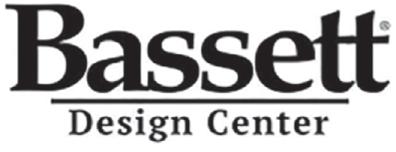








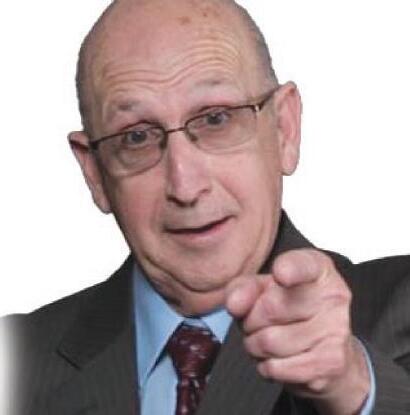






PARTNERSHIPS ARE essential in today’s higher education landscape, serving as engines of innovation and workforce development. Bay Path University and Cambridge College (officially acquired by Bay Path in July) exemplify this collaborative spirit through our partnership efforts that address real-world challenges. Together, we leverage our strengths to build mutually beneficial relationships that provide career-focused solutions to for-profit, nonprofit, educational and allied health sectors. At the heart of Bay Path and Cambridge College’s approach to partnerships is our problem-solving mindset. For our institutions, this means entering every relationship with a clear understanding of our expertise and what we can offer. Our goal is to listen and identify the challenges faced by prospective partners and craft solutions that align with their greatest needs. This tailored approach allows our institutions to build solutions that are both effective and sustainable for our partners, and in some cases, scalable toward greater impact. Our institutions’ ability to operate with the agility of a business sets us apart. With over 120 partner relationships and growing, the scale and impact of our partnerships are substantial.
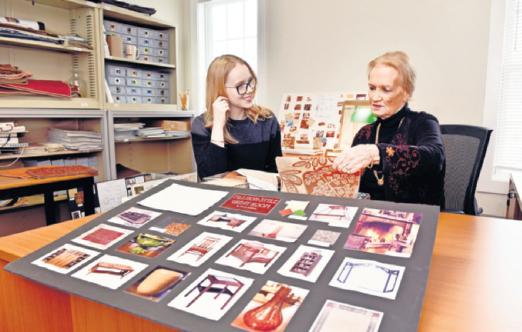
University

This extensive network and the knowledge sharing between Bay Path and Cambridge College positions us as leaders in workforce development across the commonwealth and beyond. By leveraging our shared expertise and commitment to problem-solving, we are well-positioned to expand our impact in workforce development, upskilling and lifelong learning. Phillip Page, Bay Path’s vice president of strategic partnerships, shared this example: “Cambridge College’s collaboration with Encore Boston Harbor addressed a unique workforce development challenge. With
the launch of the Greater Boston Gaming Career Institute, Cambridge College created a pathway for over 800 individuals to quickly gain the skills necessary to work in the gaming industry. The program also offered the option for prior learning credits, enabling participants to continue their education toward a degree, benefiting both the employer and the employees. This relationship has produced a steady flow of talent to our partner over the past seven years.”
Similarly, Bay Path University’s partnerships reflect a career-focused mission. Dr. Ruth Lahti, dean of the School of Education, Psychology and Humanities, stresses the importance of listening and asking
questions, enabling Bay Path to design programs that directly address partner needs. “We worked with the Latino Economic Development Corporation to launch the Latino Professional Leadership Institute for February 2025, a bilingual online program designed to support Latino entrepreneurs. This is the first of its kind in the region.”
We are also mindful of the teacher shortage throughout the commonwealth. Bay Path has developed a new apprenticeship program for teachers or aides who are working under pandemic waivers to earn their degree while still being 100% in the classroom. And another notable success story is Cambridge College’s partnership with Cambridge Public Schools to address a shortage of credentialed teachers.
By designing a program tailored to assess and fill knowledge gaps, Cambridge College provided a cost- and time-efficient pathway for teachers to advance their credentials. This partnership’s success has led to the launch of a second cohort, underscoring the scalability of their model.
Bay Path University’s applied behavior analysis program also exemplifies a similar commitment to workforce development. Partnering with organizations such as Nashoba Learning Group
and LEARN Behavioral, Bay Path helps employees without licenses or bachelor’s degrees earn the credentials needed to work in clinical settings. This initiative not only addresses workforce shortages but also empowers individuals to advance in their careers.
Both Bay Path University and Cambridge College excel in creating customized solutions, whether through credit-bearing programs, certificates or noncredit options. And our decadeslong experience in educating adult learners means we can deliver successful programs for current or prospective employees that meet the needs of workforce partners, while providing affordability and accessibility.
Together, Bay Path University and Cambridge College are redefining what it means to be a higher education partner. Our innovative approaches, mission-driven focus and unwavering commitment to addressing real-world challenges make us invaluable allies for organizations seeking meaningful change. Through partnerships, we are not just solving problems — we are shaping the future.
Kathleen Wroblewski is the senior director of communications and media relations at Bay Path University. To learn more about Bay Path’s partnership program, contact partnerships@baypath.edu.
S I LOOK FORWARD
Ato celebrating my second anniversary with Martin Luther King Jr. Family Services, I am consistently moved by the generational impact we’ve made over the past four decades. It is deeply rewarding to meet people of all ages who share their MLKFS stories and express gratitude for the difference we’ve made in their lives. Our alumni, in particular, are a constant source of strength and inspiration. They not only continue to support our mission but also serve as living testaments to the enduring impact of MLKFS on personal and professional growth. At the heart of our work is
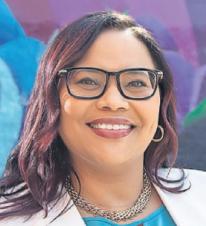
the unwavering dedication of our team, board, volunteers and alumni — whom I proudly refer to as the “Magic Makers” of MLKFS. They bring passion, compassion and commitment to their roles, ensuring our programs thrive each day. Our collective

efforts continue to make Dr. King’s vision of a “Beloved Community” a reality, shaping futures and transforming generations. Stories like Michael’s and the tale of a current scholar, the third generation in their family to participate in our historically Black colleges and universities tour, inspire me and underscore MLKFS’ lasting effects.
Sankofa means “to go back and get it” in the the Akan language of Ghana, often interpreted as looking back to inform the future. Reflecting on the past year, I am
especially proud of hosting our first-ever MLKFS Family Reunion, a three-day event celebrating our rich legacy through reflection, reconnection and recommitment. We also formed powerful partnerships with aligned organizations, including the MLK Day Collaborative — a coalition of 13 organizations — bringing together our largest MLK Day Celebration in 2024. Additionally, we collaborated with Springfield Public Library and Springfield Cultural Partnership to engage our community in the Be Love movement, launching a social justice art installation on MLK Day 2025. This movement, originating from The King Center in At-
lanta and reaching the 413, encourages us to embody “love in action,” bridging community gaps through kindness and compassion. As we look ahead, our focus turns to strategic planning, where we will clarify our path forward, ensuring that MLKFS remains a cornerstone of empowerment for future generations. While we remain committed to our traditions in youth empowerment, college readiness, nutrition and wellness, we also are exploring new areas of growth, including arts and culture, creating a stronger food ecosystem, leveraging technology for learning, workforce
SEE RUDDER, PAGE J14
“The day I became a staff member at Martin Luther King Jr. Family Services was the day I not only gained a new family, but also became a ‘Keeper of The Dream.’ When you step through the doors of our community center, you’re welcomed with open arms. Here, everyone is heard and treated with dignity, no matter who they are.”
MICHAEL JONES, A FRESHMAN AT ROGER WILLIAMS UNIVERSITY AND FORMER MLKFS GROUP LEADER, WHO EMBODIES THIS SPIRIT AS HE CONTINUES TO MENTOR OUR YOUTH AND CARRY FORWARD THE VALUES OF MLKFS.
stayed in their positions. Springfield Public Schools retained 83% of its teachers, while Holyoke kept about 72%, down from 77% in 2023, but up from 2022 when the retention rate was 71%.
Page said school districts under state receivership, such as Holyoke, encounter significantly more challenges keeping their teachers.
In receivership, a state-appointed official manages the school system with the authority of both a superintendent and a school board.
Ending Holyoke’s underperforming status after nearly a decade may improve retention, as teachers regain union rights, which had led many experienced educators to leave.
“Holyoke has seen a 40% turnover rate from year to year and that’s terrible because students need consistent adults to look up to, besides their parents,” Page said.
Seeking solutions
Garcia expressed anticipation for the district’s returning to local control in July after a long state receivership. He believes restoring collective bargaining will offer teachers assurance and protections, along with incre-
mental pay increases, encouraging them to stay in the district.
“Does it send the message — better days are ahead for those teaching with Holyoke?” he asked.
While he does not think local control will fully resolve Holyoke’s retention challenges, he hopes it will help close the gap.
“One of my biggest fears is competing with Springfield. It is a much bigger district with more money and budget flexibility, and they’re having the same problem (retaining teachers),” he said.
“When you’re early in your career and could make more money teaching in Springfield or avoid the challenges in Holyoke, in Northampton, or South Hadley, you make your decisions accordingly,” he said.
Garcia said his office, the district and community partners are collaborating to provide support services like after-school programs, professional development and mental health resource to ensure that all students receive a high-quality education, regardless of their circumstances.
Factors like where a student lives, family income and mental health issues can make teaching difficult, he said. “Teachers are becoming social workers,” Garcia said.
For instance, based on where a student lives, the
Holyoke schools assign them to specific schools or groups of schools.
The H.B. Lawrence Elementary School boundary has the highest concentration of students experiencing homelessness. The E.N. White Elementary School boundary is situated in single-family residential neighborhoods.
“A student at E.N. White might have both parents at home and not worry about daily meals. Educators there have a different experience than those at Lawrence,” he said. “What’s frustrating is that, because of our demographic and position, the ones who lose the most are the kids from low-income neighborhoods.”
Listening to teachers
Meanwhile, Cream said Holyoke teachers want more inclusion in decision-making, attention to safety concerns and improved professional development.
In order to do that, the district and state must listen more, he said.
For instance, while teachers received a pay raise, last year’s professional development was four times a week for 45 minutes. This year, it was replaced with a long day on Wednesday and a couple of hours afterward.
“It wasn’t negotiated with the union,” Cream said. “That
missed the point (teachers) really wanted less hours and training on things they feel matter to them.”
Cream said that district and state leaders need to address how burnout has impacted high school teaching.
At times there were two to four fistfights a day last year, and some teachers were injured, he said.
“Teachers are concerned about getting hurt, but also what happens after something breaks out? Students are disregulated,” Cream said. “It’s hard to know how the district will respond.”
Monroe-Naylor said the Springfield school district is working to develop and sustain educator pipelines to address teacher burnout and fill job vacancies.
At the end of January, the district listed about 235 vacancies, which included elementary school teachers, pathologist and coaching positions.
To tackle the teacher shortage, she said the Springfield district is using creative recruitment methods and aims to prepare students to become future educators.
The district offers recruitment partnership programs with local colleges, competitive teacher salaries, ongoing professional development and career ladder opportunities.
colleges and the University of Massachusetts over the next 10 years.
The Act to Build Resilient Infrastructure to Generate Higher Education Transformation (BRIGHT Act) will create opportunities to modernize and update campus facilities that support lab work, web development and automation. In addition, these funds will improve facilities for student health, mental health, wellness, and safety. The BRIGHT Act will also infuse new resources into programs that address deferred maintenance, will support major construction projects throughout campus and decarbonize and modernize facilities.
One of the things our state universities do very well is respond to the needs of the communities in which we serve. Our universities also listen to the voices that can make a difference in inspiring our students. Whether creating opportunities to work with area businesses to create internships, organizing job and career advisement fairs, or developing pathways to streamline degree offerings, the partnerships that we create build real relationships that leads to the betterment of our neighborhoods. The recent smart and necessary investments in public higher education will boost our capacity to provide a state-of-the-art education that will translate into a 21st century workforce that meets the needs of our business communities and supports our economy. There is often a feeling of uncertainty during changing times. But education provides a solid foundation of knowledge in which students can use to build upon a wealth of opportunities. Optimism and confidence follow the individual who pursues education, leading to smart and measured decisions.
These personal findings are likely to benefit our families and the institutions we serve. The knowledge received through education drives individuals to pursue lifelong learning and strengthens the growth and prosperity of our communities. The return on these investments in education will be priceless. I am confident the future will be bright for public higher education in Massachusetts.
Linda Thompson is president of Westfield State University. To learn more about Westfield State, visit westfield.ma.edu.
Despite this, Springfield is dealing with similar issues as Holyoke, where the concentration of social challenges makes teaching more complex, she said.
Parts of the community face higher poverty, socioeconomic barriers, food insecurity and limited mental health access, aggravating teacher burnout, she said.
At her recent state of the school’s address, Superintendent Sonia Dinnall acknowledged the need to improve early literacy and middle school benchmarks, while also calling for more community involvement from students and families.
The onus falls on city leaders, state officials and community partners to provide social services inside and outside of the classroom to meet the needs of students, Monroe-Naylor said.
Rural school challenges
The challenges of a rural school department can be miles apart from urban districts, said Cocco.
The Amherst-Pelham Regional School District serves Amherst, Pelham, Leverett and Shutesbury and enrolls about 2,790 students in grades 7-12.
“For the last 10 years or so, there has been a budget crisis. With four towns, getting them to agree to a budget for
secondary school is tough. Cuts happen and there is always some kind of budget shortfall,” she said.
In recent years, the district had to reduce or eliminate positions, she said.
“During budget season there is a saying,” Cocco said, “The most recently hired are the first fired.” If teachers make it through the first few years, love their job and their position isn’t eliminated, they usually stay, she said.
One thing that helps retain teachers is providing access to local college education programs. She said experienced mentors spend time building relationships with younger teachers still learning the ropes. “We feel they are in the trenches with us,” she said.
Teachers’ unions nationally link post-COVID burnout to a complete change in how they do their jobs. Cocco feels resilience is rebounding.
“It’s a profession where someone has to feel called to do this work. They are drawn to the idea that they can make a profound change and make people’s lives better,” she said. “We’ve faced hardships and still feel the impact of COVID, but we’re moving forward positively, keeping the energy going.”
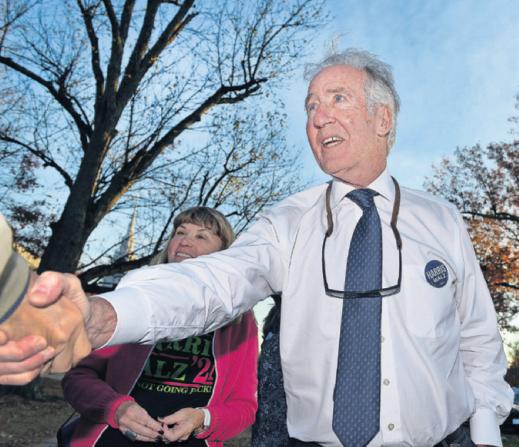
ternoon visit to the Longmeadow Community House polling place in Longmeadow on Nov. 5. (DON TREEGER / THE REPUBLICAN, FILE)
expanded passenger rail service, bringing us one step closer to making west-east rail a reality. With both of these bills drafted in the Ways and Means Committee under my chairmanship, I take great satisfaction in knowing that communities throughout my district are reaping the benefits. We also passed the largest expansion of veteran health care and benefits in generations with the PACT Act, extending health coverage to more than 5 million veterans exposed to harmful chemicals. Since its enactment, more than 1.4 million PACT Act claims have been approved, and more than 5.9
growing the early education workforce from many angles.”
works to improve child care assistance for providers in the 26 Gateway Cities around the state.
The Massachusetts Taxpayers Foundation, in November, published a report highlighting the state’s effort to improve the child care system, including how providers are paid.
The state has “raised reimbursement rates for providers and also made it more geographically consistent,” said Bergeron.
The Department of Early Education and Care is in the process of procuring a new educator portal system that will provide the agency with better data on the workforce in the future, according to a spokesperson.
Marybeth Brown, assistant program director for child care resources at the Seven Hills Foundation, said centers have reported having to close their classrooms due to staffing shortages. Her group helps families, regardless of income, find a child care provider in central and Western Massachusetts.
million toxic exposure screenings have been conducted. In Western Massachusetts, we delivered for our veterans by fulfilling our promise to build a new Massachusetts Veterans Home at Holyoke. With the topping-off ceremony taking place this past November, the home is projected to be completed on time, thanks to union labor. I think Mr. Roosevelt would be most proud of our achievements relative to retirement savings. My two bills, SECURE and SECURE 2.0, increased access to retirement plans for millions of workers, positioning us to further enhance retirement savings with initiatives like my Auto-IRA legislation and SECURE 3.0. We also passed the Butch Lewis Act, safeguarding more
does not offer the care needed for a younger child.
“It’s particularly hard to find infant care because the state (pay) ratios are so much lower for infants,” said Kim Dion, associate vice president of Seven Hills. “There’s less availability of care for infants, (so) we really encourage people to start looking for a provider as soon as they find out they’re pregnant,” she said.
In some cases, there have been years-long waits for an open seat at a child care center in the area, she said.
Springfield is home to 409 licensed child care providers, including center-based programs that provide care
“Students see themselves reflected in their educators. The strength of any workforce is their diversity. We need the
Regional impact
In Western Massachusetts in fiscal year 2024, there was a 34% increase in pay for infant caretakers and a 14% increase in pay for educators of toddlers, both up from FY2023. The new pay rates are more in line with the compensation educators receive in other parts of the state, according to the Executive Office of Education.
The report cites a “greater need for a targeted focus on supporting and

On average, providers report that enrollments stand at about 90% of licensed capacity. Unfilled staff jobs are the biggest reason programs aren’t enrolled to full capacity. The overall workforce shortage affects families as well as employees. Brown said families can face different challenges in obtaining care. They include a lack of transportation and a child needing specific attention. Some are hobbled by the fact that the school an elder child attends
for infants, toddlers and preschoolers; family care; and school-aged programs, which offer before and after school care and care on non-school days, Brown said.
There are 86 programs like this in Chicopee and another 58 in Holyoke.
At Seven Hills, families pay $0 to $35 per day on child care, depending on their need. The foundation, which is state-funded, covers the rest of the cost, said Dion.
than 1.2 million pensions, and the Postal Service Reform Act, protecting health benefits for millions of U.S. Postal Service retirees.
Most recently, after years of hard work, we delivered relief to nearly 3 million public servants, including more than 100,000 in Massachusetts, by eliminating the Windfall Elimination Provision and Government Pension Offset. After years of being denied benefits, those who have contributed the necessary quarters will receive what they are entitled to.
As I reflect on our recent achievements and look ahead to 2025, I remain focused on what matters most to the American people and, most important, my constituents in
A senator’s push State Sen. Jo Comerford, D-Northampton, has been working to bring attention to the needs of her youngest constituents in Western Massachusetts.
“We know the science of early development is about caring about the whole child, from cradle to career,” she said in a recent phone interview.
Part of the issue is that parents and caregivers are strapped for resources and often see-saw between paying for costly child care programs or having to give up on work to care for their child, she said.
Child care challenges cost the U.S. economy an estimated $122 billion a year, according to the First Five Years Fund, a national organization working to make sure families have affordable access to early child care and learning programs.
Comerford said she is working on ways for the state to help providers meet their needs and enable their staffs to provide care to infants and toddlers. Another way to strengthen the workforce, she said, would make the field, which is predominantly women-led, more appealing to people of all backgrounds.
“Students see themselves reflected in their educators. The strength of any workforce is their diversity. We need the highest possible diversity from early education to higher education,” she said.
Western and Central Massachusetts: Lowering costs, addressing long-term care and improving retirement savings are all at the forefront. These are worthwhile causes that might seem impossible, but as President Roosevelt once remarked, the American people have a habit of “going right ahead and accomplishing the impossible.”
As we have seen in recent years, pursuing and achieving the impossible is how we effect real change. Thanks to all of you, I have had the privilege of playing a part in that success.
U.S. Rep. Richard E. Neal, of the First Congressional District of Massachusetts, is the ranking member of the House Committee on Ways and Means in Congress.
Holyoke Community College is not just an economic driver in our region; we have the potential to create a “positivity impact” that ripples through our communities. Our faculty and staff are inspiring students and changing lives inside and outside the classroom every day, and we want them to love what they do. We are committed to creating the conditions for a joyful workplace for all. This is our moment — an opportunity to recreate ourselves as an institution that truly puts people first. The profound changes we are seeing in today’s workplace require more than surface-level adjustments. They demand a fundamental reimagining of how we support, develop and empower our people. By focusing on our people and their talents, we are building more than just a better workplace — we’re creating a more responsive institution that meets the evolving needs of our community. This is how we’re doing it differently. This is how Holyoke Community College is leading change in higher education.
George Timmons, Ph.D., is president of Holyoke Community College.














By Jim K inney
jkinney@repub.com
Railroads built much of Mas-
sachusetts and still provide employment to its citizens, including workers at CRRC in East Springfield, building subway cars under a reinvigorated relationship with the MBTA. Freight railways have about 538 employees here in Massachusetts, according to the Association of American Railroads.
The vast majority of them work for rail giant CSX, which has 205 employees across the state, including those working at freight yards in West Springfield and Springfield. CSX told investors last year that it has wrapped up track improvements on the rail line it bought two years ago from Pan Am Railways, which stretches from Ayer through Greenfield and North Adams across the northern tier of the state.
In January, 30 union members ratified an agreement with CSX covering operational changes related to merging CSX and Pan Am’s workforces, according to the Brotherhood of Locomotive Engineers and Trainmen locals in the state.
Passenger rail line Amtrak employs 22,642 people, including 806 Massachusetts residents, it said. Total fiscal
2023

wages were $2.21 billion, of which Massachusetts residents earned $77.7 million.
That’s a number that’s sure to go up at the end of the decade. Amtrak will operate the trains as part of the west-east rail expansion in the state.
Now in its planning and design stages, west-east rail doesn’t have a price tag yet, but it involves trackwork, signaling improvements and a new station in Palmer.
Earlier this year, U.S. Rep. Richard E. Neal told reporters that more than $300 million has been allocated for the work.
“Many of the improvements are taking place even as we speak,” Neal, D-Springfield, told reporters in January.
CRRC MA’s current workforce is 481 employees, including 13 in Los Angeles.
The manufacturing facility in Springfield employs 426 people, including 265 union production employees made up of Sheet Metal Workers Local Union 63 and International Brotherhood of Electrical Workers Local Union 7. An additional nine union employees work out of MBTA project field locations.
Of the 406 employees working in Springfield, 198 of these employees live in the city of Springfield, with 93% of the staff living in or around Springfield.
They are making progress after years of missed delivery
employees also can use up to four additional remote weeks to work from wherever they choose.
performance or firm value.
MassMutual is one of the largest employers in the region and number 102 on the Fortune 500 list of the nation’s largest companies.
“To ensure we come together with intentionality, our office-based employees work in the office at least three days per week, with Tuesdays and Wednesdays serving as anchor ‘office days,’ employees choosing their third day (Monday and/or Thursday) and working remotely the rest of the time,” Cindy Ryan, head of MassMutual human resources, said in an email. “Flexibility remains a priority in our hybrid workplace model.”
She said Fridays are designated remote work days, and there are three companywide remote work weeks around select holidays. MassMutual
CONTINUES FROM PAGE J12
development, promoting financial literacy, and overlaying our human services approach with public health frames with a focus on intergenerational programming to ensure our entire community is engaged and thriving. Our strategic plan will guide us, reflecting our shared vision and values, while positioning us to harness new systems
Companies are talking less about flexibility and more about offices full of workers, said Demetrios N. Panteleakis, a principal with the MacMillan Group who has more than 30 years of commercial real estate experience, representing Tower Square among other properties.
“What we are seeing is that folks who are looking for new space are looking for expansion,” he said. “A lot of them are indicating it’s because they need people in the office.”
Mitch Bolotin of Region Commercial Real Estate said he’s getting interest from office tenants at buildings he represents. That includes the TD Bank Building Office Tower downtown across Main Street from Tower Square, the PeoplesBank building, which is a suburban high-rise
and collaborations to uplift our communities and foster self-sufficiency. Looking to the future, we also looked inward. Strengthening MLKFS’ foundation is critical to our success. Together with our board, we’ve built a stronger infrastructure, improved internal communication and reinvigorated board leadership — laying the groundwork for success as we expand our regional impact and contribute to the national conversation on race, equity
targets, shoddy quality and acrimony.
But things are better now.
Massachusetts Bay Transportation Authority spokesman Joe Pesaturo said 138 of its Orange Line cars have been delivered. The remaining 14 cars — in the total order of 152 — will be delivered between now and the end of summer.
The Orange Line has been operating only CRRC trains made in Massachusetts since September 2022. Also, 38 of the 252 Red Line cars have been delivered. The remaining 214 cars in the total order of 252 will be delivered between now and the end of 2027, as the T announced last year.
CRRC spokeswoman Lydia Rivera said the plant in Springfield also is making 64 cars for Los Angeles Metro to enhance capacity on the agency’s B and D Lines and support the region’s Olympic games in 2028. On Dec. 20, six new HR4000 subway cars entered service on the Metro D Line. Final delivery of Los Angeles vehicles is December 2026.
But those final delivery dates in 2026 and 2027 are a problem for CRRC and the workforce.
Because of federal law passed amid concerns about China gaining too much influence over U.S. transportation, CRRC is forbidden from taking work from transit agencies other than ones it’s already built cars for: Boston, Chicago and Los Angeles.
near the Holyoke Mall, and 11 Industry Drive, a low-rise, in West Springfield.
“It’s not one thing that is driving it,” he said.
There are companies returning to the office, there are companies that are expanding and need more space, and there are companies moving to the area.
Demand is strong, Bolotin said.
Bolotin gave the example of Balise Auto Group. Balise, led by James E. “Jeb” Balise, who is part owner of the TD Bank Building, is moving in stages its headquarters — back-office functions like accounting, marketing, human resources — from West Springfield to the third floor of downtown’s TD Bank Building at 1441 Main St.
The company moved to give employees access to downtown, with its lunch spots and banks and lawyers offices, all needed for business.
Meanwhile, Tower Square
and belonging. We remain committed to being a beacon of hope, justice and opportunity, driving lasting change in the lives we touch here at home. Service is at the heart of everything we do, and if we stay true to our mission, the future will one day include a CEO raised by this very village. Join us on our journey.
Shannon M. Rudder is the president and CEO of Martin Luther King Jr. Family Services.

The T is not shopping for more subway cars at this time.
Philadelphia’s SEPTA canceled an order last year amid concerns that not enough of the parts and materials were U.S. made, although at least one of the double-decker SEPTA cars are on CRRC’s Springfield property.
Short-line railroads are also employment generators. Gaynor Ryan, chief of human resources for Pinsly Railroad Co. in Westfield, said the company employees 22 in Westfield at Pioneer Valley Railroad and Railroad Distribution Services.
Pioneer Valley Railroad operates an 18-mile railroad connecting Westfield to Holyoke, linking two major railroads — CSX and Pan Am Pioneer Valley Railroad — with more than 30 diversified customers in various industries.
Railroad Distribution Services provides warehousing, outside storage, trucking and transloading services through two facilities in Western Massachusetts, with plans to build a new 156,000-square-foot warehouse in Westfield.
“While we generally have success in staffing our PVRR operations, recruiting for roles on the RDS side of the business has posed some challenges,” she said.
The company has a strict zero-tolerance policy regarding drugs and alcohol.
“However, with the legalization of recreational marijuana in Massachusetts, it has become increasingly difficult to find candidates,” she said.
is about 90% occupied. And there is noticeably less foot traffic on Mondays and Fridays.
But overall, more people come through the first floor concourse.
And that’s sweet news for Carlo Bonavita, who opened Springfield Wine Exchange four years ago.
“There are more people in the building,” he said. “All of this helps.”


PHILLIPS INSURANCE is celebrating our 72nd year in business with 27 employees operating out of Chicopee but conducting business nationwide.
In those 72 years, we have gone from a time when employees smoked at their desks while typing on IBM Selectric typewriters to now hosting video conferences and meetings with co-workers and clients from Montana to the Philippines.
This transformation was escalated in January 2020, when everyone had to navigate the strange world of COVID-19. Most agree that the pandemic was devastating to our way of life, but Phillips Insurance was fully equipped to overcome this obstacle. Our technology and educated staff provided the tools to communicate with each other and clients, which resulted in a 98% client retention and overall agency growth of 35% in the past five years.
The one redeeming lesson learned during COVID was that employers can be more flexible with their staff and their physical space. Online team meetings can be effective, and some business travel is unnecessary. However, some facts remain, namely:
• Employees are more productive when in the office with less distractions;
• Positive collaboration is maximized with in-person contact;
• Work from home creates serious cybersecurity issues;
• In-person meetings create stronger relationships and a better sense of trust;
• And troubleshooting problems are resolved quickly and learned from when in office.
Remote and hybrid work is here to stay in some capacity, but with it brings risk to our businesses and threatens the very existence of employees’ jobs. Employers are more focused now on productivity, and COVID has led to the development of sophisticated methods of measuring an employee’s productivity against a large peer group. We already have begun to see large layoffs, which will continue in
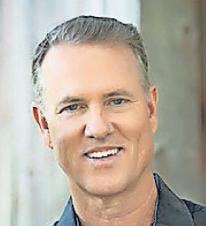
Long-term remote workers face collaboration challenges and social anxiety, and remote work can stifle the growth of younger professionals.
coming years and accelerate with more widespread use of AI. To avoid this fate, employees will find that productivity is key to succeeding, and in many respects, the only way to reach an acceptable productivity level is in the office. After four years, only 59% in the U.S. say the COVID pandemic is over, and only 57% say their lives are back to normal. This thinking is holding us and our communities back from reaching their full potential, and employees with that belief are limiting their future. 2025 needs to be the year we reverse the excuses developed during the pandemic, rethinking the temporary adjustments made, including working fully from home and flex hours. These concessions have in fact been detrimental to productivity and devastating for smaller cities like Springfield. We need federal and state employees back in the offices that sit empty to spur activity and small business development. Studies have shown that over the long-term, in-office staff is more productive. Long-term remote workers face collaboration challenges and social anxiety, and remote work can stifle the growth of younger professionals. Here at Phillips Insurance, we will continue to offer some work from home flexibility, full health benefits and a robust retirement plan coupled with an upbeat, pleasant work environment. It has worked for us for 72 years. Joseph M. Phillips is the president Phillips Insurance Agency in Chicopee.

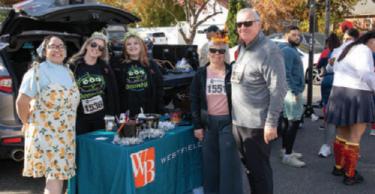


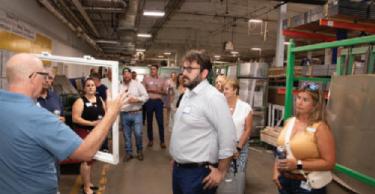



A look back at the 1980 teacher strike in Springfield, told through archival photos. Page K10
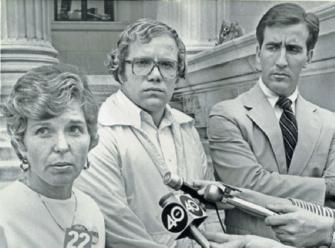
Looking ahead, what is the prospect for cannabis workers in both manufacturing and retail in 2025? Page K8

Meet Magnolia Masquerade, the drag queen who performs at the Marigold Theater in Easthampton. Page K2

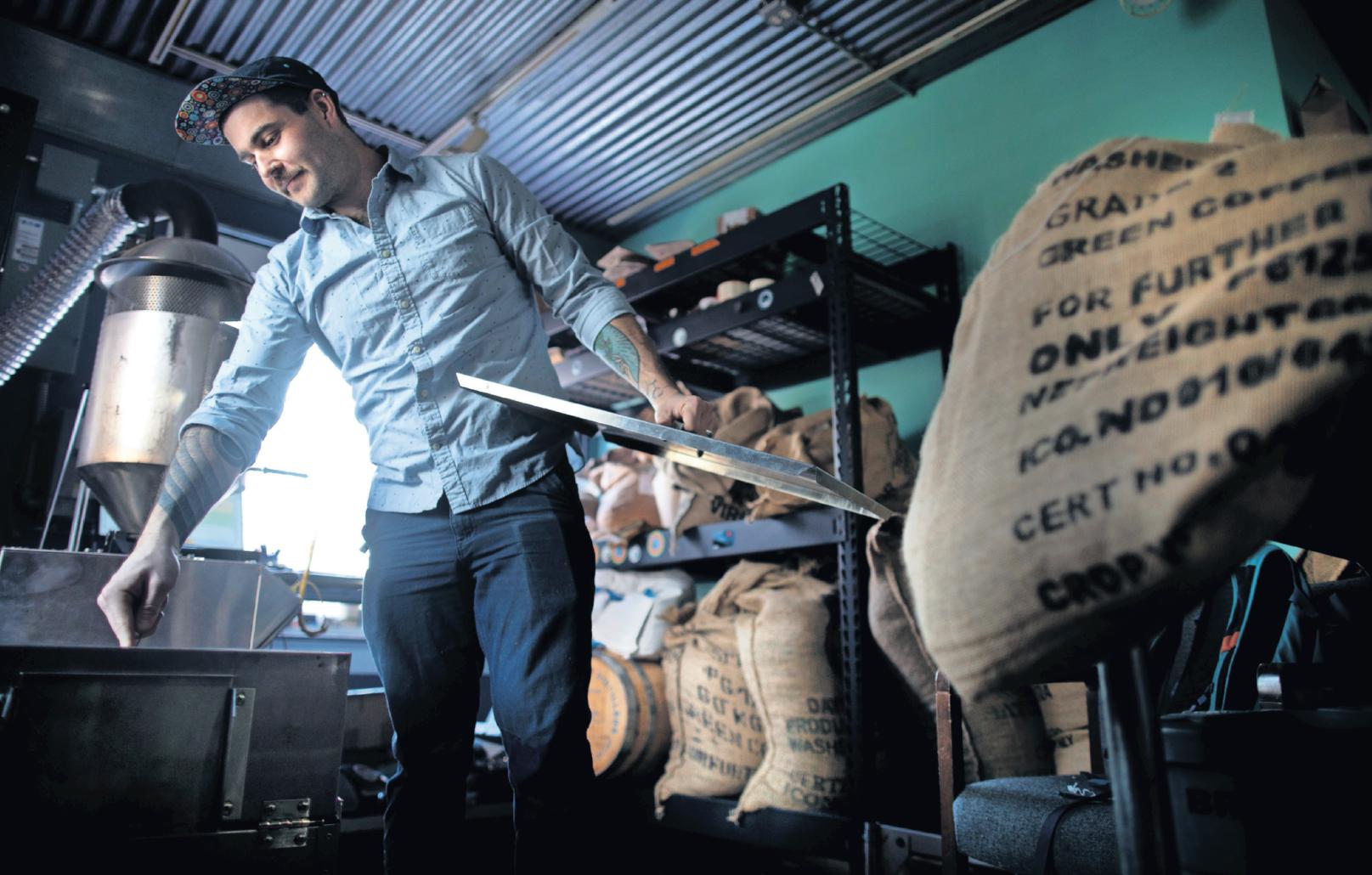

Tim Monson is the owner and operator of Monsoon Roastery in Springfield. “The
we
West Coast down to the south of the East Coast. ... The profession of a coffee roaster is a lot like a wine sommelier. We find coffees from one
tastes great and maybe from another hillside that doesn’t taste as good at all. My job is to find the best aspects of every coffee we want to use. Not many people realize how much detail goes into that. ... Coffee is grown all around the world, along the equator. It takes about 10 months for it to go from flower to the beans that I get and roast. The most important aspect of my job is to represent the hard work that the farmers and the growers did to make that coffee
Manufacturers work to broaden appeal to young workers in WMass in face of labor shortage
By Jim K inney jkinney@repub.com
WESTFIELD — Working off a diagram, Samuel Florek programs the machine beside him to shape a part from a plain block of metal. The 16-year-old Westfield
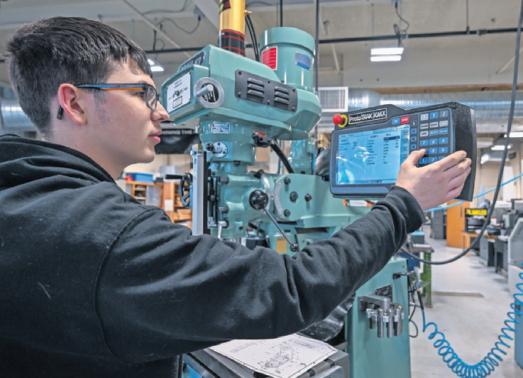

Technical Academy junior is enthusiastic about his studies in the school’s manufacturing technology program. Here, students start out on manual lathes — turning dials by hand — and work up to computer controlled machines and 3-D printers. “I like that I can make anything I want,” he said. “If I can see it, I can make it. I find that amazing.” Amazing indeed. And the evidence is all around
Florek, at left, enters a program on a Trak K3 milling machine in the manufacturing technology program at Westfield Technical Academy on Jan. 14. (STEVEN E. NANTON PHOTO)

Are tattoo artists feeling sting of





By G reta Jochem gjochem@repub.com
Lights glitter from a pile of disco balls, as Donna Summer’s 1978 song “Last Dance” plays.
And so begins the story of a Pioneer Valley performer and artist with a most unusual job.
With a large feather in her voluminous platinum blonde hair, drag queen Magnolia Masquerade lip syncs to the music. Magnolia takes off her red silky robe, waving it above her head as she reveals a sparking gold dress underneath and dances.
The sparkly scene is from a music video Magnolia Masquerade filmed at the Marigold Theater in Easthampton. Andrew Curran is the artist behind Magnolia. He performs in drag monthly at the Marigold Theater. “I am at heart a storyteller,” Curran said. “My drag is always rooted in telling a story.” Curran, 25, grew up in Westfield, went to the University of Massachusetts
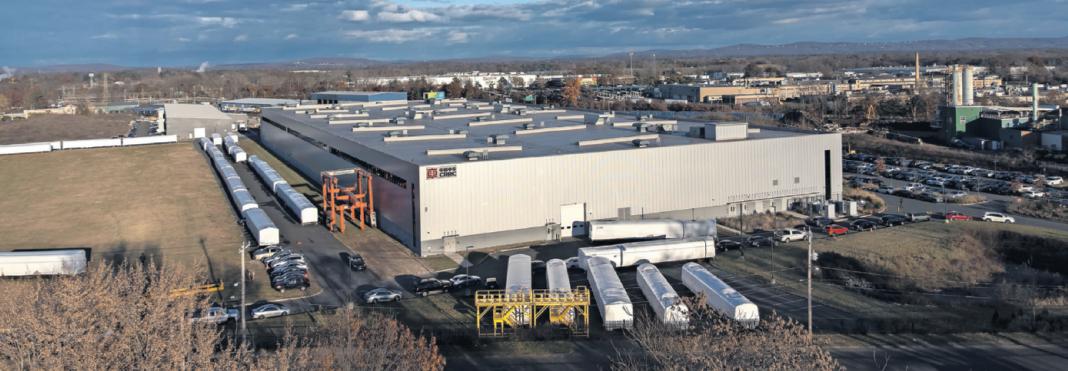
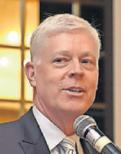
By Jeanette D eForge jdeforge@repub.com

two things.” One of the appeals to manufacturers is the easy access to highways in Western Mass. Housing, while not inexpensive, is far more affordable than it is in near Boston and the region’s variety of colleges makes it easier to find and train workers, Sullivan said. At the same time, challenges

Amherst and now lives in Northampton. He started doing drag several years ago. During the COVID-19 pandemic, Curran found himself watching a lot of “RuPaul’s Drag Race,” a reality TV show that follows competing drag queens.
“I just realized at that moment the amazing vehicle that drag can be for storytelling,” Curran said. “I saw it as a huge golden opportunity of storytelling that I really wanted to sink my claws into and see what comes out of it,” he said. Some of his skits are overtly political, like one criticizing George W. Bush. Others are about the world ending or Magnolia playing a pirate. Curran describes them all as theatrical. Magnolia masquerades as different characters, he
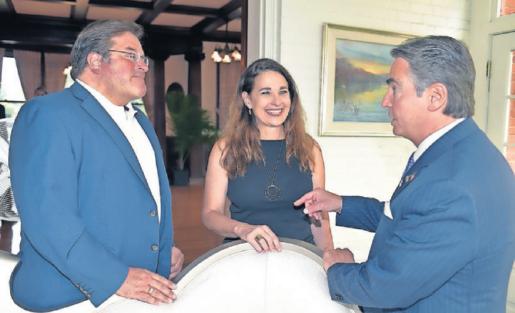

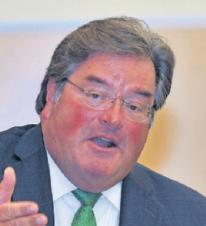
IN THE 2006 MOVIE, “Rocky Balboa,” Rocky advises: “It ain’t about how hard you get hit, it’s about how hard you can get hit and keep moving.” That’s what we do here in Western Massachusetts. No matter how hard we get hit, we keep getting up and staying in the fight. It’s in our DNA, our history. Shays’ Rebellion. COVID. Economic downturns that take longer for us to bounce back from than it does Boston. When the federal government closed the Springfield
Established in 1825, Liberty Bank is one of the oldest and largest mutual banks in the country. Our Massachusetts teams are experienced bankers with a strong commitment to working closely with customers to support their banking and lending needs.

With nearly $8 billion in assets and 200 years of service, Liberty Bank offers consumer and commercial banking, treasury management, home mortgages, business loans, insurance and investment services. Liberty maintains a longstanding commitment to superior personal service and unparalleled community involvement.
Come see us at 94 Shaker Road, East Longmeadow or visit liberty-bank.com/Springfield to contact a local commercial lender.


Darby O’Brien

HEY, SO AROUND FIVE years ago, right at the start of the COVID lockdown, I started sending out an off-the-cuff email every Friday to a list of friends and clients. I called it “Keep Your Dukes Up” because I wanted it to be upbeat and optimistic at a time when everything was going whacknuts. I didn’t think that I’d still
be writing them today, but every week I look forward to the back and forth I have with the people who read it. It’s unusual to get an email from an ad guy who’s not trying to sell you anything. But I think the main reason these ditties connect with the people who keep reading them every week is that there’s a real human being on the other end of the line. Whether you know it or not, most of what appears in your email box is generated by AI,
New $5.16B housing law ignites boom in mother-in-law apts.
By Staasi H eropoulos
Special to The Republican
The phone at Chapdelaine Builders in East Longmeadow hasn’t stopped ringing since Gov. Maura Healey signed legislation trying to tackle the rising cost of housing.
“We are seeing people who want to build in-law apartments as our primary phone call on a daily basis. It just amazes me how things are changing. It’s incredible,” said R.J. Chapdelaine, president of Chapdelaine Builders.
The Affordable Homes Act, which recently went into effect, is designed to “support the production, preservation and rehabilitation of more than 65,000 homes statewide over the next five years,” according to a statement from the governor’s office.
Healey is trying to unleash a homebuilding boom that will address what lawmakers and others in the industry are calling a housing crisis nationwide and in the commonwealth.
The legislation authorizes $5.16 billion in spending over the next five years and creates 49 policy initiatives to counter rising housing costs caused by high demand and limited supply, according to the governor.
One of those new policies sets uniform zoning regulations across the state, making it easier for people to build accessory dwelling units on single-family lots. Often referred to as “mother-in-law apartments,” these can be basement or attic conversions, an addition to a home or a separate building altogether.
Homeowners are allowed to build without needing a special permit or variance, unless they want to add more than one.
Construction is still subject to local building codes.
“This law supersedes towns and their bylaws and permitting processes. In a lot of towns, you cannot, by zoning regulations, have more than one family in a house or more than one dwelling on the same property. This new law helps people get over that hurdle,” said Andrew Crane, executive director of the Home Builders and Remodelers Association of Western Massachusetts. It all adds up
The demand for in-law apartments already was high even before Healey signed the measure. Parents are increasingly moving in with their children, so families can share expenses and live together.
Bryan Adams is working with Chapdelaine to build a 1,000-square-foot addition to his home in Longmeadow. His in-laws will be moving in, joining Adams and his wife, along with their two young daughters.
“They wanted to be closer to family, and they are looking to retire. As they continue to get older, we want to be able to provide medical care they may need in the future,” he said.
“Home maintenance was also a tough problem on their existing house. We will have one home to care for. It simplifies life,” he said. Sergiy Suprunchuk owns


Alliance Home Improvement in Chicopee and has been a residential builder in Greater Springfield for 18 years. He said with the rising costs of building or buying homes, it’s much cheaper to add an apartment onto an existing home.
“A lot of people are trying to save money by building additions,” he said. “It’s much easier than building a completely new house, because you already have things like utilities and plumbing. You don’t have the added cost of doing everything from scratch. That can be expensive,” said Suprunchuk.
Greater and grander
Many couples had been adding small bedrooms and half bathrooms to their homes when their babies were born and families grew. But with parents moving in, the additions are growing larger, more expensive and now include kitchens, bigger living rooms, more than one bedroom and full bathrooms.
“What we’re seeing is parents that can’t sell their houses and buy something smaller,
not a real person. Even a lot of the actual voices you hear in radio and TV spots now are AI-generated. Now, I ain’t the smartest guy on the block. It took me six years at five different schools to earn my high school diploma. But I know how to tell a story with some humor and heart. AI ain’t got no soul, kiddo. AI is doing lots of great things in science, medicine, tech and lots of other fields. But when it comes to real cre-
ativity, which is what good advertising is all about, AI ain’t got it. Not yet, anyway. Sure, we use it sometimes for boilerplate content and research and basic design things, and once in a while as a joke, we’ll ask it to come up with a headline or a compelling piece of copy. It strikes out every time. What it comes down to is this: If you want generic content, use AI. If you want engaging storytelling, use a
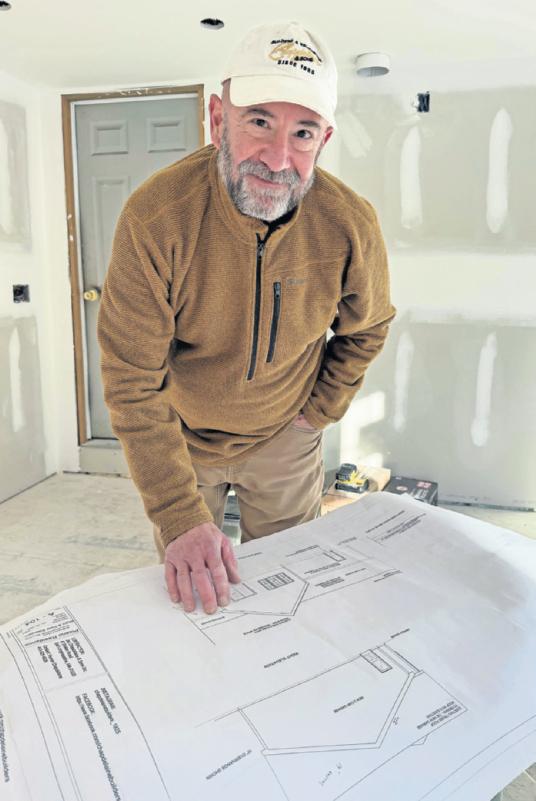
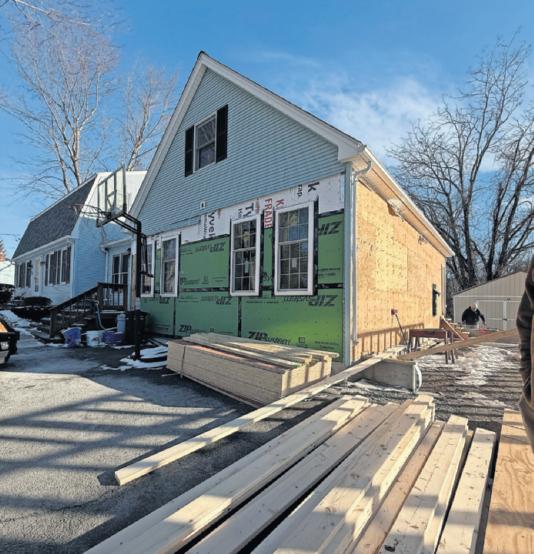
because the smaller houses are getting gobbled up and pricing higher under multiple bids. At that point, they want to save a few dollars and move in with their children,” said Chapdelaine.
in the same home.
There are many ways two families living under the same roof can consolidate expenses, including sharing the cost of utilities, along with buying and splitting food in bulk.
R.J. Chapdelaine, a local builder, is pictured above. At left, above, the inside of a home addition under construction in Longmeadow and at left,
“What we’re seeing is parents that can’t
Peter Ruffini, immediate past president of the Realtor Association of Pioneer Valley, said the law should reignite homebuilding.
“We’re going to see more of that, because there is a need. As people age, many don’t want to go into retirement communities. They may want to have that security of living with one of their children,” he said.
regulations, cities and towns might elect to have less stringent rules than the law mandates. While the legislation looks to the future of homebuilding, Chapdelaine said it harkens back to a time when families lived together to survive.
“When the settlers came here, they would buy a tract of land. All the kids would live on the property and would help maintain a farm or family business. It was a way to have the help you needed,” he said.
“Now, it’s less about helping the farm,” he said. “It’s about kids and parents getting over a financial hump together.”

Even though Adams’ in-laws live only 20 minutes away in Springfield, going to their home and helping with something simple can become a long trip and an involved task, which becomes simpler if they are all
Living together also reduces child care expenses, because caretakers are a shared door away.
“If my wife and I want to go out, we can leave the children home with them,” said Adams.



“We suffer from not building enough in Massachusetts. One way to loosen up inventory is to have people build these units. That frees them up to sell the property they’re currently occupying,” he added.
While the Affordable Homes Act sets uniform, maximum
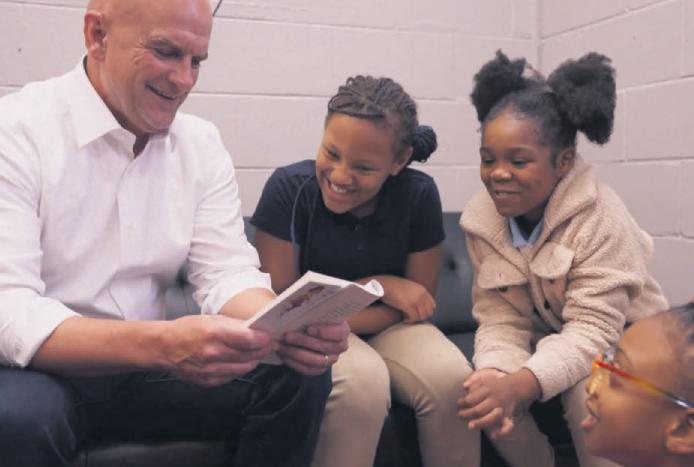
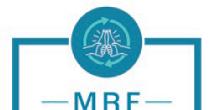

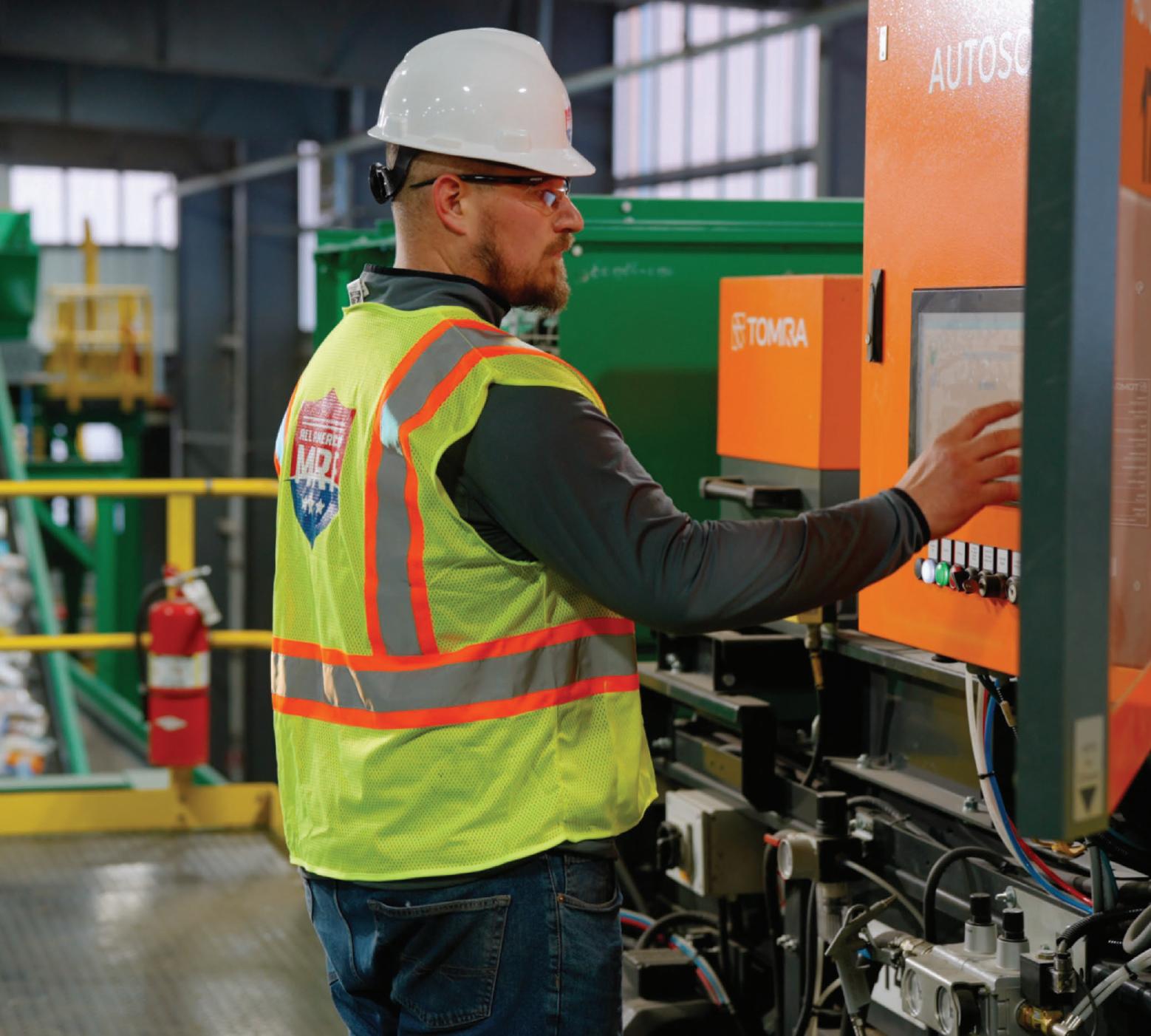
For over 50 years, we’ve been working to make sure your recyclable materials are just that – recycled.
At USA, our commitment to innovation has driven us to develop one of the largest and most advanced material recover y facilities in the countr y Powered by ar tificial intelligence and state -of-the -ar t scanning technology, this award-winning system has been designed to recycle more quickly, cleanly and efficiently than ever before.
This means our customers can now recycle items such as “black plastics,” cold cups and lids , yogur t containers , and all #5 pac kaging, w hic h are considered non- rec yc lable, or t rash, a t most rec yc ling f acilit ies in t he count r y. usarecycle .com

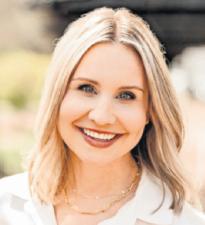
Emily Leonczyk
AS WE STEP INTO 2025, I’ve been reflecting on the profound changes reshaping the workplace — and how The Markens Group (TMG) continues to adapt and thrive in this landscape. One of my most-used phrases this past year has been, “Let’s pilot that idea!”
From our headquarters in Springfield to the associations we serve across industries worldwide, we’ve felt the ripple effects of societal, technological, and economic shifts.
At TMG, we’re not just responding to change; we’re leading it.
One of the things I love most about our work as an association management company is the chance to connect with, learn about and impact people across different industries.
Certain challenges unite us all.
Integrating rapidly evolving technologies, developing leadership skills that bridge generations and creating cultures where the next generation — who value balance and purpose differently — can thrive are themes we see time and time again.
Organizations that succeed focus on their people — their stories, their challenges, and their successes.
We believe thriving workplaces don’t just adapt to change; they embrace it by putting people at the center. This belief shapes everything we do, whether it’s helping clients navigate new demands or responding to the needs of our own growing and changing team.
Organizations that succeed focus on their people — their stories, their challenges, and their successes. Innovation and resilience don’t just come from strategies or systems; they come from the hard work, creativity and dedication of the people driving them forward.
Shifting landscape
We all feel it: the workplace is transforming at an unprecedented pace. Hybrid work models, generational shifts and rapidly emerging technologies are redefining how we collaborate, lead and deliver results. The old adage “change or die” couldn’t feel more relevant.
We’ve leaned into this reality. We do this knowing that growth comes from a commitment to asking questions, learning from one another, having hard conversations, analyzing data and adapting quickly.
As our founder, Ben Markens, always says, “We’re in the people business.” By focusing on people, we’re not just preparing organizations for the future, we’re helping them build industries where innovation and individuals thrive.
Managing change
We ask questions, listen closely, dig deep to identify root causes and strive to find balanced solutions. Since COVID, we’ve embraced hybrid work while staying true to the importance of community and collaboration. Being in-person most of the time
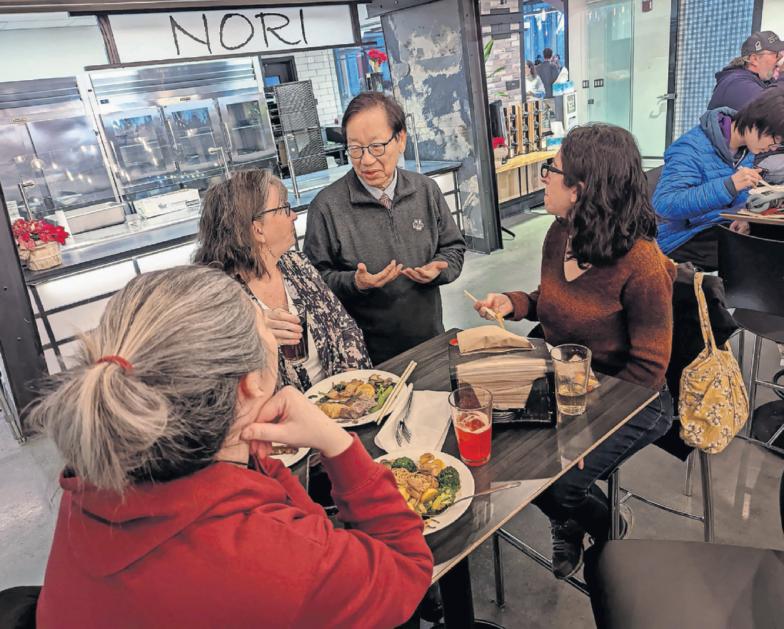

By M ichael C arolan
Special to The Republican
Breaks at work are precious, and many of us will waste that time driving to get something to eat.
Some Pioneer Valley employees we spoke with, however, enjoy getting a bite to eat next to, or even within, their places of employment.
Tower Square, at 1500 Main St., is in the heart of downtown Springfield, with its 1.6 million square feet of retail, office and hotel space. That’s including 180,000 square feet of retail space and, most important to some, Citywalk Cafes food court.
It’s where Westfield resident Leah Thivierge likes to take her work lunch break, at Le Greque, a 43-year-old restaurant and mainstay. Its Greek offerings include gyros, grape leaves and homemade baklava.
“I used to work in areas that didn’t have a lot of restaurants,” Thivierge said. “It’s so nice to not have to worry about it. Especially if I just don’t feel like packing a lunch that morning.”
Thivierge works for O’Reilly, Talbot and Okun Engineering Associates, an engineering and environmental consultant group in downtown Springfield. “I just go to a handful of places within like a 10-minute walk,” she said. “And this is one special place, Tower Square.”
Tower Pizza is a Puerto Rican-owned spot that serves pizza, sandwiches, calzones and Latino fusion cuisine. There’s Revitalize Superfoods in the Citywalk Cafes and Iona’s Kitchen — American food with a Southern twist—and Jen’s Organics. There’s also a Hot Table and the Springfield Wine Exchange. Hope Button, also from Westfield, agrees that eating near work is a plus.
“I like Fantastico, which is good if you want to get a burger or a sandwich or a salad or something. ... I also love Punjabi Tadka, the Indian place down the street,” Button said. Punjabi Tadka has been serving authentic North Indian cuisine since 1990.
A short walk away is the South End Market, at 73 State St., in the MGM Casino with five unique offerings for visitors and employees alike — Bill’s Diner, Wicked Noodles, Gelato, Jack’s Lobster Shack, Macho Taco and Flights, for cocktails.
For employees who dine where they work, there’s one place in the Pioneer Valley like no other: the University of Massachusetts Amherst.
“I sometimes call UMass my personal chef,” said
These lucky WMass workers don’t have to go far to get food on their lunch breaks
Betsy Cracco, assistant vice chancellor for campus life and well-being. “That’s because there’s a cafe in my building where I work.”
UMass Dining serves 50,000 plates to students and employees every day.
“I really have to discipline myself to not go grocery shopping,” so I can eat at UMass Dining, Cracco said. “It’s always things that are healthy and fresh and good for you.”
Cracco was visited by cousins who brought their daughters to tour local schools.
“I hear this from a lot of employees,” she said. “That if someone is entertaining family, among the highlights for guests is UMass Dining.”
“That’s definitely a point of pride and a really fun thing to do with people,” she said. “I work here, and they have great food, and I can bring people to share it with.”
About 3,500 faculty and staff members are “eating with us at one of our locations every day,” said Garett DiStefano, UMass director of
residential and retail dining services. With four main dining halls and more than 30 cafes and markets, many are open 7 a.m. to midnight, seven days a week, DiStefano said.
University dining offers anywhere from 10 to 15 cuisines daily — from Latin to Middle Eastern to Southeast Asian to Indian to Mediterranean to Southern comfort food.
Then there’s holidays and seasons, such as the Lunar New Year, a celebration in China, Korea, Vietnam and other Asian countries; Ramadan, or the fasting, prayer and community celebrated by Muslims worldwide. There’s also Diwali, the Hindu festival of lights. All have special chefs and cuisine offerings for employees and students, DiStefano said.
“We’re moving into Black History Month,” DiStefano said. “We have chefs who have some great recipes and are focusing in on some of the African diaspora.”

“We’ve seen an uptick in the aggressiveness of some of these individuals and that’s really one of the main reasons why we don’t want this kind of behavior in our stores.”

COLIN D’AMOUR, SENIOR DIRECTOR OF ASSET PROTECTION FOR BIG Y
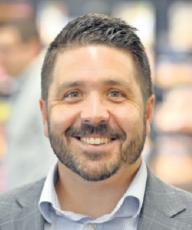

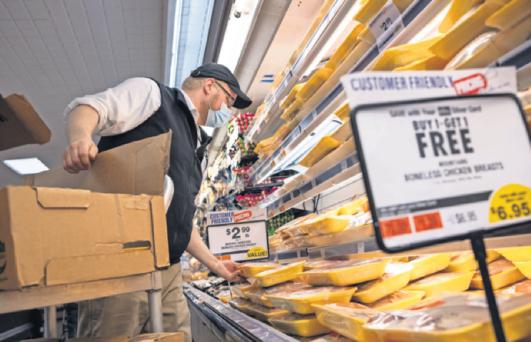
By L ori Stabile
Special to The Republican SPRINGFIELD — With shoplifting on the rise nationally since the pandemic, local grocery retailer Big Y Foods Inc. is taking steps to protect its stores from theft.
Big Y has its own investigators assigned to combat the problem, which ranges from shoplifters who hide items like meat and health products in their clothes or backpacks, to organized retail crime syndicates who plot detailed store thefts with the intention of reselling the items on the internet.
As Big Y’s senior director of asset protection, Colin D’Amour’s job is to keep employees and customers safe, along with focusing on loss prevention and theft prevention.
D’Amour has worked in the family business for about a decade, spending most of his time in operations, where he


was a store director, assistant store director and oversaw the gas and convenience division. His grandfather Gerald and great-uncle Paul founded Big Y in 1936. Today, the chain has operations in Massachusetts and Connecticut, with 75 supermarkets, 17 Big Y Express gas stations, a Table & Vine Fine Wines and Liquors flagship store in West Springfield and small-format market in Tower Square in Springfield. It has approximately 10,000 employees.
D’Amour did not want to reveal too many details about its in-house strategies to stop theft, but did say the company has investigators who may work with local law enforcement agencies and, sometimes, with other grocery stores and retailers to identify culprits.
Retailers who participated in a survey last year by the National Retail Federation reported a 93% increase in the average number of shoplifting incidents per year in 2023 compared with 2019. The

‘Waiting workforce’ able to do more than fill labor gaps
HE HAMPDEN COUNTY
TSheriff’s Office provides incarcerated individuals with the ability to learn vocational, educational and workplace skills while “on the inside.”
These are the faces of the “waiting workforce.”
This waiting workforce (a term coined by JPMorgan Chase) represents an opportunity for Massachusetts employers. Members of the Western Massachusetts Economic Development Council and Springfield WORKS report a chronic need for more skilled workers. Over three in four businesses reported difficulty recruiting for full-time regular positions, while nearly half have had difficulties retaining full-time regular employees, restricting business growth.
Two community-based programs in the sheriff’s office, the All Inclusive Support Services and the Workforce Initiative, are holistic bridges that support the positive momentum begun during incarceration and assist individuals in the reentry process. Both of these enterprises have provided employment connections, resourc-
es and retention to both employers and justice-involved job seekers for decades.
In Massachusetts, the workforce waiting on the outside numbers 672,000 people. They are eligible to have their criminal records sealed and could significantly help to fill the labor supply gap.
Generally, eligibility includes misdemeanors after three years and qualifying felonies after seven years. (Certain serious felonies can never be sealed.) The stigma of having a CORI is very often a significant barrier to employment, as this person’s comment reflects: “I’m ready to use my skills but, it’s been difficult to find employment, especially while having a record.”
While companies say they may be open to hiring people with criminal records, recent research shows that only 5% of managers said their company actively does so.
In 2022, the U.S. Rubber Recycling Company reported that while many companies had job vacancies, it did not. The company runs a hiring program for formerly incarcerated people who make up 50% of its
workforce, providing much-needed skills. Research shows that many formerly incarcerated individuals feel a strong sense of appreciation for being given a second chance at employment, leading to increased loyalty towards their employer (“Jail to Jobs” report, 2023).
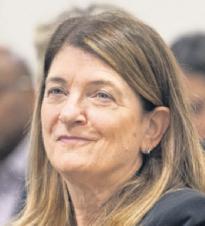

U.S. Rubber has said these workers are productive and loyal and have been “an important part of the success of our company.”
Funding from the Massachusetts Executive Office of Economic Development makes it possible for the Sheriff’s Workforce Initiative to develop job ready workers. The WMass EDC and Springfield WORKS help employers who would benefit from this untapped talent. Springfield WORKS and its community partners are also working together to help prepare their clients for their journey to a career.
One participant told us: “I appre-
ciate all the support and help I received. The resources were a big help, and they were easy to access. I now feel like I can go out and find employment without feeling embarrassed of my past.”
Springfield WORKS launched an “economic mobility” initiative for justice-involved individuals in 2022 through the Community Empowerment and Reinvestment Program state grant to challenge the stigma of criminal histories.
Learning Communities of Practice (LCOP), a core principle of the grant program, was used throughout the project. Workers had an equal voice in all activities, sharing real life barriers to employment and working directly with employers and community staff.
In tandem, the sheriff’s office launched a workforce initiative to offer opportunities to all unemployed people, targeting disenfranchised
job-seekers, those who are justice-involved and people who are homeless. The focus is to meet employer needs; job searchers achieving self-sufficiency through full-time employment.
After involvement with the grant program, one employer said this: “What I heard really resonated with me. I’m listening to people talk from their hearts and minds about how to break down silos and create systems change. Now we need to expand our reach.”
Another expressed a hope that this movement could get on the agenda of more companies.
This year, the program seeks to reach more employers and move toward providing fair, “second chance” hiring in Western Massachusetts. We invite you to join us in the movement to examine policies and practices to open up pathways to meaningful work.
Anne Kandilis is director of Springfield WORKS/Working Cities Challenge Western Mass Economic Development Council. Contact a.kandilis@ springfieldworks.net or dan.moran@ sdh.state.ma.us to learn more about how to participate.

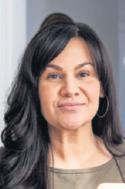

LIKE ANYTHING else, the answers to questions regarding the behavior of our regional workforce depend on the person being asked. Too often, responses include, “They don’t want to work,” or a comment related to entitlement.
These generalizations have resulted in little progress toward a solution and contempt for all sides. We offer that in a time when existential questions are prevalent, a closer look at the human condition deserves consideration.
Dr. Arline T. Geronimus at the University of Michigan
TIKTOK-STYLE
Adance video created by associates that helped us win The Best of West Hartford award. Enterprise-wide town meetings using Zoom to present the latest strategies to all associates at once.
A video podcast series where senior leadership provides advice, discusses their own career paths, and breaks down initiatives that will affect those in their departments. Yes, corporate culture and communication have improved at PeoplesBank simply because we care — well, C-A-R-E. PeoplesBank always has taken great pride, and long boasted about, our strong corporate culture. However, while this “culture” was often recognized and praised, it was never really explicitly defined. We began to wonder — what are the essential ingredients of a great culture, and how do we ensure that it not only is recognized, but can be sustained and strengthened as associates inevitably leave and join our organization?
So we did what great organizations do — seek input, perspectives and suggestions from our own associates, from all levels of the organization, from the CEO to part-time entry-level roles, and from those who have been with us for decades and those just joining. We asked questions about expectations, instances of great service (delivered or received), and how we could identify, document and then evangelize around the principles of delivering a great service culture.
The result was our CARE program, which is an acronym for these underlying principles that we believe are the essential ingredients of our culture.
* C for collaboration
* A for accountability
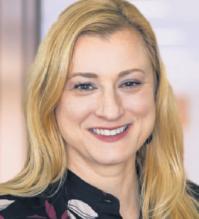

* R for reliability * E for empathy (perhaps the most important ingredient of all).
CARE was a result of sifting through hundreds and hundreds of responses. We didn’t go into the exercise with a set destination, but we discovered that the answers started to group together along four common themes, and those themes are now the central pillars of our CARE standards. We supported the pillars with specific actions, so we could see CARE in action and hold each other accountable to show that we care. Some of those action items are as simple as showing up to a meeting on time or setting out-of-office reminders. Committing to the culture starts with little actions and builds into fostering that community.
CARE operationalized can be seen in the engagement and empowerment of our associates, although not always expressed through our TikTok videos, a united corporate community in online town halls, and our “organically grown” leadership podcast series.
Living up to the principles of CARE is what makes our organization a “Best Place To Work,” and the positive internal feedback we have received validates this.
Amy Roberts is the executive vice president, chief administrative officer and chief human resources officer for PeoplesBank. She has a bachelor of arts degree in communications from Bridgewater State University and a master’s degree in human resource development from American International College.

coined the term “weathering” to describe the “repeated or sustained activation of the physiological stress response over years and eventually decades. This means a person’s health and life expectancy depends more on their ex-
periences, their interactions with others, and the physical environment they live in than on their DNA signature or lifestyle.” This response is biological and compounding. Geronimus argues, “No matter how hard poor, working class, racially or culturally sidelined people work or play by the rules, they are subjected to weathering.”
This begs the question: Does the work environment contribute to weathering or mental health risk factors, like languishing? If the answer is yes, and the fostering of belonging and well-being is not
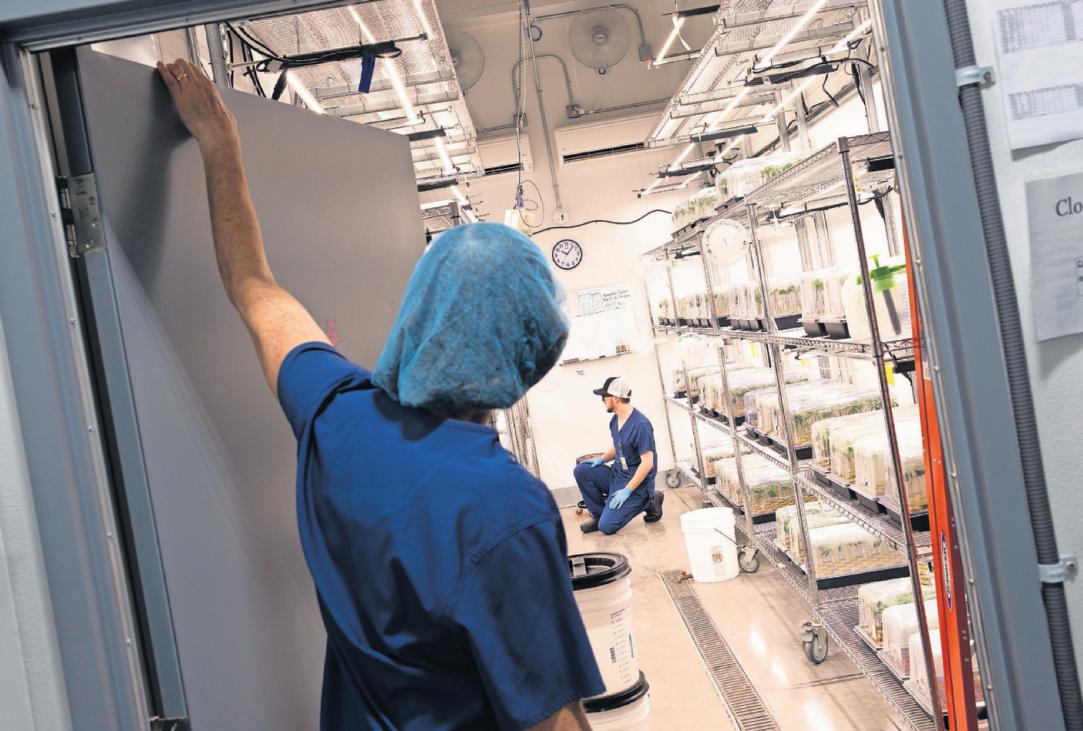
By L iam Mc L oughlin Special to The Republican

It wasn’t too long ago in the commonwealth that if you were a cannabis grower or seller, you risked arrest, robbery or worse. Today, not so much. Since the legalization of medical cannabis in 2012 (and later recreational in Massachusetts in 2018), working within the industry has become a viable and respected career path for those interested in it. According to a report
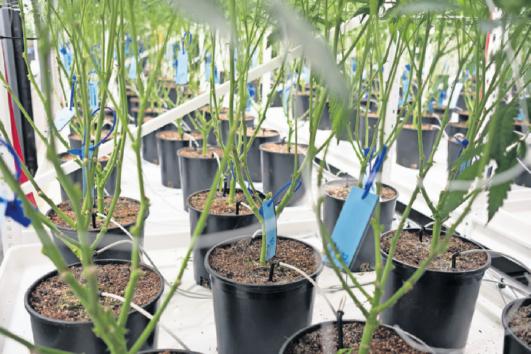
popularity and have become a way for job applicants to set themselves apart from their competition.
“Education makes a big difference to students’ employability, because the combination of theory and hands-on practice ensures a solid preparation for work in the industry,” said Frank Schikor, the dean of science and business at Berkshire Community College.
“Education makes a big difference to students’ employability, because the combination of theory and hands-on practice ensures a solid preparation for work in the industry.”































Frank Schikor, dean of science and business, Berkshire Community College
released by the Cannabis Control Commission in early 2024, there have been 1,348 cannabis establishment licenses given to various businesses throughout the state. This number increased by 76 applicants from 2023.
The adult-use industry in
Massachusetts reached $1.6 billion in gross sales in 2024, which helped it surpass $7 billion in all-time sales, the CCC said in its end-of-year report.
Following such success, higher education programs around the state have gained
The college offers a cannabis industry certificate, which was first launched in 2019 and currently has about 20 enrolled students each semester. It’s designed to deliver the skills “to work professionally in the areas of cannabis cultivation, processing, preparation, retail and outreach.”
BCC first developed the program with Berkshire


Roots, a cannabis cultivator and retailer based in Western Massachusetts. The company regards itself as a “craftgrown cannabis” operation, as it’s involved in almost every stage of the cannabis life cycle, from seed to sale.
The business continues to be BCC’s “main educational collaborator,” and offers on-site practicums to teach students about three main components in cannabis commerce, namely plant cultivation, processing and retail.
Berkshire Roots first launched in 2018, focusing on medical cannabis sales, and next obtained its cultivation, product manufacturing, retail and transportation licenses. Its two-building headquarters is in Pittsfield, with cultivation facilities and labs, packaging operations and its dispensary, and it has a second dispensary in Boston.
Its grow operation is led by Senior Cultivation Director Dennis Gibbons and follows a strict process that results premium strains such as Congolese Kush, Blueberry Cookies and Orange Chemeleon.
Gibbons said that, instead of focusing on the “highest testing” strain — meaning the one with the highest content of THC, the plant’s psychoactive component — the company focuses on factors such as “leaf structure, leaf quantity, flower structure and branch angles,” which he believes can be more indicative of a quality strain.
Berkshire Roots’ second building was built in 2021, and is referred to as building “B.” It has three levels and is home to thousands of plants, spread across several rooms designated for certain stages of growth, including rooting, vegetation, flowering and trimming.
Plants are potted in perlite and coco soil, and spend weeks in each room under specific conditions. Cut-
ting-edge feeding and HVAC systems allow team members to physically or remotely set temperature, humidity, light intensity and wind speeds.
Once they reach maturity, plants are then flash frozen, trimmed and transformed into their final products.
Berkshire Roots sells a variety of retail and wholesale items, including flower, pre-rolls, vaporizers, edibles and more.
Part of this process includes a strict cleaning and sanitization workflow while the plants move through each stage of their lives. Every room is thoroughly washed from top to bottom, including walls and duct work.
“If you don’t clean, you’re going to be laden with problems,” Gibbons said, such as mold, mildew or an outbreak of bugs.
BCC students get an indepth and technical crash course in what it’s like to work in the cannabis industry, working in all aspects of the business.
“They come and do a 15hour rotation,” said Jenine Moro, director of human resources at Berkshire Roots.
“So they do five hours in cultivation, five hours in retail, five hours in production, and production could be the lab, the kitchen, packaging.”
She said it works for the company like ”a 15-hour interview.”
The BCC program has benefited Berkshire Roots as much as it’s benefited the students, Moro said, and has been a great way for the company to find qualified employees who understand and can adapt to the intricacies of their process.
She said that since the program’s inception, the company has hired 14 people from the BCC certificate program, who have gone on to work in all areas of the business.
Once you’re in, Berkshire Roots is known to reward its employees, touting that “83% of employees who are in management positions were promoted from within,” Moro said.
Ellen Brown, a cannabis educator, former teacher within the U.S. Air Force and founder of Green Path Training, agrees that education is increasingly necessary for industry professionals going forward.
“Education is paramount for a successful career in the cannabis industry,” Brown said. “In a growing industry, the sky’s the limit. Students take the knowledge they’ve acquired, and they apply it to their career goals.”
Under the auspices of Green Path Training, Brown has been providing cannabis education since 2015. She’s also partnered with a variety of colleges, including Middlesex and Holyoke Community colleges.
“Once I moved home to Massachusetts, I noticed there was a need for cannabis education,” Brown said. “Each person has a different set of skills, different passions and a different way in which they will contribute to the world.”
Through her online programming, Brown teaches students about numerous subjects within the cannabis industry — THC’s effect on the human body, compliance, customer communication and the crucial role the state plays in licensing — to prepare them for a career.
For HCC, which began developing its own training content shortly after statewide legalization, working with Brown and Green Path Training has enabled the school to provide workforce development services, which bolster the local economy.
Jeffrey Hayden, vice president of business and community services at HCC, said the program focuses on four key areas — cultivation, culinary, extraction and infusion, and customer service. HCC offers courses through its Cannabis Education Center, and provides certifications for cannabis cooking, subject mastery and dispensary operations.
“Our focus is trying to give long-term unemployed or
underemployed (people) the essential entry-level skills in order to get these jobs, retain these jobs, and then grow with the companies,” Hayden said.
According to Hayden, the program regularly serves about 15 students every semester and has successfully helped former students get jobs with organizations like Analytic Labs and Green Thumb Industries.
This number of students, however, is a smaller amount than those who showed initial interest in the early years of the industry. When the industry first sprang up, there were fewer jobs than were anticipated and limited options in terms of training, Hayden said.
When Moro joined Berkshire Roots almost five years ago, the business was in “massive growth mode,” and her first two years on the job consisted of “nonstop hiring.”
This is around the same time that the price of an eighth of an ounce of cannabis plummeted from around $45 to $20, which ultimately affected dispensaries and producers’ bottom lines.
But, this decline in initial enthusiasm has brought a bit more balance to the cannabis industry.
“I don’t see (workers) hopping from place to place as much as I did two years ago. I think people are settling in, and I don’t know if there’s just less job opportunity, but I think it’s more stabilized right now.”
While stability might be a benefit for cultivators and dispensaries, it might make it more challenging for applicants to break into the industry. Brown believes that the need for education now and in the future will continue to grow, and cannabis degrees will soon be offered by more colleges and institutions across the commonwealth and the nation.
“Well, I think if you’ve gone through a program like BCC, that already opens a door,” Moro said.
a priority, why would workers stay?
Some argue that applying the science of happiness, or the field of positive psychology, is an important addition to schools, workforce development programs, and workplaces to mitigate these effects of stressful life circumstances and help people flourish.
A Google search of the word “flourish” will inevitably introduce you to the work of Martin Seligman, the director of the Penn Positive Psychology Center and Zellerbach Family Professor of Psychology at the University of Pennsylvania. According to their website, “Positive Psychology is the scientific study of the factors that enable individuals and communities to thrive. The field is founded on the belief that people want to lead meaningful and fulfilling lives, to cultivate what is best within themselves, and to enhance their experiences of love, work and play.”
Although positive psychology is a relatively new field (“born” in the early 2000s to counter the negative and pathologizing focus of psychology), this work has recently been reaching broader audiences.
A mention of the words “positive psychology” during a spring 2024 community panel held to promote community and University of Massachusetts Amherst partnerships brought us together to discuss how these principles could be applied to workforce development.
Toward that end, a model of well-being initially developed by Seligman but applied to current workforce development programs is forthcoming.
The model, called PERMA-H, represents the six key elements of well-being: Positive emotions, En-
gagement, Relationships, Meaning, Accomplishment and Health. Each of these elements contributes to well-being, is pursued for its own sake, and can be defined and measured. Increases in these elements have been linked to improvements in mental and physical health and increased engagement in work and school settings. We are looking forward to our continued work together to understand the benefits of bringing together positive psychology and workforce development in Springfield this year. Stay tuned!
Vanessa Otero is the founder of Lavender Group LLC, a multifaceted company that aids with governmental relations and public affairs with an equity-based lens. She is a workforce development expert and consultant for the Pioneer Valley Planning Commission, and discovered positive psychology when seeking interventions grounded in scientific research to enhance the PVPC workforce development model. Sarah Fefer is a professor of school psychology at the University of Massachusetts Amherst College of Education. She was trained in positive psychology during her graduate studies. She and her SPLASH (Supportive Positive Learning Across Schools and Homes) research team from the University of Massachusetts Amherst College of Education have been working to introduce positive psychology to Springfield youth and families over the last several years, including with the Parent and Community Engagement Center, and now with a Springfield Empowerment Zone middle school, Springfield Prep Charter School and the Springfield Housing Authority. Her team is carrying out a federally funded research project focused on promoting well-being in middle school students by teaching specific positive activities in schools in Florida and Massachusetts.

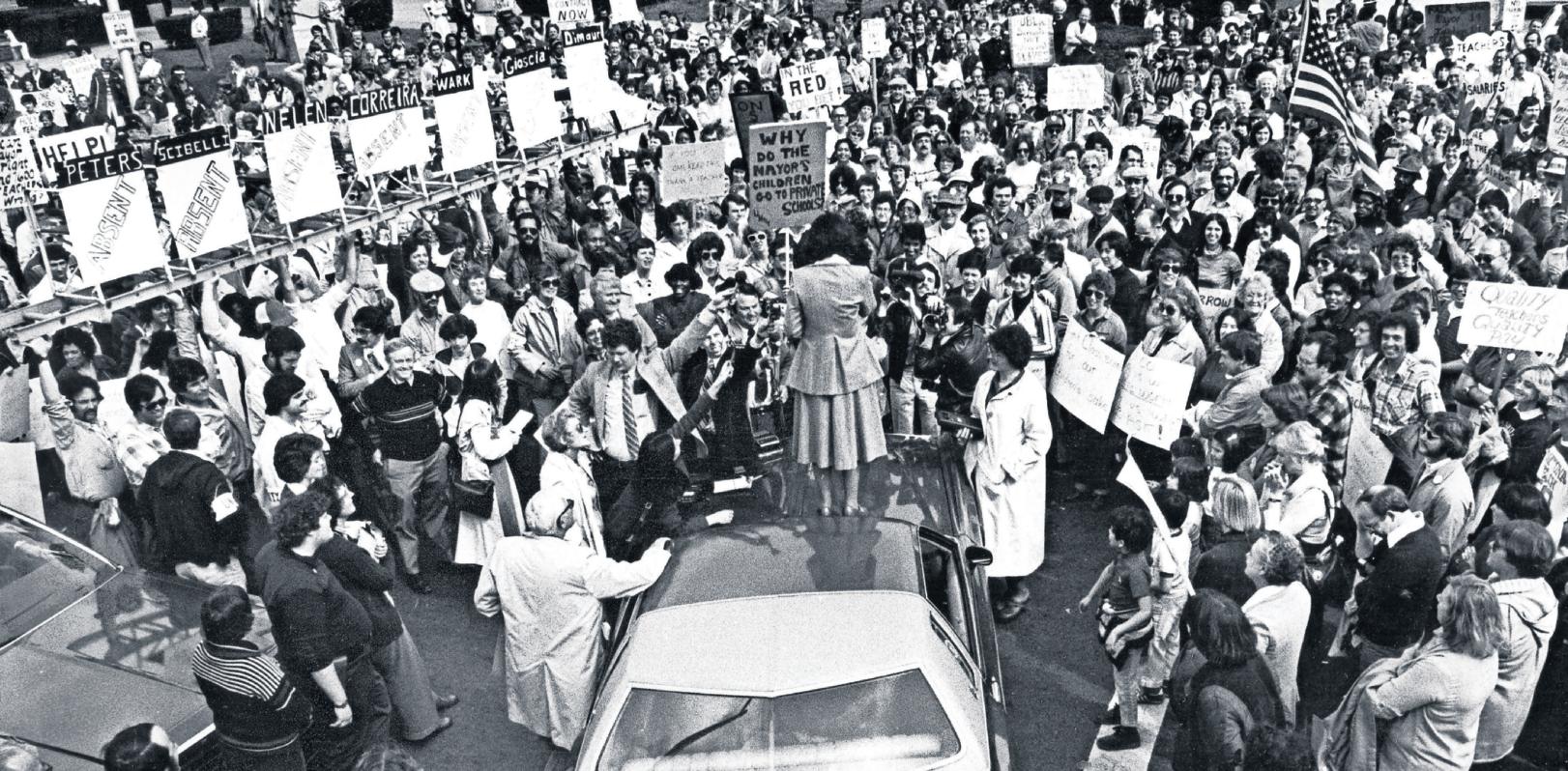
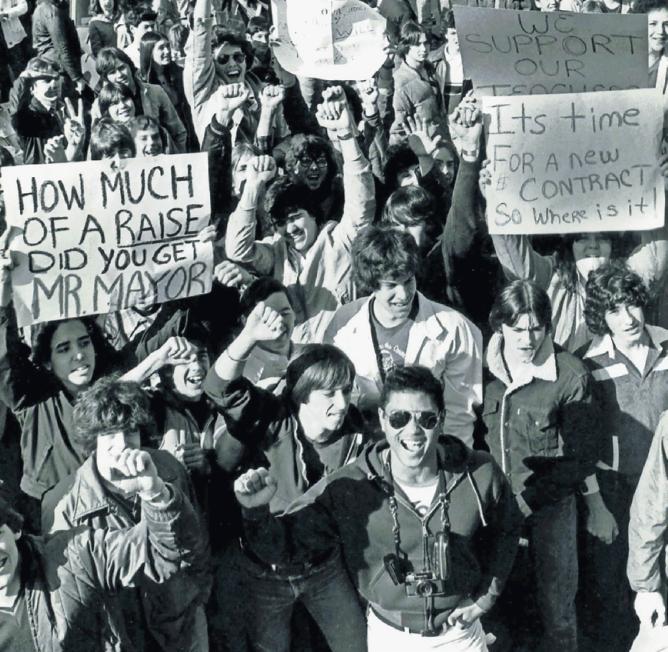
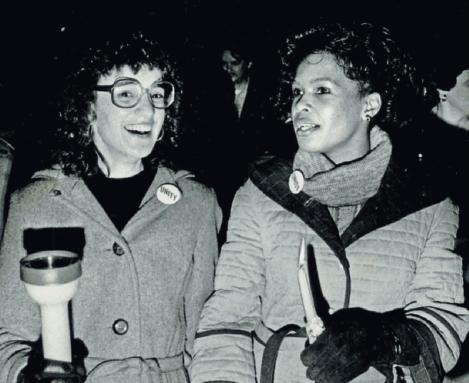
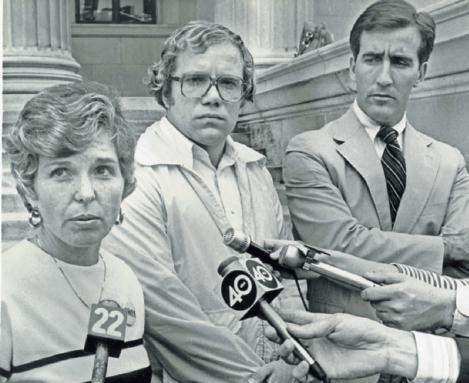
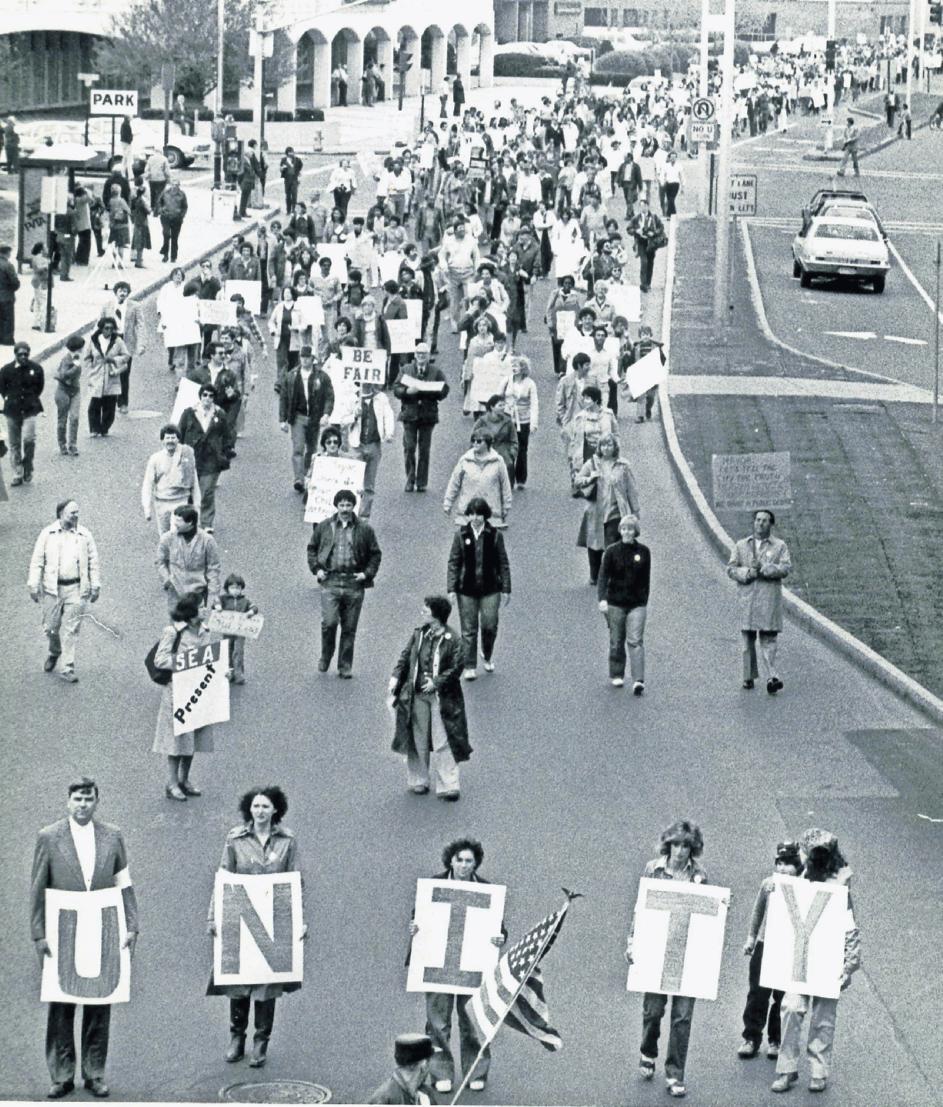
By Larry Parnass | LParnass@repub.com
‘Dear Mom,” the striking Springfield teacher scrawled on a placard. “I’m a teacher in Spfld. Please send $!”
Another teacher’s sign also invoked his mother, telling her he worked for “peanuts.”
Fed up with their workload, class sizes and pay, most of the city’s roughly 1,800 teachers refused to go to their classrooms on April 29, 1980, kicking off the first such strike in city history.

At 10 p.m. the night before, members of the Springfield Education Association voted 2-1 to strike, in defiance of a 1973 state law that barred work stoppages by municipal employees. The news caught Mayor Theodore E. Dimauro by surprise as he dined at Chez Josef in Agawam.
The battle was joined. The city’s 25,000 students were about to get a real-life lesson in politics and workplace democracy. Dimauro would call the strike “one of the most serious crises to face this city.”
As many as 27 teachers who refused a return-to-work order from Hampden Superior Court Judge John Murphy were jailed in makeshift quarters at the Monson Developmental Center. Others were fined.
Teacher strikes remain illegal in Massachusetts, but still happen, including a walkout in Newton early last year.
Rallies and parades took over downtown streets that spring in 1980, as former California Gov. Ronald Reagan prepared to receive the Republican Party’s nomination to challenge President Jimmy Carter.
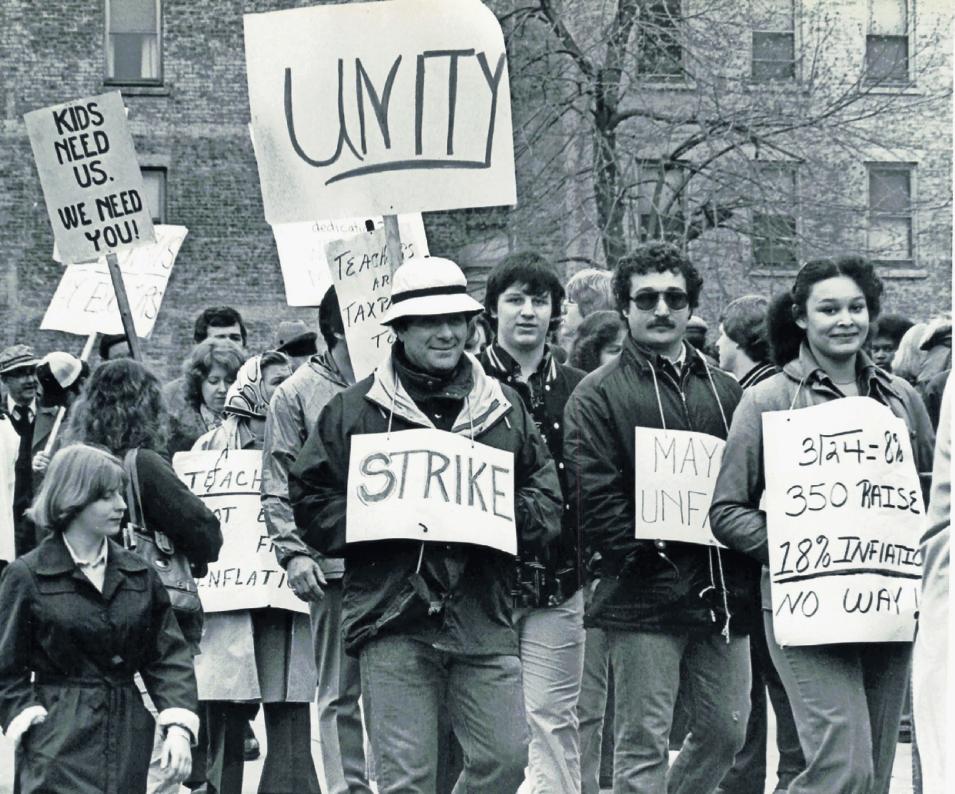

The word “UNITY” appeared on dozens of protesters’ signs. One striker turned it into an acronym, writing that it stood for a pledge: “Unless Negotiations Intensify Teachers Yield … Nothing.”
Marchers one day carried a ladder down Main Street holding empty chairs labeled with the names of the mayor and School Committee members.
Inside schools, relationships frayed. The relatively small number of teachers who remained at work, some of them saying they could not afford to go without paychecks, faced anger and censure.
The strikers' initial demands were ambitious. They sought pay increases totaling 26%, according to news coverage at the time, in a year when inflation was running at 13.5%. They wanted smaller classes, more time to prepare, seniority protection in times of layoffs and an end to a residency rule.
The word “UNITY” appeared on dozens of protesters’ signs. One striker turned it into an acronym, writing that it stood for a pledge: “Unless Negotiations Intensify Teachers Yield … Nothing.”
After 18 days, teachers voted to accept a contract offer that addressed some of their concerns about work conditions, but did not deliver the raises they wanted. In a vote at the Greek Cultural Center, SEA members accepted a 30-month contract that provided annual raises of between 6 and 6.6%, lifting the top of the scale salary to $21,980 a year. The deal included a $419 bonus.
In the end, the pay gains didn’t go much beyond what the city had first put on the table. But the union got promises that class sizes would be trimmed and elementary school teachers would get more time to prepare.
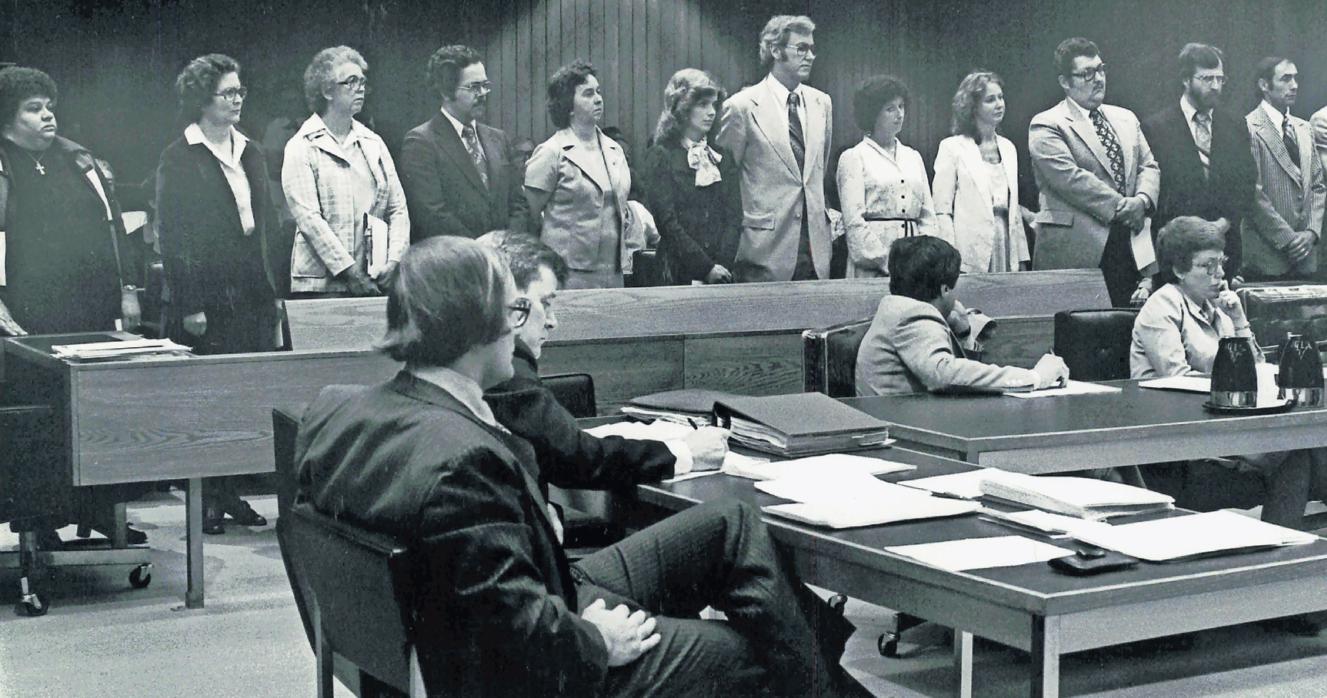
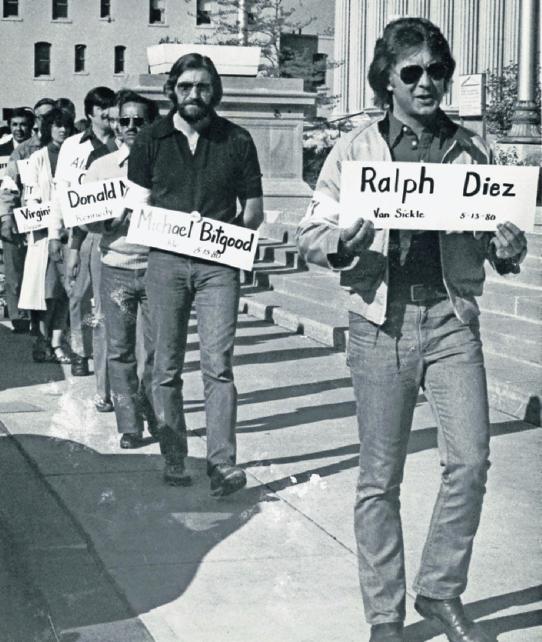
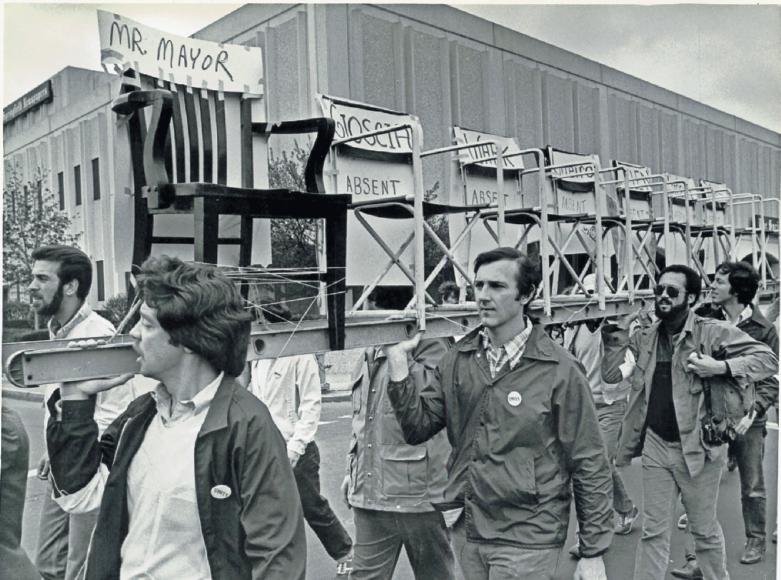
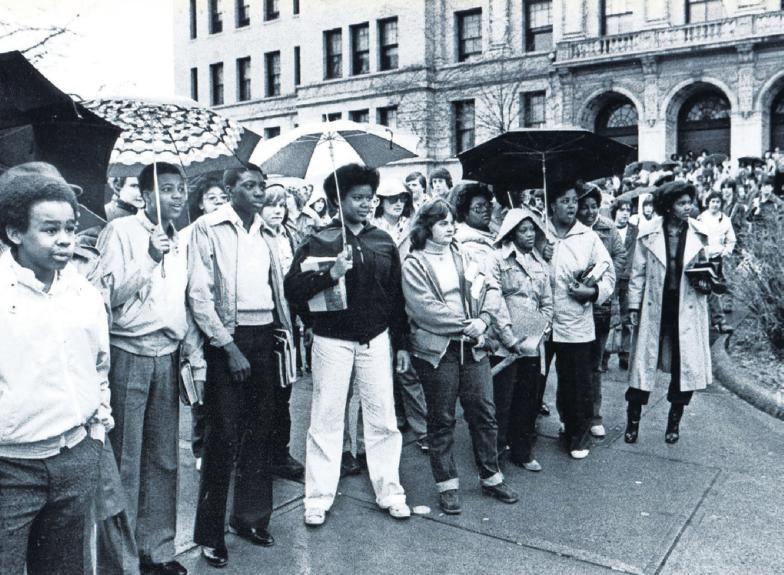
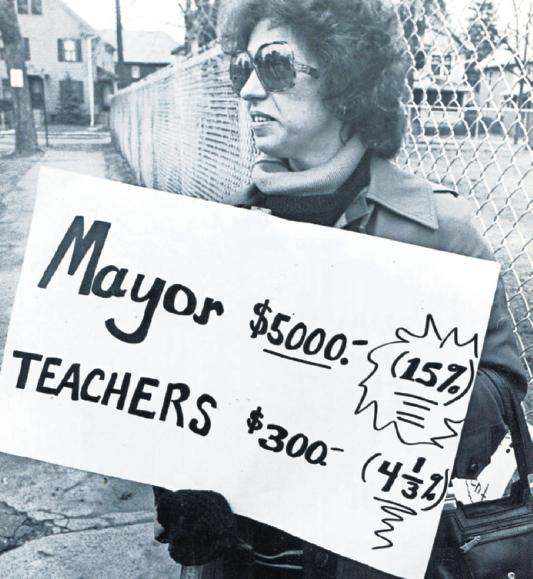
real human. I know there’s no way to defeat AI. It’s coming for all of us. They’ll tell you it’s about efficiency, but what they really mean is it’s about the buck. It’s like getting your products made in China. The more people do it, the harder it is to compete. Soon we’ll be paying a premium for a “Created by a Human” product the same way we do for “Made in America.”
When they asked my old buddy Jack Connors, founder of the ad agency Hill Holliday, about advertising today, he said most of it is bad, because creatives have been devalued. Why get a professional photographer? Just shoot it on your phone. Need voiceover on your TV spot? No one will notice if it’s a robot talking. At my agency, we’re fighting the good fight. We use real designers and voiceover artists and photographers/cinematographers. We write our own headlines
Armory in 1968, local leaders fought back by creating Springfield Technical Community College. They did it in a remarkable 17 days.
When the Legislature said no funding for a new Basketball Hall of Fame, and the hall might have moved elsewhere, local legislators, the community and businesspeople here said, “Yes,” winning the funding from Boston-centric Beacon Hill.
When Easthampton’s old Town Hall sat dormant and in disrepair, volunteers answered the call to create the vibrant economic engine and tourist attraction that is now CitySpace. The Eastern States Exposition. Internationally regarded CEO Gene Cassidy at the helm.
and come up with our own creative strategies. If we use AI once in a while, it’s only as a minor tool. But we swing the hammer, the hammer doesn’t swing us. There are lots of good signs out there that people are hungry for real human connection. The success of longform podcasts, the resurgence of things like vinyl records and old school technology. There’s a new print-only newspaper called County Highway that I’m a big fan of. In the ad game, there are more opportunities than ever to help our clients stand out with bold, original ideas in a sea of dull content. And there are goofballs like me out here trying to buck the system. If you want to get on the Friday email list, shoot me a message at darbyo@ darbyobrien.com. Keep your dukes up. For more than 40 years, Darby O’Brien’s gut instincts and outof-step creative strategies have led the tight-knit band of writers and designers at Darby O’Brien Advertising.
Indian Orchard. I’m proud of Eastman’s commitment to the communities and neighborhoods around the plant. Duc-Pac, a manufacturing plant that creates remarkably precise duct work, moved from East Longmeadow to Springfield. Thankfully, it did not relocate to a fairer climate, with lower taxes and cheaper energy costs. The company stayed. We were once home to many internationally known companies and brands. We still are. I love telling visiting clients about Rolls-Royces on the streets of Springfield, once built here, and the centuries-long economic impact of Washington’s Armory. Of the philanthropy of Walter Vincent Smith, of William Skinner who built Holyoke Hospital. Of Westfield’s Alan Furst. Too many to name. And their successors in the art of
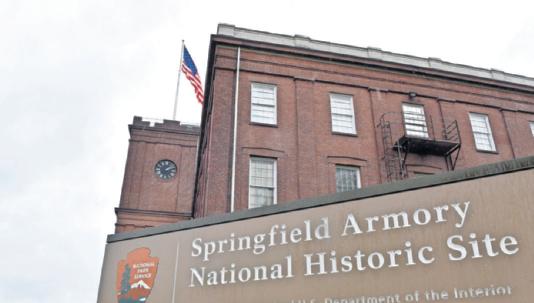
As Dr. Seuss’ Lorax said: “Unless someone like you cares a whole awful lot, nothing’s going to get better. It’s not.”
Watch for their next regional economic impact report. Like Westover Metropolitan Development Corp., mega benefits to all here.
And it gets done despite the challenges. We hear too often that Boston doesn’t care about us. MassLive.com journalist John Micek’s recent article in The Republican captured that sentiment perfectly, one I’ve heard in every campaign and read in every poll I’ve done here in four decades as a political consultant.
Now, national political agendas, the difficulty Beacon Hill has in recognizing there is a Massachusetts on this side of Interstate 495, combined with our competition with neighboring states, national and global interests, has many of our employers rethinking how we compete, how we survive.
It’s said the definition of insanity is to do the same thing over and again. As many of us prepare for both fresh challenges and the same-old challenges, it’s time to do something new. The same-old is not what my large corporate clients here are facing from our global competition, especially from China. And we’ve got governors from other states like Tennessee, South Carolina and Texas knocking on our doors saying: “Come on down.” And New Hampshire is in the hunt, too. We’ve got great success stories, evident in the articles throughout this edition of Outlook 2025. I’m proud of Eastman, an international player who puts Springfield on the global map with its plant in
Massachusetts faces include the difficulty of competing with southern states over the cost of power of doing business generally. The permitting process can also be more cumbersome, he said.
Chicopee has been able to attract manufacturing with its easy access to major highways, competitive electric rates and broadband internet run by Chicopee Electric Light. It is home to industrial land surrounding Westover Air Reserve Base, though the city in recent years has faced a new challenge, Vieau said.
“We are becoming land poor,” he said.
In recent years, Chicopee has brought in an electrical contractor business and a pharmaceutical manufacturer. It landed UFI, an established company that constructs building trusses that had been looking for room to expand, but is looking to do more even with less land available, Vieau said.
To help, the city is in the process of hiring an economic development director and grant writer for the first time in years. The position is designed for someone early in their career who will work with the mayor, city planner and community development director to find ways to attract new growth, especially in the medical and manufacturing fields, Vieau said.
Holyoke has also seen some of the same successes, most recently announcing Sublime Systems, a Somerville firm that manufactures low-carbon cement, to a vacant 16-acre site on Water Street.
“In Holyoke, our big thing is our energy prices,” said Aaron Vega, the city’s economic development director.
Not only does Holyoke Gas & Electric offer relatively lowcost electricity, about 90% of it is carbon free, generated through hydro power and solar. That has helped attract green technology firms. The city also boasts easy highway access, Vega said.
But like Chicopee, one of the challenges for Holyoke is finding open land. The city’s vacant mills have attracted cannabis growers, but many manufacturers aren’t that interested in them. Much of the open land involves brownfields and companies often don’t want to face the expense and complexities of an environmental cleanup, especially since grants for the work are limited and competitive, he said.
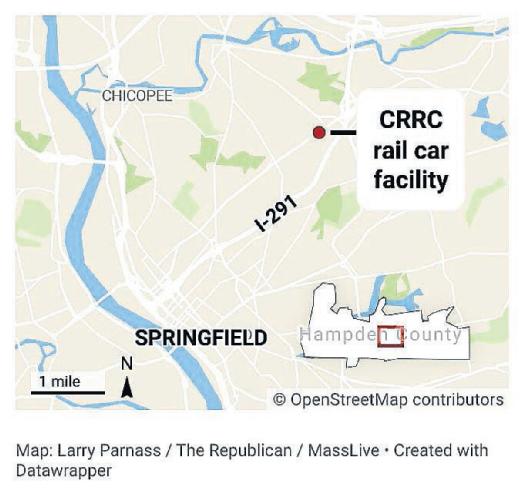
“Geographically, Springfield is a great location for manufacturing. If you can find a spot, we are willing to work with you.”
Tim Sheehan, chief development officer, Springfield
from precision manufacturing to casino gambling.
Sheehan noted last year’s announcement of a $31 million expansion of Performance Foods that will create an additional 350 jobs. While the city approved short-term tax break for the business, that was not the biggest reason company owners decided to expand rather than move.
“Typically a company wants to stay here because they are already invested in the region,” he said. “We start with a conversation about their needs, job training, providing financial incentives and even issues with traffic.”
human kindness, the Davises, the D’Amours, Grinspoons, Bolducs and Picknellys of our world who continue to give. And the community councils, neighborhood associations whose volunteers bring advocacy to the street level. Our economic, tourist and business associations, the multiple chambers of commerce, are wonderful and appreciated. As are the Western Massachusetts legislators who fight on Beacon Hill for what we deserve.
And those steadfast fellows, Neal and McGovern, who bring it home from Washington. Amen.
In this challenging new business climate, it will take them, and all of us, to survive and compete.
A friend from the South, a pastor, reminds me: “Don’t be lost when your time comes.” It is still our time here in Western Massachusetts. It is time though to find a new way of keeping businesses here and forging new economic opportunities.
But it takes you. Us. As Dr. Seuss’ Lorax said: “Unless someone like you cares a whole awful lot, nothing’s going to get better. It’s not.” Anthony Cignoli is the president of the A.L. Cignoli Co., an agency specializing in political, governmental and media consultations since 1992. He is also president of Anthony L. Cignoli Associates Inc. His clients have included Hilton Hotels, AT&T, Verizon, Hard Rock International, Ford and many more. He is also a veteran of over 400 political campaigns.
“All the empty vacant mill space isn’t conducive for manufacturing, it is better for residential,” he said.
While power rates are low, one of the challenges is that the commercial tax rate is one of the highest per $1,000 of valuation in the state.
“The tax rate is definitely a challenge,” Vega said, adding that the rate can be offset by the fact that property valuations in Holyoke tend to be lower than other communities.
“We can offer a TIF (tax incentive financing) but they go away in five to seven years,” he said.
Vega and Vieau said they welcome companies that show interest in their cities — and try to streamline the permitting process.
“I answer every email and phone call. It is key,” Vega said.
Vieau said sometimes his office will get requests from businesses looking for statistics about the city, such as its water and sewer rates and demographic information. When that happens, they respond as quickly as possible, knowing a company may be researching to find the right place to locate.
Vega and Timothy Sheehan, Springfield’s chief development officer, both cite the value local colleges, especially Springfield Technical Community and Holyoke Community, bring to attracting businesses. Both schools have added training programs tailored to the needs of businesses,
“In Holyoke, our big thing is our energy prices.”
AARON VEGA, ECONOMIC DEVELOPMENT DIRECTOR FOR THE CITY OF HOLYOKE
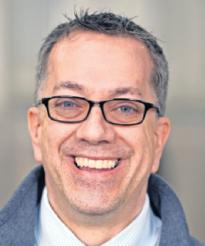

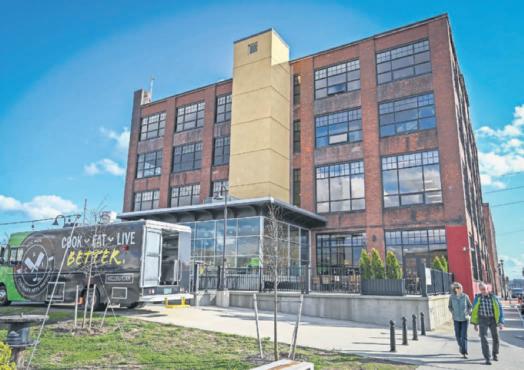
For example, when Smith and Wesson decided to subdivide its large property to create a small industrial park off Roosevelt Avenue, the city stepped in to build a road for the park, he said. Springfield has the same pluses and challenges that its neighbors to the north have when trying to attract businesses, including being land poor. Last year, when Vibra Hospital closed, the city jumped to acquire the 17 acres on State Street for future development. The deal is still in final negotiations.
“Geographically, Springfield is a great location for manufacturing. If you can find a spot, we are willing to work with you,” Sheehan said.
Creativity counts. For example, Sheehan said the city was able to help a developer take two pieces of land with existing structures and connect them to met the needs of a manufacturer.
“One of the challenges is looking at land you can bring back to service in a different way,” he said. But the city wants to do more than focus on large manufacturers such as CCRC, the rail car manufacturer that built a plant on a brownfields off Page Boulevard and created roughly 150 jobs.
“I think one of the important things is the scale of manufacturing you want to focus efforts on, the small independent manufacturing or the large ones,” Sheehan said. “There are far more opportunities with the small manufacturing.”
fosters shared learning and helps teach new workforce members the unspoken rules of business.
At the same time, some remote work gives our team the flexibility to focus and balance life’s demands. However, balance requires structure. We’ve learned that hybrid work thrives when guided by clear parameters.
We’re also guided by the EOS (Entrepreneurial Operating System), which provides us with a framework to make decisions and run our business. While we don’t execute it perfectly, it’s a tool we continuously adapt to keep us grounded in processes that align with our core values. EOS helps us maintain clarity, accountability and focus, ensuring we stay on track while still embracing the human side of leadership.
As part of this people-first
industry saw a 90% increase in dollar loss due to shoplifting during that same period.
Undercover employees trained to look for suspicious behavior, along with camera footage, are used to identify and foil attempts at theft. The company has a call center that serves as an emergency support system for its stores that is open 24 hours a day, seven days a week, 365 days a year. It monitors alarms within the stores, D’Amour said.
“We generally define theft as shoplifting and organized retail crime — ORC,” D’Amour said in a recent interview.
“We kind of loosely define theft as stealing items for personal consumption, pantry loading. ORC is stealing with the intent to resell products out there and ORC can be anything from a very, very sophisticated
philosophy, we have other policies like travel PTO to acknowledge the team members who go the extra mile — literally. For those who travel for business, we provide extra flexibility and time off to rest and recharge. It’s one of the ways we foster resilience and well-being, ensuring our team thrives personally and professionally. At the heart of it all is our commitment to communication, collaboration and living our fundamental values.
Helping clients
The changes we navigate internally mirror the challenges our clients face every day. What sets us apart is our ability to run associations like a business, bringing clarity and focus to areas such as strategic planning, succession planning, goal alignment and implementing practical, value-driven solutions that drive sustainable growth. Take Irene Costello, our director of operations. Her
leadership during one of our most complex conference seasons last fall exemplifies the impact of combining strong processes with people-first values. Irene ensured every detail was aligned, and every person involved not only knew their role but also understood their accountability, fostering clarity and ownership. At the same time, she ensured everyone felt supported, skillfully balancing foresight, adaptability, and genuine care.
Or take Lauren Zuber, our director of marketing, who has us laser-focused on key performance indicators. Lauren’s data-driven approach ensures we communicate what’s working, identify areas that need additional support and generate new ideas or analyses to keep things moving forward.
The heart: People As I reflect on the contributions of Irene, Lauren and my many other talented team-
“The vast majority of our customers are honest folks who enjoy the shopping experience in our stores.”
Colin D’Amour, senior director of asset protection for Big Y
large organization or just a few bad actors trying to steal something quickly that they think they can turn around quickly for a few dollars.”
The growth of the online marketplace has given thieves an immediate venue to sell stolen goods, he said. “Years ago, they had to find physical storefronts to push products through. Now, they have the internet, the Dark Web. A lot of these folks have a much bigger audience to readily sell these products to,”
D’Amour said. “We’ve seen an uptick in the aggressiveness of some of these individuals and that’s really one of the main reasons why we don’t want this kind of behavior in our stores. They’re often from out of the
area and not going to their local town store. They’re traveling throughout the two states we operate in.”
Eye in the sky
Here’s an example of a theft-related call that the Big Y loss prevention unit could receive: An employee will report seeing an individual who appeared not to pay for his products. Then, loss prevention will review video footage to try to identify other times the individual may have been in the store, and if they stole anything before.
They’ve seen shoplifters fill a shopping cart and run out the door. Other people stuff their reusable bags with items and pretend they paid for them.
mates, I’m reminded of my why — people and purpose. Everything we do comes back to this core belief: people are at the center of every success. Whether we’re helping associations prepare for a changing future, attracting the next generation of talent, adapting technology to stay relevant, fostering resilience within our own team, or giving back to the community, we’re showing every day that the future of work isn’t just about policies, frameworks, or technology. It’s about the people who drive them.
By blending structured processes with human connection, we’re creating workplaces and client partnerships where innovation thrives, challenges are met with purpose and people feel empowered to grow and succeed.
Emily Leonczyk, MBA, is executive vice president at The Markens Group. Reach her at emily@markens.com.
While D’Amour said no store is immune from theft, he said the ones that tend to get hit the hardest are along main road corridors, which allow culprits quick getaways.
Items that are frequently stolen include health and beauty products. That’s because they are relatively high-dollar items that are small and easy to conceal. Other targets are laundry detergents, energy drinks and meat, D’Amour said. Baby formula, once a popular shoplifter target, is kept in a secured area.
To help combat theft, Big Y uses special shelf sensors that alert management if multiple high-theft items are removed from a shelf. An example would be laundry detergent, which is something customers generally do not buy multiple units of at once, D’Amour said.
“Those are the kinds of things we use to try and be a little bit more proactive,” he said of the sensors. Internal theft exists, but


have an opportunity to kind of try different things that I wouldn’t do at restaurants.”
This includes Caribbean, South American, Louisiana Creole and cuisines from North Carolina, he said.
“Ricky Moore, out of North Carolina, will be here next week.” He is an award-winning and nationally known chef, like many that UMass Dining brings in.
Jeff Hescock is the UMass director of environmental health and safety, and he enjoys eating where he works.
He is a short walk from the dining commons and the Blue Wall, a restaurant in the campus center.
“They bring in chefs,” he said. “You know top-notch chefs for people to try their food. It’s amazing to work and eat at this place.”
“I would call myself pretty much a meat-and-potatoes type of person,” he said. “And what UMass Dining has done for me, personally, is that I
D’Amour said the vast majority of what the company deals with is external theft. There are control measures in stores to prevent internal theft, so when it does happen, managers can react quickly, he said.
Hundreds per day
The retailers surveyed by the National Retail Federation experienced an average of 177 shoplifting incidents per day in 2023, with that number reaching more than 1,000 depending on the retail sector.
The survey was conducted online with executives representing mid-size and large retailers across 164 retail brands, including apparel, entertainment, food and drug, general merchandise and home and garden.
D’Amour said organized retail crime is behind the increase in shoplifting. Big Y has seen “some very sophisticated cases over the years” with thieves coming from New York and

Hescock is among the 2,000 faculty and staff members with meal plans. He purchases the 25 credits, with two extra credits that never expire. “It’s such a good deal,” he said. “So you have it on your card, and then you can go whenever you want.”
“Being able to walk 50 feet to a world-class dining commons is amazing,” he said. “To me, the value, and why I like working at UMass so much, is just all the students and staff that are eating together. It’s just that connection that I feel like you don’t get at a different place, right?”
Twice a year, UMass Dining puts on a faculty-staff appreciation lunch.
“We celebrate the campus, and it’s a way that we also can kind of showcase what we’re doing,” DiStefano said. “But also, you know, the best thing we do is that we bring people together.”
New Jersey.
Theft is a direct financial loss to the company and isn’t covered by insurance. D’Amour said losses affect the bottom line and are reflected as expenses. To make up for loss, markets have to sell “threefold” the stolen product; the supermarket industry already operates with thin margins, D’Amour said. As crime evolves, so does technology, including ways to analyze and search data, and share that data with other retailers and law enforcement, D’Amour said. “We have a mindset toward the future — how to keep our employees safe and how do we become more proactive … how to make things better for our customers and employees and more difficult for some of the bad actors out there,” D’Amour said. “The vast majority of our customers are honest folks who enjoy the shopping experience in our stores.”





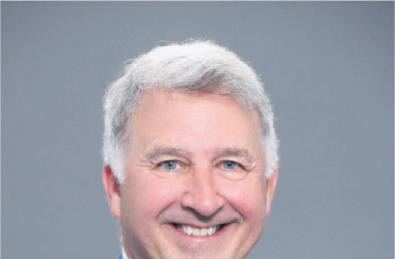
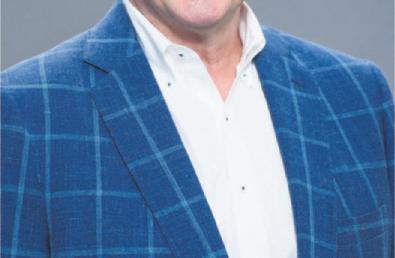






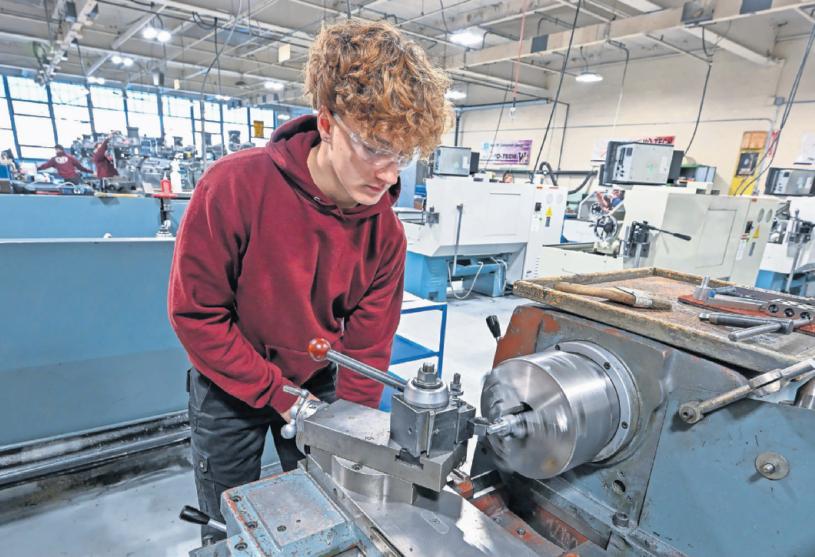
eryone is going to say that.”
him, from students making sprockets for bicycles to intricate metal peg-board games. The 3-D printer can make parts quickly — and even a do-ityourself model of a “Star Wars” all-terrain walker.
What’s also amazing, said Ron Nadeau, lead instructor of the manufacturing technology program, is that all the students in the program advance into paid co-op employment by the summer after their junior year.
Employers trip over themselves to hire graduates.
An entry-level machinist can expect to make $20 to $23 an hour, depending on the situation, said Benjamin Grande, general manager of Meridian Industrial Group in Holyoke, who also serves as president of the Western Massachusetts Chapter of the National Tooling and Machining Association.
Pay for experienced hands can climb to $34 to $60 an hour.
Grande said his business is busy handling orders from aerospace and defense companies. He has high hopes that manufacturing will surge in the next few years under the new administration in Washington, D.C. employee?
That means workers who use their hands and their brains. Read blueprints. Measure. Use equipment. Bounce back from adversity.
“There are no easy days,” he said of life in a machine shop.
“Things can go wrong pretty quickly.”
Manufacturing job count
As of this fall, 27,000 residents in Greater Springfield earn their livings in manufacturing, a number that fell, slightly, by half a percentage point last year, according to the Boston office of the Bureau of Labor Statistics.
Statewide, manufacturing lost more than 4,700 jobs in calendar year 2024, according to state Executive Office of Labor and Workforce Development statistics released in January.
But people who handle hiring at manufacturers in the Western Massachusetts region say they can’t find enough skilled help to replace workers who hit retirement age.
People in precision manufacturing say business is strong. It’s a testament to the manufacturing heritage that started at the Springfield Armory and was fostered in countless ma-
ly-owned Bay State Machine Co. in Easthampton.
That means making parts for the semiconductor industry — specifically for the machines that make the chips — and for the firearms, defense and aerospace and energy sectors.
“If there is a downturn in one sector, we are up in another,” he said. “I want to say that people are getting ready to gear up.”
With 30 employees, Bay State Machine recently added a second shift. “We haven’t had that in years,” Basile said.
Gavin Giguere, engineering manager at Pilot Precision Products in South Deerfield, agreed.
“I feel like the big struggle is getting new people into the industry,” said Giguere, who graduated from the manufacturing program at Westfield Technical Academy. It isn’t unusual to hire someone not yet familiar with machining. ”But they are very mechanically inclined. They may fix cars. They may like to fix stuff,” he said.
A decline in student interest?
It’s not all good news.
Last month, Valley mainstay Kennametal announced it will close its Greenfield plant,
“We have a need in the community for manufacturing.”
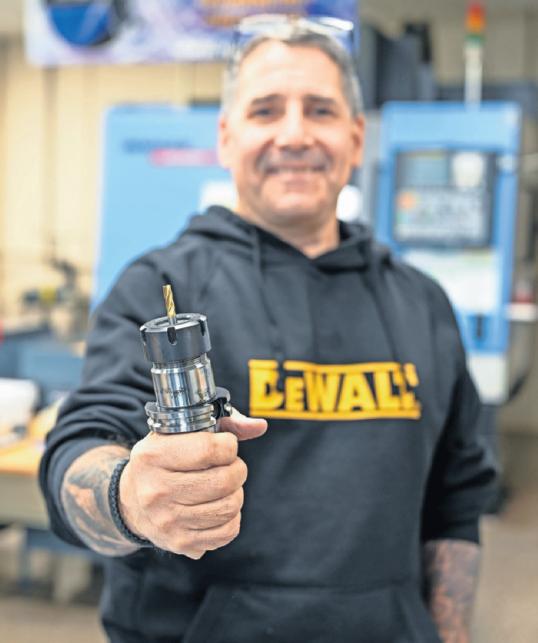
World War II and was important enough to the war effort to be defended by an anti-aircraft battery stationed near the plant.
The good news is that those workers might be in demand locally, even if not at Kennametal, said Giguere.
“I would say all different people would be coming out of there and they all are likely to be in high demand in my opinion, depending on the position,” he said.
Also in January, Edaron, a maker of jigsaw puzzles and board games for adults and children, announced that it will close its factory in Holyoke and warehouse in South Hadley, at a cost of 77 jobs.
The manufacturing technology program at Westfield
students.
“If I knew the answer why, then we’d be at capacity,” said Ron Nadeau, the lead instructor. “But we’ve seen a fall-off in interest.”
Part of that drop in interest in the field may lie in lingering doubts about the industry’s long-term health.
That’s something those who do the hiring can refute.
Companies also fight the misunderstanding that manufacturing workshops and workplaces are dirty or old-fashioned. That’s a notion countered by the almost surgical gleam of a modern machine and the more than $1 million in upgrades in Westfield’s shop.
Nadeau said manufacturing takes discipline. And it might not fit in with the online
Programs exist at around the region, including:
• The Westfield public schools
• The Lower Pioneer Valley Educational Cooperative in West Springfield
• Putnam Vocational Academy in Springfield
• Holyoke High School’s Dean Campus
• Smith Vocational and Agricultural School in Northampton
• Pathfinder Regional Vocational Technical School in Palmer
Also, training is offered at community colleges in Greenfield, Springfield and Enfield, Connecticut.
These studies tend to attract fairly small class sizes, compared to other trades, Grande said. “That talent coming in is gobbled up every year, and spread pretty thin.”
At local high school
Across town, Westfield High School has 15 freshmen in a new innovation career pathways program focused on manufacturing and engineering.
“We have a need in the community for manufacturing,” said Lauren Figy Cadigan, supervisor of science, technology and engineering studies in the Westfield public schools.
“You need two different things. Our kids are getting both technical courses and advanced coursework, so courses that count for colleges,” Cadigan said.
She said getting young people interested in manufacturing requires reaching out to young candidates about this career option in middle school — or even younger.
One elementary school class, for example, learned about a high school student’s beehive project. A group of second graders studied erosion with
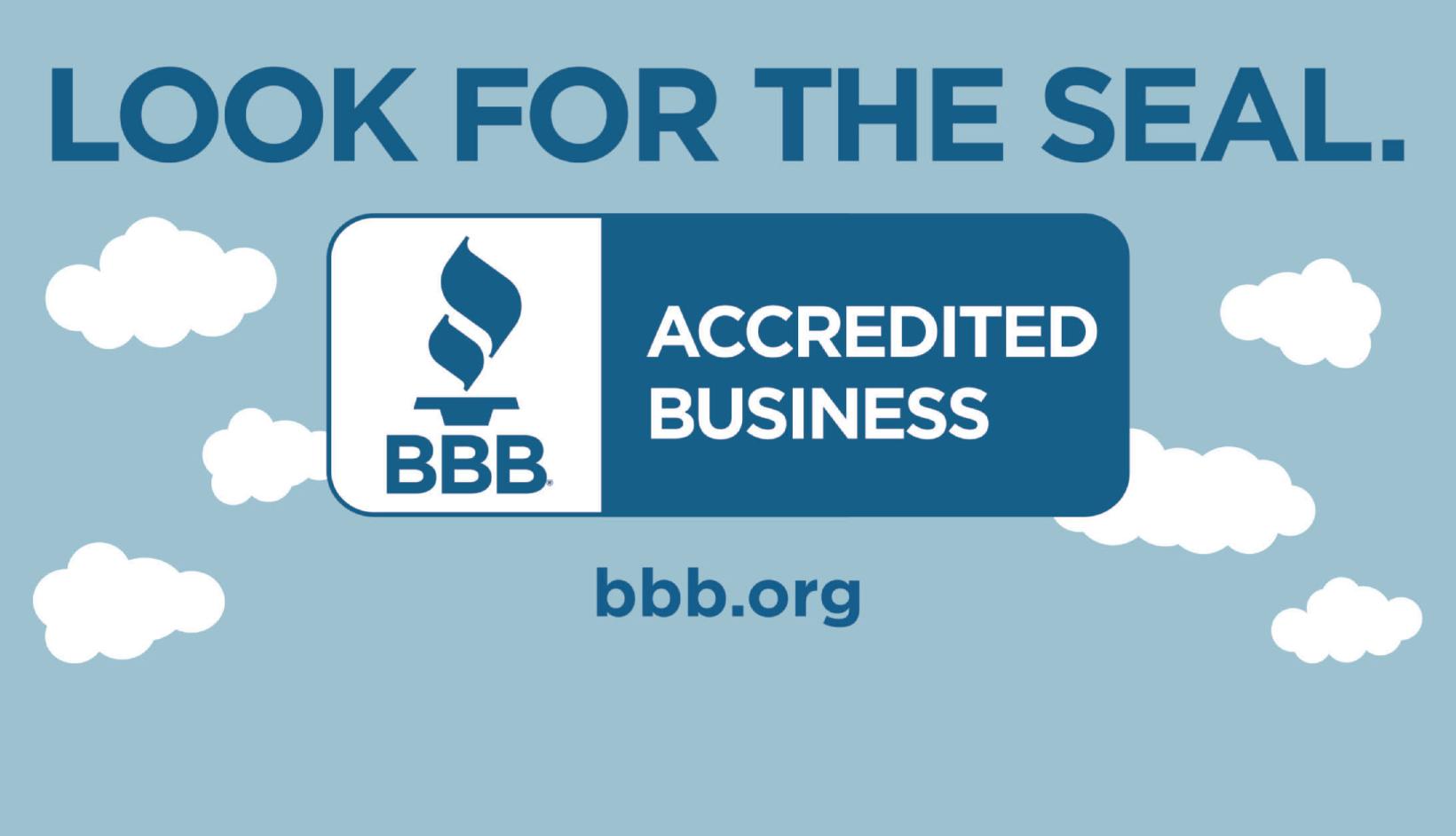




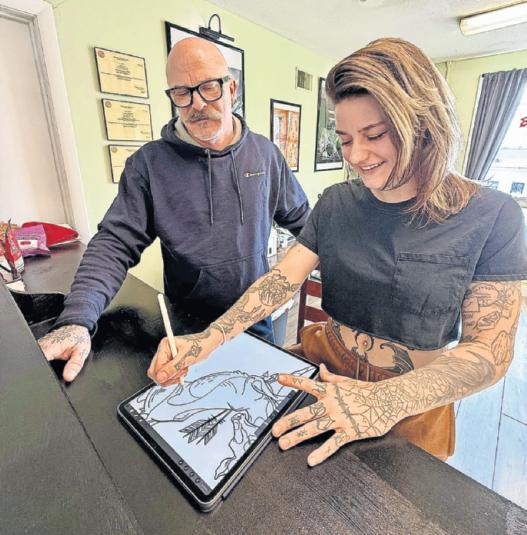
“We’re not panicking like we used to. We’re just accepting it and we realize at some point, someone’s gonna wake up in the morning, they’re gonna want a tattoo and we’ll be here.”
BOUCHER, J’INKS TATTOO IN EAST LONGMEADOW
JIMMY
take into account the craftsmanship that goes into it. It’s not about mass producing for cash. People that do it from their heart and for the right reasons are OK.”
Lyon said tattoo artists who specialize in certain niches can still thrive. “Your vibe attracts your tribe. I really like doing cover ups or reworks,” he said. Those efforts conceal a past tattoo, or improve or expand it.
partner had just opened
J’inks Tattoo in East Longmeadow and saw a windfall from pandemic relief. At first, business was brisk, but the tattoo artist said the initial boon has faded.
“Free money right after COVID boosted everybody and now people are realizing they actually have to work for it,” he said. “There’s been a bit of a slump in the last year and a half. There was an incredible amount of spending right after COVID but people are realizing it’s not there anymore.”
In the past, clients had to wait up to five months to see Boucher or his business partner, Sydnie Brock. Wait time is down to a month. Boucher said he is responding to the slowdown by running specials and flooding social media with advertising.
“We’re not panicking like we used to. We’re just accepting it and we realize at some point, someone’s gonna wake up in the morning, they’re gonna want a tattoo and we’ll be here.”
Steve Fournier is a tattoo artist at Lucky’s Tattoo and Piercing in Northampton. He told The Republican that people had been waiting up to three months for his services. While business remains steady, he is now available in as little as three weeks — and he’s taking walk-ins if he has an opening.
“There is a lot of discussion as to whether this is a recession in the tattoo industry.

Lyon said he helps people recover from tattoo trauma.
“They say, ‘I don’t know what to do. Can you make it better,’” he said. “Usually, it’s from poor technique due to inexperience. Occasionally it’s traumatic, where a client has been wronged.”
While many artists shun this type of work, Lyon said he is energized by repairing or completely covering a bad design.
“People trust me and anytime I get a chance to do that for someone, it’s a super special experience,” he said. “It’s magical to help somebody who feels hopeless about their situation. It makes me feel happy to do that for people,” he said.
‘Ex’ cover-up
There isn’t just one factor. Tattoos are generally not a necessary expense. As more folks have a harder time making ends meet and stretching their budgets as prices rise, tattoos as a priority drop off,” he said.
Ink botch Boucher and Fournier are well-established professionals each practicing his art for more than a decade. But in the gold rush to ink some business, novices began entering the field, diluting demand and causing some of the slowdown, said Dice Lyon. Lyon works out of his studio in Huntington and travels across Massachusetts to see clients.
“A lot of people got into tattooing for the wrong reasons,” he said. “They’re in it to make money the easiest and quickest way possible. They don’t
Jaidda Roman, 23, a home health aide and college student in Springfield, recently had a tattoo on her left ankle covered up. It wasn’t a bad tattoo. It was a bad break-up.
“It was my ex-boyfriend’s name and it still attached me to him,” she said.
Roman has spend thousands of dollars on a dozen tattoos. This time she’s covering her ex’s name with a Phoenix rising from the ashes.
“Once it’s dead, the Phoenix is reborn. That’s what it symbolizes for me.”
Ezequiel Lugo crouches down to draw the Phoenix on Roman’s leg. He’s been a tattoo artist for 12 years and now works out of The Mean Bean Tattoo Shop, a studio he owns in East Longmeadow.
“I’ve been around art all my life. Since I was a child, I’ve been drawing on everything,” Lugo said.


What began as a simple craft
— drawing the word “Mom,” a simple heart or ship’s anchor — has evolved into a fine art. Some artists use a combination of artificial intelligence, freehand drawing and digital imagery to create drawings so realistic they resemble portraits or photographs.
Lugo uses a tablet to perfect the Phoenix, producing a stencil he will apply to his customer’s leg, transferring ink that will guide him as he draws the mythological bird. Roman wants it to be transformative. Lugo said it will be.
“We’re able to change people’s lives. We’re making them smile and giving them good experiences. They walk out of here new. They always get something meaningful and I get to see that on a daily basis,” he said.
Demand remains
Even with all of the competition and talk of a recession, many practitioners are in high demand and commanding top fees.
Jake Zucco owns and operates Vellum Art Collective in Chicopee, where clients pay $250 an hour for his services and he’s booked solid, telling clients he can’t see them until July.
Once taboo, tattoos have gone mainstream. According to the Pew Research Center, 32% of Americans have a tattoo and 22% have more than one. Inking up is increasingly popular among all genders, races and political ideologies, with the industry expected to hit $3.9 billion in sales by 2030, according to the Pew researcher.
Zucco said some projects, like “sleeves” that run the length of an arm, can take 60 to 80 hours to complete, costing up to $20,000.
But business is rarely that lucrative at first.
“I had to work through my own struggles with building my clientele,” Zucco said. “It’s about being passionate for the industry and money will come afterwards, but that shouldn’t be the main focus.”




said.
“I like the fantasy that you can dip into,” Curran said.
“The suspension of disbelief in drag is sort of inherent.”
Magnolia Masquerade’s name was inspired by the city of New Orleans.
“I think it’s the richest city in America for culture, art history, food ... (and) architecture,” Curran said. “It just feels like a different world.”
The magnolia is the state flower of Louisiana. The masquerade piece is drawn from Mardi Gras tradition. It’s also fitting, Curran said. “What are we doing in drag if not hiding behind this decorative mask that we’re putting on?” he said.
Curran loves the wigs and the creativity that go into drag performances, even the graphic design and marketing work required to promote shows.
In his day job, he works at the Marigold Theater helping with events, social media and other coordination.
Across the country, there’s been a conservative backlash against drag in recent years, as in Tennessee and Florida, where restrictions have been passed and then struck down in courts.
“There has been a really
fierce and scary rise of conservatism and, well, fascism too, in America over the past 10-ish years,” Curran said. “Certainly since we saw ‘Miss’ Donald Trump coming into power, and that right-wing ideology really started taking over. I’m not sure exactly why they decided to (target) drag, because drag has been a big thing in pop culture since forever.”
One reason: As queer people have gained more rights and mainstream visibility, the negativity towards drag is a backlash, Curran said. “It’s fear-mongering,” he said. Curran feels safe performing in Easthampton. “We are living in a bubble of safety here in Western Mass,” he said. He added, “I’m not gonna live in fear of somebody’s potential for harm. I’m just gonna keep doing what I know I am kind of made to do.”
The audiences at his shows are diverse, Curran said. “All people should see the audience that can come together at my shows and appreciate the drag on stage and the queer art that’s happening,” he said. “I think that’s a very important visual and reminder that we’re not all that different in a way. I know that sounds cheesy, but we’re all meeting at the same watering hole at the end of the day.”
Your trusted local team—with significant lending capability. Westfield Bank is investing in our region’s economy with millions to lend to businesses like yours. As a local bank, we know this market. We also know the importance of making decisions and serving our customers right here.
purchase/construction/expansion
more Your banking relationship is critical to your success, so we aim to make your decision an easy one. Let’s grow together. Go to
For over 45 years, Casella has served local communities. Each year, we recover over a million tons of recyclable material from the waste stream, and over the next decade it is our goal to double that amount.
Throughout our operations in Massachusetts, we have over 228,000 customers and nearly 400 employees who serve their needs providing economically and environmentally sustainable services. Through those efforts we are proud to help keep Massachusetts safe, clean, and thriving.
Here in the Pioneer Valley, we are proud to provide a full range of services to businesses and communities alike. From construction and demolition recycling in Holyoke, to our full service recycling facility in Springfield, and all our hauling infrastructure in between our fully integrated services can help you achieve your sustainability goals. Visit casella.com/sustainability to learn more about our 2030 goals and how we’re helping others along their own sustainability journey.
What’s it like to co-lead
Just Roots, a nonprofit organization in Greenfield?

Page L2 SIDE
A Longmeadow man found his side hustle in sports trading card swap meets. Page L4
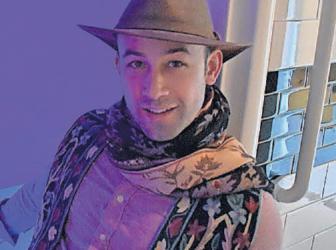
What do ‘relaxation industry’ workers have to say about the importance of work-life balance? Page L6

| SUNDAY, FEBRUARY 16 , 2025

“We always preach, ‘Keep your head on a swivel.’”
COLTON ANDREWS,
PRESIDENT, PIONEER VALLEY
BUILDING TRADES COUNCIL
By G reta Jochem gjochem@repub.com
SPRINGFIELD — Imagine you’re working on the side of the highway on a construction project. A driver speeding by just feet away from you drifts in their lane as they text.
Concerns about dangerous drivers
are a common worry that Colton Andrews, president of Pioneer Valley Building Trades Council, hears from members who work on road construction.
The council is part of the Massachusetts Building Trades Unions, a group representing construction workers.
“We always preach, ‘Keep your head on a swivel,’” Andrews said. Distracted drivers in road construction zones represent one of many hazards in construction, which is among the most dangerous occupational fields in the state and country. Across all sectors, more than 5,000
people died because of work injuries in 2023 in the U.S., the most recent year for which data is available from the U.S. Department of Labor. Construction was the deadliest sector, with more than 1,000 deaths. The second-most risky occupation
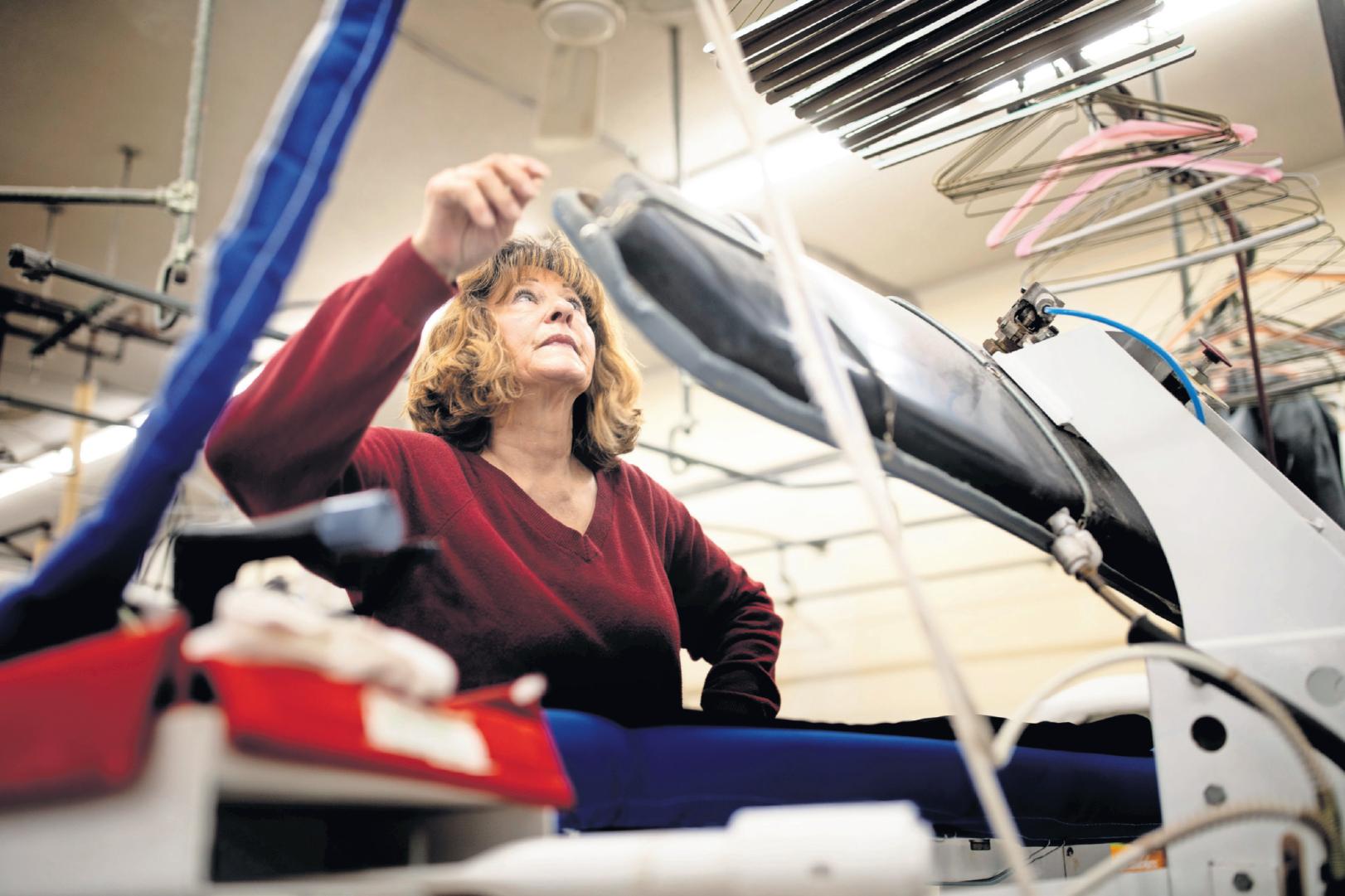

Cindy Phillips is the head presser at Park Cleaners in Springfield. “What is it about my job that might surprise someone? Experience? I just have a ton of experience in pressing. I'm not sure if it would surprise them, but I think that they would be pleasantly surprised if they brought a garment in that was totally wrinkled in every way, shape or form, and then I pressed it. I’m sure that they would be very, very pleased with my work. Why is my work important? It is important to the everyday people who bring in business suits, dresses, gowns — just everything, everything to do with the garment industry. It's important, especially the pressing part.” To see another glimpse of work being done at Park Cleaners in Springfield, see Page L8 (MICHAEL J.
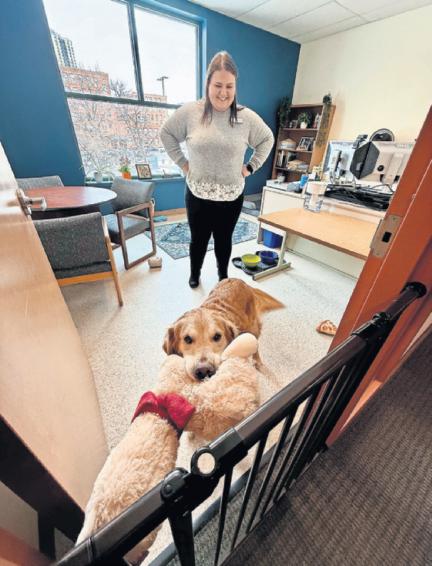
By Staasi H eropoulos Special to The Republican

SPRINGFIELD — When human resources manager Kayla Begnoche calls employees to her second-floor office at Dakin Humane Society in Springfield, they’re not always sure why they’re being summoned.
“Going to HR is not always fun. It could be boring. There could be hard discussions,” she told The Republican. When visitors arrive, they are greeted by Begnoche’s charming and disarm-
ing assistant wagging her tail and standing behind a baby gate, often with a toy in her mouth. Cooper George, a 9-year-old golden retriever, is setting the tone for the meeting.
“He provides emotional support to employees because he’s always got his head rested on your leg or lap or he tries to get in between us,” she said.
Begnoche is one of nearly two dozen Dakin employees who are able to bring their pets to work — mostly dogs,
because the animal shelter and adoption center is too stressful for pet cats. There are more than 60 employees, with the majority of them working in a standard office setting.
“We work for animals, so let’s bring in our own pets. Cooper George is so goofy and he relieves stress when he does something funny or brings an offering to people when they come in,” Begnoche said. According to various surveys, 10 to
According to various surveys, 10% to 15% of businesses in the U.S. allow employees to bring their pets to work.
S SPRINGFIELD EVOLVES
Ainto a dynamic hub for business and leisure, convention centers and event arenas are becoming crucial drivers of economic growth. The MassMutual Center, managed by MGM Springfield, plays a vital role in this transformation, contributing significantly to the region’s economic progress.
The 2024 fiscal year offers a prime example of how large-scale event spaces can positively impact urban landscapes. In the first half of 2024, the MassMutual Center earned global recognition, ranking #9 worldwide among venues with a capacity between 5,001 and 10,000. This achievement highlights the growing significance of event spaces in Springfield’s economic resurgence.

Economic impact
The MassMutual Center had a substantial economic impact in FY24, contributing $56.1 million to the local economy, according to Destinations International. Over 244 event days, the venue hosted 167 events, attracting nearly 395,000 attendees. The diverse mix of conventions, conferences and trade shows — spanning sectors like association, religious and sporting events — supports local businesses through spending on hotels, dining, retail and services. Additionally, the center generated
L15

EVEN DURING THESE cold winter months, farmers around the region are setting themselves to their daily work: caring for livestock, finalizing growing plans, prepping greenhouses for the coming growing season, checking sap lines in preparation for making maple syrup and pruning fruit trees.
While the majority of food production in the Northeast of course occurs during our relatively short growing season, the work of farming is yearround.
On many local farms, the watchword for 2025 is “uncertainty.”
Since the onset of the pandemic in 2020, local farmers have been managing a series of market shifts and challenges. The costly demands of the early pandemic, including supply chain challenges and enormous shifts in day-to-day working practices and sales outlets, gave way to record-setting inflation and falling demand for local food after a pandemic-related boost. The financial well-being


worked over many years to expand the safety net that is available to farms when disaster strikes through our own Emergency Farm Fund and through partnerships with other nonprofits and the state. We also provide local farms with expert technical assistance and grant funding as they implement climate change adaptation practices.
Still, the unknowns for local farms are enormous.
The makeup of our agricultural workforce is not a welltracked statistic, but we know that there are undocumented people doing skilled, essential work on farms in Massachusetts, as there are throughout the nation. This is the result of many years of agricultural and immigration policy, which have worked together to make agricultural work among the lowest paid, most dangerous
On many local farms, the watchword for 2025 is “uncertainty.”
of local farms – even those that are selling through small alternative markets like farmers’ markets or CSAs — is tied to the national economy and global markets.
When something changes on a massive scale, whether that is pandemic-related supply chain issues pushing people to look for local food sources or tariffs increasing the costs of agricultural inputs, local farms will be affected in unpredictable and uncontrollable ways. Climate change has introduced a whole new level of uncertainty for local growers. Farming has always been a weather-dependent business with productivity varying dramatically from year to year, but many long-standing seasonal norms have started to shift in unpredictable and costly ways.
In recent years, we have started to see examples of how the predicted impacts of climate change will play out on local farms. In 2022, peach crops throughout the Northeast were lost, and apple and blueberry crops were damaged, because of unusual temperature patterns throughout the winter and spring. In 2023, widespread flooding destroyed thousands of acres of crops, worth millions of dollars, in Western Massachusetts.
The year 2024 brought the most surprising thing of all: a growing season without extremes. At CISA, we have
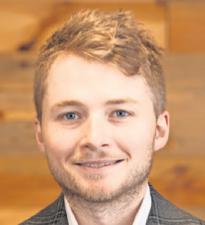

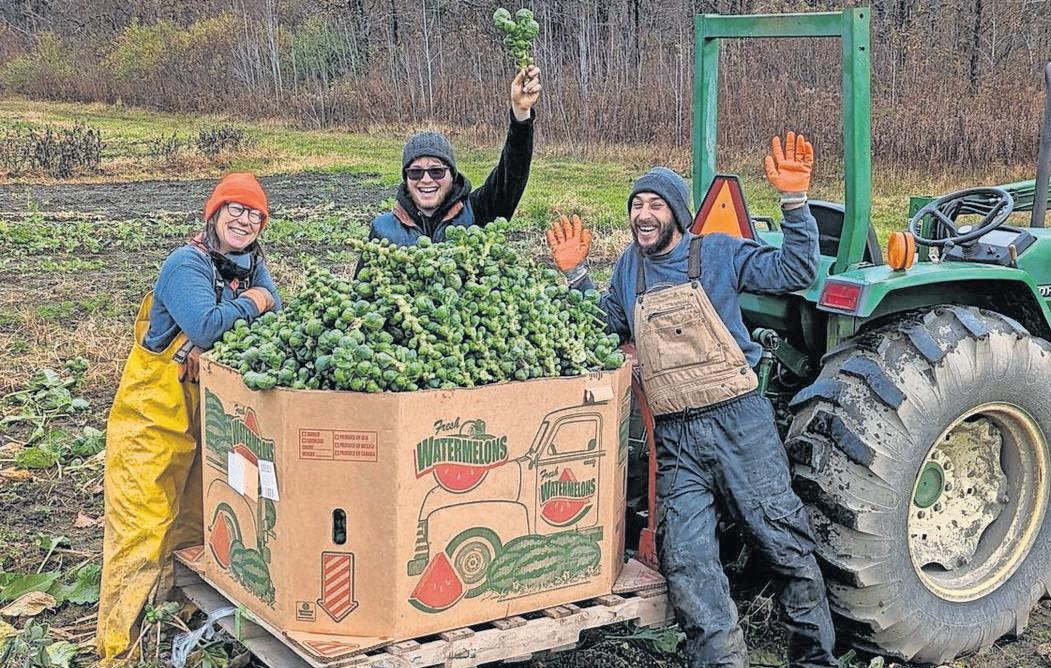
Partners at the top of a nonprofit What’s it like to co-lead this Greenfield company?
By Staasi H eropoulos
Special to The Republican GREENFIELD — At a time when many businesses are led by a single CEO and executives battle for money, power and prestige, Just Roots is seeding a business model where two leaders are running the organization and learning to share.
Just Roots is a nonprofit organization in Greenfield that ensures people who can’t afford groceries still have access to fresh produce, meat and fish.
“We’re dedicated to addressing food insecurity, providing equitable food access to our community in Greenfield and throughout the Commonwealth,” said Joshua Faller, co-executive director of the organization.
“We endeavor to make sure people, regardless of socioeconomic background, have access to healthy, fresh, locally grown food,” said Faller, who shares leadership responsibility with Meryl LaTronica, the other co-executive director.
public health by providing nutritional food to families in need.
“They know our business like nobody else, so it made sense for us to tailor our directorship model to the people we had in house,” Donna Dussel, the board president, said of LaTronica and Faller.
While the board is trying to divide responsibility based on the leaders’ areas of expertise, loosely defined as production and distribution, there will be times when issues overlap and there could be conflict.
“That’s part of our discovery — how do they collaborate? Where do they break out their spheres of influence? The organization still is one team and we want to be careful not to silo those two things,” said Dussel.
If there are irreconcilable differences, the board has ultimate decision-making power,
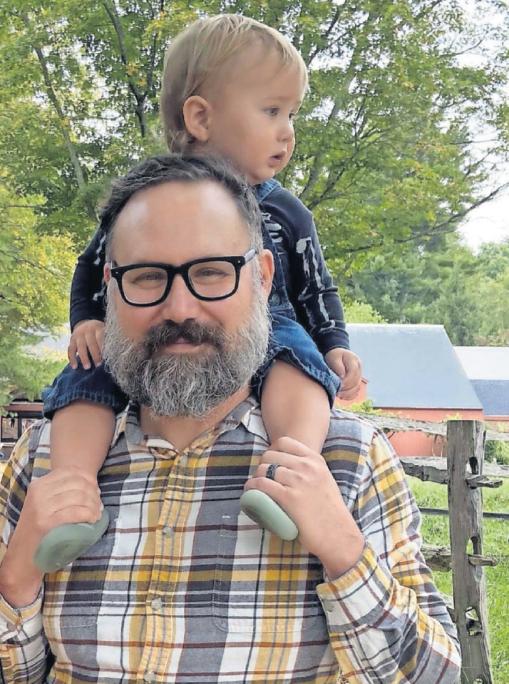
and least stable in this country.
The Trump administration’s stated policies about undocumented people are creating an atmosphere of fear and instability for many people who grow, harvest, pack and prepare our food, and for the industries that have come to rely on their labor.
Local farmers are heading into 2025 with a lot of worries. They are also, as always, bringing a lot of resilience and innovation to their work.
They’re not alone: at CISA, we will continue to work directly with local farms to help them navigate market shifts, climate change, changing immigration policies and their own well-being. We’ve also seen Massachusetts residents, communities and government officials demonstrate their commitment to agriculture and local farms through the challenges of recent years, and we can all continue to work together to advocate for programs and policies that support local farms.
And of course, local farmers will continue to grow tons of beautiful food to feed their communities, so we can all help them by choosing local whenever possible. Visit buylocalfood.org for more information.
Claire Morenon is the communications manager at Community Involved in Sustaining Agriculture, or CISA.
“We’re doing this because we want to improve the quality of life in Franklin County and across Massachusetts,” she said. “As an organization, we have a culture built around coming together, collaboration and heart-filled work,” she said.
Just Roots grows 50 types of fruit, vegetables and herbs on land owned by the city of Greenfield. What the nonprofit doesn’t raise, it secures from other farms that provide produce plus fresh meat, poultry and fish.
Just Roots was founded in 2008 and has grown over the years, serving more than 5,000 people last year, according to LaTronica. Those people receive food through grant-funded programs that benefit low-income people and families. Programs include farmer’s markets, food pantries and home deliveries.
The nonprofit has had several leaders. But when its board of directors met recently to discuss a better model, members decided to begin this year by creating two, equal leadership positions and fill them with experts already in the organization.
LaTronica joined Just Roots eight years ago and has focused on farming. Faller concentrates on distribution, including a Food is Medicine division that works to improve
“We endeavor to make sure people, regardless of socioeconomic background, have access to healthy, fresh, locally grown food.”
JOSHUA FALLER, CO-EXECUTIVE DIRECTOR, JUST ROOTS
added Dussel
While corporations are traditionally led by a boss at the top, nonprofits are increasingly turning to a shared leadership model.
“It’s lonely at the top,” said Dussel. “When you have somebody on the same level as yourself, you’re able to bounce ideas off each other and you have a backup, somebody that can step in if there’s something you can’t do. Then there’s continuity of leadership if one of the directors steps down.”
LaTronica said she’s committed to openly sharing information and decision-making with her co-leader, knowing when to take a stand and when to yield to his point of view.
“Conflict will probably come up, but I can’t identify any one area. We don’t have to come to the same decision. If there’s something under Joshua’s purview, I might be like, ‘Well, I don’t really love that, but I support you,’” she said.
Executive burnout can be a major problem within many organizations. The hope is that it will be less of
an issue at the Greenfield nonprofit, with each leader able to rely on the other for back-up.
Faller said there isn’t any cutthroat competition for money or praise at Just Roots.
He thinks that will help the co-leader model work and pay dividends.
“We’ve both got lives and families. There’s a real opportunity to humanize the executive role through collaboration. It’s worth giving up whatever aggrandizement would come out of me owning all the executive turf,” he said. “I can’t tell you how relieved I feel entering into this position with such an incredible partner.”










By C arolyn Robbins
Special to The Republican
Author and medical technology engineer Todd Zive was just 4 years old in 1980 when his father was murdered by an armed robber in the Easthampton pharmacy he owned, leaving his mother Eydie alone to raise three young sons.
As the family coped with the trauma that followed, Zive never forgot the lessons his father, Leslie Zive, taught him about how to be successful in life: “Be a ‘mensch,’” he was told.
“My father embodied the meaning of what it means to be a mensch,” a Yiddish word describing a person of character, integrity, generosity and who respects others, he said. “He was my first role model.”
Even though he was just a tyke, Zive has vivid memories of his dad’s store, which featured a soda fountain with red vinyl stools that stretched the length of the store. “Behind it were all the ingredients needed to serve up soda and ice cream and — my personal favorite — milkshakes,” he said.
“Thanks to the soda fountain, dad’s pharmacy was not only a place where people went to pick up their medications but also a gathering spot where locals came to have coffee and toast for breakfast, and egg, tuna and grilled cheese sandwiches for lunch,” he said.
His dad also taught him all kinds of lessons there: “Greeting customers and being kind, cleaning up after myself when my chocolate milkshake dripped down the side of the tall glass, counting change and straightening the displays,” he said.
“These were the my earliest lessons on being a mensch, centered on how to respect people and take care of the world around me,” he said. It is those lessons that form
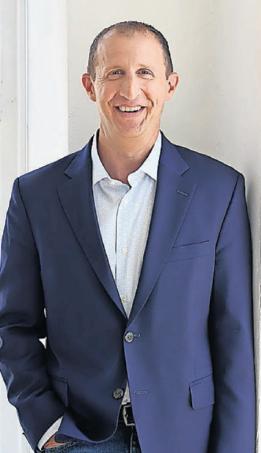
the core of Zive’s new book: “The Mensch Method, Achieving Success through Character in Life and Business.”
In the book, Zive lists 11 key traits that define a mensch, along with a series of exercises for readers on how to conquer adversity, build resilience, identify positive influences in life and in business, cultivate vulnerability and extend yourself to help others.
“Being a mensch is not only a compliment, it is a call to action,” Zive said. “In business, where success is measured by profits and outcomes, being a mensch sets you apart as a leader who values people, relationships and growth.”
Recently, Zive read a journal entry his mother sent to him in 1986. In it, she drew from the mensch mindset, writing: “We cannot question what happened: We can only say: ‘Now that this has happened, what are we going to do about it?’
And this is precisely what she did. Mom modeled resilience for us boys in how she lived her life and led our family.”
In his chapter titled “A Mensch Shows Up,” he recalls how his uncle Paul helped his family

“The Mensch Method” is rooted in what Todd Zive, at left, calls “servant leadership.”
together rather than climbing alone or diminishing others along the way. It is about achieving success through integrity, resilience and meaningful relationships, contrasting sharply with leadership models that prioritize power and status over influence and character,” he said.
“‘The Mensch Method’ builds strong teams, fosters trust and creates culture where people feel valued and
“Being a mensch is not only a compliment, it is a call to action.”
TODD ZIVE, AUTHOR, ‘THE MENSCH METHOD’
cope with the upheaval of their father’s death. In the days following the murder, Zive said his uncle stepped in and hired a pharmacist to fill prescriptions for patients in need.
“He also played basketball games with me and my brothers in the driveway at his house and took us to Boston Celtics games,” he said.
In a chapter titled “A Mensch Believes in Themselves,” Zive urges readers to overcome self-doubt by trusting who you are as a person, trusting in your own competence and abilities, and trusting in those who have chosen to support you.
Zive agrees that the workplace of 2025 feels more cutthroat than ever, with many companies hyper-focused on the bottom line.
“Efficiency and results matter, but when everything becomes transactional, when people are treated as numbers instead of human beings, it takes a toll. Burnout rises, trust erodes, turnover increases and workplace culture suffers,” he said.
“The Mensch Method” is rooted in what Zive calls “servant leadership.”
True leadership “is about lifting others up and rising
engaged,” he said. “When people feel valued, they show up motivated, committed and ready to do their best work.”
Zive’s book has garnered high praise from reviewers.
Derek Herrera, founder and CEO of Bright Uro, calls it “a powerful reminder that success is measured by the legacy we leave and the lives we touch.”
Another writes that Zive’s overarching message is that success is not just about what you achieve but how you achieve it.
Zive, who grew up in Northampton and Longmeadow, now resides in Irvine, California, with his wife and two children.
He worked in the med-tech industry for more than 25 years before founding ZGL Group in 2022 and holds a master’s and a bachelor’s degree in biomedical engineering, along with certifications in corporate governance, executive coaching and venture capital.
His book is available on Amazon and at Barnes and Noble. He is also recording an audiobook.
AFTER NEARLY FIVE decades living and working in Western Massachusetts, I continue to be truly impressed by the remarkable quality of the institutions that our beautiful region builds and supports.
You often hear great things about the quality of life in Western Massachusetts.
But it’s not just the stunning scenery, vibrant culture and affordable cost of living that contribute to our high quality of life; it’s also the positive impact of our institutions. They enhance life for everyone in the communities they serve and create better experiences for all of us connected to them.
Among the top 25 Massachusetts workplaces with more than 1,000 employees, you’ll find some great options in Springfield, including the Behavioral Health Network and Massachusetts Mutual.
Moreover, some standout employers in smaller sectors are Peoples Bank in Holyoke, Nonotuck Resources in Northampton and Fontaine Brothers and M.L. Schmidt in Springfield. Here, you’ll find three of the nation’s leading liberal arts colleges, the top two being Williams College and Amherst College, and Smith College right behind at No. 14.
Springfield’s Baystate Medical Center shines brightly, proudly ranking No. 7 in a state renowned for its world-class medical care.
Though we make up only 10% of Massachusetts’s population, our unique strengths allow us to shine in areas beyond numbers.
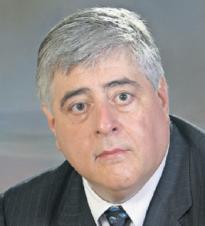

Attorney Paul Nicolai is a multistate legal and business adviser, and founder of the Nicolai Law Group PC. He is a past chairman of the Western Massachusetts Economic Development’s transportation committee, past chairman of The Massachusetts Broadband Initiative and a founder of the Valley Ventures Partnership.

Instead of focusing on things that require population density to win, we can excel by showcasing our commitment to quality. Let’s celebrate our ability to “punch above our weight” and stand out for the remarkable quality we offer. We should appreciate the leadership of these institutions. Let’s acknowledge their contributions and make sure our communities support them just as they support us.

By James Foster
Republican
ROM
FSPORTS TO reading to trading cards, nearly everybody has a passion that keeps them entertained. But not everybody is able to transition their passion into something that earns them money.
Long-

meadow’s Scott
Greene has been an avid card collector for over 45 years. When he’s not working as the sales manager of Reminder Publishing, Greene can often be found buying, selling and trading baseball cards a hobby that has manifested itself into a major side gig.
Greene’s started collecting baseball cards when he was about 7 years old and began opening up packs of cards with his dad. From the start, Greene has been most interested in collecting baseball cards, namely those featuring players on the Boston Red Sox.
Greene’s passion inspired him to start The 413 Card Show, a semi-annual event that brings together collectors of all kinds of cards from

New England. Tables boast baseball, football and basketball cards, WWE pro wrestling cards, Pokemon, and other trading card games like Magic: the Gathering and Disney.
There was previously a local card show that had fizzled out before Greene and a friend started up The 413 Card Show. The pair noticed that, although there is a card show nearly
every weekend throughout Massachusetts and Connecticut, Western Massachusetts was missing a flagship event. In its first edition, in January 2024, Greene rented out half of the function hall at the Castle of Knights in Chicopee, where vendors came and filled up 55 tables with cards they were hoping to sell. A snowstorm hindered the event and attendance was sparse,
but the energy in the building was so positive that Greene was confident the card show could become a major event.
In the next two editions, about 550 to 600 people attended the 413 Card Show each time it was held, in April and October. Greene is hopeful that attendance will get even higher when the show is hosted again in April and October this year.
Events like The 413 Card Show are just one of the ways that people can buy, sell, and trade cards nowadays. Because buying boxes of cards in hopes of pulling just one team or a specific player can become expensive, in 2018, Greene began to do card breaks to mitigate the cost of his hobby.
Card breaks, which have become increasingly popular in the card trading world, have people open up boxes of cards often on a livestream – and other people will buy off certain cards or teams that have been revealed.
For example, Greene almost always will keep his Red Sox cards, but will have people purchasing all of the Los Angeles Dodgers and New York Yankees cards in the pack. Other times,
Greene runs a player auction, where the highest bidder of a certain player gets all of the cards that feature that player in the break.

As a die-hard Red Sox fan, Greene’s most treasured cards naturally feature a Beantown legend.
Out of every card that has come into and passed through Greene’s hands, his 2020 Topps Baseball 1985 design David Ortiz card outshines the rest. The autographed card has a platinum border, which signifies it is one of one, or the only version of the card that has ever been made. Greene is also particularly proud of another autographed Ortiz card that is numbered 3 / 10. Although not as rare as the platinum card, Greene likes this card because March 10 is his birthday. The 413 Card Show will be coming back on April 6 from 8:30 a.m. to 1:30 p.m. at the Castle of Knights, 1599 Memorial Drive in Chicopee.
Tes to be a vital driver for the Western Massachusetts economy.
We at Explore Western Mass (a.k.a. the Greater Springfield Convention and Visitors Bureau) will be laser-focused on implementing marketing initiatives that bring traveler-related spending into our region.
In 2022, our regional hospitality industry attracted 4 million visitors, generated $136 million in local and state tax revenues and employed nearly 12,000 workers. The overall economic impact for Western Mass. was a whopping $1.3 billion. These numbers were part of an economic impact study the bureau commissioned in late 2023 through Tourism Economics, a leading research firm. What’s clear is that attracting business travelers and leisure visitors into Western Massachusetts enhances our region’s economic health, while also improving the quality of life for our residents.
Western Mass. is already blessed with a mix of distinctive visitor attractions, varied accommodations and dining, easy accessibility from key feeder markets (think Eastern Mass., Connecticut and metro New York) and comparative affordability. Add in key factors
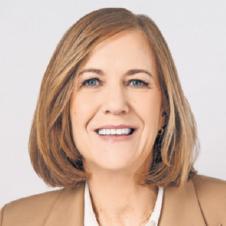

such as our natural assets and scenic beauty, unique events, charming college towns and well-deserved reputation as a crafter’s paradise — and it’s a highly compelling destination. Visitors are increasingly eager to come to Western Mass., but getting them here the first time is not the end of the process, by any means. Explore Western Mass and our many members are also deeply invested in the important job of generating repeat business. Everyone knows it’s far more efficient to entice an existing customer to come back again than to lure a brand-new prospect. And that’s why we put an emphasis on outstanding guest service and created the Howdy Awards for Hospitality Excellence in 1996. The program has run continuously since, except for 2020, due to
the pandemic. If you don’t recognize the Howdy program name, think of it as the regional Academy Awards of hospitality. Every year, the bureau and its members encourage their guests and customers to nominate the front-line staff people who’ve made their visits feel more special with their smiles, energy and outstanding service. Annually, nominations pour in acknowledging the friendly folks who went the extra mile. From naming bartenders who always remembered favorite beverages, to recalling hotel staffers who cheerfully helped find lost luggage, visitors happily tell us their tales of feeling noticed and being appreciated. Every spring, the nomina tions are tallied, finalists are selected, three judges decide, and a major gala is held recog nizing the best front-line cus tomer service providers from across the region. (Important to note, the Howdy judges are always recruited from outside the area, to ensure unbiased reviews of the finalists.)
Last April, the 27th annual Howdy Awards for Hospitality Excellence was another roaring success. Our gala at the MassMutual Center attracted 513 attendees, all there to celebrate and recognize 72 finalists.

represented all-time records for this amazing program, and we’re plenty excited for the 2025 event already. This year’s dinner will again be held at the
MassMutual Center, slated for Monday, April 28.
explorewesternmass.com and clicking on the Howdy logo. Rolling nominations are accepted all year, but the cutoff for the April 2025 awards program is March 1, 2025. We at Explore Western Mass are eagerly looking forward to 2025, and we anticipate a strong year ahead. The spending of the visitors we will welcome is likely to enhance the impact this important industry has on the local economy and will also reinforce the value of the tourism and hospitality workforce.


Both of those numbers











If you live in Western Mass., you can still participate. Nominations can be made online at
Mary Kay Wydra is president of Explore Western Mass and the Greater Springfield Convention and Visitors Bureau.







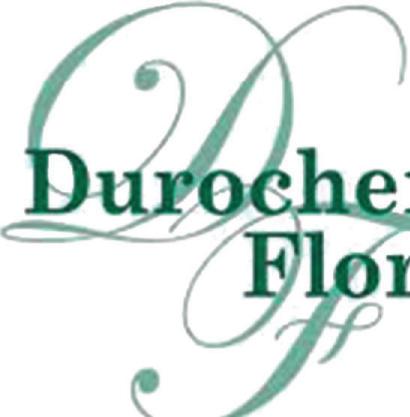
































At Mercy Medical Center, we are dedicated to being your lifelong health partner, guiding you with compassion and expertise through every step of your health care journey. Our award-winning team of professionals is committed to delivering exceptional, patient-centered care, ensuring that your well-being is always our top priority.


THE STATED OUTlook theme for this year is “profound changes in the nature of work.” I do not subscribe to the theory that there have been “profound changes” in work. Work still — and — always will require the fulfillment of duties, which demand sustained effort.
There is, however, a profound change in the way work is viewed and approached by participants, as well as in the general expectations of society.
Eastern States Exposition is a small not-for-profit organization. Given that our economic impact on the region exceeds a billion dollars — making us one of the top economic drivers in the Northeast — one might think we have hundreds of employees.
In actuality, our full-time, permanent staff numbers fewer than 40 people. Fortunately, we are blessed with an enormous cadre of occasional personnel — some of whom are third generation — who help us throughout the year. Their numbers swell to just over 1,000 during The Big E.
When volunteers are included, our total workforce approaches 1,500. For these people working at this legacy organization, an organization that does good for the region and agriculture across the nation, the nature of work remains the same.
That said, our approach to attracting new recruits has changed. We must be exceptionally clear when educating potential employees about our expectations. The idea that you can fulfill your role from home while wearing your pajamas is unacceptable. The idea that you can come and go according to your schedule is equally unacceptable.
Our patrons, our business partners and everyone in our region have expectations of us, therefore we must have expectations of our workers. More frequently than I like to see, revealing these expectations often results in the sound of a dial tone or a missed interview. We simply won’t hear from the candidate again. Why is this? I am an accountant by profession and do not have the educated sociological qualifications to answer that question. But seeing as how I am the one who asked it, I’ll try. The considerations given due to the worldwide pandemic will surely be covered by other writers in this issue. While one could argue the pandemic plays a material part in the societal response to work in this age, I believe there is something more to it. The term “immediate gratification” comes to mind.
Our society has advanced dramatically in the span of the previous two generations, and people are accustomed to having more — more of everything. More food on our plate. More products to choose from. More. More. And more. Given my age and station in life, more time would be very nice. What we turn to for “more” often varies by generation. I turn to the newspaper to get more news and often turn to what a younger generation relies on exclusively: some type of electronic device. You know the kind — the ones you see attached to the hands of virtually everyone under a certain age, their eyes glued to a screen. That device can provide what-
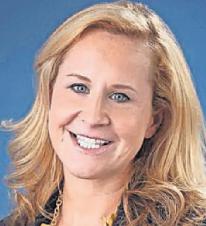
Brooke Thomson
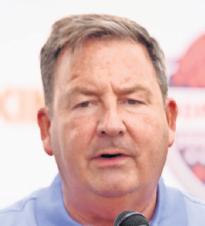
ever immediately gratifying item is being searched for. Old books are a favorite of mine, and that device makes them ever so easier to find –and far less expensive than they used to be. Others may be looking for other types of books. Pocketbooks interest my wife, though she prefers the term “handbag.” News is also a hot item. Though in this age it’s disputable if it really is news. It could as easily be fiction presented as fact. For the indiscernible, fact or fiction, it is the only “news” they are exposed to. However true or untrue, if it appears on their device, even the most egregiously untrue claims can become reality.
The device wants your attention and gets it by surprising your senses with the sensational. And when it comes to “news” the sensational is entirely negative. The sensational negative includes headlines. It always has. In years past, you might recall the grocery store tabloids of the 1970s: “Half Man Half Dog — Baffles Docs” or “Man’s 174MPH Sneeze Blows Wife’s Hair Off,” or as recently as September 2024, “Barns Burn at Big E.” Sensational, fake and negative stories sell. Where headlines are concerned, sensational positivity is virtually nonexistent. “Thrilled Teachers Celebrate Student’s Success” will not result in the sale of a newspaper or prompt a “click” on your electronic feed. Positive cannot be capitalized for “click” profits.
The sensational negative appears glaring on that device urging you to “click.” Because your “click” means income. Each click is equal to the old-fashioned newspaper subscription. If you can’t sell real, positive news in its paper form, you can capitalize on that which is sensationally negative in print and in electronic form. The perceived desire of the user’s immediate gratification is satisfied and sales are created, often at the expense of truth. The longterm effect of which tearsdown all that surrounds it. No. The nature of work is stable, the change is in our perceived expectations, at the touch of a button, a false headline. Today, more than ever, we need to know what is real. That is where Eastern States Exposition comes into play. The Big E is real. Real animals. Real food production. Real music. Real industry. It offers first-hand experiences: things you can touch, smell, hear, taste. Real, not clickbait. Well, except for “The World’s Smallest Horse.”
Celebrate that which is good, real, wholesome — something that drives our region, creates jobs, boosts the economy and fosters pride in city and state. It’s something that agriculture across the country depends upon, and you can be a part of: The Big E. Join us from Sept. 12 to 28, 2025.
is
AMERIcans spend one-third of their time on the job, so it’s no surprise that the workplace provides a mirror of the rapidly changing social expectations of both employers and workers
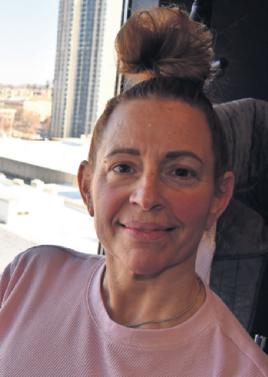

By M ichael C arolan
Republican
Special to The
SPRINGFIELD
WEST
— Brent Bonfiglio did five tours of duty in Iraq. He was in Bosnia in the 1990s and Afghanistan in the aughts. After serving in three military branches — the Army, Air Force and Navy — he worked a stressful job at the Veterans Affairs Administration until a few years ago.
Like most people living in the Pioneer Valley, Bonfiglio has many choices for relaxation to help improve his work-life balance.
He has been visiting the Wellness Drip, a health clinic and spa in West Springfield. Bonfiglio comes monthly for a treatment called nicotinamide adenine dinucleotide (NAD+) therapy. It’s the name of a naturally occurring compound that helps cells function and declines as people age.
“It’s absolutely relaxing and part of my wellness journey,” Bonfiglio said. “I felt there was a lot more clarity because I had a lot of brain fog.”
Today, he is finishing chemotherapy, radiation and hormone treatments for prostate cancer. He also has been diagnosed with post-traumatic stress disorder.
“It means I can have a lot of racing thoughts,” Bonfiglio said. “I had to retrain my neurochemistry because you’re in high stress situations. I used to drink (alcohol) daily too. Then once I started coming here, I relaxed and stopped drinking as much, the cravings are way less.”
Other Wellness Drip services include ozone therapy, weight management, vibroacoustic therapy, vitamin drips, ketamine treatments and body sculpting.
“Actually, I think one of the best things about Wellness Drip is that my spouse said, ‘You just seem calmer.’” Bonfiglio said. “That means a lot.”
The ‘float’
Karl Hathaway, 69, said he relaxes at an Easthampton wellness company where customers “float.” Located in the Keystone Building on Pleasant Street, Go With the Float features four small private rooms in which customers experience sensory deprivation while buoyed by 1,200 pounds of Epsom salts for 60, 75 or 90

in 2025.
A new study by Associated Industries of Massachusetts documents just how fast those changes are taking place. The annual AIM HR Practices Survey — which gathers data on employment practices from
more than 200 Massachusetts employers — paints a vivid picture of the ways in which companies are responding to the developing world around them.
The most telling conclusion points to a significant shift in
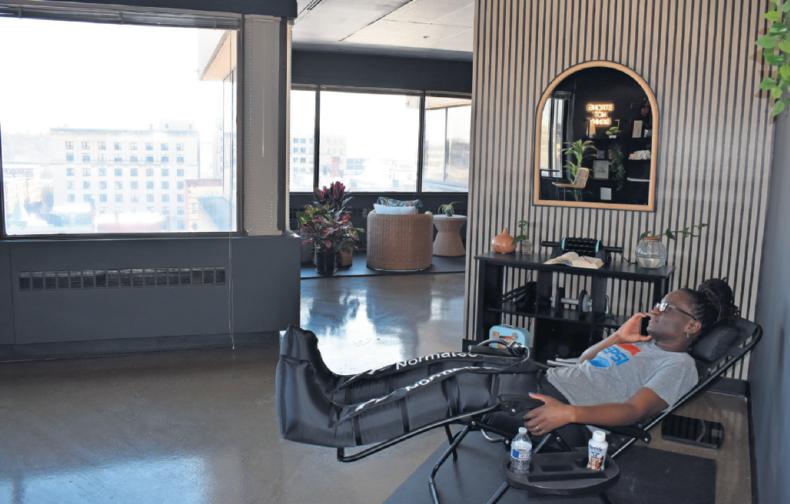
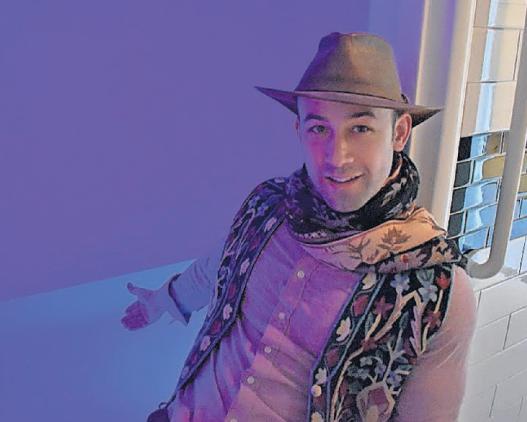
minutes.
Hathaway, a South Hadley resident, purchased a membership at the business and hopes to move beyond his fear of enclosed spaces because there is light and a door that opens easily.
“I’m making a part of my wellness routine,” Hathaway said. “It’s really relaxing and interesting to see what comes up.”
Sensory deprivation tanks began with neurophysiologist John C. Lilly, who worked at the National Institute of Mental Health in the 1950s. The tank was redesigned in the 1970s to make it palatable for the public.
“It’s very relaxing in a transcendental way,” said Stephen Bryla, owner of Go With the Float. “Even if sometimes you feel agitated or restless in the tank, you always feel relaxed after. Like massage, you feel better after. It’s like a massage for your brain.”
Customers will soon be able to hear music or sound during the float and Bryla will offer massages at the center. The facility has saunas, both traditional and infrared.
Floating is known as “restricted environmental stimulus therapy,” Bryla said. “We’re creating an environ-
ment and using this technology to mitigate as much incoming environmental stimulus as possible,” he said.
He explained that anyone can be in a quiet dark space with noise-cancelling headphones. “The most unique part about the (floating) experience is that it’s in combination with the boundary dissolution of the tactile senses of the body,” he said.
A similar business in Northampton is Euphoria Float Spa.
“I’ve done commercials, billboards, social media, Facebook ads, you name it,” Bryla said. “Nothing is as good as word of mouth. People don’t know what floating is and so they have to learn about it.”
Other pursuits
More traditional relaxation for Valley residents includes the many gyms and fitness or athletic centers in the Valley.
For instance, Angie Obomanu, 41, is nurse at Baystate Medical Center. She relaxes at BuildEmUp Fitness in downtown Springfield.
It’s a woman-owned and operated center that offers classes, weight training, a cold plunge bath, an infrared sauna, air compression thera-
py and infrared laser therapy. There’s also body sculpting, personal training and 30 hours of weekly group fitness classes, from fundamental training to strength training, cross training and functional fitness, and yoga.
“I have a high-stress job,” Obomanu said. Spending time at the center helps her decompress mentally and physically from work, she said.
“This whole place helps in preparing me for that job,” Obomanu said. “It just gives me overall feeling of well-being. Taking care of myself because I have to take care of others. I’m going to get a massage next.”
Michelle Belden, a Springfield resident and licensed massage therapist, offers massages including deep tissue, sports and Swedish, as well as vacuum cupping, scraping, stretch and laser therapy.
Her practice, Therapeutic Touch Massage and Bodywork, is part of BuildEmUp and overlooks downtown Springfield.
“I get all types of clients,” Belden said. “Some from the fitness center and some from the area. Massage is really just a great mode of relaxation.”
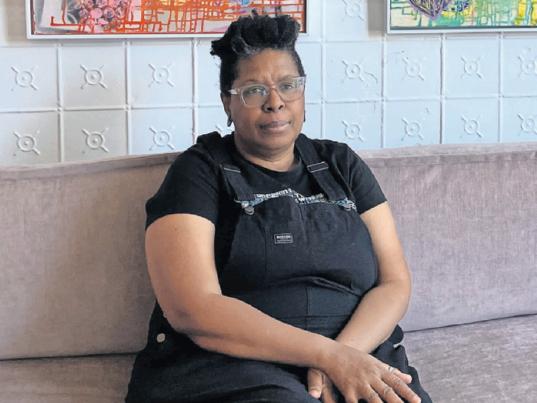

By A prell M ay Munford amunford@repub.com
NORTHAMPTON — Western
Massachusetts’
makerspace
The Sphere Northampton is more than just creative hub — it’s an incubator for the next generation of women and nonbinary visionaries in the Pioneer Valley.
Its mission: to help entrepreneurs reach their full potential, strengthen the community, and boost the local economy while inspiring others.
Co-founders Christina Webster and Megan Allen say there is a growing demand for makerspaces, where fledgling business owners can co-work, share resources and build community in the wake of the COVID-19 pandemic.
Inside the lab, a former family-owned bakery that has been transformed into an open, versatile, inclusive and aesthetically pleasing space, one might work alongside a roofer, artist, data scientist or food truck vendor. They collaborate or work independently on marble tabletops, in booths or plush couch seating.
“We’re really trying to be a hub and a connecting point, so we can point people in the right direction, no matter if they want to start their business or they want to grow or scale their business,” Allen said.
Allen also said entrepreneurs in any stage of business — whether lab members or not — should attend as many free
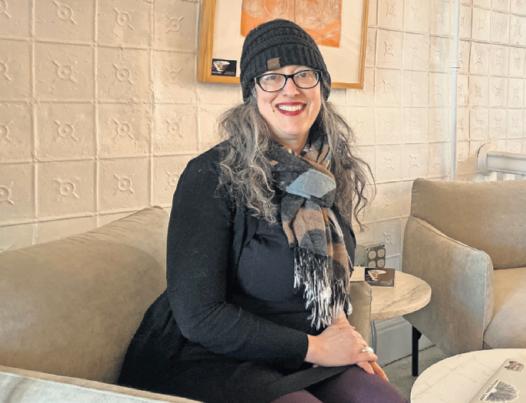
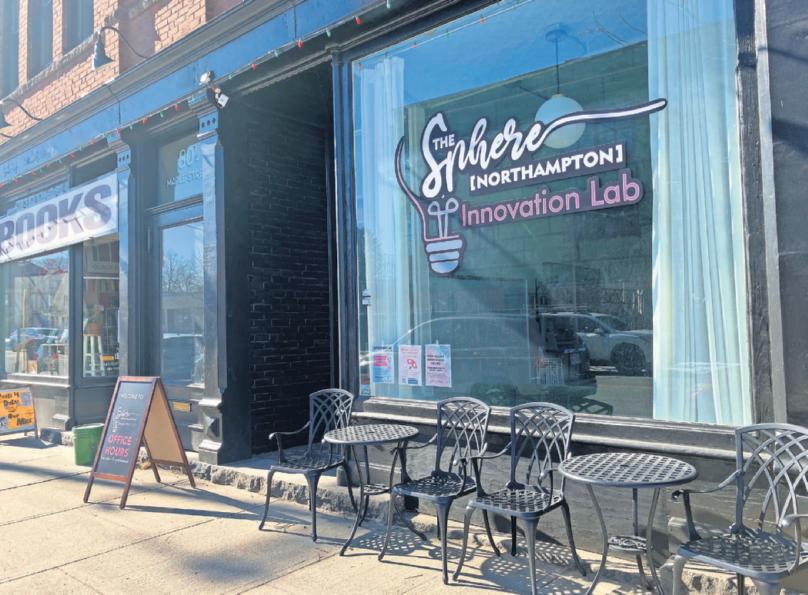
MAY MUNFORD / THE REPUBLICAN)
a third-grade Easthampton teacher experiencing burnout.
“I loved teaching but hated to be a teacher, with all of the red tape and logistics,” Webster said.
After being connected through a colleague, the two applied for a grant to cover the cost of the traveling classroom.
The science, technology, engineering, art and math trailer rolls into different venues, such as the Florence Farmers Market, and allows kids to engage with learning and see themselves reflected in different books, Webster said.
The trailer is staffed with tutors to help kids with their reading, too, she said.
Out of that project, Allen said, their idea for the makerspace began to gain momentum in 2021. “And now in 2025, we have a 501(c)3 status,” Allen said.
“We’re really trying to be a hub and a connecting point, so we can point people in the right direction, no matter if they want to start their business or they want to grow or scale their business.”
Sphere events and programs as possible.
And they should also be ready to engage with the hub community.
“The culture is highly collaborative. It’s like we’re each other’s hype women,” Allen said. “We’re definitely being each other’s cheerleaders and best resources. It is something we’re beginning to build.”
The Sphere, just like the businesses coming out of the makerspace, started with passion and a desire to disrupt social biases, spark creativity and thought, and the need for change.
Owning two separate businesses herself, Allen said, the journey to each was distinct. For example, her Little Community Classroom on Wheels emerged from personal drama, she said.
At the beginning of the COVID-19 pandemic, Allen was let go from her job and had a 7-month-old baby at home.
“Instead of doing the typical thing like I normally do and just rush into the next (job), I decided, since the world had already shut down, there was no rush. Nobody knew (what I was going through), so I could catch my breath and figure out what I really wanted to do,” she said. Meanwhile, Webster was
The idea for an innovation hub came to Allen as she noticed that women in the Northampton area were running businesses but didn’t know each other.
“I thought, ‘What if they could be better connected to resource share? What could it do for the community and the local economy?’” she asked. With funding from the Massachusetts Technology Collaborative’s Strong Entrepreneur Ecosystem and a grant from the Downtown Northampton Association, Allen and Webster began researching barriers to success for women-owned businesses. They replicated a statewide study focusing locally on the Greater Northampton area and partnered with Smith College’s Design Thinking Initiative to address barriers like racism, sexism, ageism, resources, and time.
“One strength is that it is a big, connected network where everyone brings their own strength and ideas, and because it is collaborative and a lot of people take ownership of it, I think that makes the community hub what it can, will, and is beginning to be,” Allen said. “Especially after the pandemic, I think we realized how important that community and connection
is.”
Varied businesses come to share resources and build in the makerspace, including Sasha Wilde of Sexton Roofing and Siding Inc., Dawn Cordeiro of Holyoke Hummus Co. and DMC Consulting, and Robin Griffith of Robin G. Photo Art.
Additionally, Carefree Cakery’s owner Alysia Bryant was previously quoted saying her business “blew up” after one of The Sphere’s events, Allen said.
“That’s what it’s about.
Being able to shine a spotlight on businesses helps them to become more well-known.
Talking about personal strengths, businesses and qualifications is hard sometimes. What could happen if you have your own hype squad to do that for you, and what can happen if we do that for each other?” Allen asked.
Griffith — an artist, member and now curator who will host the first “Out with the Artist” series of exhibitions at The Sphere — came to the Northampton makerspace after showing at an exhibition held in partnership with the M/others Institute for Collaboration and Art.
Griffith didn’t always call herself an artist; in fact, she used to introduce herself as a “former social worker,” she said.
“It took me a long time to be comfortable with that. I love making art in general, but my goal has been to have my art be how I have income,” she said.
“(Western Mass) is such a rich artist community, I felt like it was a perfect opportunity to like finally just be like, ‘I’m going to be artist.’ I’ve been here almost nine years now,” said the New Jersey transplant.
On the makerspace’s walls is Griffith’s collection “Tears, Tragedy and Triumph.” The collection focuses on social justice themes, celebrating women of color and resilience through bold colors.
“I did not just want (the collection) to be about the ugliness of tragedy but how a lot of them are advocates now,” Griffith said. “After tragedy, they go on speaking and (helping) other families that have gone through it when they could have just disappeared. Instead, they use the tragic moment to highlight the situation and be there for others.”
Griffith invites other
them know that they have a place here.
The makerspace also rents out the space for workshops, events and studios. All proceeds go to keep The Sphere’s programming free, which includes two business accelerator programs that started mid-February.


The Venture Way Collaborative serves as a space for meetings, conferences, workshops, classes and events, fostering an inclusive workplace culture. (PROVIDED PHOTO)
Venture Way
Collaborative aims to build community
By A prell M ay Munford amunford@repub.com
Venture Way Collaborative isn’t your typical sterile industrial commercial building. It’s an old-looking barn-like structure — even though it was built in 2020.
Upon seeing the building, the first thing people often comment on is the exterior — a bright red color, called bolero, which, like the structure itself, pays homage to of Western Massachusetts history.
“I grew up in Eastern Mass., and knowing that tobacco farming was a huge part of the industry in the economy here, I thought that would be neat to have a different type of exterior that provoked some curiosity and also some excitement,” said Andrea Bordenca, a principal partner of the collaborative.
Parallel workspaces
Bordenca is an entrepreneur, co-founder of The Women’s Collaborative, and said the space is where adults can learn and co-work together.
“For kids, they parallel play. It’s like, I’m going to play with my dominoes, and someone else is going to play video games ... you’re in the same



space doing different things,” she said.
Venture Way Collaborative’s airy, bright space aims to foster a thriving workplace culture with high trust and psychological safety. It is also a venue for meetings, conferences, workshops, classes and events.
It accessible to everyone, regardless of age, race or gender, Bordenca told The Republican. It’s for people who are open-minded, who are human-centric, she said.
“You are you; I am me. Let’s make room to get to know and understand each other without having our preconceived notions of what should be. This space is made for everybody who shares in those values,” she said.
Inside, colored acoustic tiles adorn the high ceilings. A barn door connects to a space often used for team meetings.
Unlike typical office spaces, the collaborative features comfortable chairs, book piles, floor pillows and seating that challenges the conventional view of a professional office environment.
A 1,000-square-foot studio serves as an open mic venue, crafts area, movie night spot and yoga space. Its 750-square-foot makerspace has a large table, currently occupied by medical devices, sterilizers, monitors
SEE HUB, PAGE L12


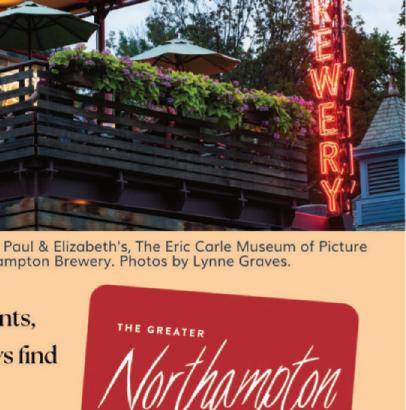


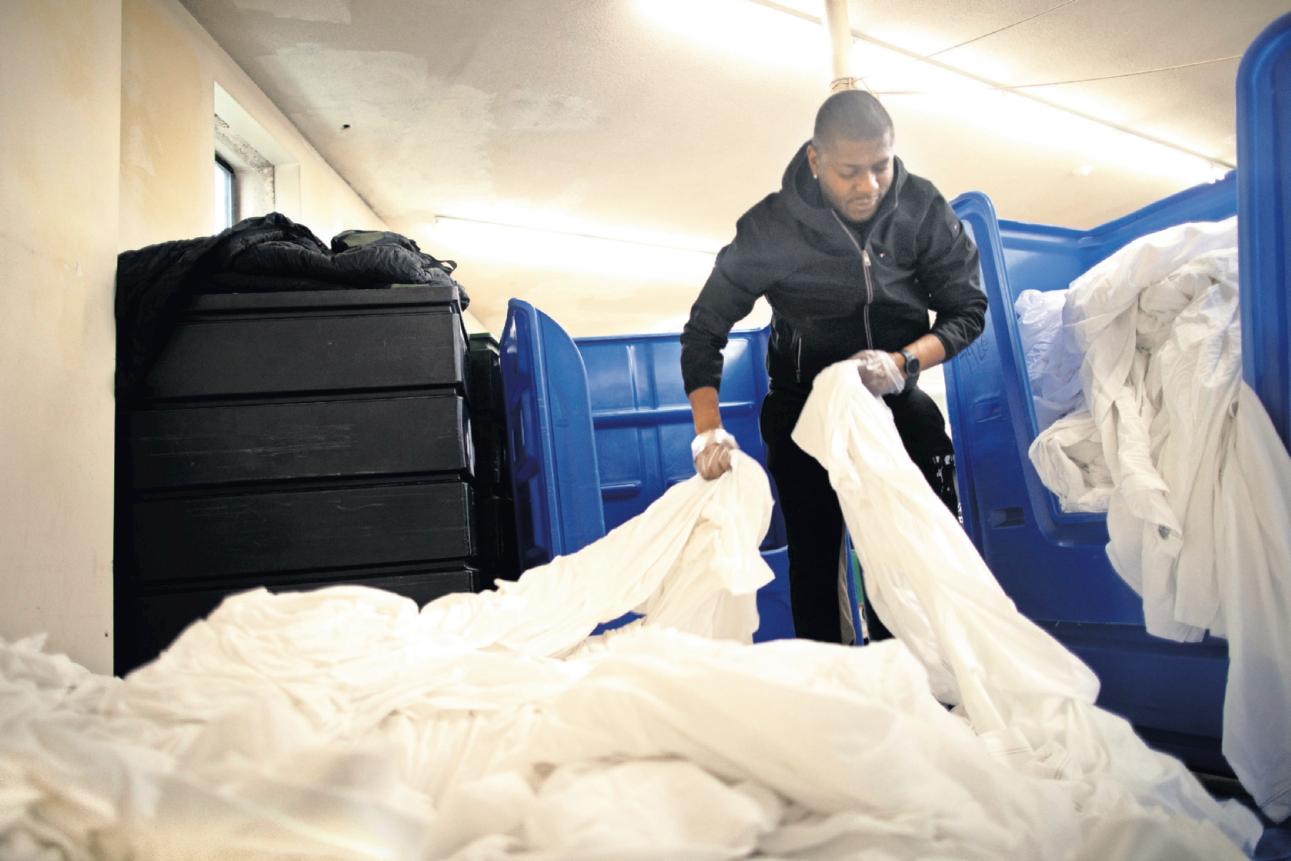

Cherinico Foster works at Park Cleaners in Springfield. “You’ll be surprised about how much work Park Cleaners has put in for the people in Springfield over the years. And it’s really, really, really important to get your clothes done on time. It’s amazing all the stuff that we get done in a day, for all the customers in Springfield — the police officers, fire brigades and different civil servants of Springfield. From my understanding, we’ve got a contract with MGM, and we get a lot of jobs from that company. I think it’s very important because I think Park Cleaners is one of the only dry cleaners and laundromats around this area in Springfield. From my time being here, I’ve seen a lot of important people come along, police officers, lawyers, all different types of people that serve this country.”
(MICHAEL J. FIEDLER
AS ONE OF THE region’s premier cultural attractions, the Springfield Museums serve as a bellwether for trends in the field from tracking attendance to anticipating changes in visitor expectations for exhibitions, programs and customer service.
Operating our five museums as an ever-evolving multimedia hub in the urban heart of downtown Springfield, we strive to present the arts, sciences and the humanities in innovative ways to explore new realms of creative expression. In this beginning to 2025, the museums face an array of challenges as well as dynamic opportunities to redefine their role in the community and in people’s lives. Here are some high-level trends we are watching this year at the Springfield Museums. Pandemic rebound: For most museums, the primary benchmark for performance is attendance. During fiscal year 2024, the Springfield Museums attracted 93% of their 2019 attendance which was the second highest attended year of our history. What makes this even more remarkable is that according to the American Alliance of Museums, only 51% of American museums have recovered to 100% of their pre-pandemic attendance levels.
Our secret sauce: A deeper dive into national visitor surveys reveals that the attendance recovery for exhibit-based organizations rests heavily on organization type.

While outdoor attractions, zoos and aquariums have bounced back more quickly, COVID-related health concerns have hindered attendance rebound at children’s museums and science centers. With our expansive gardens and grounds, the outdoor Dr. Seuss Sculpture Garden and our five science, art, history and Dr. Seuss museums, we have it all, and during 2025, the Springfield Museums are poised to increase visitation and even surpass our pre-pandemic attendance levels.
Creating cherished memories: Studies demonstrate that for families, it’s a desire for shared experiences and memories in the making that spark their visits to museums. Our own surveys reiterate this, with 43% of visitors sharing that their motivation to visit is to spend time together as a family.
Headliner attractions at the Springfield Museums that appeal to intergenerational family audiences include The Amazing World of Dr. Seuss Museum, soon to re-open Live Animal Center in the Science Museum and drop-in activities offered in the hands on Cat’s Corner, Spark!Lab and Art Discovery Center. In addition, throughout the year, the museums offer an endless array of family programs and events that feature costumed characters, digital self-expression and roaming entertainment. A robust schedule of special exhibitions includes life-sized
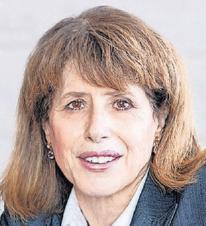
robots, three-dimensional recreations of paintings by Vincent Van Gogh that you can walk into, and costumes to try on in an exhibition on witches in popular culture. These dynamic and emotionally uplifting experiences help to create a sense of belonging and produce vivid memories that can last a lifetime.
Importance of the family visit: Focusing on families is critical for the future of museums. Research shows that children who visit with families are more likely to visit museums as adults than those that visited as a group. Even more importantly, children who visit with families are more likely to recommend people to visit museums as adults which generates heartfelt word of mouth marketing that is highly effective.
Inclusivity and accessibility: Whether they are family groups or adult visitors, people want to attend museums where they feel welcome and that they belong. Working together with community advisers, we have updated exhibitions, interpretation and marketing to make them multilingual and culturally compe-





tent. Our museum facilities have been renovated with automatic door openers and ramps to make them more accessible. Feedback from visitors has been overwhelmingly positive.
The museums participate in the Collaboration for Ongoing Visitor Experience Studies which is designed to unite





museums across the country to systematically collect, analyze and report on visitor experience data through surveys. We received the results on an on-going basis in real time and they are encouraging. On our NET Promoter Score, which asks how likely one is to recommend the museum to a friend of colleague, we have a current rating of 81. Any score above 75 is considered exceptional! Specifically, visitors commented on feeling welcome, the friendliness of staff and the diversity of our offerings. Urban doom loop: Like many cultural organizations located in cities, the Springfield Museums are challenged by the negative impacts of the “urban doom loop.” Remote work has changed foot traffic in the downtown. Fewer people in the office means fewer amenities such as restaurants nearby. This decline gives rise to public safety and crime
concerns. Recently, there has been an uptick in articles in the local media advocating for a return to work. As a significant contributor to the local economy, the museums would benefit from having a more vibrant business district filled with on-site workers. What’s Next for the Springfield Museums? Our museums are ready to embark on the next level of community engagement through hybrid programming, visitor-based artistic expression in our galleries, and fostering dialogue though thoughtful art, history and science exhibitions that have meaning for multigenerational audiences. As we look into 2025, we will continue to redefine the museum experience to elevate the Springfield Museums as a world class institution that ranks alongside the best of the best! Kay Simpson is the president and CEO of the Springfield Museums.























At the Food Bank of Western Massachusetts, we’re dedicated to ensuring everyone in our community has access to nutritious food. We continue distributing resources through our 190-member food assistance network, as well as our Mobile Food Bank and elder-focused programs. We remain steadfast in our advocacy, shaping public policy that drives both immediate relief and lasting solutions to hunger.

Together, we will build a stronger, more resilient, hunger-free Western Massachusetts. foodbankwma.org

IN TODAY’S FASTpaced digital world, the business landscape is undergoing transformative change. Technology continues to evolve at rapid speed, reshaping workplaces and bringing advancements that were once unimaginable to the forefront.
The Springfield Regional Chamber has been a longstanding witness to all the businesses, organizations and individuals who have made a profound impact on the Pioneer Valley. Our members embody resilience and dedication, representing the hardworking citizens who are driving our community forward.
These changemakers come from all corners of the workforce. Some are business owners and executives crafting bold strategies to stay ahead of the curve. Others are frontline workers who embrace innovation and carry out the day-to-day tasks that power our economy. They all share a common trait: a dedication to shaping our community’s future for the better. Our members represent a vibrant and diverse community — ranging from large employers and international corporations to nonprofits that serve our communities’ needs, as well as small businesses like laundromats, restaurants and shops that are the backbone of our neighborhoods. The chamber is honored to support and connect these businesses, each playing a unique role in driving the growth and prosperity of the Pioneer Valley. Through our events and programs, the chamber


proudly showcases and celebrates these efforts.
Events like our Rise & Shine Breakfasts, Government Reception, and Outlook bring people together to highlight the diversity and strength of our area. Whether we’re honoring nonprofit organizations making a difference, celebrating the success of immigrant business owners, or creating space for business leaders to connect with policymakers, these moments are about recognizing the people behind the progress.
One of our most cherished events, our Super 60 Awards, shines a spotlight on the extraordinary accomplishments of local businesses and nonprofits that are shaping our community’s future. This year, we were honored to hear from Tania Barber, president and CEO of Caring Health Center, whose inspiring journey — starting at an entry-level position and rising to lead an organization that provides essential health care to tens of thousands — left us all deeply moved. At our annual meeting, we gathered to reflect on the year’s successes and honor
OVER THE PAST FEW years, rural development has seen a remarkable resurgence, in response to both changing work environments and an embrace of a lifestyle that prioritizes connection, collaboration, and community.
As 2025 unfolds, Franklin County is proving to be an ideal backdrop for the next decade, offering a slower, more deliberate pace of life that allows people to forge deeper connections with their neighbors, engage in meaningful community-building activities, shop in person and prioritize well-being. From cultural pop-ups at Mesa Verde to an active Greenfield Rec Department calendar, for example, there’s a sense of belonging that is attractive to those seeking a more fulfilling lifestyle at a fraction of the cost.
This trend has thrown into sharp relief the disinvestment in this part of the state, with local leaders and legislators calling out shortfalls in housing development, infrastructure, public land valuation, and public transportation options that are now impeding the in-migration of would-be homeowners and young families.
The past few years have tested the fortitude of small businesses, manufacturers and service providers across Franklin County. From inflationary pressures to supply chain disruptions, businesses have had to pivot and develop creative strategies to remain competitive. Diversification is key — whether through e-commerce expansion, partnerships with regional supply networks or a more experi-


ential approach to attracting customers.
Cooperative business models — like PV Squared Solar and Franklin Community Coop, and shared resource hubs such as Launchspace — have gained traction, allowing entrepreneurs to pool expertise, infrastructure and operational support. The Greenfield Business Association, Franklin County Chamber of Commerce, Franklin County CDC, Common Capital and other business-forward organizations have played a crucial role in fostering these partnerships.
Workplace culture: A new era of flexibility, purpose Workplace culture is undergoing a profound shift, as hybrid and remote work models, once considered a temporary adaptation, have become permanent fixtures for many local companies. Sites like Greenspace CoWork in Greenfield are vital to the social fabric, creating a place for remote workers to stay connected to their community.
And this next generation of workers is raising the bar



for what they expect from employers, looking beyond salary and benefits to prioritizing quality of life, corporate social responsibility, and meaningful community interaction. This is an advantage for Franklin County, where many businesses already champion professional development and engagement, local sourcing, and community impact through volunteerism and corporate philanthropy.
Additionally, the workforce is seeing a resurgence of skilled tradespeople and hands-on industries, fueled by investments in vocational training and apprenticeship programs. With increased funding for workforce development and accessible education, including partnerships with Greenfield Community College and Franklin County Tech, local companies like Boxco Studio, Ames Electrical Consulting and NE-XT Technologies, to name a few, contribute to Franklin County positioning itself as a hub for skilled labor in fields ranging from renewable energy to advanced manufacturing.

Climate resilience: Why visit for the weekend when you can live here
According to the Urban Institute, nearly 1 in 3 Americans considers climate change a motivation to move, seeking areas perceived as more resilient to the effects of a warming climate. Smaller towns offer a unique opportunity to live close to nature, where residents can grow their own food, rely on renewable energy and reduce their carbon footprint. The call for a greener, more sustainable way of life has prompted not only individuals but also businesses to explore rural opportunities for creating eco-conscious communities. With Ja’Duke opening a second day care, driving school and performing arts center in Greenfield to meet the demands of families, and independent arts and culture activations from the Garden Cinema to the Fairgrounds, rural development is no longer just a notion — it’s a movement, one that redefines what it means to live, work and thrive.















GAIN KEY INSIGHTS, ENGAGE WITH INDUSTRY LEADERS, AND EXPAND YOUR NETWORK




MARCH 7TH | 11:00– 2:00 PM MASSMUTUAL CENTER
Join us for a premier legislative and economic forecasting event that examines what to expect from local, state, and federal perspectives. This event features a dynamic lineup, including our keynote speaker, Rick Klein, Vice President and Washington D.C. Bureau Chief for ABC News. Don’t miss the opportunity to celebrate, network, and hear from one of the nation’s top political analysts!




RICK KLEIN VP & WASHINGTON D.C. BUREAU CHIEF FOR ABC NEWS
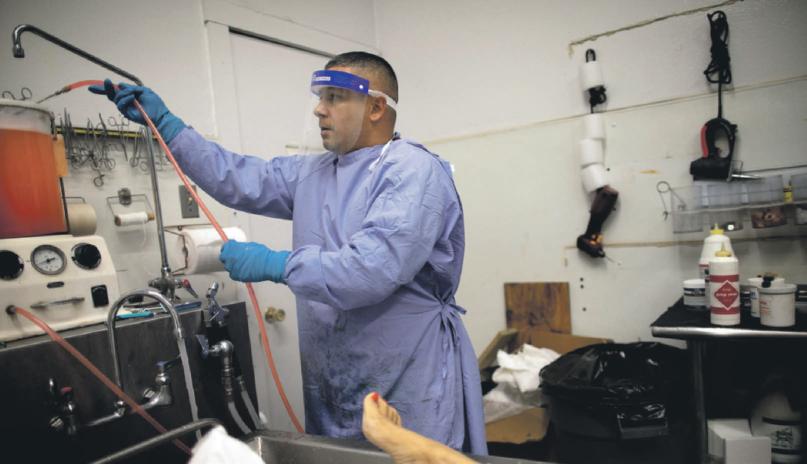

Eduardo Colón, of the Puerta Del Cielo Funeral Home in Springfield, is an embalmer. “Everything about the job of being involved in the funeral home surprises everybody. That’s always the talk of the room, the talk of a round table. When we go to events or are attending events, people always ask, ‘What do you do at the funeral home?’ and then the rest of the questions come after. They want to know how it’s done. A lot of people confuse embalming with autopsies, which are two different things. I’m an embalmer. I don’t do autopsies. This work is important because you have to work towards perfection. You only get one shot to do it, so you have to be laser-focused, and you have to know the backgrounds, the medications that are out there, the type of bodies that you’re bringing in, their conditions, and what they died from. So there’s a lot of medical background that you have to know about the person before you can even begin an embalming. At the end of the day, when you’ve had a busy day, you’re tired, you feel beat up, which is every day. It’s a lot of stress on you, because there’s a lot of tension.” (MICHAEL
J. FIEDLER PHOTO)
This not just in: The newsroom rocks
THE NEWSROOM. Nobody asked me, but that’s my vote for the world’s best workplace. Call it sentimental, but special things happen in newsrooms, my work home for the last 42 years.

I’ll explain, but first a definition. From where I sit right now, inside the second floor of The Republican’s 1860 Main St. headquarters, the newsroom before me is the sprawling, open space where reporters, photographers, editors, copy editors and page designers do all it takes to publish the equivalent of a small book every day. Or today, with Outlook
and a 3D printer for health care training, part of Bordenca’s other business.
Bordenca is in talks with a local educational group to serve as a STEM and workforce-prep area. The vision is for local businesses, middle and high school students from diverse backgrounds to collaborate, share insights, and learn together in a nonhierarchical environment, she said.
She’s also looking to partner with a nearby substance abuse alliance.
“My hypothesis is that this can shift cultures, not only cultures of organizations, but cultures of local economy, cultures of local family systems to break generational trauma,” she said.
Bordenca predicts increased demand for co-working spaces that offer both offices for individual clients or team meetings, as well as collaborative areas. The return to business will not be the usual, because of the evolving dynamics between brick-and-mortar offices and remote work after the COVID-19 pandemic, she said.
“In my experience, people initially loved working from home, but businesses are now wanting to return to their previous ways. However, individuals and smaller businesses recognize the need to engage differently,” she said. “How do we set up these environments where there is the parallel play, where we’re socialized together in a way that really works for our health and vitality?”

2025, a hefty one. People walking through our newsroom, on their way to other departments, might think it just another office. And so it might look. People make phone calls, write in notebooks and tap away at keyboards. Yes, but.
Poking holes in workforce gender norms
Bordenca grew up in the health care technology world in Medfield. Her parents moved from Randolph for better schooling, but she said the school system at that time wasn’t designed for those who struggled with learning and retention.
“I looked like everybody else, but I felt like an outsider. I was told that I wasn’t as smart as my sister by my teachers and the adults,” she said.
She said gender expectations were so ingrained in her upbringing that they seemed normal.
It wasn’t until she examined the makeup of leadership teams, supervisors and field workers that she began to understand the barriers to accessibility.
“It was not only mostly men, but it was mostly white men,” she said.
When she got out of college, Bordenca said she worked hard to be a good performer at work.
“I became a workaholic. Because I wanted to prove I wasn’t stupid. I wanted to prove I was capable,” she said.
“I was assimilating who I was, taking on a lot of masculine attributes, like practicing firm handshakes. I thought it was supposed to be that way.”
Over the past 20 years, she has started to see flaws in the traditional definitions of being a professional or a CEO.
In 1970, her dad founded the Diagnostic Equipment Service Corp., which is now called the Diversified Equipment Services and Consulting Organization, also located at the collaborative space. Bordenca is now its CEO.
“Growing up ... there weren’t
priorities among CEOs and human resources professionals during the five-year, post-COVID period.
At the height of the pandemic in 2021, the five priorities identified most often by companies were safety, compliance, recruitment/ retention of workers, cost management and compensation. By 2024, the order of those priorities had shifted to compensation, recruitment/ retention of workers, compliance, safety and morale/ engagement.
Safety unquestionably remains a concern for employers, but it is no longer the overriding issue it was during the COVID crisis. Compensation, meanwhile, is now front-of-mind, as companies prepare to comply with the new Frances Perkins Workplace Equity Law governing wage equity and transparency. The law requires employers with 25 or more Massachusetts workers to disclose a salary range when posting a job and provide pay range information to certain employees and applicants.
But that’s just the beginning:
After three years on the list, diversity programs are no longer identified as one of the top five priorities.
Sixty-one percent of respondents allow employees to work a hybrid remote work schedule. Twenty-one percent allow three days in the office with two days remote. Five percent of employers require four days in the office.
Fifty-four percent of employers offer behavioral health and mental health resources compared to 22% in 2022.
Forty-six percent of employers have noticed an increase in requests for intermittent use of Paid Family and Medical Leave, leading to staffing challenges
and internal administration challenges.
Fifteen percent of survey respondents report relaxing educational requirements and implementing skillsbased hiring to expand their talent pool. Gov. Maura Healey issued an executive order last year committing the commonwealth to skillsbased hiring.
More than 75% of respondents plan to offer harassment training to employees in 2025.
The surge in companies offering mental health resources reflects what employers say has been a significant increase in employees seeking assistance for issues ranging from depression to substance abuse to domestic stress. Twenty-six percent of employers have observed an increase in requests for mental health support, and 18% offer training for managers to better assist employees with their mental health needs.
Employers have also increased their focus on caregiving — the AIM survey found that 24% offer elder-care information (versus 12% in 2023) and 12% provide child care resources (versus 4% in 2023). In August 2024, the U.S. surgeon general issued a health advisory highlighting record stress levels among parents balancing work and child care.
“Workplaces are microcosms of the complex dynamics at play throughout society. We receive scores of calls each day from companies wrestling with these dynamics,” says Kyle Pardo, executive vice president of AIM HR Solutions.
Stacy Gilmour, vice president of human resources at Quabbin Wire & Cable Co. in Ware, agrees.
“Promoting mental health in the workplace is essential for fostering a positive, supportive and productive environment for employees. Employers can adopt a
variety of strategies to support well-being, including encouraging open communication, offering lifestyle benefits, facilitating access to mental health resources, promoting work-life balance, offering managerial support and training, and implementing health-focused education,” Gilmour says.
The emergence of compensation and recruitment/ retention of employees at the top of the priority list reflects a labor market that remains unusually tight four years into an economic recovery. Massachusetts employers face a persistent shortage of qualified talent, particularly in specialized industries such as technology, healthcare, and engineering. The talent gap reflects factors such as evolving skill requirements, demographic shifts, and increased competition among employers for top talent. It is an issue that poses significant hurdles for employers striving to fill critical roles while maintaining control of costs.
Companies are responding by adopting upskilling and reskilling programs, offering competitive compensation packages, and initiating enhanced recruitment efforts. Employers are also emphasizing workplace flexibility and career development opportunities to attract candidates and retain their existing workforce.
Business organizations like AIM, with its HR Solutions operation, together with partners like the Greater Springfield Chamber of Commerce, are working hard to ensure that Massachusetts companies adapt to the increasingly complex realities of the employment relationship.
One thing is certain: The world will continue to change in 2025, and Massachusetts workplaces will change right along with it. Brooke Thomson is the president and CEO of Associated Industries of Massachusetts.
What makes the newsroom special is the mission and the method. Our daily work and mission are protected by the First Amendment: newsgathering in the public interest. The best newsrooms use that call to duty to empower
conversations about me being the person who’s in the field actually fixing the medical equipment,” she said. “This is my 20th year as a CEO, and I love it. I’m in my second year of succession planning at DESCO, a national service, looking for the third generation of younger, ambitious people to take on more roles.”
Bordenca said she finally found people to share her values when she moved to Western Massachusetts.
“It was like, ‘Oh, there’s a different way.’ This feels like home to me,” she said. “I found that being here, it’s a much more collaborative and open place, authentically.”
Venture Way is a physical manifestation of that experience of collaboration, Bordenca said.
New plans
The collaborative received its occupancy permit in May 2020, shortly after COVID-19 hit.
The small operation is run by Bordenca, her husband and their child. Funding comes from two long-term rentals, and hosting events and retreats.
She donates to organizations like the Women’s Fund of Western Massachusetts, which hosts its retreat at the makerspace site free of charge, and the Queer Valley Library, also headquartered at the space.
In the spring, the collaborative will break ground on a 4,000-square-foot addition.
A construction company will occupy about 2,500 square feet, leaving 1,500 square feet for use as a “vanilla box,” space that’s ready for a tenant to customize, Bordenca said.

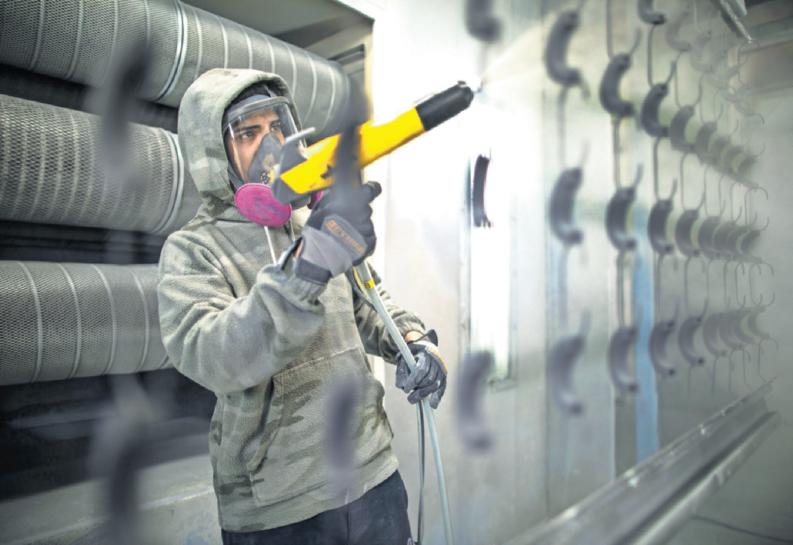

Andres Cruz is a powder coater with A.G. Miller Co., a precision metal fabricator at 53 Batavia St. in Springfield. “My work would come off as simple to most people, but in reality, it’s way more difficult than it seems. It’s a lot of preparation. It takes a lot of concentration and a lot of focus and a lot of time management, as well. Powder coating is important because with any piece of metal, you always want to add some color and add some life to the job. You’re always working with different colors, and you’re always trying new things, working on new jobs. It’s very exciting when you get to work on a lot of things that we do for the local businesses or the government. There’s a lot of different things we do. I consider myself an artist, and I enjoy what I do every day. It’s definitely fun.”
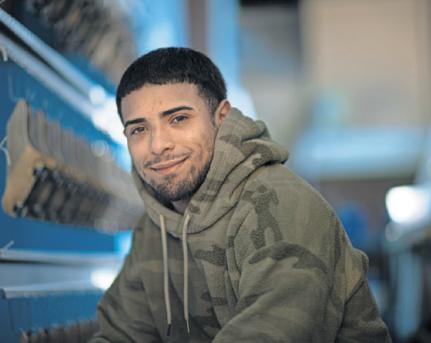
Recruiting the best person is just one side of the coin. I am a firm believer that employee investments are critical for retention.
ONE OF THE AMAZing things about leading the Greater Northampton Chamber of Commerce is that it feels like an ongoing master class with word-of-mouth influences on workplace and organizational effectiveness. The stories and experiences shared by our members across various business sectors become lessons learned and best practices for effective leadership and strong organizational health. What makes a great workplace often comes down to several key factors, including company culture, organizational values, employee perks and work-life balance. I also have found these factors to be among the most important during the recruitment process, and they weigh heavily on a candidate’s decision to accept a job offer.

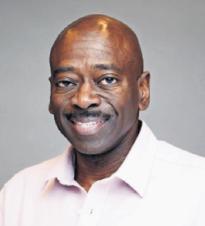
Vince Jackson
reporters and editors to dig, dig, dig.
People who work in newsrooms are the beating heart of a newspaper. Day by day, they help readers understand developments in public life that they won’t see on TikTok. They unearth secrets and conflicts, believing the light of day compels local governments, organizations and businesses to do better. They bring overlooked voices into the conversation. They celebrate local heroes. They put into words and images the things you need to know about the place you live. While all teams need leaders, the best newspapers I have worked for (six in three states) give their people a lot of free rein.
In these newsrooms, people come to work and set their curiosity loose. They ask questions of anyone and everyone. “The man” isn’t a figure in the corner office; our job is to unmask the clowns, not worship them. You don’t get that freedom in many workplaces. In lots of jobs, you must toe a com-
pany line. Newsrooms aren’t entirely protected from that, but our calling is to put readers’ needs first. Producing ethical and purposeful journalism is everything. Leaders of the best newsrooms expect to be quizzed and second-guessed. They want their reporters to be fearless out in the community and push for answers. Journalists must be bold, skeptical and independent people. Leaders need these folks to be their authentic selves when they come back to the newsroom. Every reasonable question must be welcome. Despite all the challenges facing newspapers, The Republican still makes money. We’ve had to cut costs like everyone else in this business and that has reduced the size of our newsroom. The loss of talented colleagues hurts, but those who remain keep at it, together.
To survive, many newspapers, including The Hartford Courant, have opted to close their newsrooms, asking staff to work at home or in some overpriced cafe, while selling off real estate. That’s a dismal development that leaves the secret sauce of newsroom cohesion molder-
CONTINUES FROM PAGE L10
Key industries to watch in 2025
• Sustainable agriculture and agri-tech: Franklin County’s agricultural roots continue to evolve, with consumer demand for locally sourced and sustainable foods remaining strong.
• Renewable energy and green innovation: With Massachusetts leading the charge on decarbonization, Franklin County is well-positioned to attract investment in sustainable energy infrastructure and workforce training.
• Outdoor recreation and tourism: Franklin County’s scenic landscapes, hiking trails and cultural festivals make it a prime destination for eco-tourism. The region has seen growth in adventure-based businesses, boutique accommodations and experience-driven tourism — with new efforts like “More to Franklin County” and
CONTINUES FROM PAGE L10
the extraordinary individuals who make our corner of the world better. This year, we had the privilege of celebrating Sister Caritas Geary, the 2024 Richard J. Moriarty Citizen of the Year. Her lifetime of service in health care and tireless advocacy for equitable care embodies the spirit of compassion and dedication we strive to uplift. These events remind us why
(MICHAEL J. FIEDLER PHOTO)
ing in the jar. Everything is better in person. To gather and test ideas, you can’t beat talking face to face. It is why our big newsroom, in a building erected more than 50 years ago, is wide open — long before other offices adopted this work environment.
Because the work is frenetic and tricky, steam must be released. Newsrooms are literally writer’s rooms, though the jokes we trade with each other (Jim Kinney, I’m thinking of you) don’t get broadcast. In the best newsrooms, we laugh a lot.
Speaking of clowns, great newsrooms are a kind of civilized circus. Reporting and editing controversial stories can be a high-wire act. You want it to look easy, but it’s not. Pulling off a difficult interview demands preparation and savvy communication.
And our storytelling, because news coverage must be quickly understood, requires a practiced hand — and lots of drafts. It’s hard but real work that liberates the mind. And it happens every day in the newsroom.
Larry Parnass is the executive editor of The Republican.
VisitGreenfieldMA.com inviting visitors to arts and culture across the hilltowns.
Looking ahead: Poised to thrive
Economic uncertainty remains a challenge, but businesses that prioritize adaptability, workforce engagement and innovation will emerge stronger. As the region looks ahead, the key to continued growth lies in collaboration — between businesses, local government and community organizations. By fostering an ecosystem that supports entrepreneurship, invests in the workforce, embraces full-spectrum housing development opportunities and capitalizes on emerging industries, Franklin County is poised not just to endure, but to thrive in the evolving business landscape.
Hannah Rechtschaffen
is the director of the Greenfield Business Association.
we do what we do. They highlight the people — our neighbors, colleagues, and friends — who work every day to make the Pioneer Valley a thriving, vibrant place to live and work. From our vantage point, it’s clear that the local workforce is stepping into a new era with creativity and determination.
We see businesses embracing bold ideas, exploring innovative tools and navigating changes that are transforming how they operate. Leaders are
focusing not only on staying competitive but also on building meaningful connections and creating a future where our community flourishes together.
It’s the passion, dedication and spirit of the people in the Pioneer Valley that remind us every day why this community is so extraordinary — and how their efforts are transforming what work means for generations to come.
Diana Szynal is president of the Springfield Regional Chamber.
Recruiting itself is not always easy. Last year, we found ourselves in an unusual position having to fill two open positions within a few weeks apart to regain our full-time headcount of five. Interestingly, word-of-mouth recruiting and personal referrals generated the top candidates for each of our open positions.
Conventional wisdom has long touted networking as the primary means for jobseekers to land an interview or a job, and studies also have shown that as many as 85% of jobs are filled via networking or referrals. In our case, one of our positions was filled through personal relationships between staff members and the then candidates. The other position was filled with a referral by a
member of the chamber’s board of directors. Personal referrals are not only the most cost effective means when it comes to talent acquisition, but referrals are highly regarded and trusted by hiring managers. As a catalyst for collaboration and innovation, the chamber is partnering with Magnetworks, one of our newest members, to help our small businesses achieve efficient recruiting returns that leverage both word-of-mouth referrals and state-of-the-art job posting technology. Through Magnetworks, employers can post jobs onto a custom app, provide an award or incentive for referrers, and enlist the community’s help in identifying and referring local talent for job openings. The chamber is part of the Magnetworks “Preferred Community Partners Program,” which allows us the opportunity to provide a value-added benefit and service to our members who are looking for a turnkey job posting program and referral tracking system that helps reduce their job posting costs and attract a greater pool of top local talent. Magnetworks’ clients and employers are encouraged to leverage local incentives (like the Greater Northampton Gift Card) for referrals, driving even more support for local businesses. We believe Magnetworks’ platform will be a game changer for small local businesses that continue to find it difficult to fill jobs across an ever-changing landscape. We will continue to provide
insights and resources to keep our members and community informed.
Recruiting the best person is just one side of the coin. I am a firm believer that employee investments are critical for retention. At the chamber, each staff member who works in a role that affords work-fromhome flexibility gets to work from home one day per week. This is one small but meaningful way to provide balance for required after-hours or occasional weekend work. To ensure workplace equity for essential staff, we provide additional paid time off or a salary adjustment in lieu of a work-from-home privilege. I have observed that other businesses, whether for-profit or nonprofit, often offer hybrid work schedules with two or more work-from-home days to support work-life balance. Employment surveys often ask employees if they would recommend their employer to a friend. This is a major factor for employers that land a spot on those “Best Places to Work” lists — the essence of work-of-mouth referrals. Small businesses that capitalize on word-of-mouth recruiting practices are likely to fill their positions better, faster and cheaper.
Vince Jackson is the executive director of the Greater Northampton Chamber of Commerce and a member of the board of directors for the Massachusetts Association of Chamber of Commerce Executives.


Baystate Franklin

Baystate Mary Lane
www.westernmassedc.com


Baystate Noble Baystate Wing


UMass Amherst Cluster MGM Springfield Big Y


Candle

Springfield




Foundation

Tsubaki

Peter Pan Bus Lines
Eastern States Exposition
Holyoke Community College
Associated Builders

Kinsley Energy Greenfield/Northampton Co-Op Bank

Country Bank
Eastman Chemical, Inc.
Berkshire Bank
Health New England
Comcast Cable
WWLP-22 News
AECOM/Tishman Const.
Berkshire Gas Co
Western Mass News
Fitzgerald Law

Massachusetts Mun. wholesale
National Grid
The Golden Years Home Care Services
Monarch Enterprises
bankESB
Bulkley Richardson and Gelinas
M & T Bank
Florence Savings Bank
MassLive


Pharmaceutical Care Management Assoc
The Hope Foundation
Savage Arms

Associated Builders, Inc.
Holyoke Gas & Electric
Mount Holyoke College
Smith College

Springfield College
STCC
Elms College

UMass Amherst
American International College
Western New England Univ
Westfield Gas & Electric
Westfield State Univ


BayPath University
New Valley Bank

Diane Fuller Doherty
A.L. Griggs Industries
YWCA
BusinessWest


Delta Dental
LLumin

Sullivan

HE GREATER HOLY-
Toke Chamber is stepping into 2025 with momentum, a renewed vision and a focus on making a measurable difference in our community. Building on the successes of the past year, the chamber continues to strengthen local businesses, foster collaboration and drive economic revitalization for a brighter Holyoke.
Strengthening the Holyoke Farmers Market: This year, the chamber is seeking a new market manager to lead the Holyoke Farmers Market’s next chapter of growth. With an eye toward expanding opportunities for farmers and vendors, while attracting more patrons, the market remains an important part of our community engagement strategy.
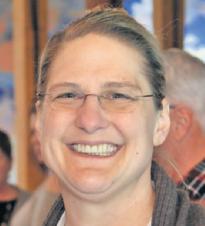

With expanded initiatives, strategic community investments and enhanced support for local businesses, the chamber is dedicated to strengthening Holyoke’s economic and cultural future.
Transformative Development and Community Investments: With $185,000 invested through the Transformative Development Initiative, the chamber has delivered high-impact improvements in downtown Holyoke. From storefront upgrades and facilitating new retail openings in the TDI district to supporting food entrepreneurs with equipment, training and certifications, these efforts have revitalized High Street and strengthened the economic backbone of the area. Projects like space activation and beautification measures, including new trash cans and dedicated waste removal services, further enhance downtown’s appeal and
functionality. Supporting Local Entrepreneurs: The chamber also has proudly partnered with Massachusetts Growth Capital Corp. to provide robust small business assistance. Through EforAll and personalized consulting, over 65 small businesses in the Pioneer Valley have accessed critical support such as the EforAll accelerator program, grant applications, navigating certifications, permitting, licensing and connections to SBA funding solutions. This comprehensive guidance empowers local entrepreneurs to innovate, grow and contribute significantly to the local economy. Inviting New and Returning Members: Membership always has been the heart of the chamber. Looking ahead, we’re placing a strong emphasis on recruiting new members and reactivating former members who have supported us in the past. By expanding our network, we not only strengthen the chamber’s foundation but also create greater opportunities to connect, collaborate and
make a difference together. With technology as a vital tool, we aim to enhance our business-to-business services, offering resources and platforms that help our members thrive in an increasingly digital and interconnected marketplace. Celebrating Community with Chamber Programming: The chamber’s annual programming remains a vital part of Holyoke’s business ecosystem. Events such as the upcoming St. Patrick’s Breakfast on March 20, golf tournament, Grow Holyoke Awards, and our annual meeting bring members together to foster partnerships and celebrate achievements. The chamber’s networking series, including Power Hours and After 5s, continues to offer invaluable spaces for professional connection and collaboration. General Cleaners just hosted the 2025 kickoff Power Hour with a coat drive benefiting the Salvation Army.
Looking Toward 2025: As we enter this new year, the chamber’s outlook is one of optimism, action and resilience. With expanded initiatives, strategic community investments and enhanced support for local businesses, the chamber is dedicated to strengthening Holyoke’s economic and cultural future.
We invite everyone to join us in shaping this success. Whether you’re ready to explore membership opportunities, participate in our programs or benefit from our growing B2B services, there’s no better time than now. Visit holyokechamber.com to learn more and be part of the progress. Together, we’re building a stronger and more vibrant Holyoke.
Lisa Totz is the interim director of the Greater Holyoke Chamber.
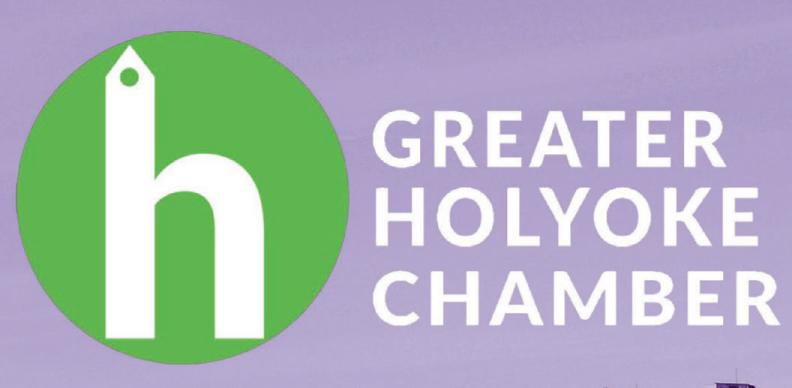
15% of businesses in the U.S. allow employees to bring their pets to work. The Harvard Business Review reports pet-friendly policies help companies attract and retain employees, improve their mental health while increasing collaboration and creativity.
Benjamin Quick brings Rockie — a 2½-year-old black Labrador puppy — to work at the Pioneer Valley Riverfront Club. Quick is the organization’s executive director and finds her to be a distraction.
“Our brains work better when we’re being tugged in a few different directions,” he said. “She’s a reminder there is more going on than the computer and phone. She’s a pleasant distraction in every way imaginable.”
Americans became accustomed to having pets around when people began working from home during the pandemic. Many CEOs are now insisting employees spend more time in the office and for some companies, pet-friendly policies are becoming a perk.
“People are putting dogs in daycare because they’re working long hours, so if they don’t have that extra expense of daycare and they’re able to spend more time with their dog, that’s a deciding factor for some people going to or staying with a company,” said Diana Szynal, president of the Springfield Regional Chamber.
The Dakin Humane Society didn’t unleash its open-door policy for dogs without setting ground rules.
Employees must clean up after their pooches and pay for any damage pets cause. The animals must be friendly and up to date with their vaccinations. Dogs are also kept on short leashes when walking through the office with their owners.
Even with those safeguards, employees at some businesses may have allergies and oppose having pets in the workplace.
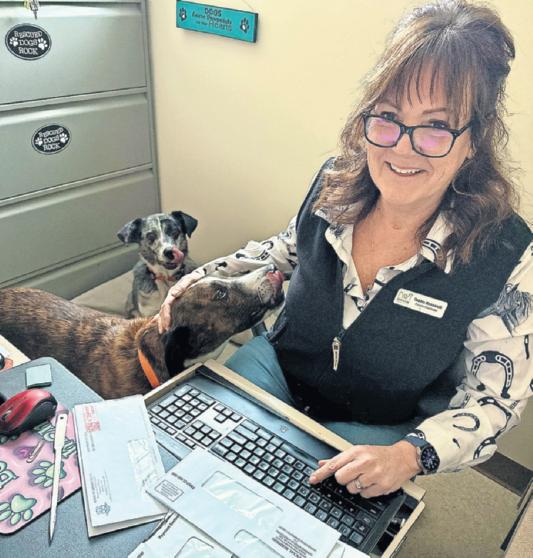
“To have a dog’s nose in your lap when you’re trying to make a hard decision relaxes you and makes you feel everything’s going to be OK.”
David Murphy, owner of Northampton Appraisal Associates and Murphy’s Realtors
Some people don’t want pets around, thinking they are unclean.
Experts say companies should have a well-defined policy in place, recognizing benefits and limitations of having dogs and cats on site.
“Touching a pet automatically sends your blood pressure down and it’s a wonderful thing,” said Lee Chambers, Dakin’s media relations and development specialist. “A lot of times, dogs will come into meetings if it’s well-behaved and OK with the person planning the meeting. We have
to pay attention and not be focused on the dog.”
Buying and selling property can be stressful, that’s one of the reasons David Murphy, owner of Northampton Appraisal Associates and Murphy’s Realtors in Northampton, allows workers to bring dogs into the office. The canines can have a calming effect on clients.
“To have a dog’s nose in your lap when you’re trying to make a hard decision relaxes you and makes you feel everything’s going to be OK,” he said.
“Dogs take the edge off and remind us we make life more complicated than it needs to be.”
Macy and Lacy, two cats, greet shoppers at Aubuchon Hardware in Shelburne Falls. Manager Stephen Wells said the cats were brought aboard to round up mice, but the felines also prompt customers to pause.
“They search for the cats and get to pet and hang out with them while they shop,” he said. “People really enjoy them. I would tell other companies to go for it.”








681 jobs, further showcasing its role in Springfield’s economic growth.
Key events driving growth
Certain events were instrumental in driving Springfield’s economic success. These include the Steubenville Conferences ($1.2 million in economic impact), USA Gymnastics events ($1.3 million), and Volley Fest ($5.4 million). Other major events, such as the North East Toy Show ($1 million) and Yankee Security Convention ($453,000), have reinforced the center’s reputation as a premier destination for conventions and tradeshows.
A standout event was the NCAA Division I Men’s Ice Hockey Re-
gional Tournament, which alone generated $1.2 million in economic impact. Events like these position Springfield as an ideal location for major sporting events, enriching the city’s cultural and entertainment scene.
Additionally, the MassMutual Center hosted popular entertainment acts like Maroon 5, AEW Wrestling and Disney on Ice.
Revenue and room nights
The MassMutual Center also excels in room-night production.
In FY24, its sales team generated 11,686 room nights, demonstrating the venue’s ability to attract visitors for overnight stays, which is vital for Springfield’s hospitality sector.
The center posted its highest-ever combined rental and catering revenue, further showcasing its opera-
tional success.
Key partnerships
The MassMutual Center’s success can be attributed to its strong partnerships with key local organizations. In addition to the Massachusetts Convention Center Authority, the venue collaborates with the Springfield Thunderbirds, Explore Western Mass, the city of Springfield, the Springfield Boys & Girls Club, the Springfield BID, the Chamber of Commerce and the Western Mass Sports Commission.
These partnerships have been essential in making Springfield a thriving destination for events.
Diversity and community engagement
The MassMutual Center remains committed to fostering diversity and
“It is heartbreaking we still don’t value the workers enough to provide them the tools to safeguard their lives.”
Sofia
Tatiana
director, Massachusetts Coalition for Occupational Safety and Health
in terms of worker deaths is warehousing and transportation. Per-capita, though, farming, fishing and forestry jobs had the most fatalities.
In Massachusetts, agriculture, forestry, fishing and hunting jobs had the highest rate of fatalities per capita in 2022, the most recent year for which statistics are available.
Landscaping, transportation, utilities and construction also have relatively high death rates in the Commonwealth.
The Massachusetts Coalition for Occupational Safety and Health (MassCOSH) and the Massachusetts AFL-CIO track and analyze workplace deaths each year. They found 62 people died from job-related injuries and illness across the state in 2023, according to the group’s 2024 report, “Dying for Work In Massachusetts.”
Construction had the most deaths, at 22, the report says.
About a third of those who died were immigrants, “raising questions about the adequacy of protection they receive as marginalized workers who do the most dangerous types of work,” the report says.
Those who died included firefighters, a machinist, roofers, police officers, a tow truck driver and a farm worker.
In Hampden County, the toll included Trung Tran, a 33-year-old nail technician who was shot and killed while working at a salon at the Holyoke Mall in January 2023. About 9% of fatal work injuries in the U.S. were homicides in 2023, according to the U.S. Department of Labor.
“There’s no such thing as a little loss,” said Tatiana Sofia Begault, executive director of MassCOSH. “It is heartbreaking we still don’t value the workers enough to provide them the tools to safeguard
their lives,” she said.
Begault wants to see more safety regulations for those working in the cannabis industry. As a new industry, there is “very little” known about workplace exposures, she said.
In 2022, Lorna McMurrey, 27, died from an asthma attack while working at a cannabis processing facility in Holyoke. The company, Trulieve, was fined. The industry has respiratory hazards, a U.S. Centers for Disease Control and Prevention report on McMurray’s case found.
Andrews wants the state to step up enforcement of speeding and traffic violations in work zones. “I’d like to see Massachusetts take a more aggressive approach,” he said. At the federal level, protecting workers from heat exposure has been key. “There’s definitely been more of a focus on worker protection during hot summer days,” Andrews said. Fields with high injury rates
supporting community engagement.
In FY24, the venue directed $374,000 toward women-owned businesses, $205,000 to minority-owned businesses and $86,000 to small businesses in discretionary spending. These investments ensure Springfield’s growth benefits a broad spectrum of local businesses, promoting an inclusive economy.
The Community Engagement Committee also supported local initiatives, including raising $5,500 for the Boys and Girls Club of Springfield during the Breakfast with Santa charity event.
These efforts strengthen the connection between the MassMutual Center and Springfield’s community, enhancing its role in the city’s economic ecosystem.
Springfield growth
The success of the MassMutual Cen-
ter and other event spaces is integral to Springfield’s economic strategy moving forward.
The most recent data shows the far-reaching impact of convention centers and arenas, which are central to tourism, job creation, business development and cultural exchange.
By continuing to support these event spaces, Springfield can build on its transformation into a thriving urban center, benefiting businesses, residents, and visitors alike. As the MassMutual Center continues to attract events and nurture local partnerships, it will remain a key driver of economic development in Springfield for years to come.
Sean Dolan is the executive director and general manager of the MassMutual Center in Springfield.

ees and partners is our top priority – at our Holyoke site and everywhere we operate,” Maureen Lynch Vogel, an Amazon spokesperson, said in a statement. She said since 2019 the company’s “recordable incident rate” dropped 28%.
A Big Y warehouse in Springfield was also among the highest injury rates, with 30 injuries reported in 2023 for its 113 employees. A spokesperson did not reply to a request for comment.
Palmer Foundry, whose website says it makes aluminum castings, reported 25 injuries among its 103 employees in 2023.
Some fields don’t have many reported deaths, but do have high non-fatal injury and illness rates. In Massachusetts, nursing, wood product manufacturing and air transportation were fields with the highest per capita rates in 2022, according to the most recent state data published online.
The Occupational Safety and Health Administration published detailed data on reported injuries in an online tracking database.
Of those that reported data in 2023 and had 75 or more employees, companies with high per-capita rates in the Valley included a paper factory, warehouse jobs, and construction. Health care was also represented, with nursing homes in Wilbraham and Great Barrington reporting high rates of injury.
An Amazon warehouse in Holyoke reported 25 injuries for an annual average of 262 employees, one of the higher rates in the Valley.
“The safety of employ-
OSHA fined the company more than $30,000 in 2023 for violations, including employees being exposed to amputation hazards and lacking signs with cautions about breathing crystalline silica, which can cause lung cancer.
OSHA classified the violations as “serious.”
The company did not reply to a request for comment. In general, reported injuries are undercounts, said Begault. Some workers do not report injuries because they fear retaliation. “There is underreporting. There always will be,” she said.













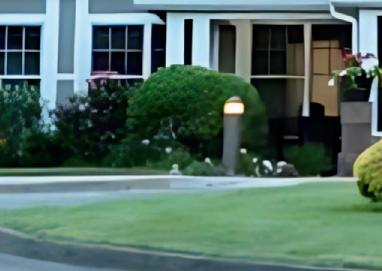





















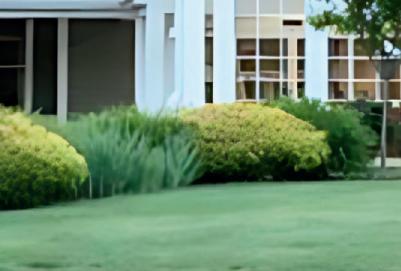







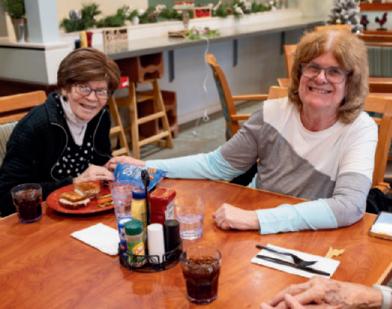












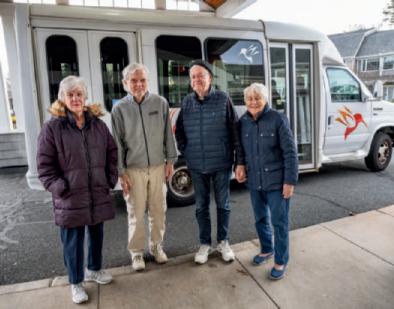
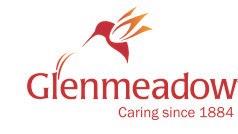
Western Mass. is building centers of excellence to create jobs in quantum computing and cyber security.

The Republican news editor shares tips he learned from a weeklong training program.



Wayne Guilmain is a metal finishing technician with A.G. Miller Co., a precision metal fabricator at 53 Batavia St. in Springfield. “We powder-coat parts, metal parts, to protect them and to make them look nice, aesthetics. The parts come to me. I hang them down a line, I wash them in two different chemicals. They go into the oven, and then they come out, and they go down to powder coating, where they get painted. And then they come out of the oven, and they cool off, and then I take them back down, and they go to shipping. Why is this important? Well, it keeps the metal good, since sand protects everything. Companies want different colors, so they like the way that it looks. It's very durable. The work? It's pretty easy and straightforward. Gotta have good work.”

For this
WMass
Uber driver, life on the road is more than a ride
By N icole W illiams Special to The Republican


I pull into the Applebee’s parking lot and see David Williams in his car, a blue SUV that could probably tell a lot of stories if it could talk. Fortunately, I don’t need it to. Williams gets out of the car as I approach. We’re family, so we both go in for a hug.
“So, you want to hear some stories about ridesharing?” he asks. “Here, let’s go inside. I’ve got stories for you.”
We sit in a booth and I pull out my phone and hit record. Williams has been driving Uber while he works on a business venture on the side. He takes out his own phone and shows me his weekly income. It’s impressive.
The waitress brings us menus as The Moody Blues plays out of a speaker above us. Williams eases into his seat, getting comfortable. He starts right in.
“Okay,” he says. “Some stories? Here’s a story. I picked up a guy at Bradley, right? And we were driving down to The Goodwin Hotel in Hartford. The Goodwin is one of the top hotels. We’re chit-chatting, and I say to the guy, ‘Are you famous?’
“He goes, ‘Well, kind of famous.’
“‘What’s your story?’ He goes, ‘Well, I used to be a Division I quarterback in Texas, and then I suffered a career-ending injury.’
“I said, ‘I’ve heard that before.’
“He says, ‘Then I was going to be a stockbroker, but I discovered methamphetamines.’”
Williams has my attention as he fills in the details.
“He ended up getting himself a 69-year prison sentence. He gets out of prison after seven years, wrote a New York Times bestseller called ‘The Coffee Bean,’ and now he’s a nationally recognized motivational speaker and has all the SEC football coaches on speed dial, on a first-name basis. That’s a rollercoaster, right?” I smile as Williams takes a sip of water and continues.
“I picked up another guy in Hartford. He was going out to UHart. And I go, ‘What do you do out here?’
“He goes, ‘I’m a professor.’
“‘What do you teach?’
“‘I teach entrepreneurialism and digital marketing.’”
“‘What’s your background?’
“‘You ever go to a baseball park?’ he asks.
“I said, ‘Yeah, I go there all the time.’
“‘You ever see those plastic things that look like baseball bats, and they put beer in the beer bats?’
“‘Oh yeah, they cost like a quarter to make and they sell them for like 10 bucks.’
“He goes, ‘I invented those.’ I said, ‘You invented the beer bats?’
“‘Yep. They sell them in every major league park in the United States, South Korea, Japan and Taiwan.’
“‘You’re a gazillionaire!’
“‘Don’t tell anybody,’ he says.
“I looked it up,” says Williams. “There’s 90 major league parks. This guy must sell millions of these things. I asked, ‘What did you do before that?’”
“‘I sold cars for 25 years.’
“One idea. The guy had one idea.”
Williams is a top-level Uber driver; what they call a “Diamond” driver.
“I’ve done 22,000 rides, everybody gets a five star. If you don’t get a five-star rating

Republican Artificial intelligence is redefining work not only for large enterprises but also for small offices and nonprofit agencies, local business executives in the Pioneer Valley say.
“It’s saving me tons of time,” said Karen Blanchard, development director for the Michael J. Dias Foundation, a group dedicated to helping people affected by addiction. “I think it’s really a game-changing tool.”
Blanchard uses ChatGPT to write grant proposals and produce social media posts about the foundation’s
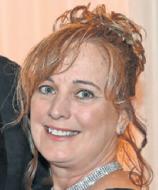
“The most valuable thing, I have more time for now. I don’t have a marketing degree. I’m not an advertising person. I feel like what I’m putting out there (with AI) is a much more polished version of what I would have done myself.”

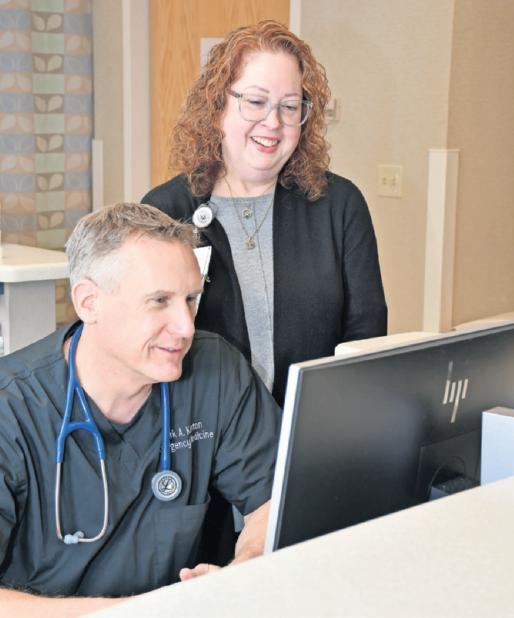
Mercy Medical Center’s Dr. Mark Kenton, left, medical director of the emergency department, and nurse Kelly Chevalier, director of emergency services, review patient information using the Epic system of electronic health records. (PROVIDED PHOTO)

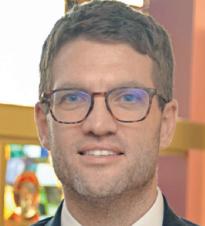
IRobert Roose
T’S A NEW SEASON for health care. The winds of change have brought stiff financial realities for hospitals and are bringing seismic shifts in delivery models that align with higher patient expectations around service, while maintaining access to care for the community. Mercy Medical Center and Johnson Memorial Hospital are not immune to these challenges. Accordingly, as we enter 2025, we are looking to meet patient demand for high-quality services in convenient locations by leveraging technology to coordinate care and providing more of it beyond the walls of our hospitals. Mercy and Johnson have long been vital members of their local communities, and as members of Trinity Health of New England, have recently come together even more through technological innovation to serve patients in Western Massachusetts and northern Connecticut.
SEE ROOSE, PAGE M14
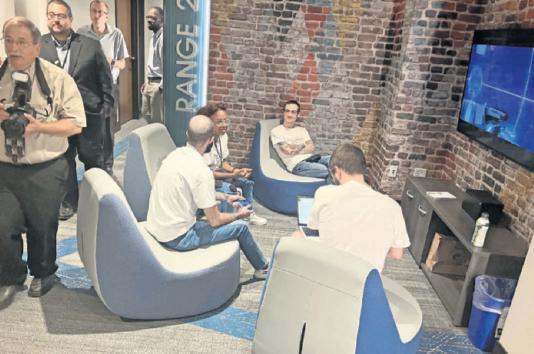


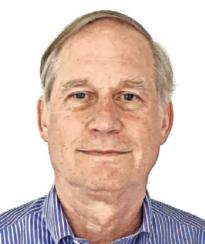
“If it proves out, it will solve problems that cannot be solved today.”
JOHN GOODHUE, EXECUTIVE

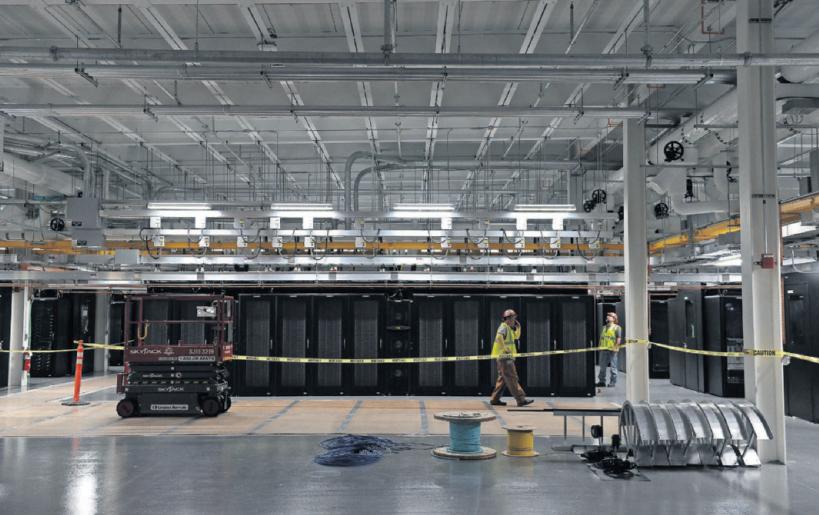
Efforts to create centers of excellence will translate to jobs
By Jim K inney jkinney@repub.com
John Goodhue, executive director of the Massachusetts Green High Performance Computing Center, has high hopes for the quantum computing technology coming to Holyoke. “If it proves out, it will solve problems that cannot be solved today,” Goodhue said. Quantum computing, research into agriculture, food preparation and preservation, clean water, cybersecurity are all seen as solutions to one problem the region has found as-yet unsolvable: What can we do to attract a large number of good paying jobs that aren’t susceptible to moving or offshoring?
Whether you are at home or driving down the highway, you’ll find innovative materials made at our Indian Orchard Operations in products you use every day — namely your windows. With our Saflex™ PVB interlayers for glass, we improve safety, security and comfort of windows in both architecture and automobiles. Why? Because we are committed to enhancing the quality of life for people around the world. It’s not simply something we say or do. It’s our purpose.
Inspiring innovation goes beyond our products and shapes how we care for society, locally and globally. Over the last few years, we have:
• installed Traffic Slow Down digital signage in the East Springfield Neighborhood,
• donated oximeters and reusable pediatric oximeter sensors to the Springfield Fire Department,
• volunteered with the YMCA of Greater Springfield’s Camp Weber each year to prepare for summer camp,
• awarded scholarship money to students pursuing STEM education as part of our annual Black History Month Oratorical Contest collaboration with our local schools, and
• supported a variety of additional community improvement efforts and initiatives for our neighborhoods.
We not only work here; we live here! And Eastman is proud to be part of the Indian Orchard and greater Springfield community.
eastman.com
Quantum computing leverages the principles of quantum mechanics to
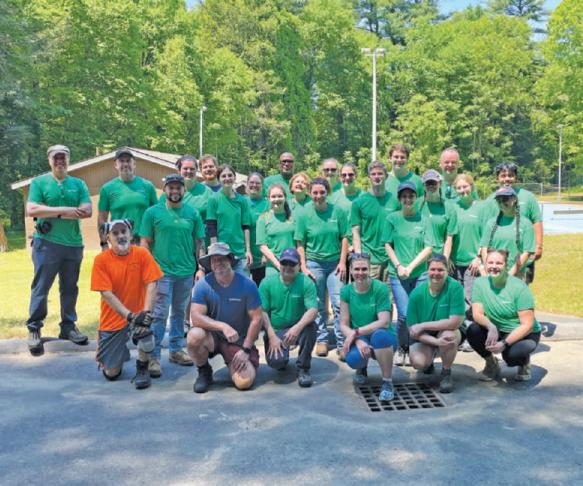



By Namu Sampath nsampath@repub.com
WESTFIELD — At the Well-
ness Center at the Barnes Air National Guard Base, employees stock shelves with donated groceries, military members stop to ask for help and families grab supplies for the week.
“I’m like the Walmart greeter,” said Brad Caney, the readiness specialist for military members and their families at the base in Westfield, home to the 104th Fighter Wing. “I try to give that welcome when someone comes in, because they could be coming in happy, or they could be coming in distressed.”
Caney has a unique role at the base. He is classified as a Title 5 employee, working both as a federal civilian employee and as a member of the military.
It’s a status that’s not unusual at places like Barnes.
He is a part of the roughly 15% of National Guard members in Massachusetts who serve as both military personnel in the Air National Guard and as civilian employees under the U.S. Department of Defense, according to June data collected by the Defense Manpower Data Center, a subsection of the nation’s defense department.
“I took a pretty good pay cut to come over here. But for my mental well being … it felt bet-
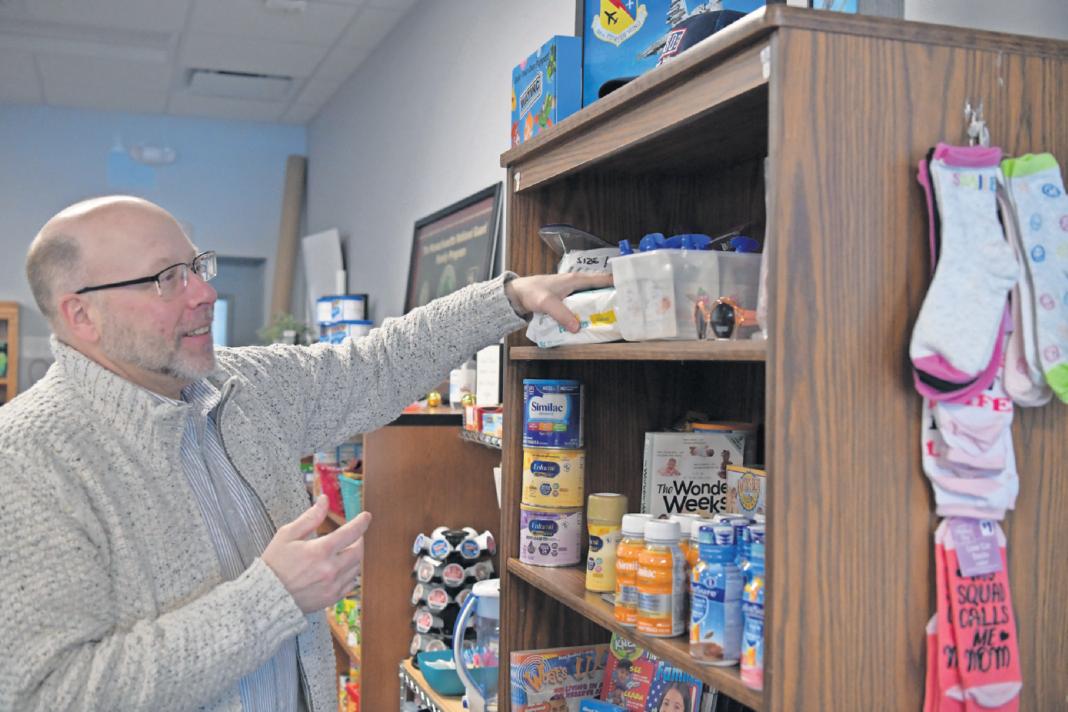
ter for me to do this job,” said Caney, who left an insurance job on the “outside” to work at Barnes. On a drill weekend, when
military members participate in trainings, Caney suits up and leads the base’s Fatality Search and Rescue Team, which recovers the bodies



issues or a boost in morale.
He receives two separate pay statements for each of his roles, though both are housed under the Department of Defense.
The center offers a therapist, a psychiatrist and support staff to help military members through anything they need assistance with.
“Those are some of our biggest things: financial needs, employment needs, housing needs. We help with that,” Caney said.
The center also creates wellness events to boost the morale of members and their families throughout the year.
Civilians are employed in different ways at a military base. Some, like Caney, are in dual-status positions. Others are either retired from the military or are civilians with no military background. Melanie Casineau, who works in the public affairs office at the base, has been there since 1998 — first as an active Guard member and now as a civilian.
of people who have died in a disaster and returns them to their families. On weekdays, he wears civilian clothes while working
at the Wellness Center, where he points military members or their families in the right direction, whether they need a mental checkup, support on
Jobs for former military personnel who are now civilian employees range from working at the Wellness Center to IT and cybersecurity to public
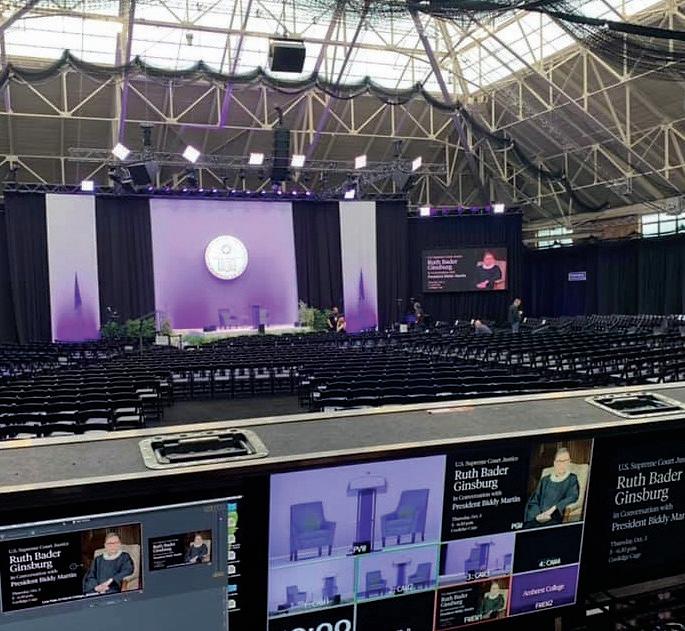

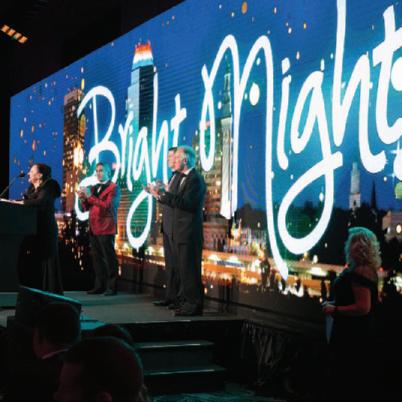



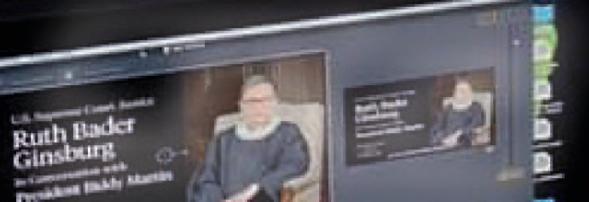
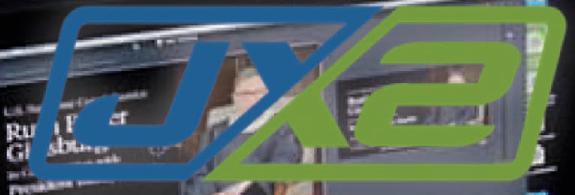


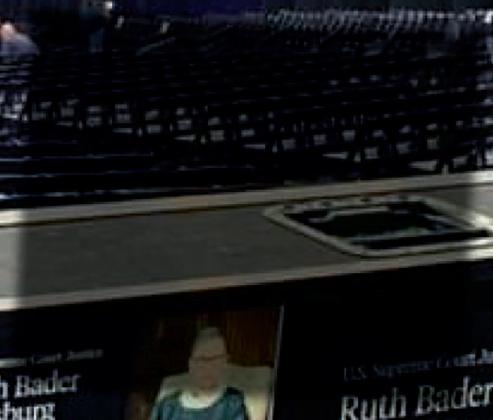
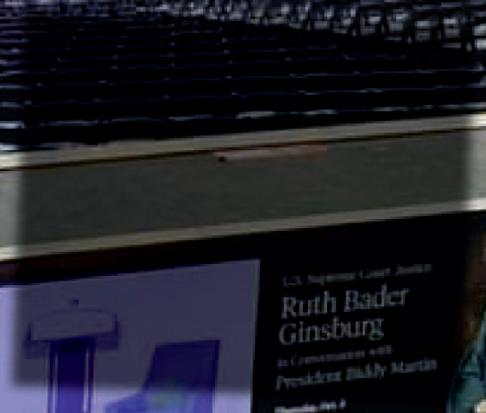
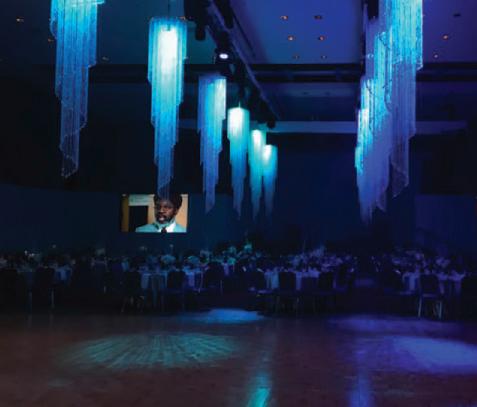




AGAWAM IS poised to begin construction of a new high school. The project represents not only the largest economic development project in the city, but also an unprecedented investment in the children of our community. When Fontaine Brothers breaks ground on Agawam’s new high school in April 2025, they’ll be starting the largest capital project in our city’s history. The new high school is a testament to our residents’ commitment to investing in future generations. At $230 million, this project represents not just a new 214,000-square-foot educational facility, but Agawam’s bold vision for the future.

Johnson

This historic investment, made possible by Agawam voters who recognized the need to replace our

“We are at a point where we are aggressively, actively looking for new members. It’s the biggest construction boom in a long time.”
aging high school, shows what can happen when a community comes together for the greater good. By choosing Fontaine Brothers, a respected local contracting and construction management firm, Agawam is ensuring that a significant portion of this investment stays right here in Western Massachusetts. The numbers tell an impressive story. During the three-year construction period, the project will create hundreds of local jobs, from skilled trades to project management and support positions. Local suppliers will see increased demand for materials and services. Even local restaurants and shops can expect to see more customers as workers
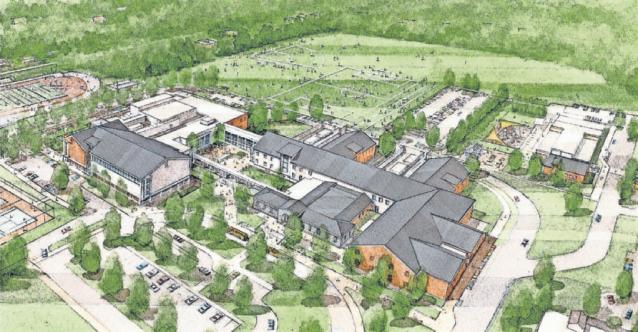
A rendering of what Agawam’s new high school will look like following its completion, scheduled for December 2028. (FLANSBURGH ASSOCIATES)
spend their wages in our community.
The economic impact goes beyond construction. The new school itself is designed to strengthen our local workforce pipeline. Modern learning spaces will help prepare students for tomorrow’s jobs, making our region more attractive to employers looking to expand or relocate here. This matters because the Pioneer Valley needs economic drivers that can attract young families and spur revitalization.
When the new school opens its doors in 2028, it will stand as proof that smart public investment and community support can create both
immediate and long-term economic benefits. Our residents’ willingness to support this historic investment demonstrates their commitment to Agawam’s future. In a time when many parts of the Pioneer Valley need economic boost, this project shows how thinking locally — and thinking big — can help build a stronger future for all of us.
In addition to beginning construction of the new high school in 2025, we will be cutting the ribbon on our new police headquarters facility. This redevelopment project represents a major investment in the future of public safety in Agawam. The new police headquarters will be
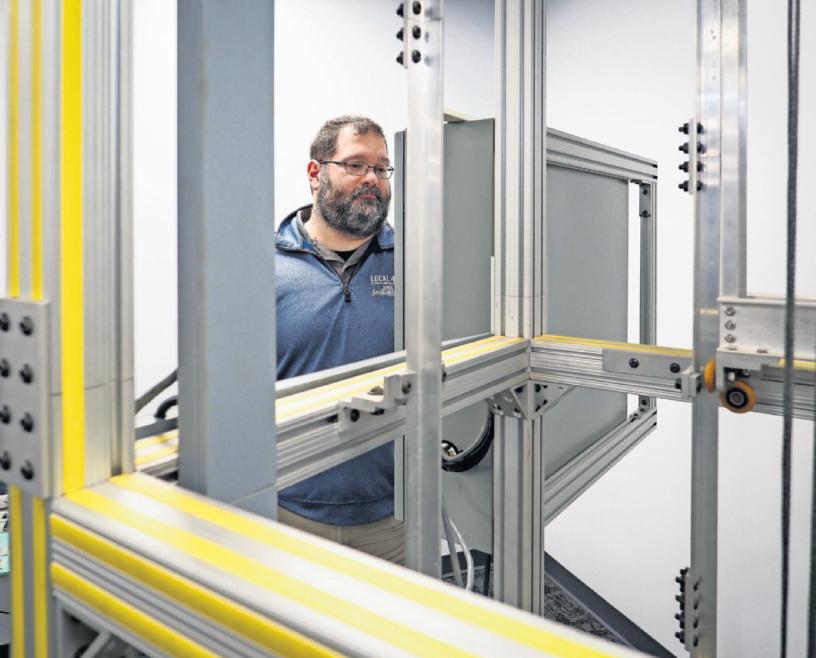
a state-of-the-art facility designed to meet our current public safety needs while allowing for growth and the introduction of new technology.
During 2024, Agawam saw the opening of a new Wayfinders affordable housing project bringing over sixty units of affordable housing into our community. I had the opportunity to visit many businesses in town such as Six Flags New England, an industry leader in the family entertainment business. Six Flags has an outstanding local leadership team with continuing plans to invest in the park to improve the guest experience. I also visited Vanguard Renewables, an innovative operation designed to convert food and beverage waste into renewable energy. Finally, 2024 also saw the opening of Still Brook Park, a passive recreation facility located on 250-plus acres in the Feeding Hills section of Agawam. Still Brook Park offers walking and hiking trails, canoe and kayak access to its beautiful pond and scenic vistas filled with wildlife. It represents a major investment to continue to improve the quality of life in Agawam. The economic outlook in Agawam is bright as we continue to strive to be a great place to live, work and raise a family.
Christopher C. Johnson is the mayor of Agawam.
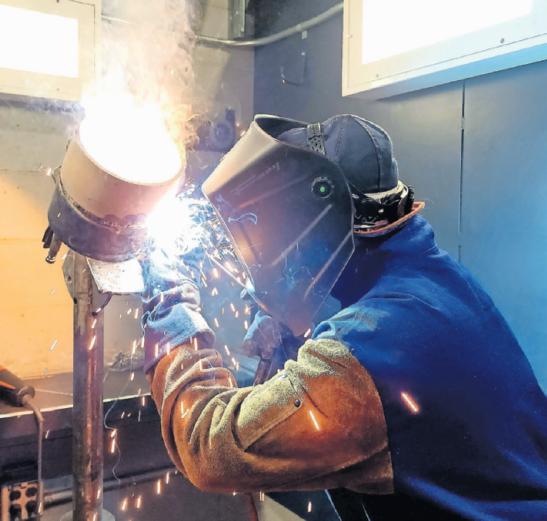
By Jim K inney jkinney@repub.com
HOLYOKE — Kora Kelly, 19, smiles as she emerges from an enclosed welding booth at the training center run by the Plumbers & Pipefitters, Local 104, in Holyoke.
A 2023 graduate of Smith Vocational and Agricultural High School, Kelly, of Northampton, is an apprentice with the union. Her five-year program requires 248 classroom hours a year and a total of 10,000 on-thejob training hours on a real project.
For Kelly, that means a long day installing drain pipes at the new $483 million Massachusetts Veterans Home at
Holyoke, then an evening in the classroom and inside the practice welding booth.
“I love it,” she said. “Welding is hard. But you get to a point with it and it just clicks.”
She likes the people, too. Being a young woman in a traditionally male-dominated profession doesn’t phase her. She’s from a “construction family” and worked on job sites as a high schooler.
“I know if I was ever in trouble, if I ever needed help, these are the people who would be there,” she said. What the construction trades themselves need is more young workers like Kelly. Unions are seeking to line up apprentices and ramp up
training — with work plentiful in the region.
“We are at a point where we are aggressively, actively looking for new members. It’s the biggest construction boom in a long time,” said Colton Andrews, president of the Pioneer Valley Building Trades Council. “We are still cruising along at the moment.”
Projects now and soon
The Massachusetts Veterans Home at Holyoke under construction has about 150 workers on site daily. But as work progresses in the spring and summer, both the state and labor unions expect to reach a peak of approxi-


mately 400 workers per day later this year. At one point, masonry workers will swarm the site.
That’s not all in terms of big projects.
The Springfield Water and Sewer Commission is undertaking to build a $300 million West Parish Water Treatment Plant, with a workforce estimated at 300 to 500 people.
Then there is the student center and dining commons under construction at Am-
herst College. Smith College is building a geothermal heating facility with union labor.
The University of Massachusetts Amherst has ambitious housing construction plans.
And unions are already planning to staff construction on a planned new Hampden County Courthouse. Meantime, in Holyoke, Sublime Systems will ramp up its innovative way of using electricity to create cement with a new plant.
Mike Langone, business manager and financial secretary of Local 104, said the
need for trade talent is urgent.
“The last few summers we’ve been straight out for pipefitters,” Langone said.
In terms of other future work, Stephen Bradley, training director at the plumbers union, notes that the region has a lot of old water, sewer and road networks, as well as older buildings Andrews said an upsurge in construction helps all the different trades represented by the council.
“There is a substantial investment in infrastructure in
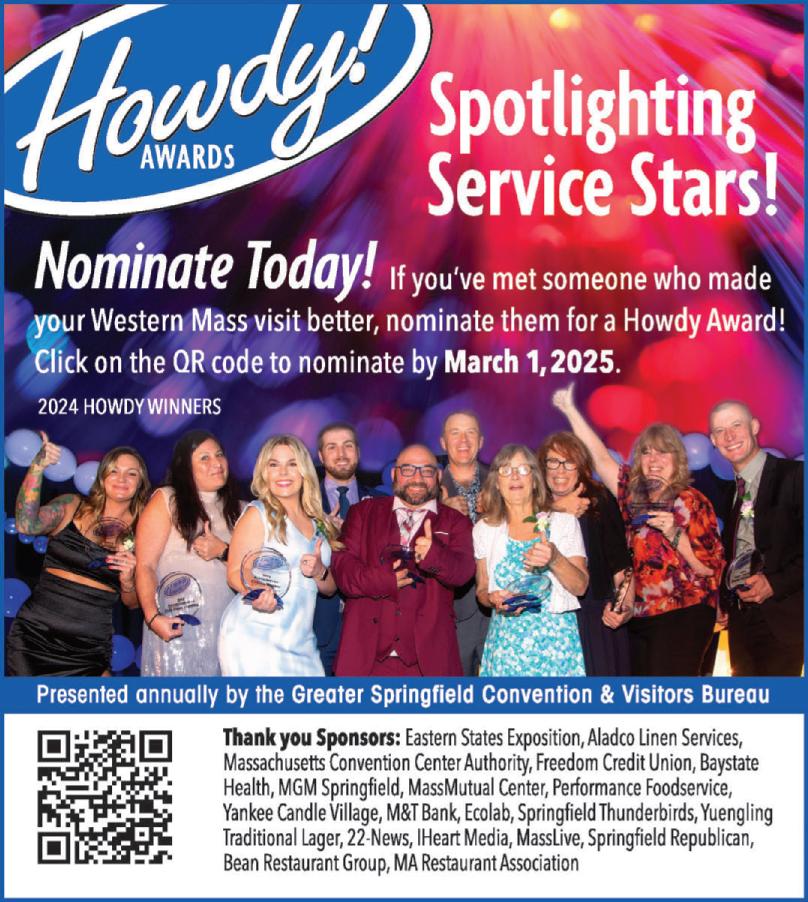
By Jim K inney jkinney@repub.com
WEST SPRINGFIELD — The last Big E
drew more than 1.6 million people and had an annual economic impact calculated at $681 million.
But that engine of commerce doesn’t fire up without the help of about 300 carnival workers — imported each year from South Africa through a visa program — who set up, staff and dismantle the fair’s midway rides and attractions.
Too few of those temporary workers are available to staff all the fairs that need them. And the industry’s ability to bring in more is tangled up in the country’s fractious politics on immigration.
“No carnival, no fair,” said Gregory B. Chiecko, a former Big E executive who is now president and CEO of the national trade group Outdoor Amusement Business Association.
The Big E earned $2.5 million or more in revenue from the midway, said Eugene J. Cassidy, president and CEO of the Eastern States.
That’s a significant chunk of money. But midway operates are even more necessary for smaller county and town fairs, July 4th celebrations and other events where truck-mounted rides can be the biggest draw.
“That’s the money we use for our mission supporting agriculture,” Cassidy said of midway revenue.
“For all the smaller fairs, that’s the money they use to support their missions, the fairs, the Lions clubs, the Rotary clubs.”
“People want to ride the rides, bring their families and have a good time,” Cassidy said.
Workers for midway operators typically come into the United States under the H-2B temporary non-agricultural visa program. Chiecko said the law creates 66,00 visa slots yearly, but allows the president to double that, which the Biden administration has been doing.
But those roughly 132,000 visas


(HOANG ‘LEON’ NGUYEN / THE REPUBLICAN)

are about half the 235,000 workers the industry says it needs, a demand documented each year following advertisements of job openings.
“Every year, there are operators who are shut out,” Cassidy said.
Not finding needed labor can mean a multigenerational family company goes out of business, leaving fairs and festivals without rides.
“No one is going into this business,” he said. “No one.”
The expenses are going up and money is tight. These are jobs Americans are reluctant to take. Experts say Americans prefer to find easier, more stable jobs. Itinerant carnivals move around the country during their seasons, which come to an end.
“And we’re going to lay you off at the end of the season,” Chiecko said.
Hiring local temporary help — as the Big E does for other jobs — doesn’t work well, because people need to be trained on how to set up and run the rides.
Chiecko, Cassidy and others in
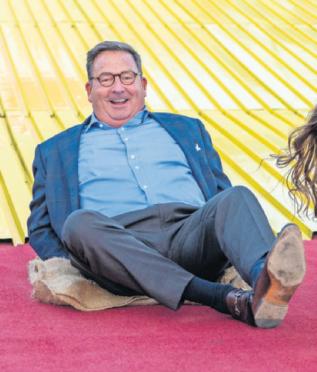
their industry are lobbying for two solutions.
One would increase the number of H-2B visas. Another would make carnival workers eligible for “P” visas –—P for performer — used by athletes and entertainers to come to the United States to work temporarily. The number of P vistas is not limited.
They had all but given up on seeing the H-2B program expanded. But recently, an internal Republican Party battle broke out between immigration hardliners and tech magnates like Donald Trump adviser Elon Musk, who is dependent on H-1B visas for skilled tech workers.
That debate, Chiecko said, give him a sliver of hope. Cassidy agrees. “This is not a path to citizenship. This has nothing to do with that.”

Locally, the biggest users of the tech H-1B visas are doctors’ offices, which use them to bring in staff in small number, typically one or two at a time. Baystate Health uses the visas, as does MassMutual.
The Gandara Center, a bilingual mental health agency, used 19 of the visas last year, according to U.S. Citizenship and Immigration Services.
In 2024, more than 2,400 employers in Massachusetts sponsored 16,000-plus H-1B visa beneficiaries.
For the carnival workers, Chiecko said his industry ran out of time in the last Congress. But he still has backers
signed on, including U.S. Rep. Richard E. Neal, D-Springfield, who was persuaded by fellow senior Democrat Rosa DeLauro, D-Conn. Chiecko and Cassidy knew they had the colorful DeLauro on board the moment they walked into her D.C. office, and saw a huge poster commemorating the Durham Fair, which is in her district. “I love the Durham Fair!” she told them. With that opening, they explained how important traveling carnival workers are to the success of these events.






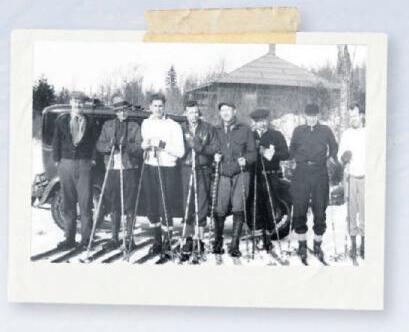




















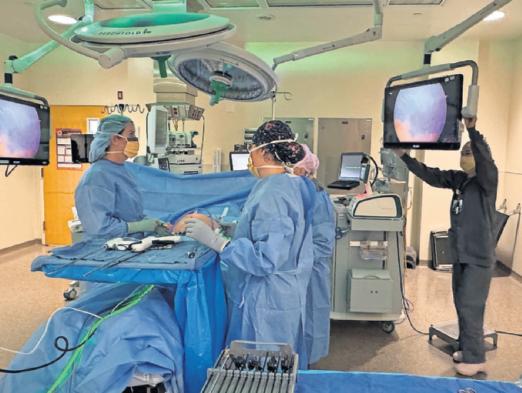
SEVEN MONTHS ago, I joined Cooley Dickinson Hospital as interim chief nursing officer and vice president of patient care services. Since then, I have witnessed what an amazing place Cooley Dickinson is and how the hospital is a critical resource for our community and the Pioneer Valley. CDH is also a vital part of Mass General Brigham, a world-renowned integrated health care system. In addition to the outstanding primary and secondary care available through CDH and its community-based practices, local residents have access to the entire MGB health system, including its academic and specialty hospitals, among a variety of outpatient clinics.
Like many industries,
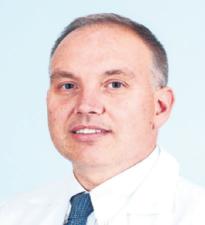

more nurse practitioners and physician assistants, also known as PAs or advanced practice providers. Nearly a quarter of health care in the U.S. is delivered by advanced practice providers, according to a 2023 study by Harvard Medical School. Recent legislation such as full practice authority — the authorization of nurse practitioners to evaluate patients, diagnose,
The health care landscape has become increasingly complex, with rising costs, reduced reimbursement and a dwindling workforce.
health care is undergoing significant transformation. Over the past three decades, I have seen these changes firsthand — early in my career as a paramedic and frontline emergency department nurse, and now as a hospital administrator. The health care landscape has become increasingly complex, with rising costs, reduced reimbursement and a dwindling workforce. No hospital is immune from these challenges.
A recent Boston Business Journal article highlighted three critical issues in the Massachusetts health care landscape that we can expect to persist in 2025: a statewide crisis in primary care access, ongoing financial headwinds and continued workforce challenges.
Here’s my perspective on two areas where CDH is focusing its efforts in 2025.
Access to primary care
Increasing access to primary care is a critical focus to deliver timely preventative care and identify health care needs before they become more advanced. Studies show that routine medical care improves one’s quality of life, while also helping to reduce costs.
Recruiting primary care physicians remains a priority for Cooley Dickinson. We are also focused on hiring
order, prescribe and interpret diagnostic tests more independently — can help to bolster access to primary care.
Creative workforce solutions
For CDH, recruitment and retention, workforce development, and ensuring a positive and professional work environment are critical areas of focus. To address this industrywide problem, we are thinking creatively and strategically. For example, on average it can take about 10 months to train a registered nurse to specialize in operating room nursing. To streamline this process and increase access for patients, the CDH perioperative team worked across Mass General Brigham and the Association of periOperative Registered Nurses to create a “Perioperative 101″ course, which includes classroom learning, simulation and clinical experiences. Four registered nurses have been hired into the program. This program also is 100% funded through philanthropic efforts. We appreciate our generous donors and the support from the CDH Development office. We also implemented a bonus program for hard-tofill roles, such as physical therapists, to incentivize and
SEE WHITNEY, PAGE M15


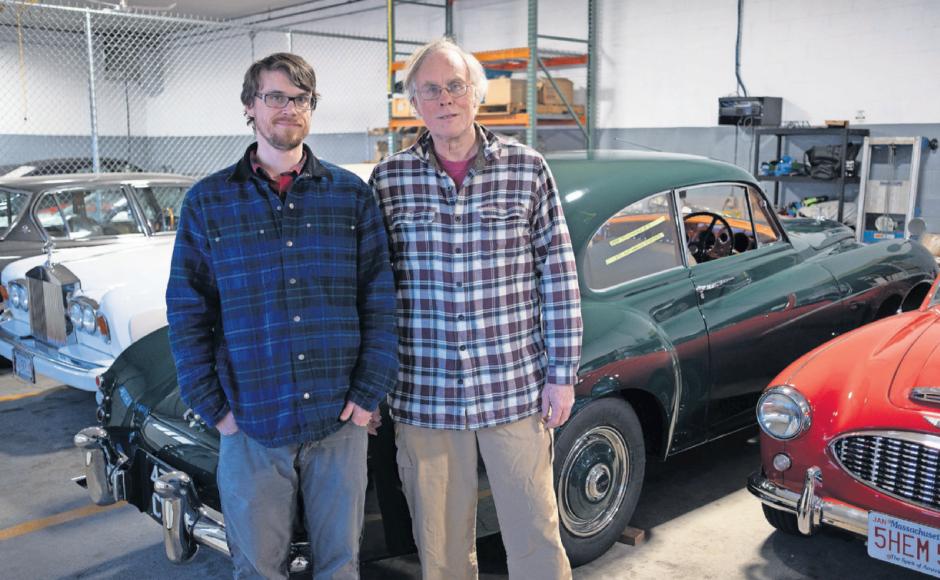
By L iam Mc L oughlin Special to The Republican
From the street, you’d think JE Robison Service is nothing more than an honest, hardworking mechanic shop serving the community with oil changes, brake replacements and engine repairs.
But something magical lies within its garages, now spread across five buildings.
On the former grounds of the Springfield Rolls Royce Factory, this business focuses on European brands including Bentley, Rolls-Royce, BMW, Mercedes-Benz, Land Rover, Ferrari, Lamborghini, and others.
John Elder Robison is the founder and owner of the business and oversees the rest of the Springfield Automotive Complex on Page Boulevard.
“We restore cars, manage collections, manage restorations and show cars on behalf of our clients all over North America,” Robison said in a recent interview.
While he always had an innate love of cars, he worked as an engineer first, not pursuing an automotive career until later in life. He founded the business in 1986 and runs it alongside his son, Jack, and his son’s wife, Shannon, who are set to spearhead the second generation of the business.
Robison is also a New York Times bestselling author known for his book “Look Me in The Eyes: My Life With Aspergers.” Since its publication in 2008, Robison has written for various publications, held workshops, given speeches, and even taught as a Neurodiversity Scholar at the College of William & Mary.
JE Robison Service is nestled alongside a variety of automotive businesses, including Tech Auto Service, Tebaldi’s Line Right, Boudreau’s Ser-
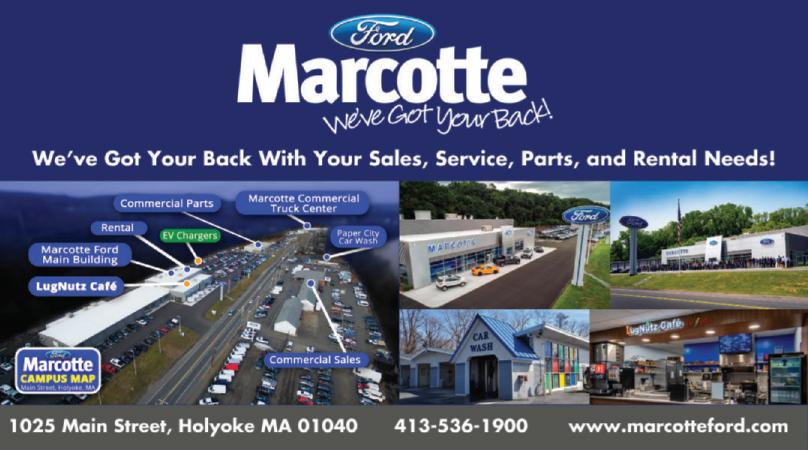
vices and Action Ambulance Service Inc.
Under the umbrella of the Springfield Automotive Complex, the group provides emergency services, commercial inspections, federal safety inspections, truck inspections, school bus inspections and more.
In all, Robison says more than 50 people work on the premises; some have developmental disabilities.
“People have often thought of that as a disability accommodation, but nobody feels like they are being accommodated,” Robison said. “We are the best at this.”
New and not so new
JE Robison Service has two divisions. In addition to the traditional service you’d find at a mechanic’s shop, Robison and his team specialize in restorations of vintage European cars — what he refers to as “automotive art.”
“For somebody who just has a car to go to work, the car is just transportation, and they don’t really care about making it perform better or look better,” Robison said.
“I wanted to work on things people cared about and things where people wanted quality work done, and not work at a price point,” he said. “You kind of can’t have those things together.”
Over the years, the business
has worked on unique vehicles from all over the world.
Many cars have been imported from overseas, while others have been transported across the country to be worked on by Robison mechanics.
Notable owners of their cars include Frank Sinatra and Nicolas Cage. They’ve even worked on an English Daimler that was formerly a part of Queen Elizabeth’s motorcade.
Austin Hatch, mechanic at JE Robison, has been with the business for 15 years and has worked on a number of notable projects over the years — some more involved than others.
On one job, he was assigned to move the steering wheel in an imported Land Rover to the left-hand side.
“It’s really cool what we do here, honestly,” said Hatch. “It’s really unique, nobody does this.”
Some of the cars he’s worked on came straight from junkyards, covered in rust and falling apart. Most of his projects have taken years to restore to authentic, show-quality condition, which has led their customers to win a variety of first place prizes at car shows throughout the United States.
A ‘fun journey’
Bobby Totti, a Robison mechanic of more than 25 years, likes the long process of the work.
“It’s been a pretty fun jour-
ney. When I started here, we did more in and out type of service,” Totti said. “Maybe the last 10 years or so, I’ve been doing more like restorations and big customization jobs.”
He’s worked on Ferraris imported from Italy, Bentleys imported from Japan and a slew of other foreign classics. Day to day, Totti primarily works alongside John Manning, another mechanic specializing in cars from the 1980s or earlier.
“It can be challenging. A lot of it we figure out on our own,” Totti said. “If you want to find information on this, when you go online, there’s just more questions.”
The pair describes the work they often do as a “2,000 piece puzzle.”
Manning said one of the Bentleys he’s working on came with a factory-issued handbook, but the manual can be hard to decipher because of its age.
“There’s a whole bunch of rods under that car to assist the brake system,” Manning said. “In the way the factory wrote out how to adjust this, it’s like reading Shakespeare — it’s written in old English.”
The parts challenge Even when Robison’s mechanics are able to translate foreign languages, they often have trouble sourcing outdated or discontinued parts. If



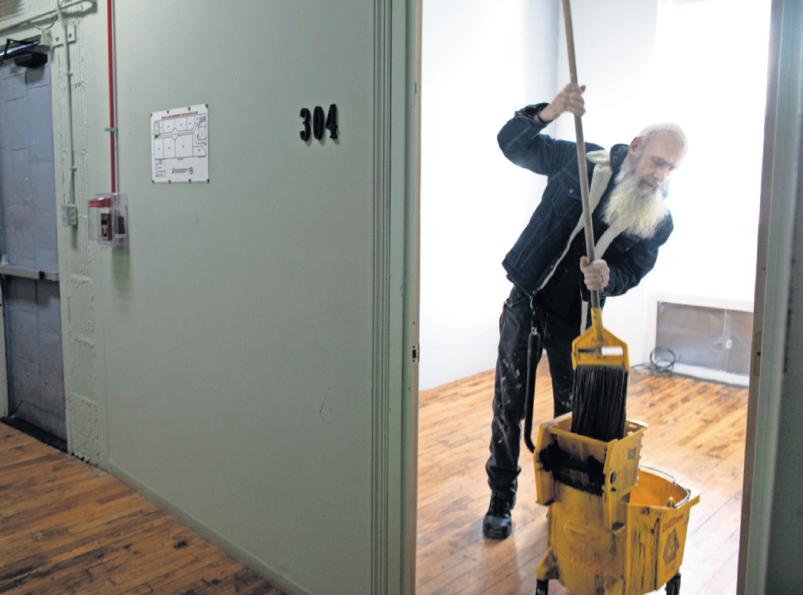
David “Spyder” LaBarge is the superintendent of maintenance at the Monkey Wrench Building on Main Street in Springfield. “If people were to walk around with me and see how I coincide with the tenants and the customers that come in, they’d see the good attitude, the atmosphere in our building. It’s like a community, our own little community. Everyone seems to get along great. ... I’ve been here nine years. We have electricians that come in, we have plumbers that come in, we have the boiler guys that come in, and nobody knows where to go or what to do. ... I’ve got the building down. It’s a big maze in here. I know where to show them to go. I know when they’re coming. I have keys ready for units we have to go in. And they like that. There’s nobody else that knows the building like I do, except for the old owner, who’s not here anymore. So I’d say, Yeah, it’d be me. I know everything goes.”
(MICHAEL J. FIEDLER PHOTO)
By Daniel Jackson djackson@repub.com
The first step in becoming a better manager, according to the leadership course I took, is a personality test. I found myself at the beginning of September stepping away from the daily deadlines as news editor at The Republican to sit in a beige classroom in an Agawam business park. Around me were a dozen managers from area companies. The course promised to give us the keys to become better leaders in our organizations.
In the coming sessions, we’d fill out worksheets, brainstorm on giant pieces of paper, pair off to practice deep listening and play-act as each other’s employees as we rehearsed delegating tasks and addressing flagging performance.
For the record, the test said I had a conscientious management style, someone who comes to the job with a reserved and analytical personality.
The goal here? To bolster our emotional intelligence and return to our companies better leaders and communicators.
No discussion about workplaces would be complete without mention of the boss.
According to a 2022 Pew Research survey, workers in the U.S. who left their jobs in 2021 often said they felt disrespected, with 35% saying it was a major reason causing them to job hop. Another 21% said their feeling of disrespect was a minor reason for the job change. I think we can infer who was doing a large percent-

age of the disrespecting. I, for one, wanted to nail down just what went into effective management after a few years on the job. It’s common knowledge that newsrooms have been poorly managed, historically.
Blame, I think, lies with the long run when newspapers were flush with cash and waste went largely unnoticed. But now, the industry is shrinking.
During this contraction, we have to make sure newsrooms perform to their full potential. We must continue to tell stories that empower residents to participate in their communities.
But the task has its challenges. Journalists are an independent lot inclined to question authority. At our best, asking tough questions of government officials comes naturally. But to manage a room full of doubters? Let’s just say there can be tough days. So for four days in September, I participated in a Principles of Leadership for Supervisors & Managers class conducted at the Employers Association of the NorthEast.
The group operates out of an Agawam business park perched on the bank of the Westfield River, the campus dotted with sculptures by Harold Grinspoon, giant logs split and painted. Fellow classmates in the $1,600 course included engineers in the aircraft industry, someone in IT, a couple of folks in banking and manufacturing. Another came from a
He was the most interesting person I’ve picked up.
from me, you’re a really special person. I’ve kicked out three people, because of alcohol.
“I work whenever I want and I try to hit a certain dollar amount each week. To be a ‘Diamond’ driver, you need to be over 4.85 on your star rating and you have to have less than a 4% cancellation rate and you have to have more than a 85% acceptance rate. I’ve been a five-star perpetual, what they call a Diamond, forever.
“You’re not going to get rich doing it, it’s not a glamorous job, but it’ll pay the bills.
“All you have to do is chitchat with people. I tell people my job is like Oprah Winfrey, instead of having a couch, I have a car. I just drive around and talk to people.”
The waitress brings our food and I ask Williams what’s the best experience he had with ridesharing.
“It’s 2018,” he starts. “I picked up a guy at the Stop & Shop in East Longmeadow.
“I said, ‘I see you have a veteran hat on. What branch of service were you in? When did you serve?’
“He goes, ‘I served from ‘41 to ‘45. I was in the Marine Corps. I’m a World War II vet. I’m 94 years old.’
“‘Where were you stationed? European theater or Pacific theater?’
“He goes, ‘Pacific theater.’
“‘See any action?’
“He goes, ‘Yeah, I was at Guadalcanal, Tarawa, Iwo Jima, Okinawa.’
“So we pull up to his house and he hops out, doesn’t use his cane. He says, ‘You want to see my stuff?’
“I’m like, ‘Absolutely!’ I think I’m in a ‘Twilight Zone’ now, right? And I walk up, we’re walking into his house. He’s got like a 600-squarefoot apartment, right? Giant Marine flag right on the porch in front.
“We go in and he pulls out a black plastic bag of black sand. Iwo Jima was a volcano, people don’t know the sand was black there. He came back and got a bag of sand off
“At the end of the day, it is really about communication,” Ebner said. “That’s the foundation of a workforce, is how we communicate.”
local museum. Some managed employees in a union environment; others did not.
We were a dozen of the 3,000 people who underwent training by the association last year, according to Allison Ebner, its president.
The association is a support organization for about 1,000 companies across the Northeast — running a hotline for thorny human resources questions regarding, say, pay transparency or laws on paid time off. The courses range from skill-based lessons on, say, how to use Office PowerPoint, to courses in HR.
But leadership is by far its most popular subject, Ebner said, with about 70% of trainees getting leadership instruction.
Based on what the group hears from members, the nature of work and managing is changing, Ebner said in an interview.
“It’s a convergence of post-pandemic work life in the workforce, plus new generations in the workforce,” Ebner said. “You’ve got four generations primarily in the workforce today. Gen Z and millennials are coming into those management positions. Baby boomers and Gen X are retiring out. And also demands from workers have changed, right? The work-life balance demands, the respectful culture de-
it and then he showed me pictures and he showed me his hat. He was a gunnery sergeant. And on the middle he had a sapphire that said ‘Guadalcanal.’
“You only get that if you were actually there. And then he’s showing me pictures of the second raising of the flag of Mount Suribachi. The first one is like the four or five guys the second was like 15 guys. He was in the second one. They got one of the big flags off the landing crafts and took that picture.
“And I went back and saw him a couple of years ago to say hi and I was sitting on his couch and he showed me a 50-caliber bullet. I’m sitting talking to this guy and there was this piece of history sitting right there. That was a few years ago.
“He has to be 101 right now if he’s alive. So he was pretty interesting. I meet some really cool people. That’s the best part about this job.”
Williams takes a bite and continues.
“I picked up this guy in
mands have really magnified the skills.”
During the pandemic, employers largely focused on empathy, Ebner said, but recently they have begun shifting to focus on accountability and the bottom line. Managers, Ebner said, need to adapt to balance both, to embrace the soft skills, because emotional intelligence is growing indispensable.
The training felt like a
theater class rolled into a psychology class rolled into a communications class.
That was by design, Ebner said, giving participants a place not just to learn the theory, but a sandbox in which to try it out. Spacing out the days when the training was held is also designed to give participants a chance to go back to their teams and try out what they learned.
Months later, as I reviewed
my notes from the training, I realized how much I could still implement. The core of management is something that has puzzled humans stretching back to Ancient Greece, something that I have studied for years.
“At the end of the day, it is really about communication,” Ebner said. “That’s the foundation of a workforce, is how we communicate. … Everybody that works for a company, whether you have five people in the organization or you have 50,000, needs to know how their position directly connects to the success of the organization.”



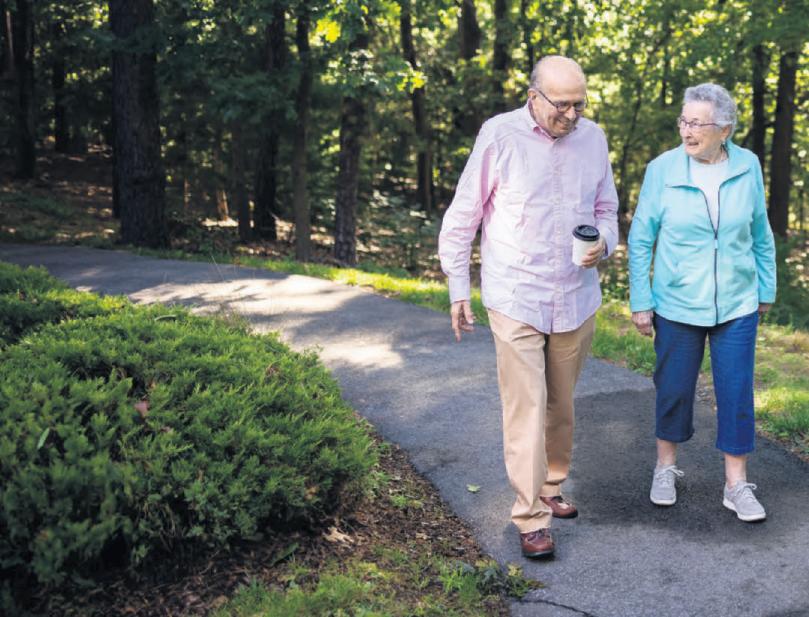


For over a century, we have defined excellence in Western Massachusetts senior living. With locations in South Hadley, Amherst, and Springfield, our welcoming communities combine the best of both worlds: peaceful, natural settings with easy access to cultural, educational, and recreational activities.
And as one of the only full continuum-of-care communities in the region – offering Independent Living, Assisted Living, and Skilled Nursing – you can take comfort knowing you’ll always have access to the care, services, and resources you need to grow, explore, and be inspired every day.
Contact us today at 413-588-5178 to learn more about The Loomis Communities. We’d love to help you find the perfect fit for your lifestyle.
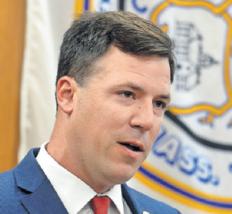
WEST SPRINGfield experienced a year of economic prosperity and community celebration in 2024. The town’s continued growth in various sectors, paired with the festive commemoration of the 250th anniversary of its incorporation, marked a significant milestone that underscores the vibrancy and resilience of this proud community.

As the town reflects on its progress, leaders are optimistic about the bright future ahead, with promising investments in infrastructure, education, public safety and technological advancements poised to further enhance the quality of life in 2025 and beyond.
In 2024, West Springfield saw significant investments that spurred economic development across several key areas. The town continued to attract new businesses and support existing ones, creating jobs and boosting the local economy.
Several large-scale commercial projects broke ground, while local entrepreneurs flourished thanks to a business-friendly climate that encouraged innovation and growth.
West Springfield saw the opening of its first two retail marijuana businesses in 2024, Cannabis Connection located at 1102 Riverdale St. and Fine Fettle located at 175 Memorial Ave. A third proposed dispensary is slated to open in 2025, located at 1010 Union St.
In addition, during 2024, the town issued 1,364 building permits with an estimated construction in excess of $50 million, of which many projects will reach completion in 2025. Notable proposed develop -
ments for 2025 include a new 102-room Holiday Inn Express located at the intersection of Elm Street and Route 5 and significant investments in the existing Balise Honda and U-Haul properties.
The town’s Central Business District continues to experience revitalization following completion of construction of a roundabout at its center, creating a more vibrant, welcoming environment for residents and visitors alike.
With its prime location at the “Crossroads of New England,” easy access to major highways and a skilled workforce, West Springfield remains an attractive destination for investment.
The year 2024 also marked a milestone for West Springfield as the town celebrated its 250th anniversary. The yearlong series of events brought the community together in a spirit of pride and unity, honoring the town’s rich history and its bright future.
The 250th anniversary celebrations not only paid tribute to the town’s past but also provided an opportunity to celebrate the progress and achievements of West Springfield’s residents. It was a year to reflect on the successes of the past while looking forward to new challenges and opportunities.
As West Springfield enters 2025, the town is poised for continued success thanks to a series of strategic investments in key areas of public infrastructure, education and technology.
The town will continue its efforts to enhance pedestrian safety with several road and sidewalk improvement projects. The town will also continue buildout of its municipal fiber network in partnership with Westfield Gas & Electric/ Whip City Fiber, bringing high-speed internet to more homes and businesses.
This expansion of broadband access is critical to ensuring that residents and local businesses can stay connected in an increasingly digital world, promoting further economic growth and opportunities for remote work.
The town also continues to make substantial investments in its public schools, with a focus on modernizing facilities and enhancing educational resources for students.
By L iesel Nygard
Special to The Republican
Cities across Western Massachusetts face a large number of vacancies throughout their governmental departments, a labor gap due in part to retirements.
To fill these posts, officials say they’ve gotten creative.
While the specific open positions vary by municipality, most of them need department of public works employees.
For instance, the bulk of Northampton’s 23 vacancies are within the city’s DPW, especially after the pandemic, according to Chad Dunham, Northampton’s human resources director.

“The city has had recent challenges recruiting qualified candidates for certain positions such as firefighters and police officers and most notably DPW positions such as truck driver [and] laborers and equipment operators,” Dunham said in a statement to The Republican. “These challenges are compounded by an influx of retirements of long-time city employees in recent years.”
The city of Greenfield faces a similar predicament. Of its 14 open positions, most are within the DPW, including senior operators for solid waste and sewer and drain craftsmen.
But help may be on the way, says Matthew Conway, Greenfield’s communications director for the mayor’s office. Candidates for about a third of these job postings are in the final interview stages.
“We’re going to get that number reduced pretty soon,” he said.
The city of Chicopee is looking to fill 16 DPW positions, in addition to 10 other city jobs across different departments including clerical, financial, teaching and public safety positions, according to the city’s website.
What candidates want Michael Pise, chief of staff for Chicopee Mayor John Vieau, said that hiring is made harder by issues related to pay, benefits and work schedules.
Dunham echoed the compensation concerns for Northampton.
In Greenfield, Conway said many positions demand that candidates


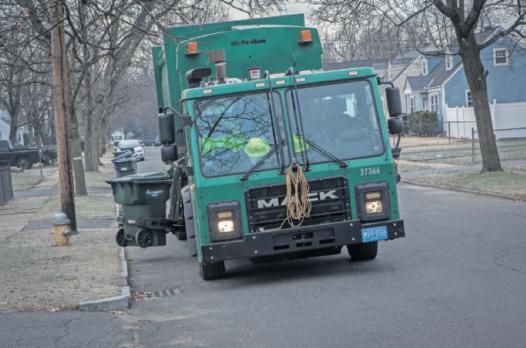
to hold specialized qualifications or requirements, such as an FID card, drug test, Civil Service exam and or commercial driver’s license. That last requirement is often needed for DPW jobs.
In an effort to find qualified candidates, Chicopee has worked to highlight the benefits the city jobs offer, as post-pandemic job seekers are increasingly focused on work-life balance, Pise said.
“Beyond just insurance, they want to know about reasonable accommodations, PTO, retirement plans, and how the organization supports employees overall,“ Pise said. ”Because of this shift, we make sure to emphasize these aspects more in our recruitment efforts.”
Chicopee has also been conducting and participating in job fairs while using social media platforms and third party agencies to find candidates. CDL licensing programs were developed for Chicopee’s DPW workers.
Taking special steps
Bill Mahoney, Springfield’s director of human resources and labor relations, said the city has taken “unique steps to recruit,” as it works to fill roughly 40 positions.
Bill Mahoney, Springfield’s director of human resources and labor relations, said the city has taken “unique steps to recruit,” as it works to fill roughly 40 positions.
In the past, Springfield has held “Walk in Wednesdays” to expedite the process of applying for work. The city has placed lawn signs across from City Hall to spur applications for police officer and firefighter positions.
Recently, Mahoney said three open houses were held with police officer candidates to discuss the job and the Civil Service testing needed for the position. Open houses are offered when recruiting for the firefighter Civil Service exam.
On top of that, the city sends staff to attend job fairs at area colleges and sets up recruitment tables at annual pancake breakfasts and during the Pride parade.
Some of the city’s vacant
positions are seasonal and can be offered to Springfield students. The city has gone to high schools to present these positions and offer free lifeguard training for the students. It partnered with Putnam Vocational High School to have interns work at Springfield’s DPW and fire department, roles that can lead to full time employment after graduation.
Northampton has also made extra efforts to find candidates to fill its open positions.
For instance, the city added a $5,000 sign-on bonus for firefighter candidates who hold a paramedic certification. Because of hiring challenges, the Fire Rescue Department set aside an old practice of hiring only firefighters with paramedic certification. Instead, it implemented a practice of hiring firefighters or emergency medical technicians without paramedic certification under the condition that they obtain certification within 2½ years of their hiring.
To attract more candidates to its DPW, Northampton introduced an entry-level laborer position which does not require a CDL, a license that is tradionally required for nearly all full-time DPW positions.
Dunham said the hope is that some of these employees will train for and receive a CDL in the future.
In Greenfield, Conway said the city is adapting to modern job search habits by actively promoting openings on social media platforms like Indeed and LinkedIn.
“It’s very important to be kind of cognizant of the different mediums now that people really search,” he said. “People don’t just go to their newspaper and look at the daily classifieds anymore.”
































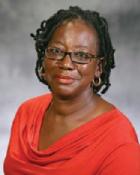

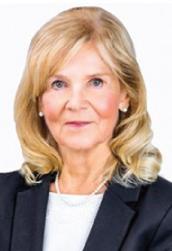















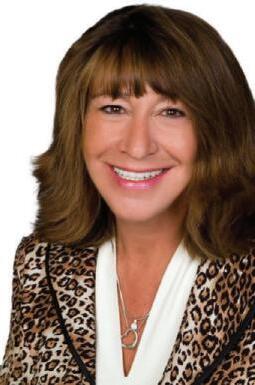


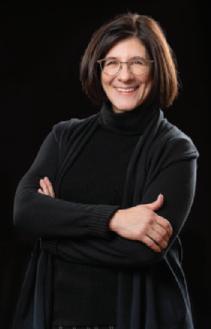


















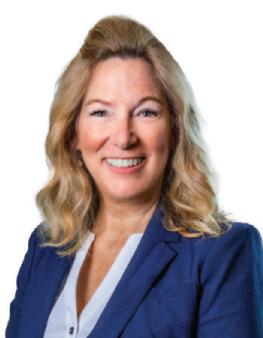


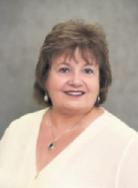





By Samantha Paul Special to The Republican
At colleges and universities
across Western Massachusetts, business departments are taking differing approaches to how they prepare students for a changing financial landscape that includes cryptocurrency.
While various cryptocurrencies continue to gain popularity, including Bitcoin, now valued at over $96,000 with a market capitalization of over $1.91 trillion, crypto has also been viewed as a high-risk investment with equally high environmental consequences.
Bitcoin mining, the process of validating data in the blockchains that operate the cryptocurrency, requires a significant amount of electricity and computing power. However, the reward for validating that data can earn users upwards of $60,000, which keeps the currency sought after.

Bitcoin, now valued at over $96,000, has a market capitalization of over $1.91 trillion.
Overall, there appears to be no standard requirement for business students to be enrolled in a cryptocurrency-related course at any of the region’s institutions.
At Springfield College, Katz says students have been taking crypto-related learning into their own hands if cryptocurrency is an avenue that interests them.
Many collegiate departments are instead looking to integrate more coursework
Overall, there appears to be no standard requirement for business students to be enrolled in a cryptocurrency-related course at any of the region’s institutions.
Not surprisingly, with this digital currency disrupting traditional finances and revolutionizing how businesses operate, talk of cryptocurrency is now entering the classroom.
But not everywhere.
At Springfield College, professors are continuing to take a more traditional approach in their financial department, according to Laura Katz, an associate professor and chair of the Department of Business Management. The college has not incorporated crypto into its curriculum in any organized way and does not have any immediate plans to do so.
In contrast, professors at the University of Massachusetts Amherst aim to keep their business management students in the loop with courses, clubs and labwork focused on crypto.
One undergraduate course, “Cryptocurrency and Digital Assets,” teaches students about differing proof-of-work and proof-of-stake currencies, while also exploring blockchain applications.
Beyond the classroom, students at UMass are provided with opportunities to engage in an undergraduate blockchain club through the university’s Isenberg School and Management. Research opportunities with Dr. George Bissias in cryptoeconomics and related technologies are available to computer science students.
Aside from electives or research projects, the presence of cryptocurrency in higher education curricula in the Pioneer Valley is still emerging.
2025 IS HERE, AND I am thrilled to continue serving as mayor of the city of Greenfield. Before we look ahead at the goals and challenges for this year, I wanted to reflect on what we accomplished in 2024.
My motto has always been “moving Greenfield forward together.” This is a principle that I have deeply taken to heart during my time in office. In 2024, we made tremendous strides in meeting access, providing additional avenues for residents to participate in everything happening in our community. We created a new overnight warming center in partnership with the Salvation Army and critical social service agencies, providing a safe resource for our at-risk populations during frigid conditions. We received several grants to improve our sidewalk accessibility in high-traffic areas and install fiber optic cable at the Weldon.
We established our lowest tax rate since fiscal year 2012 and infused the highest new growth total in years. 2024 included several noteworthy benchmarks, such as the completion of the new Greenfield Fire Station, new bocce courts at Beacon Field and the Abolitionist and Underground Railroad Art Walk.
In addition, we welcomed several new staff members who are essential to the city’s success. Police Chief Todd Dodge continues to make tremendous strides with the
CONTINUES FROM PAGE M6
they can’t buy needed parts online, or source a component through another specialty business, JE Robison Service is able to make parts themselves in many cases.
Jack Robison is the one who specializes in this sort of fabrication, relying on advanced CNC and 3D-printing machines to produce functional parts that play a vital role in helping them complete their projects.
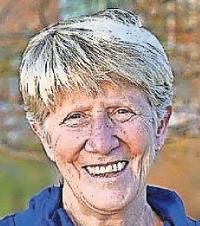

Greenfield Police Department, shaping the organization into a community-centered agency by establishing the Community Impact Unit and the in-development downtown substation.
New Finance Director Stephen Nembirkow, a former chief financial officer for several school districts, also brings stability and leadership to our finance department. We also addressed leadership vacancies in our health and energy departments with Michael Theroux’s hiring and Carole Collins’s return. These individuals, along with long-standing stalwart employees of the city and other new faces, are committed to making Greenfield the best place it can be. 2025 promises to be another productive year for Greenfield. One of the biggest challenges facing Greenfield and communities across the nation is housing, both
College, to attract qualified students to work with them.
The school is believed to have the only auto restoration program offering a four-year degree in the country.

in terms of availability and affordability. I am pleased to share that we are proactively developing new housing resources, including building approximately 600 housing units in the coming years. I will work with our Community and Economic Development department and private developers to prioritize these projects and ensure we create housing that meets all demographics.
Supporting economic growth is another priority.
In collaboration with the Greenfield Business Association and the Franklin County Chamber of Commerce, we will continue fostering a dialogue to see how we can help strengthen and support our business community. We will continue to focus on promoting our community as a welcoming place to shop, live and visit.
I envision us accomplishing several benchmarks in 2025. We are preparing to
While a changing of the guard is coming to fruition at JE Robison Service, Robison Sr., who’s about to turn 70, plans to remain active in the background. He has a lot of pride in the
present a balanced budget that maintains the city’s essential services for our residents. This late spring, we will roll out our new automated recycling program to make recycling easier and more energy-efficient in our community. We will continue supporting our city’s arts and culture and joining together for trademark community celebrations, like the Winter Carnival and Bee Fest. We will establish forward-thinking plans for our city’s future, always keeping affordability and accessibility in mind as vital principles to upkeep. It is a tremendous honor to serve as mayor of Greenfield, and I promise you all that I am working around the clock to make this city a better place for us all. I look forward to continuing to grow upon our tremendous progress in year one.
Virginia “Ginny” Desorgher is Greenfield’s mayor.
work he’s done over the last 36 years. “We do a lot of diverse things that are important to people here, and I’m proud that we’ve made a thing that’s an enduring part of the community,” he said.
surrounding artificial intelligence and its future impact on business and STEM fields.
Environmental concerns
At Smith College, some students are learning less about mining cryptocurrency and more about making the mining process more environmentally friendly.
In the 2023 academic year, in collaboration with the Fidelity Center for Applied Technology, a student team from Smith researched and designed a capture system to repurpose the heat produced by crypto mining.
The Smith College Design Clinic says research endeavors like these help support student interest in innovation and the environment through engineering coursework.
Even with a limited increase in crypto study in college, how have these learning opportunities set students apart upon graduation and in the workforce?
Nathan Krosenkranz, an alum of Western New England University, has built a career in investment opportunities since his graduation in 2021.
His cryptocurrency newsletter, “Nate’s Crypto Corner,” helped him stand out to employers as he sought professional opportunities in the digital investment space. Similarly, Jakob Tilsch, a 2022 graduate of Westfield State University’s mathematics and economics program, was able to analyze cryptocurrency markets using his dual degree.
“This is for making parts that we can’t find anywhere else, as well as making new parts that never existed to begin with,” he said, speaking about a specialized machine. He explained that he also uses programs, like CAD, to design components for use in any of the cars the business works on, and then physically produce them in-house.
“You have to have the ability to make them,” his father added. “My son is actually responsible for a lot of that here, for collectible cars from the ’80s and ’90s — that’s a time period where cars were starting to be electronic. For these collector vehicles, he actually engineers modern electronics ... to take over the function of obsolete control units in vintage cars.”
The younger Robison is next in line to take charge of his father’s business. While he’s excited to take the reins, he recognizes it’s been a challenge to find employees with the knowledge and skills required to support their work.
“This is kind of a unique place, and there’s just not that many people in the country that work on this stuff, and most of them are old, and getting older,” Robison said. “There is a trickle of younger people who are interested in it, but they come from all over — it’s a nationwide thing.”
He hopes to strike up a partnership with a school in Kansas, McPherson




IN HOLYOKE, EVERY-
thing old is new again.
Old mills are being repurposed for new industries. The Connecticut River, power source for dozens of 19th century manufacturers, is being harnessed anew by high-tech companies that like their energy clean, green, and inexpensive.
History lesson: Early industrialists took note when they learned of a steep drop in the Connecticut River that indicated an astonishing level of waterpower — 6,000 cubic feet per second. The location was present-day Holyoke. In the mid-1800s, a group of Boston investors oversaw the creation of a system of dams and hand-dug canals to power a variety of mills: paper, textile, wool, and silk, among others.
The mill economy had a
the Dodgers in the World Series and we’re talking about it and I say, ‘Yeah, sorry about the Sox beating the Dodgers.’
“He goes, ‘I’m still mad at them for leaving Brooklyn!’
“I’m like, ‘That was like 1958! That was 60 years ago, buddy. You might want to let that one go.’
“Come to find out, when this guy was a kid, he used to mow Jackie Robinson’s lawn. The Jackie Robinson in Brooklyn and he goes, ‘Yeah, Mrs. Robinson, she was a really nice lady.’
“I’m like, ‘Holy smokes!’” I smile, because we’re both baseball fans. “Pretty cool,” I say and I mean it.
Williams continues, “There was this one guy that I picked up at a warehouse at about two o’clock in the morning. We’re driving and talking and he goes, ‘Yeah, I used to be a Blood.’
great run for decades and Holyoke prospered. But by the middle of the 20th century, New England’s mills began to slump. The changing economic landscape, postWorld War II globalization, and deindustrialization hit the city hard. From 1955 to 1970, industrial jobs started to vanish and — one after another — Holyoke’s mills went silent.
Left behind were Holyoke’s famous canals — a threetiered, 4½ mile system that runs throughout downtown Holyoke and continues to provide water to generating stations. The hydroelectric power generated by the venerable but well-maintained canal system is cheap, renewable, uninterrupted, and green. Very green.
James Lavelle, general manager of Holyoke Gas & Electric, notes that the utility’s electric portfolio is, on average, just over 80% carbon-free.
“On a good hydraulic year (robust river flows) we can be over 100% carbon-free, as
I’ve ever met. You’re unbelievable.’”
“Any rides that surprised you?” I ask.
“One lady I picked up at two o’clock in the morning and she paid me to drive 120 miles to New Hampshire. She said she forgot her pocketbook. We come down a small road with a grove of trees and she says, ‘Stay here, I’ll be back in like five minutes.’
“So I’m sitting in the driveway and all of a sudden she comes running back, like 10 minutes later, and she says, ‘We gotta go! We gotta go!’
“And then her phone hooks into my car system and I can hear a guy screaming at her and they’re going back and forth. She drove an hour and a half at two in the morning and paid me at least $200 to break into her ex-boyfriend’s house and start screaming at him.
“Yeah, every day is a story. One night it can be a really interesting job or it can be a really boring job. All in the same night.”
David Williams, Uber driver
“‘You know they have the Bloods and the Crips,’ he explains to me. I nod.
“So we’re talking and he says, ‘I know murder.’ Like he knew murder, you know what I mean? You get that feeling. The air got cold when he said that. He left the gang when he was 16. He moved up here. He’s got a job in a warehouse. He’s going to school. He discovered Jesus. And you know, I don’t remember everything people tell me, but I remember what he told me.
“He said ‘Remember this,’ as he got out of the car.
‘Turn all your problems over to God.’” Williams shakes his finger as he says this to me and a quiet intensity moves across the table.
“Do you ever pick up students?” I ask.
“I pick up students all the time. I picked up a girl the other night at Dunkin Donuts. She’s studying biomedical engineering, specializing in stem cells. She was born in the Dominican Republic, grew up in the Bronx, works full-time at Dunkin’ Donuts, then works at a store, but she’ll graduate college without any debt. She’s going to go on to graduate school and then medical school. She’s working her way through college. I told her ‘You’re probably the most impressive person
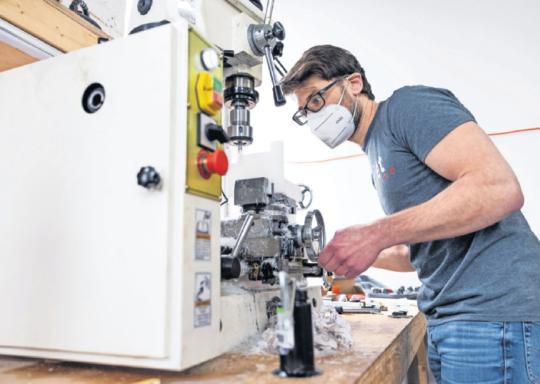
was the case in 2023. In a year with lower river flows we can fall just shy of 80%. We also have a 100% carbon-free program for our commercial and industrial customers, where we purchase carbon-free credits to allow participating customers to certify that their products are produced with zero carbon power. We have a couple of customers enrolled
in that program at present,” according to Lavelle.
Holyoke’s environmentally exceptional attributes appealed to a coalition of corporate and academic institutions that in 2009 announced the development of a high-performance computing center in Holyoke. The coalition specifically cited the city’s clean power as an enticement.
Word of Holyoke’s low-cost green energy spread. Cannabis grow facilities, which are high energy users, took advantage of vacant mill space and low electric rates.
More recently, our low-carbon energy helped attract Sublime Systems, which has developed a revolutionary process for manufacturing cement. Unlike conventional cement making, which involves kilns burning fossil fuels resulting in a massive carbon footprint, Sublime Systems uses renewable energy to power an electrochemical process to form its cement. Sublime’s selection of Holyoke for its commercial expansion was the result of collaboration with the Mayor’s Office, the city’s Office of Planning and Economic Development under Director Aaron Vega, the City Council, and the HealeyDriscoll administration. They came through with critical incentives: a state tax credit from the Economic Development Incentive Program and local Tax Increment Financ-
ing from the city of Holyoke to offset property taxes. After an extensive diligence period, the company secured 16 acres in the city’s Flats neighborhood on Water Street as the site for its first commercial manufacturing facility. The property formerly housed paper mills and is powered by Holyoke’s robust hydroelectric resources — critical infrastructure for Sublime’s fully electrified cement manufacturing process. Our clean, green energy also has helped attract clean-tech businesses such as food safety pioneer Clean Crop, eco-food packager Simple Pak and nanoscale innovator Xenocs. The same natural resources and entrepreneurship that made Holyoke a world-class industrial hub are back in play. My hometown, once known as the Paper City, is now evolving to be the Clean Tech Manufacturing City. And I could not be more optimistic.
of Holyoke.

“I’m like ‘Oh my God, she just committed a crime, breaking and entering. And even worse, I’m an accessory. I’m driving the getaway car!’
“And she’s coming down yelling, ‘I’m not crazy! I’m not crazy!’
“And I’m like ‘No, I think that’s the definition of crazy, what you just did.’ After that I took a break from Uber.”
I’m smiling again so Williams continues.
“Yesterday, actually, I picked up this lady in Danbury and she gets in and says ‘Can we get there by four o’clock?’
“I said, ‘I couldn’t get there by four o’clock if I had jets on my car, maybe 4:30.’
“She says, ‘I’m pregnant. I think I’m having my baby!’
“I said, ‘Don’t have the baby in my car, I don’t know how to do that!’ I got out at like 4:20 and thank God she didn’t have the baby in my car!”
“Wow,” I said with a look of shock as I tidied up my empty lunch plate.
“Yeah, every day is a story. One night it can be a really interesting job or it can be a really boring job. All in the same night.” Williams pays the bill and we get up to leave. I stop the recording and we walk out the door. He says he has to click back on. We hug and say our goodbyes and as I watch him drive away, I wonder who will be his next story.

‘I
Siobhan Magee is executive chef at MGM Springfield: “People might be surprised to see how many hours we’re open. There’s always something going on. When I first started here, I had never run a production kitchen of this volume before, so there are a lot of moving parts to keep track of. A lot of things are always on the go. You’re always having to be a good two to three days ahead to just stay ahead of it. … I love it because after so long of being in this profession — I’ve owned my own places, I’ve been executive chef at many places — I love this because it is truly challenging. … I love the challenge of a kitchen. I do not love the challenge of computers, but I’m embracing that. … I love producing food. I love teaching other cooks that want to learn and that want to grow. We actually just started doing a roundtable with the cooks. You know, they’re picking out certain things that they want to learn, and I’m teaching them this stuff. My favorite dish to make is always stews or soups, never in a crockpot.”

S A PARTNER AND PROPERTY

Amanager of 1350 Main St., the MassLive building in downtown Springfield, I’ve witnessed firsthand the dramatic changes in our urban landscape over the past two decades. From my office on the 14th floor, where my company, NAI Plotkin, maintains its corporate headquarters, I’ve had a front-row seat to both the challenges and opportunities facing our downtown office market.
Like many property owners across America, I watched with growing concern as the COVID-19 pandemic transformed our traditional understanding of office space. There was a time when I thought all hope was lost. The mounting vacancies in our 18-story Class A office building led me to seriously consider converting the entire property to residential units or a hotel. The future of downtown office buildings seemed precarious at best.
I’ve always believed that the key to revitalizing Main Street lies in bringing people back to work downtown. When office buildings are full, their occupants naturally support the surrounding ecosystem — the restaurants, retail shops, banks, newspaper stands and convenience stores that give our downtown its vitality.
In 2024, an unexpected opportunity emerged that would change everything. The Discovery School, a specialized STEM institution, expressed interest in our penthouse suite. Today, after investing over $2 million in renovations, they’ve created a state-of-the-art learning environment where about 300 students can earn college credits while completing their high school education.
The success of the Discovery School already has catalyzed further positive change. I was thrilled when Tech Foundry, a Springfield-based organization that teaches young people computer repair and technology skills, decided to lease 10,000 square feet in our building. The synergy between Tech Foundry’s mission and the Discovery School’s STEM focus creates an exceptional learning ecosystem that I believe will benefit our entire community.
From my perspective as both a property owner and a longtime stakeholder in Springfield’s downtown, this educational adaptation represents more than just a
My team and I are committed to creating a future in which the town continues to grow sustainably, ensuring that every resident and business has access to the tools and infrastructure they need to thrive.
West Springfield’s ongoing investments in roads, schools and technology are all integral pieces of a broader vision to
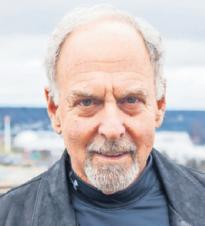
solution to vacancy issues — it’s a reimagining of what our urban office buildings can be. The students don’t just occupy space; they bring energy and purpose to our downtown. During breaks and after classes, they fill our streets, patronize local businesses, and contribute to the vibrant atmosphere we’ve always envisioned for Springfield.
The Discovery School’s presence already has sparked renewed interest in our remaining office space — there’s something appealing about having a forward-thinking educational institution as your neighbor.
As I look out from my 14th-floor office today, I see a different downtown than I did just a few years ago. The sight of students entering our building each morning, the increased foot traffic on Main Street, and the growing synergy between education and technology in our space all point to a promising new chapter for downtown Springfield.
This transformation teaches us an important lesson: Sometimes the best solutions come from thinking beyond traditional uses. By embracing education as a new cornerstone of our downtown office market, we’re not just filling vacant space — we’re investing in our community’s future, while providing a model that other cities might follow.
Students are just steps away from the Springfield Museums, the MassMutual Center, Springfield Symphony Hall and the newly renovated historic Court Square Park.
This proximity to these cultural landmarks serves a deeper purpose beyond mere convenience. Every day, these young people are immersed in Springfield’s rich cultural fabric. This daily exposure to our city’s cultural assets plants seeds that I believe will bear fruit in the future.
It is my fervent hope that these students, having experienced the true character of downtown Springfield during their formative years, will return in their adult lives with a genuine appreciation for what our city has to offer.
I couldn’t be more excited about what the future holds, not just for 1350 Main St., but for the next generation’s connection to downtown Springfield.
Evan C. Plotkin is the president and CEO of NAI Plotkin.
create a town that is wellequipped for the challenges and opportunities of the future. As we reflect on a prosperous 2024, West Springfield enters 2025 with a sense of optimism and excitement.
The town’s strong economic development, coupled with the joyous celebration of its 250th anniversary, serves as a testament to the resilience and spirit of the community. With continued investment in public infrastructure, educa-
By James Foster Special to The Republican
In a rapidly changing field, one Western Massachusetts organization is doing its best to support unemployed people in the IT workspace.
Tech Foundry, headquartered in Springfield, is an IT-focused workforce development organization that prioritizes engaging with low to moderate income people who are underrepresented in the tech sector. The organization has a tech hub in Holyoke that acts as a digital literacy training center and features basic and intermediate digital literacy classes, device distribution and technical support.
However, Tech Foundry’s leading program is its workforce development program. That effort seeks to embolden people looking for work in an industry with a significantly higher unemployment rate than the national average.
Since the end of 2021, the national unemployment rate has been hovering around 4%, but people in the tech industry have recently been struggling.
In September 2024, the Wall Street Journal attributed the 6% unemployment rate in the informational technology industry to a rise in the use of artificial intelligence and a corporate focus on streamlining productivity and efficiency.
To combat the rise in unemployment, Tech Foundry’s workforce program is centered on intensive technical training, professional development, coaching, mentoring and job placement.
Tricia Canavan, the CEO of Tech Foundry, said students are supported long past the conclusion of the program. Coaching remains available for six months after graduation to help students make the most of their newfound knowledge and potential job opportunities.
The average age of those in the workforce program is the mid-20s.
tion and technology, West Springfield is well-positioned for even greater success in the years ahead.
As West Springfield moves forward, residents and business owners can look forward to a future that is not only prosperous but also inclusive, innovative and connected — qualities that will continue to define the town for the next 250 years and beyond.
William Reichelt is the mayor of West Springfield.


But participants range from 18 to 65 years old, all of whom must have a high school credential, whether that be a GED, HISET, or traditional diploma.
Although the program mainly helps students access the professional and technical skills they need to land a job in IT, it also supports people who have bachelor and associate’s degrees but have struggled to find a job that is a good fit for them.
The job hunt
One student who has benefited from Tech Foundry since moving to Western Massachusetts last spring is Floyd Zamarripa. After relocating to Springfield with his wife and child last May, Zamarripa decided to check out Tech Foundry after it was recommended by someone who heard he was looking to get back into the IT field after working in insurance.
After months of learning in the workforce program, and weathering many employment rejections, Zamarripa has received multiple offers in IT positions in a job hunt that he says went “exceedingly well.”
The job application process is often long, tiring and full of rejections that can feel disheartening and may deter applicants from continuing to write cover letters and submit applications.
For Zamarripa, Canavan’s expertise and guidance helped him to compartmentalize the rejections.
“Coming from a staffing background, [Canavan] told us, ‘Hey, this is how many applications you should expect after six months to send out to get these several second interviews and offers,’” Zamarripa said. “And when she kind of gave us that expectation, it was a little bit better, because now I’m getting a dozen rejections, and it’s just a
step in the process.”
One difficulty in the hiring process that Canavan and Zamarripa both note is that most of the time, a software program, not a person, first analyzes a job application.
In many cases, that step will determine whether an applicant even gets to be interviewed by a human being.
Take this advice
To increase the chance of success, Canavan has two main pieces of advice.
The first is that people looking for work “need to treat job hunting like a job. You need to have a project plan with goals and milestones in order to keep yourself disciplined,” Canavan said.
“You have, you know, longer term goals and weekly sub goals to keep yourself on track and stay on track in terms of how many applications you’re submitting.” The second tip uses a popular communications buzzword that can take on many different forms: networking.
Whether an applicant is reaching out over email to ask a few questions about a position or suggesting to meet up for coffee and advice, building a web of knowledgeable and powerful people in any industry can prove invaluable, as candidates move into the secondary and final stages of the interview process.
Canavan admits that people are more often eager to help younger professionals break into the industry. For that reason, building a network can be easier as a young person.
For folks in their 40s to 60s, it makes sense to place an emphasis on the skills they have acquired over the years and demonstrate that they have more than enough capability to work in IT in their resumes and cover letters. However, no matter the age of an applicant, Canavan said that creativity can help anyone stand out from the pack.


Wintertime transforms the Great Northern Catskills into a magical globe of snow-dusted peaks, one-of-a-kind mountain adventures, and holiday festivities. Unwind by a crackling fire and wrap yourself in a blanket of serenity.



• Adult Human Trafficking Program
• Children Who Witness Violence Counseling (CWWV)
• Community-Based Domestic Violence Services (CBDV)
• Coordinated Entry (housing search support)
• Domestic Violence Shelter Services (DVSS)
• Economic Empowerment
• Healthy and Empowering Relationship Education Program (H.E.R.E.)
• Medical Advocacy
• SAFEPLAN/Court Advocacy
• Sexual Assault Counseling (SA)
• Supervised Visitation - Hampden and Hampshire Counties
• Supportive Housing Program (SHP)
• Young Parent Residential Program (Holyoke & Springfield)
• Young Parent Support Program
Domestic Violence/Sexual Assault Hotline: (413) 733-7100 | (800) 796-8711 Llamanos / Spanish-language: (800) 223-5001
6,516+ calls taken annually through its hotline 24-HOUR
The YWCA’s bilingual 24/7/265 hotline is available to support survivors, their families and friends, and providers. The hotline is free, confidential, and available 24/7. The role of the hotline is to provide crisis intervention, risk assessment, and safety planning services. The hotline also helps survivors understand their options, listens to them, and provides them with the support needed at the moment.
11,895+
The YWCA has served 11,895 people annually in supportive programs offered locally.

“We are also committed to a strategic shift in care settings to satisfy the increased demand for outpatient services in convenient locations.”
With the recent adoption of the Epic system of electronic health records that we call TogetherCare, patient information is now seamlessly exchanged and available to providers across both Mercy and Johnson, throughout all locations within the Trinity Health of New England Medical Group, and at other health care facilities that use the Epic system. This means that information about a patient’s visit to Johnson’s emergency department (with wait times that are best-in-class) will immediately be available to that patient’s doctor if affiliated with Mercy Medical Center or Trinity Health of New England. Our patients also enjoy the added
convenience of being able to check appointments, review medications and access their personal health information from their electronic device through MyChart. We are also committed to a strategic shift in care settings to satisfy the increased demand for outpatient services in convenient locations. We have recently completed the finishing touches on the S. Prestley and Helen Blake Ambulatory Care Center, a comprehensive hub for outpatient services on our Enfield campus. The $50 million expansion and renovation project included construction of a new ambulatory surgery center that features four state-of-the-art operating rooms and recovery areas on the upper level, as well as updated imaging services (including a brandnew CT scanner) and space for

"(AI)
additional medical offices on the lower level. A full slate of surgical services is available at the new center, including general surgery, gastrointestinal, gynecology, obstetrics, colorectal, ophthalmology, orthopedics, pain, podiatry, urology and two new services, neurosurgery and total joint replacements. Our Enfield hub also includes the newly renovated and expanded Karen Davis Krzynowek Cancer Center. The $6 million construction and renovation project added 5,500 square feet to the facility and brings all of Johnson’s outpatient cancer services — radiation oncology, medical oncology and physician offices — together under one roof, allowing patients to receive the best possible cancer treatment close to home. In addition to improving accessibility for

is saving me tons of time. I think it’s really a game-changing tool," said Karen Blanchard, development director for the Michael J. Dias Foundation, a group dedicated that helps people affected by addiction. (SORBETTO / GETTY IMAGES)
CONTINUES FROM PAGE M1
work running sober houses in Springfield.
She said many grant applications ask the same questions about the organization and how it proposes to use the money. Once she’s perfected the AI version of the answer, it’s easy to rely on the program to produce similar answers for additional grants, including making slight modifications to account for a different emphasis based on how the question is asked.
ChatGPT also helps her brainstorm the answers to questions on grant applications that she hasn’t encountered before. AI can quickly produce a first draft that she can edit, often finding a new perspective that she can pursue.
Another way she uses AI is to produce images and diagrams that go along with the foundation’s Facebook and Instagram posts. Without a graphic designer on staff, Blanchard said she’d have no other way of adding these graphic elements to improve the appeal of her posts.
Robin Wozniak, executive director of the West of the River Chamber of Commerce, serving Agawam and West Springfield, has had a similar experience with AI over the past year.
“Before I started using AI, I would probably work, let’s say, 10 of my working hours marketing a certain event. Whereas now, it might take me an hour or two, at the most,” she said. “It’s been a huge time-saver for me.”
Wozniak said the time she saves by having AI write flyers, press releases, social media posts and articles for the chamber newsletter has given her time to create more member events, solicit sponsors and apply for more grants for the chamber’s nonprofit foundation.
“The most valuable thing, I have more time for now,” she said. “I don’t have a marketing degree. I’m not an advertising person. I feel like what I’m putting out there (with AI) is a much more polished version of
what I would have done myself.”
AI can also help nonprofit agencies save money that they would otherwise have spent on hiring a writer, photographer, illustrator or data analyst.
Sometimes that position would have gone unfilled anyway, Blanchard said. She said the Michael J. Dias Foundation had received some money for a social media coordinator in the past, “but the grant money eventually ran out, and it wasn’t in our budget.”
AI can’t replace every employee, said Nicole Polite, CEO of The MH Group, a staffing and recruiting firm based in East Longmeadow.
“One of the things that AI can do is create new jobs,” she said, for people maintaining the technology that powers it and feeding the prompts that AI uses.
physician appointments, the cancer center also includes new medical oncology infusion bays that feature privacy screening, personal televisions, and space to accommodate a supporting family member or friend — creating a calm, comfortable environment designed to ease the cancer journey for our patients.
These new and improved outpatient services, coupled with our new electronic health record system and ample parking at our ambulatory care center in Enfield, make it easier than ever for patients to access the health care they need from our exceptional teams dedicated to service excellence. With top service as our goal throughout Trinity Health of New England, we are committed to putting our patients at the center of everything we do — and becoming your most trusted health partner for life.
Dr. Robert Roose is the president of Springfield’s Mercy Medical Center and its affiliates, and president of Johnson Memorial Hospital in Stafford, Connecticut.
“It’s really a benefit to many organizations, in terms of taking away the repetitive tasks. It also can analyze data quickly. … AI is a great tool, but it’s only as good as you utilize it.”
NICOLE POLITE, CEO OF THE MH GROUP, A STAFFING AND RECRUITING FIRM BASED IN EAST LONGMEADOW
She’s seen the limitations of AI in her own industry. Companies are increasingly relying on AI screeners, known as applicant tracking systems, to analyze resumes and weed out unqualified people who respond to a job posting.
Some of them are missing out on good candidates whose skills don’t show up on a list, or who don’t highlight their value using the right keywords, she said.
“They may not be able to show how articulate they are, their customer service skills” in a resume read by “the AI robot,” Polite said. As a staffing firm that uses human staff to review candidates, The MH Group will talk to candidates who meet as little as one-third of the job requirements and ask follow-up questions to explore whether they have skills that fit the position.
Yet The MH Group does use AI to make a preliminary scan of new clients’ resumes.
“It’s really a benefit to many organizations, in terms of taking away the repetitive tasks,” Polite said. “It also can analyze data quickly. … AI is a great tool, but it’s only as good as you utilize it.”
Blanchard said although her ChatGPT — a paid version that remembers corrections it’s made to its output and learns from them — has gotten better over the course of a year, it still requires her to review its writing closely.
“Grammatically, it’s not always great,” she said. “Some of the data it pumps out is not always correct. You really have to know your numbers.”
Wozniak said even her free version of AI has been learning her style and becoming more accurate over time, though she still has to check the spelling, tone and details. And even when it gets the numbers right, AI doesn’t replicate a human’s understanding of the mission and message that the organization is trying to communicate.
“You really do need the creativity of the human,” Blanchard said. “I don’t think it’s going to take over somebody doing grant writing, or social media marketing. You have that institutional knowledge and that creativity that puts the finishing touches on it. It’s a tool to help you in whatever you’re doing.”

affairs, she said.
People interviewed about their work on the base offered a simple reason for coming to work here: serving a greater purpose.
Most people don’t come for financial reasons, said Casineau.
“This base has a story, where the culture of family is really the main focus for us,” she said, explaining that being in the military, “we’re all used to the long haul … overcoming obstacles and just kind of staying with it until it gets better. People stay here.”
In a conference room in the communications building, Shaun St. Clair explained his role with the wing’s cyber security office. He is a third generation military member. When he joined the military in 1999, he began working in a video department, shooting events and air shows at Barnes, he said.
“I did six years as a Guard member,” he said. He left in the early 2000s before re-enlisting in 2014. He got a full-time job in the communications department in 2017.
St. Clair also has a Title 5 position, working in cyber security as both a military member and as a civilian employee.
“I’m kind of behind the scenes making sure that (we’re in) compliance,” he said, referring to Air Force and Department of Defense standards.
He, like Caney, rejoined the base because he missed the camaraderie. “You meet a lot of good people, learn a lot of good skills here,” he said.
For Caney, Casineau and St. Clair, coming back to work on the Barnes base was like a “return home” because they had worked there earlier in their careers.
“I knew the people and I knew the place,” said Casineau. “It wasn’t much of a
learning curve.”
For Jesse Cleland, a California native who joined the Navy and later the Reserves, becoming a civilian employee of the Air National Guard was a change of pace.
“These are dream jobs for a lot of people, and you get to watch them go play every day,” he said.
Cleland is a knowledge management specialist and joined the communications department last June. He is a full-time civilian employee. Prior to this role, he’d been working as a consultant offbase for a few years, including with companies like Deloitte and MassMutual.
“This base has a story, where the culture of family is really the main focus for us.”
Melanie Casineau, public affairs office, Barnes Air National Guard Base
This job at Barnes allows him to bring an outsider perspective to his colleagues and challenge the way things are traditionally done, he said. And, he said, his team welcomes those ideas.
“Even when the things I might be doing might make more work for them for a brief period, they seem at least willing to try and learn and get better,” he said.
Caney and St. Clair still work as military employees, so when it’s a training weekend, once a month, they’re both in uniform for their units — Caney on the Fatality Search and Rescue Team and St. Clair in the communications department.
Cleland isn’t required to come in. Still, sometimes he chooses to — either to network, gain new skills or celebrate his colleagues.
“It’s a one team, one fight kind of mentality,” he said.
reward current employees for referring talented individuals to join our organization.
To help train the next generation of clinicians, CDH has fostered academic partnerships with the MGH Institute of Health Professions, University of Massachusetts Amherst, Springfield Technical Community College, Greenfield Community College, Elms College, Westfield State University, Bay Path University and Smith College. In 2011, CDH established an educational scholarship with the UMass Amherst School of Nursing to support the advancement of CDH-eligible employees interested in obtaining a bachelor’s, master’s or doctoral degree in nursing.
CDH also participated in the second Western Massa-
chusetts Healthcare Summit held this past fall, which brought together health care leaders, government agencies, policy makers, and clinical partners to problem-solve key health care issues, including workforce development and senior care.
As a decadeslong clinician and health care leader, I’ve seen how thoughtful, strategic efforts can help improve patient care and access while reducing burden for our staff. While there is much work ahead, I’m inspired by CDH’s commitment to overcome these challenges as we continue serving patients and families in the Pioneer Valley.
Kevin Whitney is interim chief nursing officer and vice president of patient care services at Cooley Dickinson Hospital in Northampton. On March 15, he will move into the role of hospital president and chief operating officer.
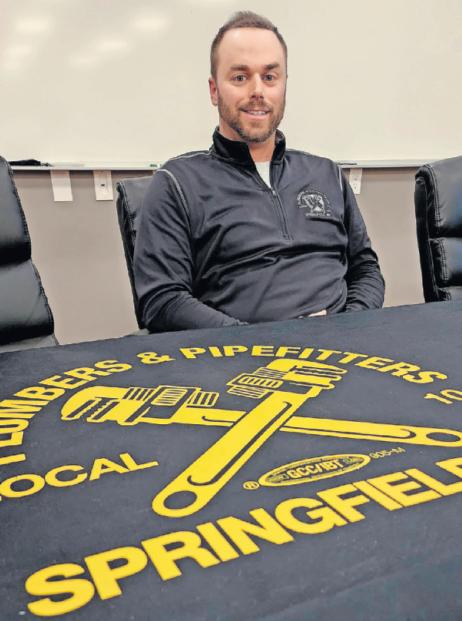
the area,” Andrews said.
Much of the activity is funded by the Bipartisan Infrastructure Law that passed in 2022, during the President Biden administration.
“Obviously we hope the commitments that have been laid out are still there,” Andrews said. He and others in the field also hope the supply of workers to build those projects can expand. To that end, the building trades are selling themselves to high school students. It can be a tough audience.
“It’s not an easy industry. It’s a change in mentality for a lot of students. It’s drilled in their head that it is college first,” Andrews said. “Or college and military.”
The plumbers union will open up its apprentice program to new applicants in late February, Bradley said. The union has 60 apprentices now, and room for 100 or more.
New apprentices make $22.17 an hour and get raises with expe-
of academic affairs at STCC.
solve problems faster than traditional computers. Calculations for endeavors like cancer research and drug discovery that would take traditional computers so long as to make the calculation impossible.
“More years than in the history of the universe,” Goodhue said. “Which is a really long time.”
In October, Massachusetts became the first state to back a quantum computing project with The Massachusetts Green High Performance Computing Center and its Boston-based partner, QuEra Computing, with a plan to build a $16 million quantum computing complex within the Holyoke center over the next two years.
The state added $40 million to boost quantum computing and a $30 million for a food
science research center at the University of Massachusetts Amherst included in an economic development bond bill passed in the waning days of November.
The food science center has been a particular project of the Western Mass Economic Development Council.
“Which I think is kind of a natural one for Western Massachusetts,” said Richard K. Sullivan Jr. president and chief executive officer of the Western Mass Economic Development Council. “Look at the history we’ve had with Big Y, Agri-Mark and Friendly’s.”
Add to that innovators like Holyoke-based Clean Crop Technologies, with an patented electro-chemical process for removing contamination from plants and seeds. And the bond bill included a boost to cybersecurity education. A $5 million cybersecurity center opened for the fall semester in Union
Station in Springfield. It has both classroom and training opportunities but also real-world security operations centers that can help local companies, nonprofits and governments deal with and protect from threats. This spring, Springfield Technical Community College has about 100 students taking cybersecurity courses at the center.
STCC has about 400 enrolled in its cybersecurity program in total.
Bay Path University in Longmeadow has had a cybersecurity program for years now, boasting 64 students: 38 are undergraduate and 26 are graduate.
“Since its grand opening at Springfield’s Union Station in September 2024, The Richard E. Neal Cybersecurity Center of Excellence has become a hub for hands-on training in a state-of-the-art environment.,” said Christopher Thuot, vice president
LOOKING FOR SOMEWHERE OUT OF THE ORDINARY FOR YOUR NEXT EVENT OR MEETING?
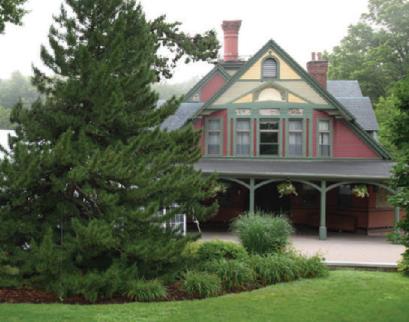
Stay focused on the moment amidst the rustic, historic charm of Emma’s Place on Wilder Pond, a homey atmosphere with breathtaking treetop and aquatic views.
in
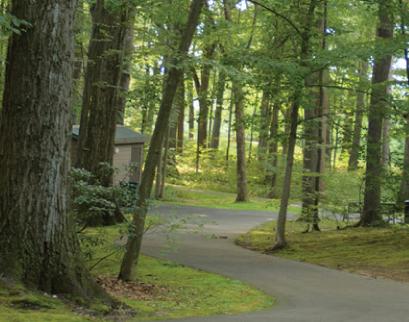
Whether you’re looking for an inspiring location to host a private special event or a corporate meeting or retreat, we offer 3 unique venues.
Immerse your guests in old world elegance brought to life by the Carriage House at the Barney Estate, surrounded by the natural beauty of Forest Park.

“With cybersecurity jobs in high demand, the Center is playing a crucial role in preparing skilled professionals for this rapidly growing industry. STCC offers associate degree and certificate programs in cybersecurity and other related computer science and engineering technology programs. Graduates of our programs are highly skilled and sought after in a competitive market here in the Pioneer Valley. The center is also currently working on partnerships with agencies across the region to provide training for the purpose of confronting ever-evolving cybersecurity threats.”
The median salary for information security analysts is $112,000, according to STCC.
More than 750,000 cybersecurity positions go unfilled nationally, according to the MassCyberCenter at the MassTech Collaborative. That
rience and training. Once they reach the status of journeymen, they can net $49.26 an hour; all in, with benefits, the pay package is valued at $79.81 an hour.
Training is key
The International Union of Elevator Constructors, Local 41, representing workers who install and maintain elevators, opened a training facility in West Springfield last year. It offers classrooms and training tools, including a suitcase-sized simulator with all the electronics that can go wrong.
“We call it an ‘elevator in a box,’” said Randy Chistolini, the union’s business manager.
Forty apprentices are enrolled in the school right now, Chistolini said. They’ve heard all the elevator jokes about this trade’s “ups and downs.” But right now, technicians are in demand in a business that perhaps deserves a higher profile.
“People don’t really think of the elevator trade,” Chistolini said. “Nobody realizes it exists, until somebody puts it in front of you.”
includes 20,000 open jobs in Massachusetts.
Westfield project
A tax break in the bond bill is designed to nudge along plans for a $2.7 billion data center first proposed back in 2021. The idea is to get major players in the computer world Google or Meta as potential clients.
Backers at the Westfield project estimate it could have 400 jobs at full build out, a build out which could take decades.
Goodhue said the prospect of waiting decades for initiatives like this to pay off with jobs should give pause but not dissuade people.
“You have to skate to where the puck is going to be,” he said. “If you wait until it’s all good, it’s too late.”
The Massachusetts Green High Performance Computing Center, built in 2010 on the site of an old mill in Holyoke’s historic industrial district, still
has just 20 employees, Goodhue said.
“That will grow a little more over this year,” he said. “And it seems like we have at least 20 more employees on site each day from contractors: electricians, installers. All the people working here to build us out.”
But once quantum computing is up and going, researchers will come to Holyoke to make use of it. And innovators based in Boston will seek out Holyoke and other Western Massachusetts cities and towns.
It’s better to do research in Boston, but expensive to manufacture and grow a business there, he said.
It sounds like another of Goodhue’s ways of explaining how quantum computing works.
“Think of the infinite number of states,” he said. “Buried in it are all possible solutions to the problem, and when you do the measurement, you get one.”
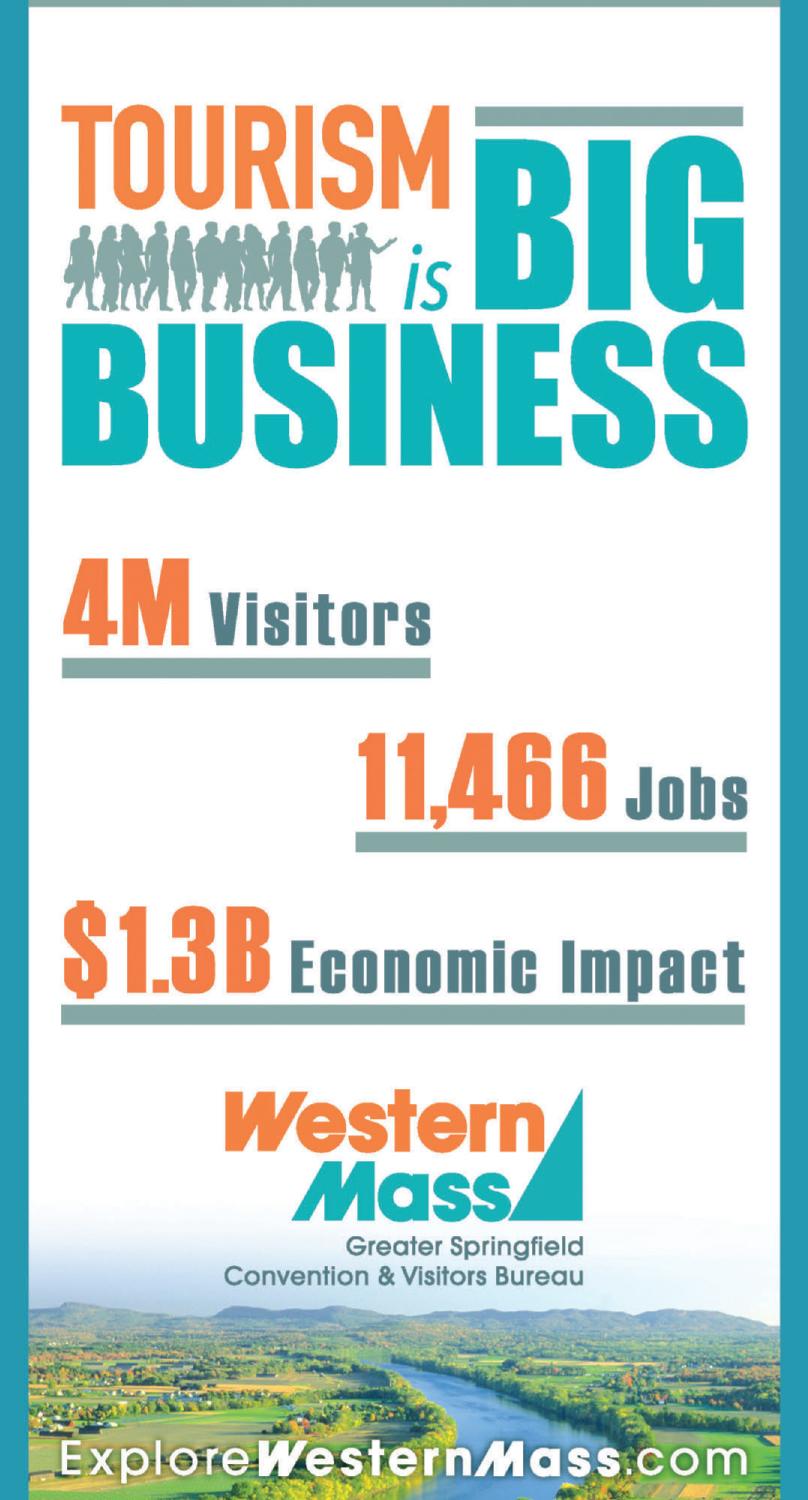
On the evening of Thursday, September 12, 2024, The Republican held its 200th anniversary red-carpet gala at The Log Cabin in Holyoke.
The festivities included cocktails and conversation, live music by the String of Pearls 17-piece Big Band, and presentations by Congressman Richard E. Neal, Governor Maura Healey and Domenic Sarno, Mayor of Springfield.
The bicentennial gala was part of the yearlong celebration honoring the past 200 years
The Republican has been bringing home the news!

















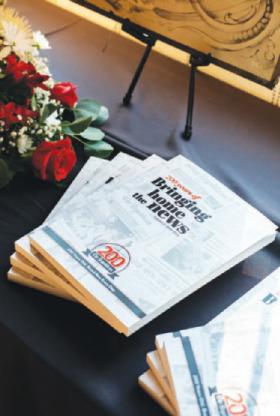





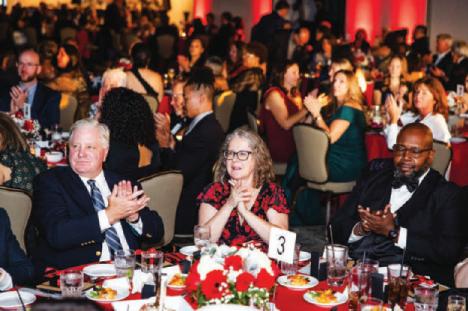














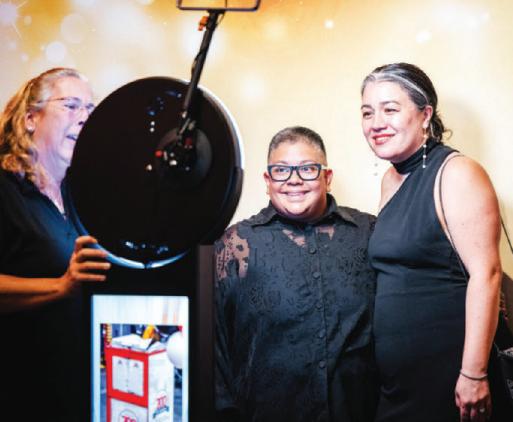










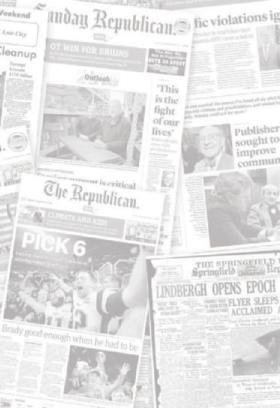
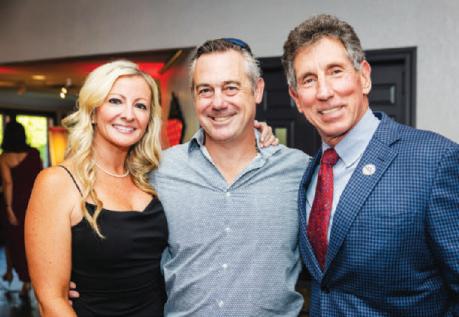


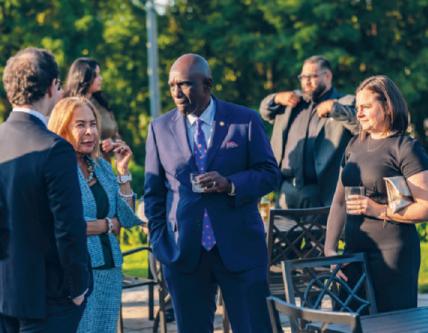













Many women and their children in the Springfield area go without housing on a daily basis. To help meet the needs for selfsufficiency, long-lasting sustainability, and life skills education for the people in need in our community, Christina’s House manages three properties for these familes. They service to provide emotional, spiritual, physical support and education for program families as they transition from homelessness to permanent and stable living environments.


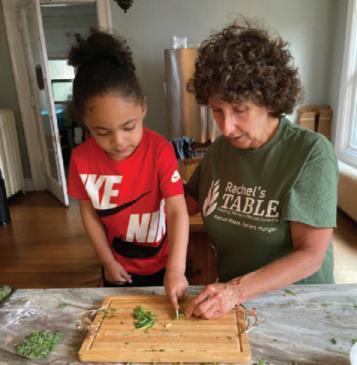

Every donation is a direct investment into the the lives of the women and children we serve each day. Your gift helps change the path of every family in our home. Scan the code here to become a monthly donor starting at just $15 a month.

More information at https://www.christinashouse.org/ways-to-give




